The best times to visit Namibia for hiking, wildlife and more

Oct 23, 2023 • 4 min read
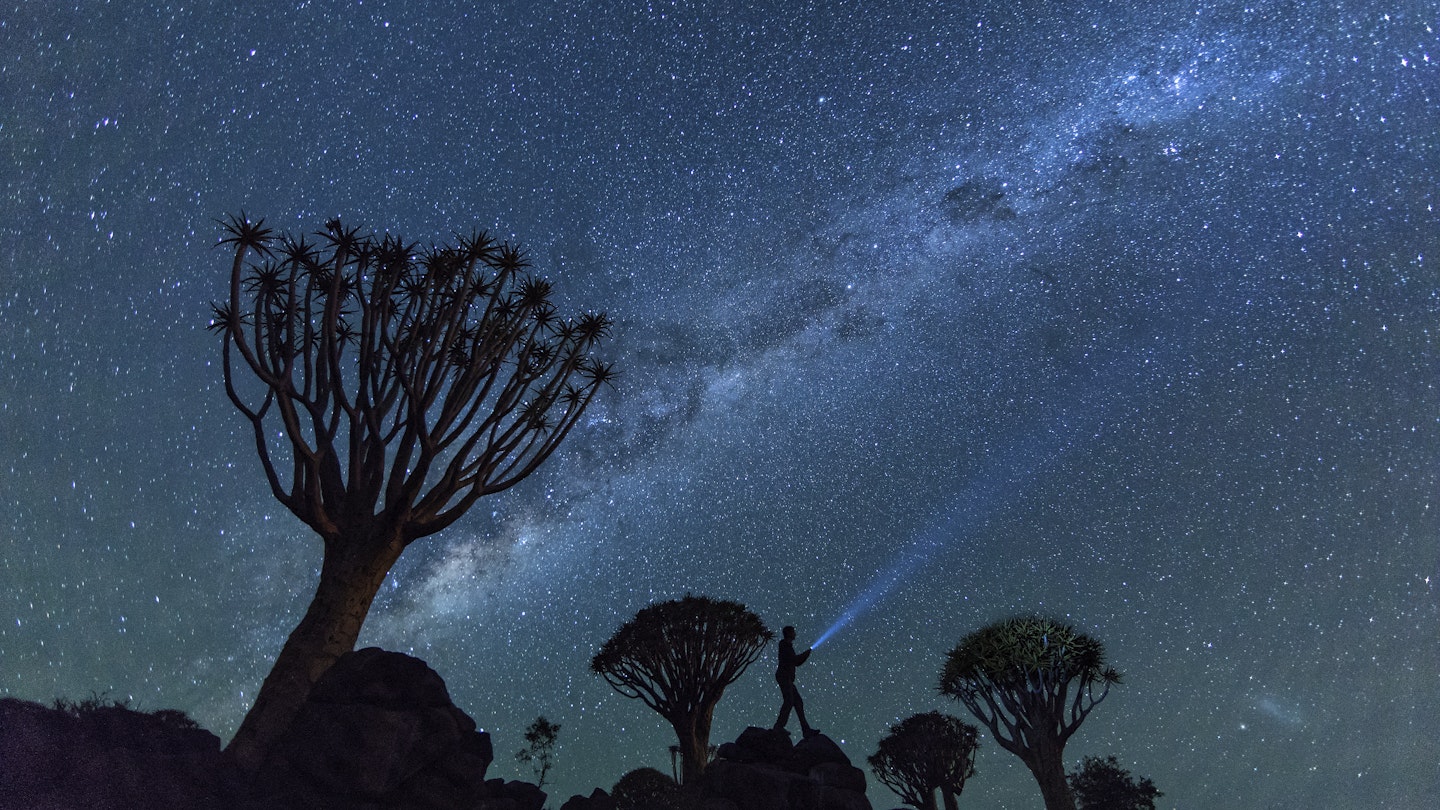
Take advantage of Namibia's dry skies for excellent stargazing © Paul & Paveena Mckenzie / Getty Images
With its famously clear skies and abundant sunshine, Namibia is a wonderful destination at any time of year. The weather is almost always good – the ever-present sunshine is even highlighted on the national flag – and most areas of the country are accessible year-round.
Yet, depending on your interests, it’s worth putting some thought into the timing of your trip. Hiking is best planned for the cooler winter months from May to October to avoid the summertime heat, while coastal exploration is easier in the summer, from December to March, when winds are gentler and there is less fog.
Whatever draws you, plan the perfect time for your visit with this guide to Namibia’s seasons and events.
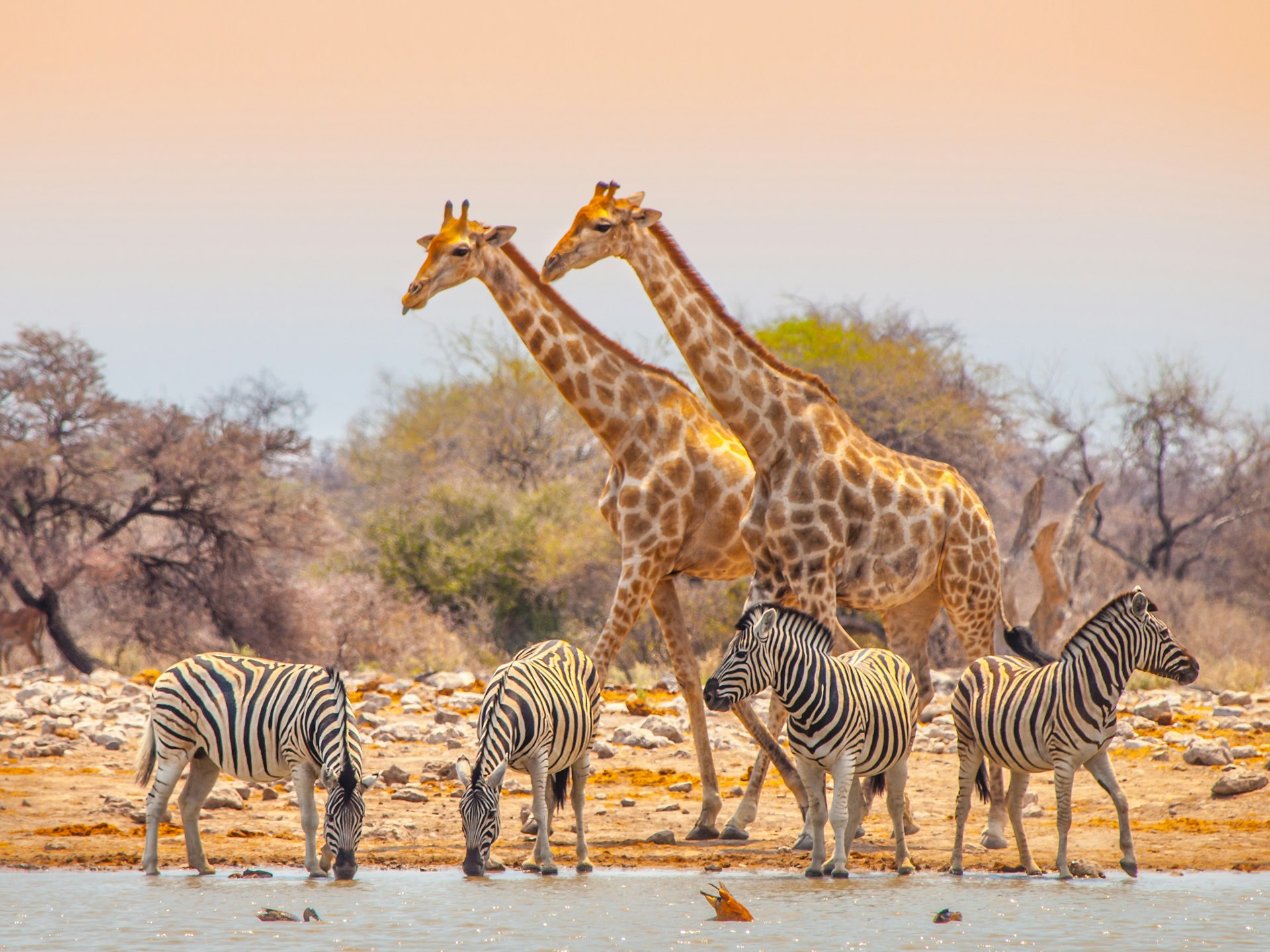

June to October is the best time for safaris and for visiting Sossusvlei
Cloudless daytime skies, clear, cold nights and almost no likelihood of rain are the hallmarks of Namibia’s wintertime, from June to October. Inland, temperatures average between 19ºC and 24ºC (66ºF to 75ºF) during the day, while from June to August, nighttime temperatures in the desert and at altitude generally sit below 10ºC (50ºF) and sometimes drop below freezing.
The cooler high season is also the dry season, so foliage is less dense and animals can be easily spotted as they congregate around scarce water sources. This is a fine time of year for wildlife watching at Etosha National Park , and safari camps fill up. On the coast, winds can be stiff and the shoreline is often blanketed by a thick morning fog, although this generally burns off before midday.
If you're thinking of scaling the dunes around Sossusvlei , June through August are ideal months, as temperatures are at their coolest and the sands not as searingly hot.
In delightful October, with winter definitively over, Namibia's jacaranda trees burst into bloom. They are especially lovely in Windhoek and the northern town of Tsumeb, where streets are shaded by lavender-hued canopies and carpeted with the fallen blossoms.
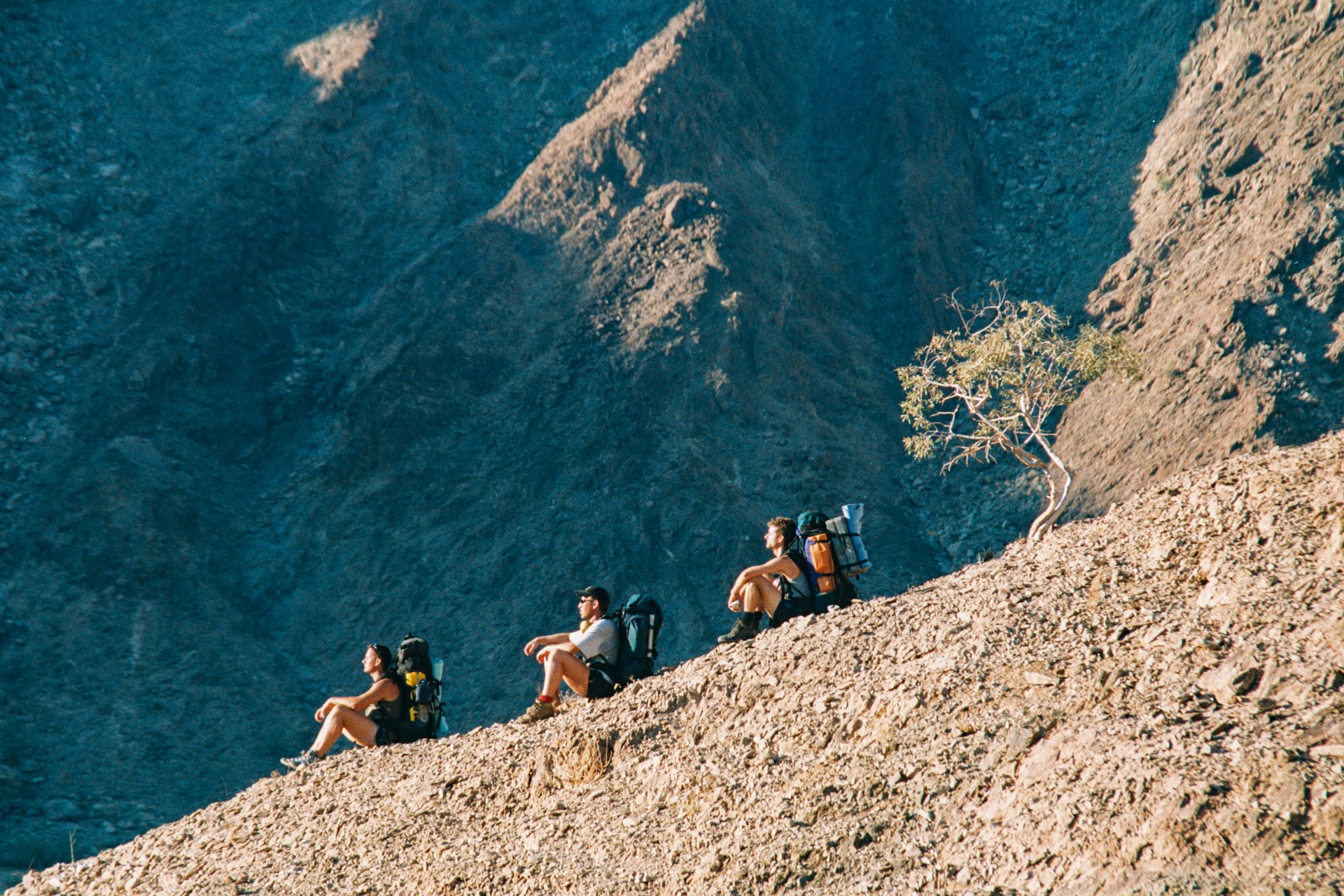
April, May and November are best for shoulder-season discounts and exploring away from the crowds
April and May are lovely times to be in Namibia. Much of the country is covered in shades of vivid green, the rains have washed away the late dry-season dust and the air is exceptionally clear. Daytime temperatures range from 24ºC to 28ºC (75ºF to 82ºF). Apart from the Easter holidays, safari camps are generally not full.
In November, daytime temperatures can exceed 30ºC (86ºF) as the thirsty land eagerly awaits the return of the rains. Wildlife watching is ideal, with plenty of animals visible, but without the crowds of July and August. Many lodges and camps in national parks and private reserves offer discounted rates. Birding also starts to peak at this time, as migrant species make their way into the region.
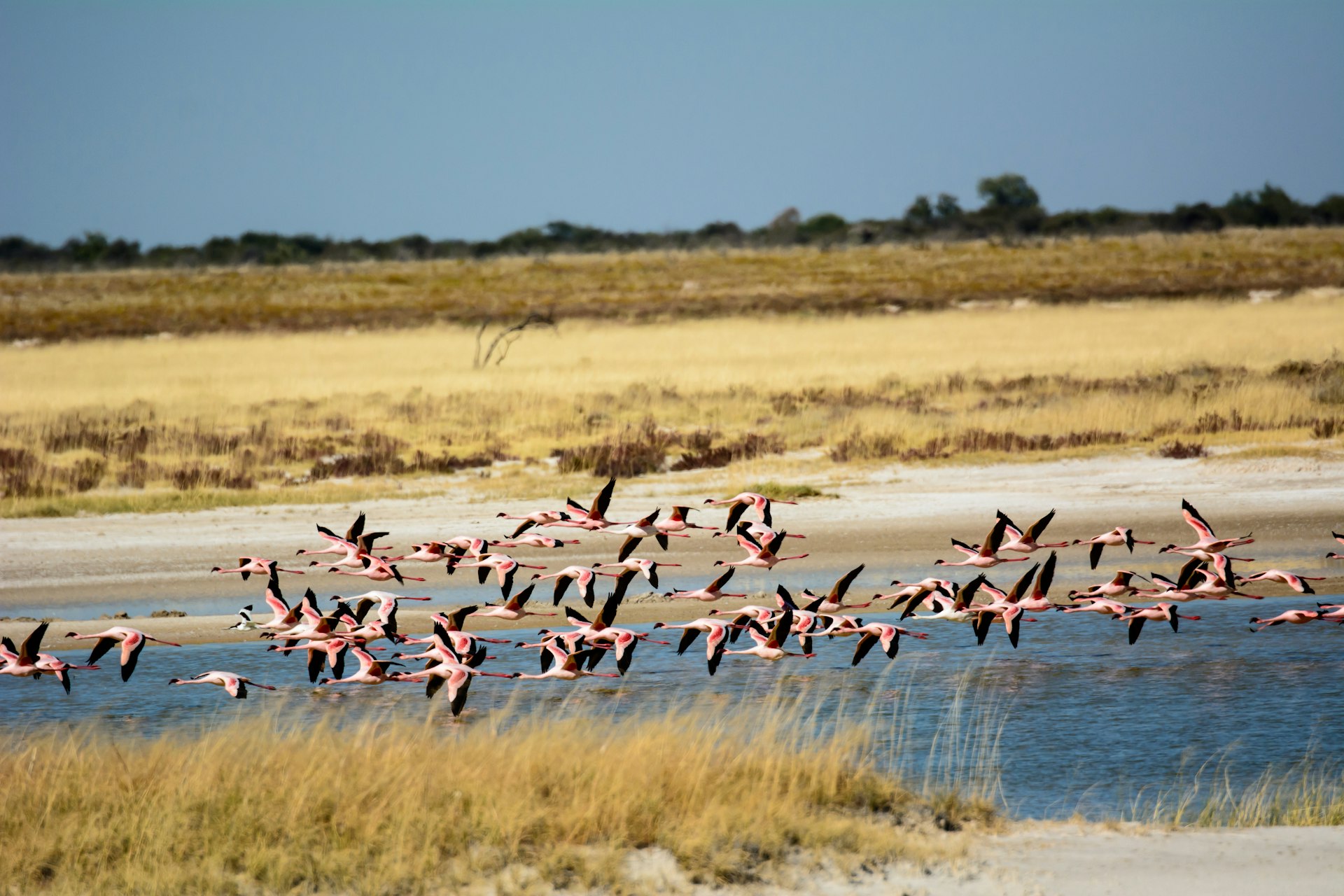
December to March is the best time for coastal travel and birding
Along the coast, the Namibian summer is marked by a holiday vibe, pleasant conditions and opportunities galore for a braai (barbeque). Sea breezes provide refreshing relief from the inland heat, and there is less fog and wind than in the winter months.
With the advent of the rains, birding in Etosha National Park and countrywide reaches its prime. Around February, flamingos gather by the thousands in Etosha pan to breed – a magnificent sight. While Etosha’s wildlife is widely dispersed and can be difficult to spot, the park has its own appeal at this time, with no crowds apart from the Christmas-New Year period.
Although the summer months are the wettest time of year in Namibia, downpours are mostly limited to late afternoons and evenings. Unpaved roads, especially in the far north and in the waterway-laced Zambezi region, can become difficult to traverse, but otherwise, rain does not usually interfere with travel.
Temperatures are high everywhere, especially in the far south. In the Fish River Canyon , the mercury can soar to above 40ºC (104ºF), and the canyon hiking trail is closed.
Namibian Independence Day on 21 March heralds the end of summer, as the skies clear and migrant birds prepare to depart.
Wherever you travel, keep in mind that accommodation - especially on the coast and in Etosha National Park - fills up during the December and January school holidays; advance bookings are recommended.
This article was first published September 2022 and updated October 2023
Explore related stories
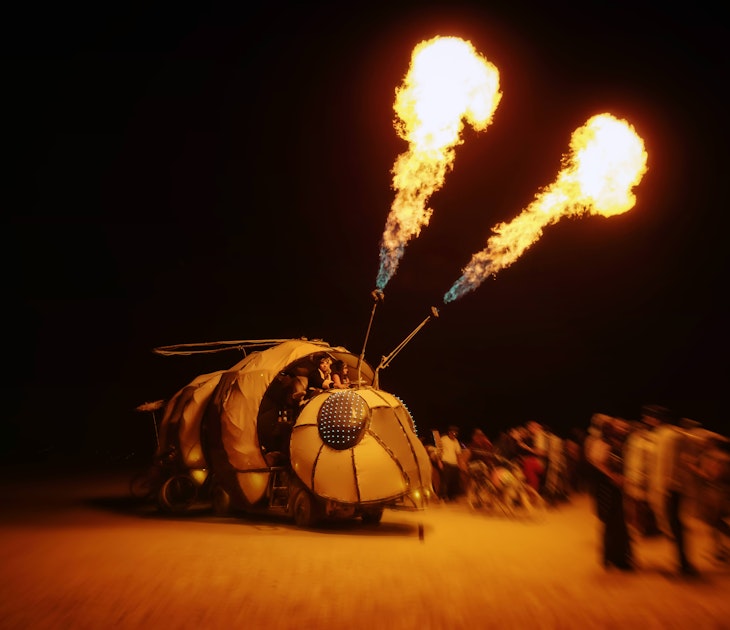
Jan 2, 2023 • 12 min read
Want to start planning for the year ahead? Featuring sports events, natural phenomena and more, these are 20 amazing trips to consider taking in 2023.

Mar 20, 2024 • 8 min read

Feb 20, 2024 • 17 min read
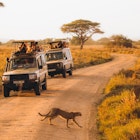
Dec 8, 2023 • 4 min read
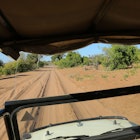
Oct 27, 2023 • 8 min read
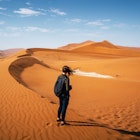
Oct 26, 2023 • 3 min read
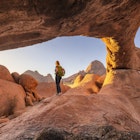
Oct 23, 2023 • 7 min read
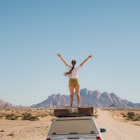
Oct 22, 2023 • 7 min read
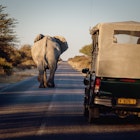
Oct 21, 2023 • 5 min read
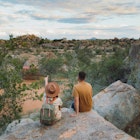
Oct 19, 2023 • 6 min read

- Namibia safaris
Namibia safari guides – where & when to go, and what to see & do
Wedged between the Atlantic coast and the Kalahari Desert, Namibia is one of Africa’s hidden gems that is slowly emerging as a popular tourist destination, with safaris in Namibia high on the to-do list. A sense of freedom is generated by an epic, empty landscape with wide horizons, unpolluted skies and one of the world’s lowest population densities. These facts, combined with a plethora of large game animals and a frontier feel make Namibia the ultimate photography or self-drive safari destination , and not too bad either if you’re looking for an indulgent luxury safari experience.
The Namib Desert is the oldest and one of the largest deserts in the world , and a predominant feature of the country, extending all the way up the Atlantic coast on the western side of the country. The desert is scored by a number of rivers coming down from the Central Plateau – most of which are now permanently dry, or only flow during the rainy summer months.
The north of Namibia is dominated by the huge, permanently flowing rivers of the Kuene, Kavango and Zambezi, which make up the borders with Angola, Botswana and Zambia respectively. This part of the country is lush and green with dense woodlands most of the year, and home to several small national parks that teem with wildlife and birdlife. The rest of the country is made up of scrubby bushland of the higher Central Plateau, trailing off into the Kalahari desert in the east.
Wildlife in Namibia is varied, and taking a safari in Namibia will allow you the opportunity to see all of Southern Africa’s mammals. As well as the big five , the Namib Desert is home to the exceptional and endemic desert-adapted elephant and rhino. In the Namib Desert and elsewhere in Namibia a truly extraordinary fact is that the country has one of the densest congregations of animals in the world, combined with one of the sparsest human populations, making for fantastic wildlife viewing.
Unlike much of the rest of Africa, habitat destruction is not generally an issue in Namibia, and you can expect to see large mammals roaming the wilderness as you drive between Namibian national parks or towns. This means you need to be ready for a safari experience in Namibia at any time you’re not in a well populated area!
Useful resources
Book a Namibia safari
Namibia wildlife
Namibia Tourist Board
Namibia Wildlife Resorts
Weather in Namibia
Namibia guidebooks
Namibia safari highlights
Sossusvlei’s stunning dunes.

Discover the sand dunes of Sossusvlei with a dawn game drive and hike to top of a dune to watch the sun rise over the Namib desert. The dunes and surrounding area are truly specatular, reaching almost 400 metres high and providing inspiration to any budding photographer.
Self-drive safari in Etosha

Take a self-drive safari tour around accessible but wild Etosha National Park – one of the world’s premier national parks. 763 km of open roads around the park make for the ultimate self-drive safari. The park is based around a huge salt pan, and seems inhospitable to life, but a string of watering holes brings herds of antelope species and their prey from the surrounding scrub.
Fish River Canyon views

Visit the jaw-dropping 100km long, 26km wide Fish River Canyon in the Ai-Ais/Richtersveld Transfrontier Park . It world’s second largest canyon after the Grand Canyon in the US, though with far less tourists visiting, as with all destinations in Namibia it’s both beautiful and serene.
The Walvis Bay ‘marine big five’

The cold waters off the Namibian coast harbor a wealth of marine life, no location more so than Walvis Bay. Styled as the ‘marine big five,, it’s possible to see whales, dolphn, sunfish, turtles and seals on a boat – or even canoe – safari .
Best time to go on safari in Namibia
As with the rest of Southern Africa, Namibia experiences summer between November and March and winter from May to August. From August temperatures keep rising until October when the first rains start to arrive in the northern areas, followed by large amounts of rain and occasional flash-flooding.
The best time to go on safari in Namibia depends on where you’re going, and what you’d like to see. October to March is the best time to visit Namibia’s coast around Walvis Bay and Sossusvlei as the climate provides a pleasant respite from the heated interior. If you’re travelling through the Skeleton Coast region the climate is similar year-round, with regular mist and winds.
For the inland areas of Namibia – including the Namib desert, Etosha and Kavango regions, the cooler months from April September provide temperatures far more bearable than summer months. Between May and September, thirsty animals gather at diminishing waterholes, making it the best time to go to Etosha for game viewing.
Flights To Namibia
Search, track and book flights to Namibia , from anywhere in the world.
Namibia Accommodation
Find safari accommodation in Namibia – from budget campsites to luxury lodges.
Namibia Car Hire
Considering a self-drive safari? Research and book car hire in Namibia .
Activities in Namibia
Search and book things to do in Namibia – tours, excursions and activities.
National parks in Namibia
All national parks in Namibia are administered by the extremely efficient Namibia Wildlife Resorts.
Namibia is an enormous country, and one with large tracts given over to national parks. This gives Namibia the impressive status of being the country with the highest ratio of animals to humans in the world: In short, Namibia’s national parks are fantastic places to visit for safaris and wildlife watching.
A word of warning – the distances between national parks can be huge, and very few roads are tarmacked. A 2WD will serve most of the year in most parts of the country, but rainy season will see even 4WDs struggling in some areas on a driving safari in Namibia.
Top Namibia national park picks
Etosha national park.

A classic African national park – with excellent visitor facilities – housing the ‘big five’ and much more in plains surrounding a huge central salt pan. Herds of elephants, black-maned lions and the world’s largest population of rare black rhinos gather at the 86 waterholes, springs and fountains found around the edges of the pan.
Skeleton Coast National Park

With a reputation as one of the most desolate places on earth, the 20,000 km sq park is one of the most inhospitable and least visited places on earth. Shimmering white dunes, martian rock, beautiful sand beaches and treacherous, rough seas dotted with hulks of shipwrecks make up the park scenery.
Namib Naukluft National Park

The oldest desert on earth, and quite possibly the most beautiful. Namib Naukluft National Park is easily accessible from Sossusvlei, where giant dunes tower 400m into the air, and pockets of long ago dried-out lakes serve as sporadic homes to forests of thousand year old dead trees. In a word, epic!
Cape Cross Seal Reserve

All national parks in Namibia
Use the map to locate all national parks in Namibia. Click the icons for more info.
Get Directions
Babwata National Park: Small national park in Caprivi Strip, unique in that it houses both a large animal and human population.
Cape Cross Seal Reserve: More seals breed at Cape Cross that anywhere else in the world, so if you like seals you’re in for a treat.
Etosha National Park: A classic African national park – with excellent visitor facilities – housing the “big five” and much more in plains surrounding the huge central pan.
Fish River Canyon National Park: A rugged desert wilderness home to the awe-inspiring Fish River Canyon – the world’s second largest canyon.
Khaudum National Park: Remote and wild national park hidden away in the Kavango Region is home to large elephant herds and packs of the endangered wild dogs. A visit here is not to be taken lightly.
Mamili National Park: Little visited .national park in Namibia’s northern Caprivi Strip, offering plenty of classic African wildlife a true wilderness experience.
Mudumu National Park: A riverine national park with undisturbed mopane forest, flood plains and swamps. Unsurprisingly, water-living creatures feature large – crocodiles, hippos, elephants, otters, turtles.
Namib Naukluft National Park: Namibia’s largest park, and one of the world’s oldest and most intensely studied deserts.
Skeleton Coast National Park: Take a drive through one of the world’s most inhospitable spots, with alien landscapes and ancient shipwrecks adding atmosphere.
Sperrgebiet National Park: Recently established desert national park on Namibia’s “forbidden coast”, home to ghost towns, Atlantic coast and hyenas.
Waterberg National Park: Rising 200m above the dry African savannah, the lush green Waterberg Plateau is unique in terms of vegetation and geological makeup.
Other Namibia safari resources
Namibia safari companies.

Whilst self drive safaris are a definite option in Namibia – given most national parks in the country allow this – there are still a number of quality safari tour companies in Namibia that you may want to speak to before arrival in the country. With a fairly well developed regional and international inbound tourist market, Namibia has lots of wildlife activities and safaris on offer. These are supported and promoted by a broad range of safari tour targeting budgets of all sizes and trips of all lengths – from half days trips from the capital Windhoek to two or four week driving expeditions. Check out our reviews of safari tour companies in Namibia .
Namibia safari lodges
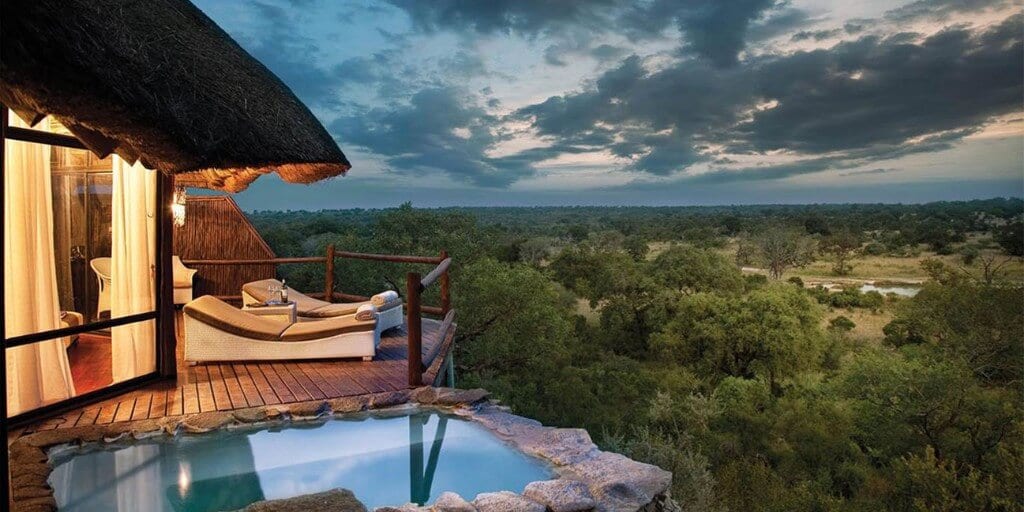
Much like it’s neighbour Botswana, Namibia doesn’t see huge tourist numbers and has a focus on either low-impact, high-end safaris, or self-drive safaris. Safari accommodation on offer in Namibia reflects this, with a broad range of high-end safari lodges around the national parks, and excellent camping facilities for self-drivers attached to most safari lodges. If you want accommodation in a national park, this must be booked in person or by phone with Namibia Wildlife Resorts, who take care of all of Namibia’s national parks. Search and book accommodation in Namibia .
Read safari guides to all countries
Botswana safaris , Namibia safaris , Rwanda safaris , South Africa safaris , Tanzania safaris , Uganda safaris , Zimbabwe safaris
Do you have any experience of planning or going on safari in Namibia?
We’d love to hear any feedback or tips you may have – please get in touch , or add to the comments below.
Top countries for safaris
- Botswana safaris
- Kenya safaris
- South Africa safaris
- Tanzania safaris
- Uganda safaris
Safari basics
- Safari animals
- How to find the right safari company
- When to go on safari
- What to take on safari
- Safari clothing – what to wear
- Safari rules & etiquette
- Wildlife spotting tips
Most read articles
- All about the ‘big five’ animals
- Collective nouns for animals
- Safari movies to watch before you go
- The world’s fastest land animals
- Apex predators
- 10 Fascinating African tribes
- The biggest animals in the world
- 17 Epic hybrid animals
- The world’s ugliest animals
- Why are flamingos pink?
Africa’s best game reserves
- Chobe National Park, Botswana
- Etosha National Park, Namibia
- Kruger National Park, South Africa
- Masai Mara National Reserve, Kenya
- Moremi Game Reserve, Botswana
- Okavango Delta, Botswana
- Serengeti National Park, Tanzania
Session expired
Please log in again. The login page will open in a new tab. After logging in you can close it and return to this page.
TOP DESTINATIONS
- Kruger Park
- Okavango Delta
- Serengeti National Park
- Victoria Falls
TOP COUNTRIES
- South Africa
TRAVEL DEALS
View All Travel Deals
SOUTHERN AFRICA
East africa, indian ocean islands, top experiences.
- Beach Holidays
- Family Safaris
- Honeymoon Safaris
- Desert Safaris
- Luxury Rail Safaris
- Multi-Generational Safaris
- Positive Impact Safaris
- Photographic Safaris
- Walking Safaris
WILDLIFE SAFARI
- Big Five Safaris
- Birding Safaris
- Gorilla Trekking Safaris
- Migration Safaris
- Mobile Camping Safaris
- Horseback Safaris
FEATURED EXPERIENCES
Comfort levels, property types.
- Tented Camps
- Boutique Hotels
Featured Safari Collections
- Ker & Downey Botswana
- Green Safaris
- The Safari Collection
- Extraordinary
- Desert & Delta
GET TO KNOW US
- Meet The Team
- Pricing Explained
- Traveller Reviews
- Traveller Stories
- Why Book With Us?
- HerdTracker
- Safari Cost Calculator
- South Africa In 360
- Trusted Safari Partners
What are you looking for?
- Safaris & Tours
- Destinations
- Experiences
- Accommodations
- Why book with us?
Hello traveller!
It's in Cape Town now.
We're sorry. Our safari planners aren't available now. Our office hours are 08:00 - 19:00 (GMT+2).
Call us to speak to an experienced safari planner.
Alternatively, we recommend...
Schedule a phone or Zoom call with one of our safari planners
Complete our travel enquiry form to connect with a safari planner
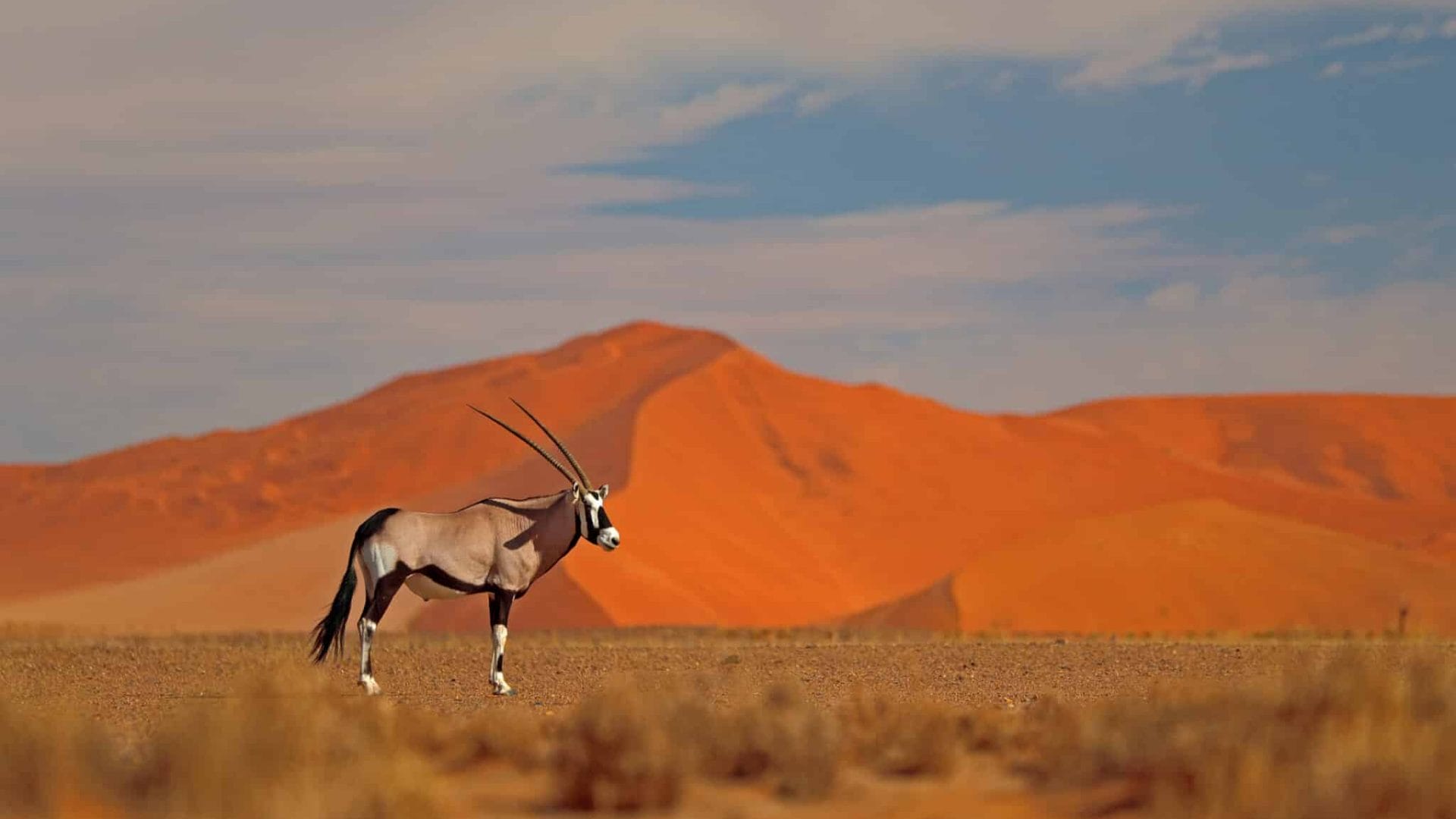
- Namibia Safari
The ultimate guide to your next Namibia Safari
Get to know namibia.

By Devryn Panaino
Safari Travel Planner
Africa’s least populated country, Namibia, captivates visitors with its vast arid landscapes, abundant wildlife, and ancient rock art.
From the world-famous red dunes of Sossusvlei to the eerie isolated beaches of the Skeleton Coast , each region of Namibia has its own distinct landscapes, wildlife, and activities.
In contrast to other southern African countries, Namibia is a true year-round destination with little seasonal fluctuations.
The chilly Benguela Current controls the weather along the coast, and coastal communities like Swakopmund , Walvis Bay , and Lüderitz are frequently covered by morning mist.
Namibia Video
How it Works
View our recommended safaris for inspiration and get ready to plan your dream safari
Contact us or fill out an enquiry form and one of our travel experts will help you tailor make your perfect safari
Enjoy an authentic African experience, with peace of mind
Why Namibia?
- Discover the unique landscapes of Namibia, including beaches, dunes, and dense bush.
- Take a birdwatching safari to see a wide variety of species in their natural habitat.
- Experience an endless variety of desert adventure activities on a safari in Namibia.
- Visit the famous Etosha National Park to see spectacular wildlife in the Namibian bush.
- Go stargazing in the beautiful Sossusvlei Reserve and discover the night sky on your Namibia safari.
- Try your hand at hardcore fishing at the eerie Skeleton Coast of Namibia for a truly unique experience.
Where to go in Namibia
- Central Namibia
- Erindi Private Game Reserve
- Etosha National Park in Namibia
- Fish River Canyon
- Namib-Naukluft National Park
- Northern Namibia
- Sossusvlei in Namibia
- Southern Namibia
- Swakopmund in Namibia
Windhoek, Namibia’s capital city, is where many people will start and end their trip, picking up supplies before they head off north to visit Etosha National Park . The Auas Mountains, the Eros Mountains, and the Khomas Hochland hills can all be seen from Windhoek.
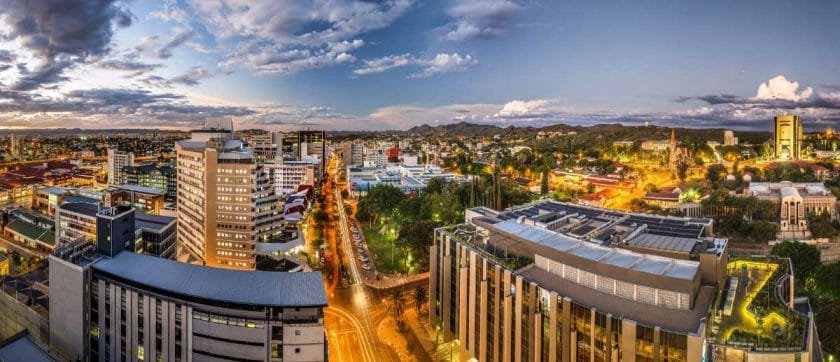
The city and its surrounding suburbs are dispersed throughout many attractive valleys at the intersection of Namibia’s main road and rail lines. The city is located in the geographic center of Namibia.
Windhoek remains the nation’s political, legal, economic, and cultural hub despite being a small and quiet capital city by international standards.
Highlights of Central Namibia
The capital city, Windhoek, is where you’ll start and end your trip if you’re flying into Namibia. Most travelers only spend a day or two in Windhoek to hire a car and stock up on provisions before driving either north or south.
Still, with its laidback atmosphere, colonial architecture, museums, and good restaurants, a quick Windhoek holiday makes for a great first stop on your Namibia vacation itinerary .
A Damaraland safari in Namibia offers a perfect blend of untamed wilderness, breathtaking scenery, majestic mountains, ancient rock art, off-the-beaten-track adventure, and thrilling wildlife sightings, making it an ideal destination for travelers seeking a unique and authentic African experience .
Located southwest of Etosha National Park, Damaraland may not be as easily accessible as other areas in Namibia (you’ll need to hire a 4×4 to explore the region’s rough roads). Still, it offers a wilderness experience you don’t find in many places in Africa.
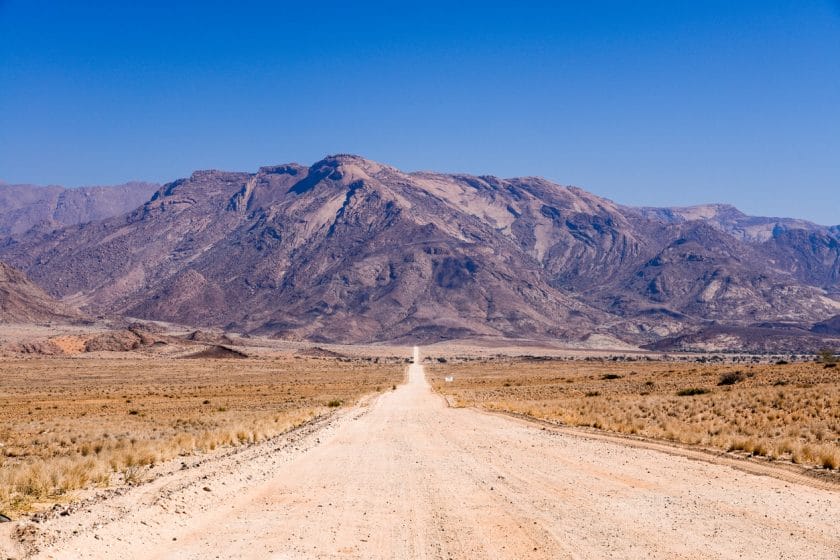
As one of Namibia’s last unofficial wildlife areas, Damaraland is unfenced so that animals can move freely outside the confines of parks and reserves.
Desert-adapted elephants, rhinos, and lions roam these vast plains and rocky outcrops. While tracking these animals can be tricky, seeing them roaming free against stunning desert backdrops is a far more exciting experience than spotting game in a wildlife park.
Brandberg in Damaraland
Animals aside, Damaraland is home to Namibia’s tallest peak – Brandberg – an imposing granite mountain that glows in the setting sun, giving rise to its name, “fire mountain”.
It’s not just for climbers, though: the ancient rock art in the mountain ravines – thousands of paintings, including the famous White Lady – is among the best preserved on the continent.
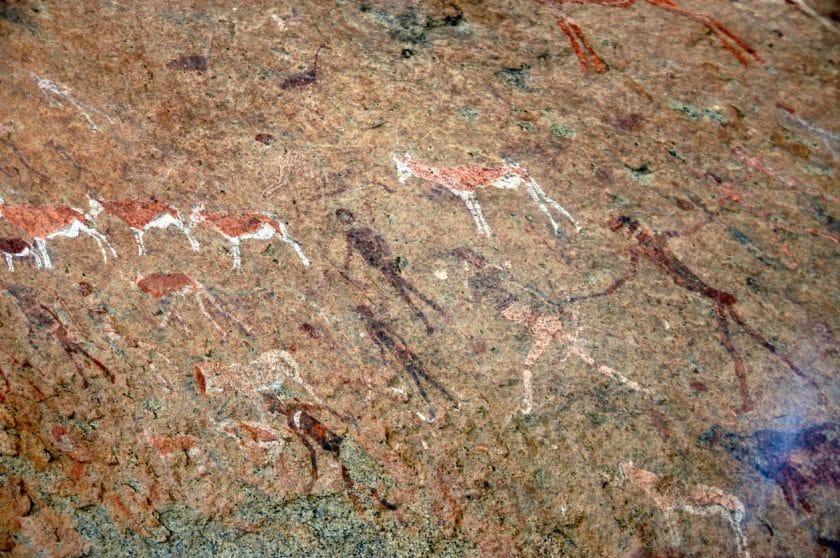
Known as the “Matterhorn of Africa”, the granite peaks of Spitzkoppe loom above the sandy plains of Damaraland. Climbing to the top is a challenge even for experienced mountaineers, but there are plenty of strikingly unusual rocky landscapes for non-climbers to explore.
Twyfelfontein in Damaraland
Damaraland’s major attraction is Twyfelfontein, where more than 2000 engravings, some thought to be over six millennia old, are etched into rock faces across the valley.
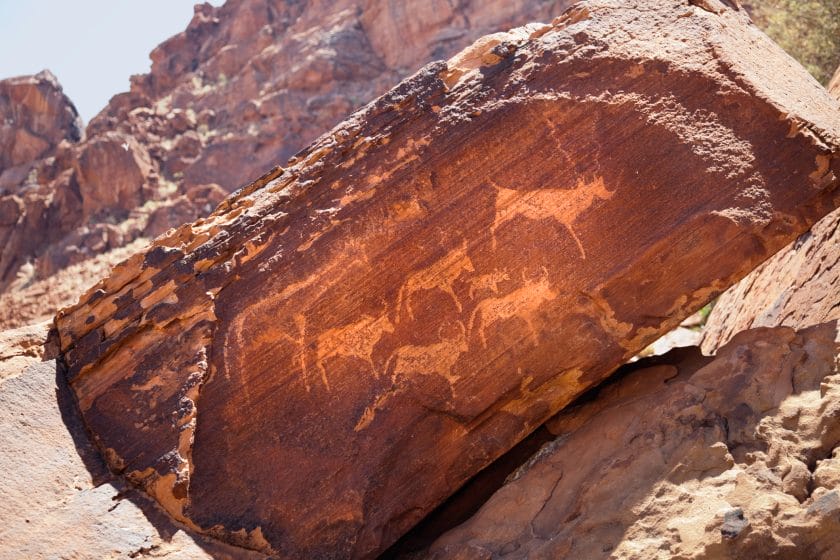
Preserving Africa’s greatest concentration of rock art, Twyfelfontein offers the chance to get a glimpse into the world of Stone Age hunter-gatherers.
Erindi Private Game Reserve is a conservation area in central Namibia. With 70,719 hectares of unspoiled wilderness under their care, they have taken on an enormous task of pursuing conservation efforts in the name of eco-friendly tourism, while also empowering their local people. Today, Erindi is a beautiful getaway with a rich cultural heritage, expert guides, and unrivaled hospitality, guaranteeing visitors have the safari of a lifetime.
One of Africa’s most incredible safari destinations , the 22 000km2 (8494 square mile) wilderness of Etosha National Park is a top highlight for many travelers to Namibia.
Made up of grasslands and woodland savanna and dominated by a giant salt pan, Etosha is home to 114 species of mammals, including four of the Big Five and the world’s largest concentration of black rhino.
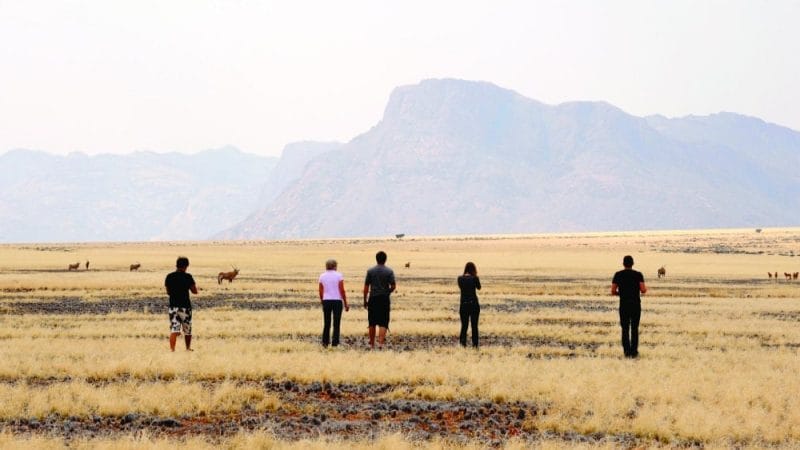
A safari in Etosha during the dry months of June to October means you’ll be treated to some of the best wildlife viewing experiences on the continent. The lack of rain forces animals to congregate around the waterholes spread out in the park.
Seeing black rhinos, herds of elephants, prides of lions, zebras, giraffes, and springboks is as effortless as parking next to a waterhole and waiting for the animals to arrive.
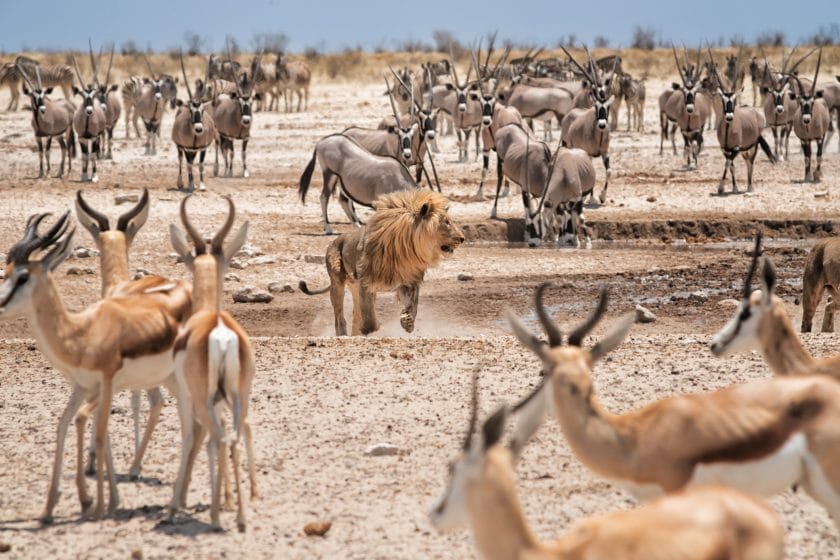
The rainy summer months have their own appeal, though. At this time of year, the vegetation is lush and green, and for tourists on birdwatching tours , there are roughly a million flamingos that use Etosha as a breeding ground and a host of migratory bird species that make the park their temporary home.
Highlights on an Etosha National Park Safari
The best experiences in Etosha are all about spotting wildlife at waterholes during the dry winter months on a Namibia safari.
A number of them are spread throughout the park near accessible roads, so all you have to do is park, kick back with a flask of coffee, and wait for the animals to arrive.
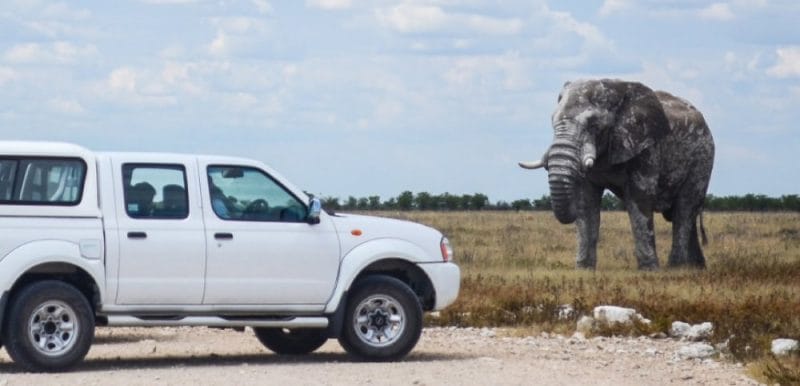
Each camp inside Etosha National Park features a waterhole where you can sit around for hours enjoying the most effortless wildlife viewing possible.
Of all the camp waterholes, Okaukuejo waterhole (at the camp of the same name) is a stand out. There’s a low wall around one side of the big waterhole, so you can sit on a bench just a few meters away from a herd of elephants having a mud bath: Etosha magic at its best.
Practical Advice for an Etosha National Park Safari
Etosha National Park is a perfect choice for a self-drive Namibia holiday. The roads are easy to navigate and are in excellent condition, suitable for 2WD vehicles, although you might prefer to hire a 4WD for better visibility.
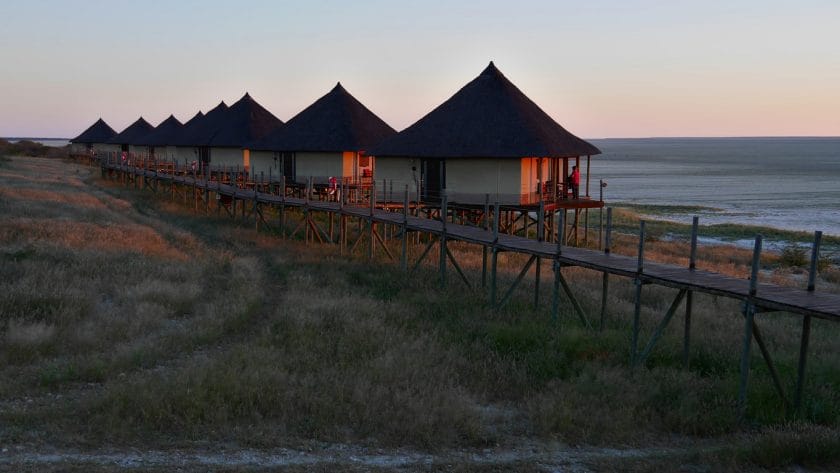
Several camps inside Etosha National park offer camping grounds, self-catering chalets, and luxury rooms, but the lodging options outside the park gates are also excellent.
Etosha National Park is best visited in the winter months, from June to September when it’s much easier to spot animals than in the rainy summer months. The winter months can get very busy, so book your lodging well in advance.
The Fish River Canyon, Africa’s answer to the Grand Canyon, is one of the best places in Namibia to stand in awe of the raw majesty of nature.
Measuring 27km/17mi wide, 550m/1804ft deep, and 160km/99mi long, it’s the largest canyon on the continent and Namibia’s greatest geological wonder.
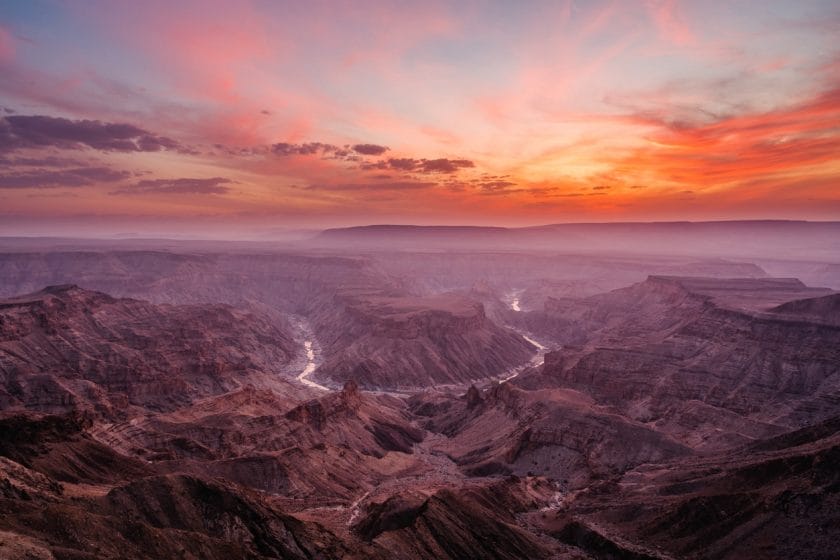
The canyon lies in different nature reserves. Its southern stretch (the deepest section) is in the |Ai-|Ais/Richtersveld Transfrontier Park, while private reserves protect its northern reaches.
The main viewpoint for the canyon is in the |Ai-|Ais/Richtersveld Transfrontier Park. This is where you’ll get the best outlook, with views of the Hell’s Corner riverbend.
Highlights of a Fish River Canyon Safari
One of southern Africa’s most popular treks and the best way to experience the canyon, the Fish River Canyon Hike covers 85km/52mi – half the length of the entire canyon – in five to seven days.
It’s a challenging self-guided camping hike, but the rewards include soaking up spectacular canyon scenery, floating in hot springs, cooling off on swims in the river, and sleeping under the stars. If you want to do some easier hikes, lodges in the area offer shorter and more leisurely walks.

Whether you do the Fish River Canyon Hike or not, soaking your body in the healing waters of Ai-Ais natural hot springs at the southern end of the canyon is a real treat. There’s a resort at the hot springs where you’ll find indoor and outdoor thermal baths and spas on the banks of a river surrounded by mountains.
Practical Advice for a Fish River Canyon Safari
In terms of lodging options for the Fish River Canyon, there’s a range of choices from campsites to luxury lodges in both the national park and private reserves.
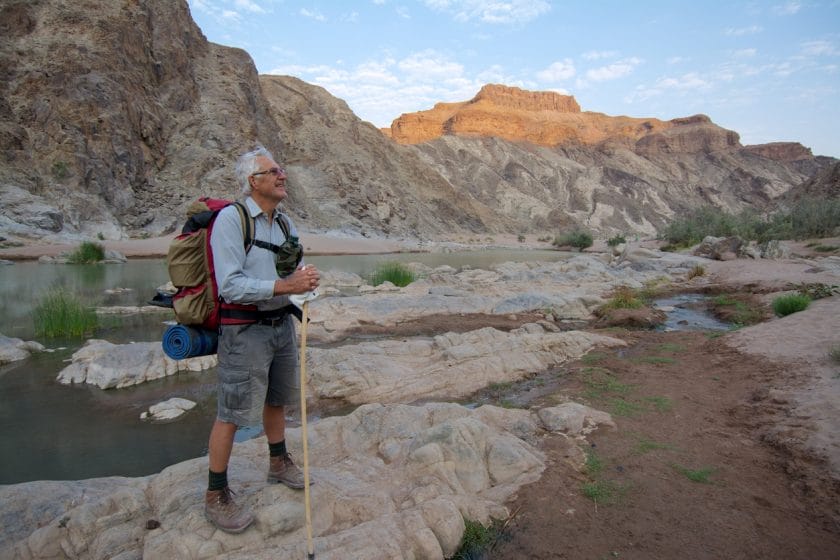
You need to book a year in advance to do the Fish River Canyon Hike, which is only open during the cooler winter months from May to September.
It’s a grueling hike, and you may experience temperatures of over 40°C/104°F, so it’s essential that you are fit, strong, and healthy before you decide to tackle it.
The fourth largest national park in the world, the Namib-Naukluft National Park is a 50,000km2 (31,068 square miles) wilderness in the Namib Desert.
It’s a place of shifting terracotta dunes, vast plains, and shimmering savanna fringed in the east by the dramatic Naukluft Mountains.

This is Africa’s largest conservation area and one of the best places on the planet for a genuinely mind-blowing desert safari experience .
Far from barren, the Namib Desert is home to a stunning array of plant and animal life, all of which have adapted to survive under a harsh sun with very little water.
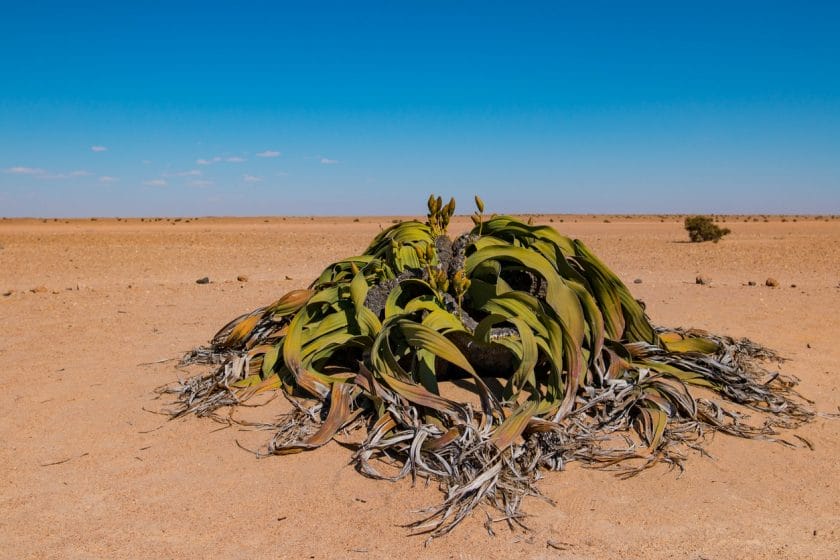
Desert wildlife includes oryx, kudu, giraffe, springbok, black-backed jackals, African wild cats, aardvarks, and leopards.
It also features more than 340 species of birds, many reptiles, and some weird and wonderful plants, such as the strange-looking Welwitschia, which can live for up to 2,000 years.
Stretching up to the Angolan border and with a slice of land sandwiched between Botswana and Zambia, northern Namibia is the country’s wildest and most remote region. Its most famous attraction is Etosha National Park , but northern Namibia also has far more to offer.
Waterberg Plateau Park in Northern Namibia
Waterberg Plateau Park in the North of Namibia has an unusual setting of a giant sandstone plateau looming over the desert plains. You can expect to find rare species such as sable and roan antelope here during your holiday in Namibia.
Damaraland in Northern Namibia
To the northwest of Namibia, you can find Damaraland. Damaraland is a starkly beautiful rugged landscape where you can explore ancient rock art sites, climb mountains, and track desert elephants and rhinos.
Kaokoveld in Northern Namibia
Kaokoveld is Namibia’s least accessible area and one of southern Africa’s last remaining true wildernesses. Desert elephants roam in vast spaces and semi-nomadic Himba people live in scattered villages.
Highlights of Northern Namibia
Etosha National Park is the standout highlight of northern Namibia and one of the top parks on the continent. Visit in the winter months to easily spot lions, black rhinos, herds of elephants, and a host of other animals as they traverse the parched landscape and congregate at waterholes.
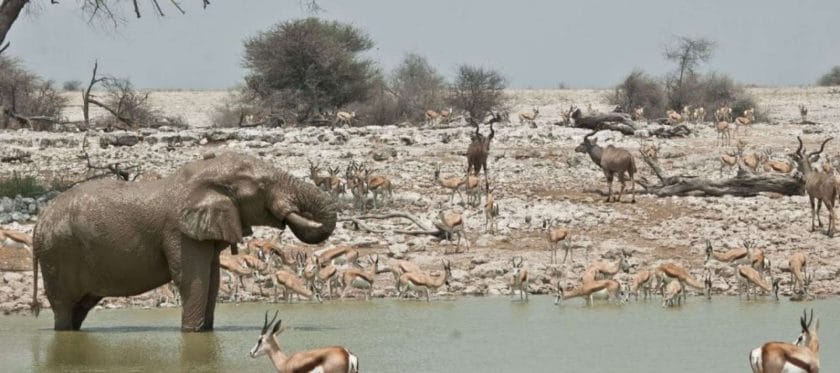
Etosha is an easy option for a self-drive holiday, with good safari lodging options spread out in the park and well-marked roads that can be navigated in a 2WD vehicle.
With its sandstone plateau towering over the plains of the desert, Waterberg Plateau Park is another excellent park to the south of Etosha, offering great wildlife viewing from waterhole hides.
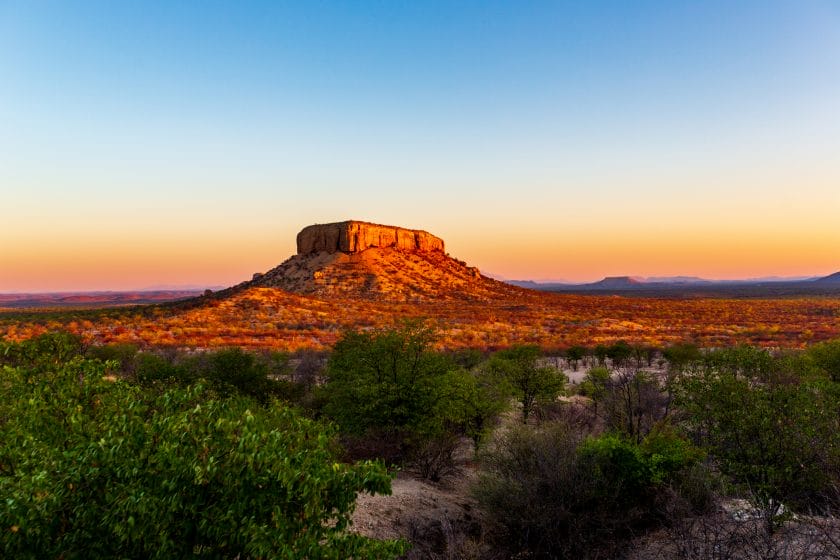
On hiking trails, you can expect to see species such as black and white rhinos, rare sable and roan antelope, eland, kudu, tsessebe, brown hyenas, and leopards.
One of the best places in Africa to take part in cheetah and leopard tracking, the 200km2 (77 square mile) Okonjima Nature Reserve is home to the AfriCat Foundation , one of the country’s best conservation initiatives.
The foundation rescues and rehabilitates cheetahs and leopards from human-wildlife conflict situations and allows you to track these predators on foot in the nature reserve. Not only is it a thrilling experience, but it also contributes to the survival of these threatened species.
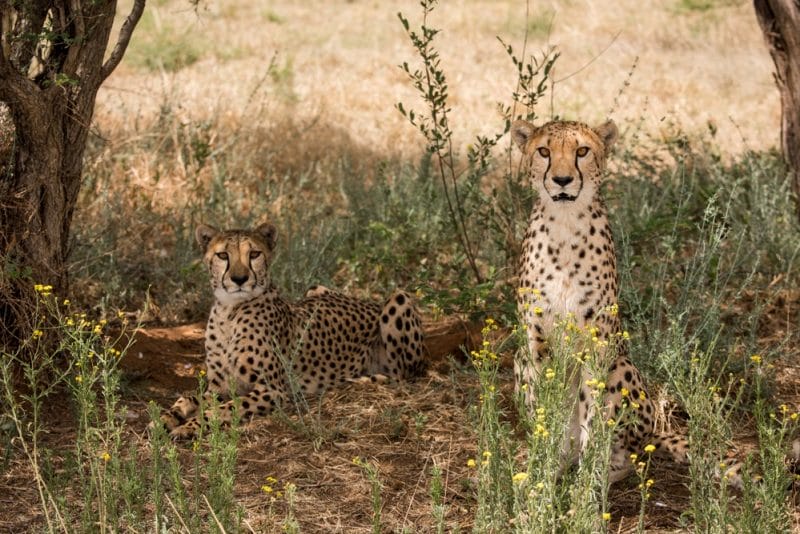
Covering a vast area in northwest Namibia, Damaraland is harsh, remote, and incredibly beautiful, a land of immense plains, deep gorges, granite outcrops, and jagged peaks. Here you can track free-roaming desert rhinos and elephants.
Damaraland is one of the only places left in southern Africa where wildlife is found outside parks and reserves.
Other highlights of the region include climbing the mountains of Brandberg (Namibia’s highest peak) and Spitzkoppe and exploring the incredible rock art gallery of Twyfelfontein (a UNESCO World Heritage Site), where more than 2500 paintings are spread across 17 sites.
To the north of Damaraland, Kaokoveld is a true wilderness and the least accessible region in the country. It’s a sparsely inhabited place of sandy tracks, massive open vistas, desert elephants, and dramatic mountain scenery.
Kaokoveld is the ancestral home of the semi-nomadic Himba people, whom you can visit in scattered villages to learn more about their fascinating culture and traditions.
Another highlight of Kaokoveld is Epupa Falls, a beautiful waterfall oasis surrounded by baobabs, fig trees, and palms.
Practical Advice for a Northern Namibia Safari
Parts of northern Namibia are extremely remote with rugged terrain and rough roads (or no roads at all), which means you need to have done some thorough research before your travels.
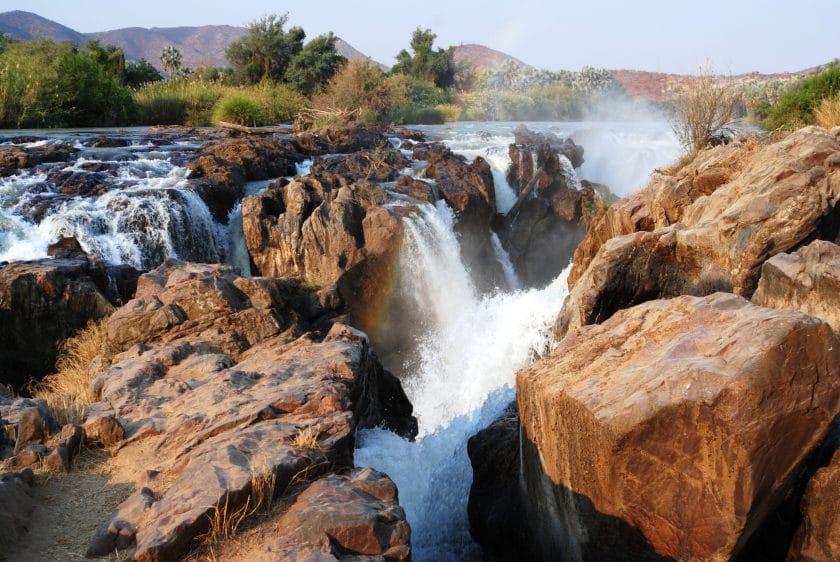
You’ll need to be prepared with two spare tires, extra fuel, and plenty of food and water. In the more remote regions, such as the Kaokoveld, it’s advisable to travel with a guide and in a convoy of at least two vehicles.
From November to May, there is a medium risk of malaria in northern Namibia, especially in Etosha National Park and the Zambezi Region. Consult your doctor about taking malaria prophylactics and take necessary precautions such as mosquito repellant to prevent being bitten.
Namibia’s most visited attraction is one of the best places to experience the serene beauty of the Namib Desert , that quintessential landscape of undulating burned orange and apricot-colored dunes towering above the desert floor.
Sossusvlei itself is a salt and clay pan encircled by dunes in central Namibia, but the name has now come to refer to the surrounding area, which includes other pans and dunes.
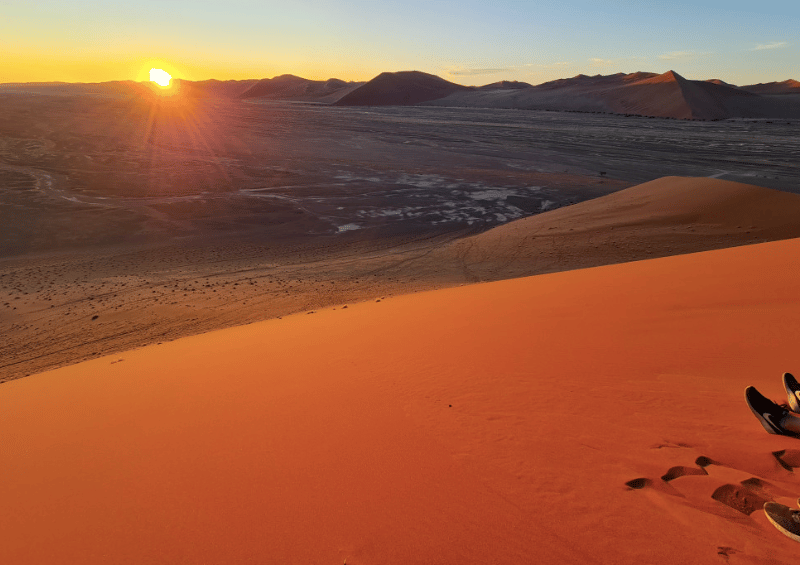
Lying within the Namib-Naukluft National Park , Sossusvlei is the only point of call in the park for many travelers due to its ease of reach and accessibility, even in a 2WD vehicle. It offers a wonderful taste of the vast and largely untouched wilderness.
Despite being the most popular place for safari in Namibia, the magic of Sossusvlei lies in just how remote and isolated you can feel, even on a busy day, when you’re on top of your own massive dune and all you can see is sand and sky as far as the horizon.
Highlights of a Sossusvlei Safari in Namibia
Near Sossusvlei is Deadvlei, another clay pan, which is even better for photographic safaris in Namibia. Surrounded by soaring terracotta dunes, the blinding white pan is dotted with the blackened skeletons of 900-year-old petrified trees under a brilliant blue sky, a scene that’s so startling you can hardly believe it’s real.
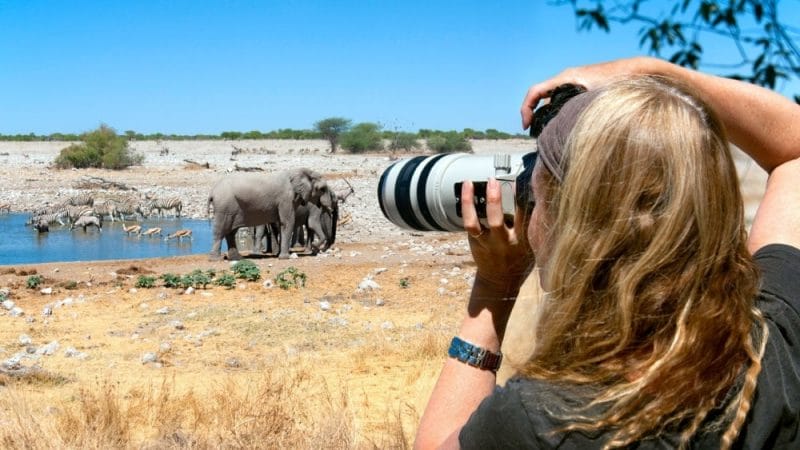
Sand dunes surround Sossusvlei in every direction. These are the world’s tallest dunes and climbing them is a highlight of any trip to Namibia. Some are famous, such as the 170m/557ft Dune 45, which is one of the most climbed dunes due to its accessibility next to the road 45km/28mi from Sesriem. Another popular dune is Big Daddy, towering 350m/1148ft above Deadvlei.

If you want to find your own sandy spot away from other travelers, just pick a slope and climb to the top for breathtaking views over a never-ending sea of dunes. Soaring high above Sossusvlei and the Namib Desert in a hot air balloon as the sun rises is one of Namibia’s most unforgettable activities.
Practical Advice for a holiday in Sossusvlei
Sossusvlei lies within the Namib-Naukluft National Park. You need to buy a permit to enter the park, and your visit is limited to the hours of the gates, which close around sunset and open around sunrise.
The best times to explore Sossusvlei are in the early morning and late afternoon, when the sun isn’t so harsh, and the golden light makes the desert glow.
Check the opening and closing times of the gates (they differ in summer and winter months) to plan your visit, and bear in mind that it’s a 60km/37mi drive from the parking area of Sossusvlei to the gate, so leave enough time in the afternoon to drive back before the gates close.
If you want extra time before sunrise and after sunset, you can opt to stay at one of the two lodging options within the park – a campsite or an upmarket luxury lodge.
The last few kilometers to Sossusvlei are on a sandy track that’s only suitable for 4x4s. If you’re traveling in a 2WD, you can park your vehicle in a car park and get a ride in a safari shuttle.

The Petrified Forest in Namibia is a national monument with 280 million-year-old petrified trunks. Take caution when visiting, and avoid sitting on trunks or damaging any part of the monument.
There are plenty of lodging options near the entrance of Sossusvlei in the tiny village of Sesriem and just a short drive away. Take your pick from well-maintained campsites with all the amenities you would need to high-end luxury lodges set in private reserves.
Bordering South Africa, Namibia’s southern region has a lot to offer in terms of wild desert landscapes and outdoor activities, ranging from canoeing on the Orange River through the other-worldly desert scenery of the |Ai-|Ais/Richtersveld Transfrontier Park to hiking the jaw-dropping majesty of the Fish River Canyon, Africa’s largest canyon.
Southern Namibia may not be a prime safari destination , but what it lacks in famous wildlife, it makes up for in sublime desert scenery. Imagine sandy plains dotted with quiver trees, jagged granite mountains, and imposing rock formations.
The standout highlight of southern Namibia is the Fish River Canyon, but the rest of the |Ai-|Ais/Richtersveld Transfrontier Park is also full of desert wonders, including the richest diversity of succulent flora in the world.
On the coast, Lüderitz is an intriguing colonial town, while nearby Kolmanskop, a ghost town, is one of Namibia’s most photographed places and lies on the edge of the Sperrgebiet National Park, Namibia’s newest national park.

Most of the park, a diamond mining area closed to the public for a century, remains inaccessible, but travelers can now visit on guided expeditions to explore a rich, succulent biome, a colossal rock arch, and two mysterious ghost towns.
At Namibia’s border with South Africa, the Orange River meanders its way through wild desert landscapes. Taking a paddle down the river in a canoe for a few hours or days is the perfect way to take in this southern beauty at a slow pace.
Further north, the NamibRand Nature Reserve is a vast concession on the edge of the Namib-Naukluft National Park, where you see desert wildlife such as oryx and springbok against a backdrop of apricot-colored dunes and silvery plains. Highlights of a Southern Namibia Safari
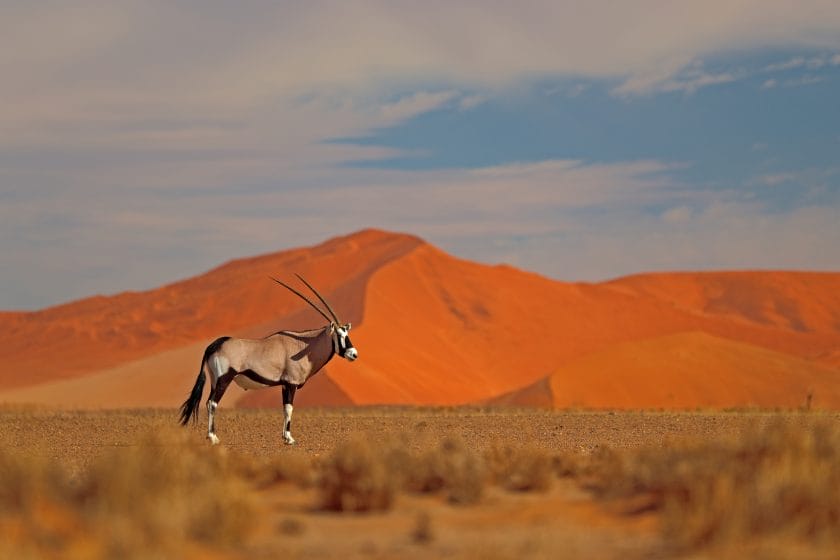
Crossing over the border of South Africa, the |Ai-|Ais/Richtersveld Transfrontier Park has some wildlife such as oryx, springbok, zebra, and baboons, but with its low density of animals and lack of big game, it’s not usually known as a prime safari destination.
Instead, travelers visit the park for its out-of-this-world Mars-like landscapes of looming mountains, boulder-strewn plains, striking quiver trees, and its incredible diversity of plant life (try to visit in August and September when wildflowers are blooming).
The park is the world’s only arid biodiversity hotspot, conserving the richest diversity of succulents on the planet. Another highlight of the park is the |Ai-|Ais thermal hot springs, where you can soak in outdoor baths under the shadow of mountains in a photogenic setting.
The ancient water-carved Fish River Canyon, Africa’s largest canyon at 550m/1804ft deep and 160km/99mi wide, is a truly humbling sight to take in and the star attraction of the |Ai-|Ais/Richtersveld Transfrontier Park.
Standing on the edge of the gorge and peering down into the abyss makes you realize how small and insignificant you are compared to the mighty forces of nature.
There are easy hikes around the canyon, but if you’re up for a challenge, the 85km/52mi multi-day Fish River Canyon Hike, which traverses half the gorge’s length, is the best way to get to grips with this geological wonder.
Canoeing trips on the Orange River, which forms a natural boundary with South Africa, are a must-do when traveling southern Namibia. Whether you have a few hours or days, paddling down the river at a gentle pace is the perfect way of taking in the desert scenery.

A few different outfitters offer guided trips that include all your meals and camp setup, so all you have to do is spend your days paddling and swimming and enjoying magical nights sleeping under a sky thick with stars.
The colonial coastal town of Lüderitz is an interesting place to visit, with its historic mansions and restaurants serving tasty fresh seafood (don’t miss the local oysters). Activities not to be missed are boat tours to a Cape fur seal sanctuary and penguin colony.
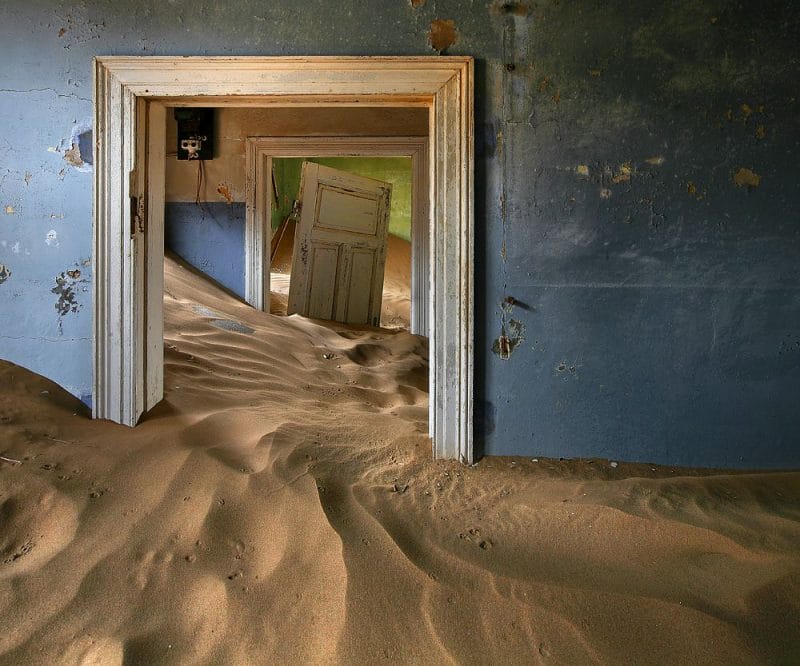
Close by, the abandoned diamond mining town of Kolmanskop is now a ghost town and one of Namibia’s most photogenic places. It’s an eerie experience to wander around the town’s crumbling buildings, slowly being swallowed by the desert sands.
When you’re driving between Lüderitz and Aus, keep an eye out for the herd of wild horses (the world’s only wild desert horses) that roam this area of this desert and can often be seen near the road.
Another worthy roadside stop is the beautiful Quiver Tree Forest near Keetmanshoop, where 250 of the unusual and striking-looking quiver trees (or kokerboom) stand sentinel over grass and boulders.
Practical Information for a Southern Namibia Safari
It’s easy to drive to southern Namibia from South Africa, so if you’re thinking of traveling to South Africa on your holiday , you might want to consider flying to Cape Town and renting a car to drive up to Namibia .
If you’d like to hike the Fish River Canyon, you need to go during the cooler months from May to September and be sure to book a year in advance.
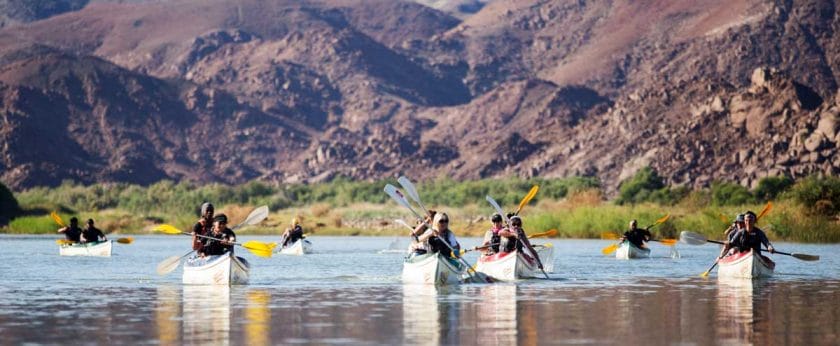
While the |Ai-|Ais/Richtersveld Transfrontier Park is extremely hot during the summer months from November to March, it’s a good time to do a canoeing trip down the Orange River as you spend a lot of the day in the water and can sleep under clear night skies.
Don’t attempt to enter the Sperrgebiet (Forbidden Area) unless you’re on a guided tour – it’s a diamond mining area, and you will be prosecuted for trespassing without a permit.
Sandwiched between the ocean and the Namib Desert, Swakopmund, a coastal town in central Namibia, is one of the most popular places in the country for travellers to visit.
The laidback town has charm by the bucketload with its colonial architecture, oceanfront promenades, historical sights, cosy guesthouses, and excellent restaurants and beer houses where you can sample traditional German food and beer.
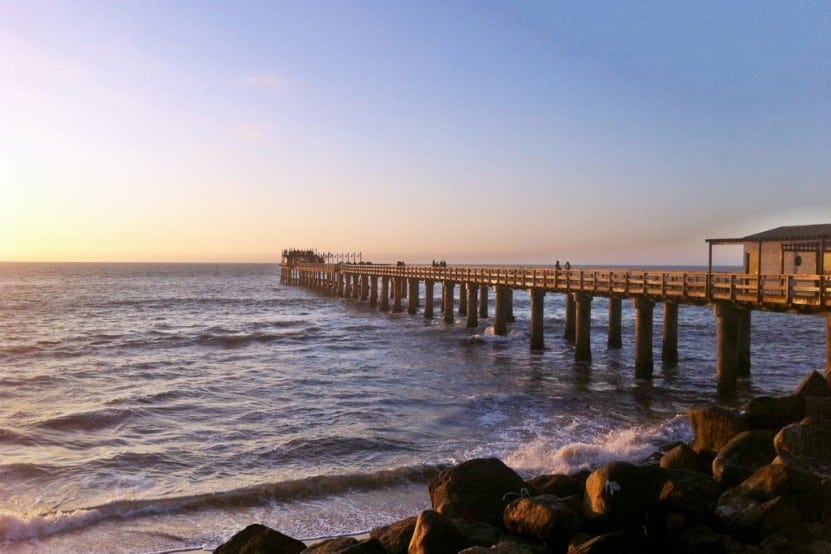
Swakopmund is a perfect base for exploring the coast, from taking boat and kayaking trips from Walvis Bay to spot the abundant marine life of the Atlantic Ocean to going birdwatching at Sandwich Harbour further south.
It’s also a centre for adventure activities – it’s easy to fill several days with adrenaline-pumping fun. Take your pick from sandboarding down the huge dunes just outside of town, quad biking in the desert or sky diving.

The Living Desert Tour is a wonderful activity for families to experience. Guided by an expert, you will embark on a walk through the Namib desert and learn about the unique plants and animals that have adapted to thrive in harsh environments.
Another great family-friendly holiday option is the Welwitschia Drive, a short road trip through the Namib-Naukluft National Park, showcasing some of the most interesting and unique sights, including the oldest welwitschia plant in the world, estimated to be over 1500 years old.
Travel with Confidence
With over 20 years of experience, our team will help you choose the perfect african safari for your adventure., 24/7 support, personalized, popular namibia safaris, these recommended tours for namibia can be tailor-made to match your budget..
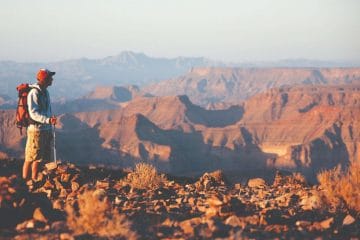
South Africa and Namibia Self-drive Adventure
South Africa Cape Town Namibia Fish River Canyon Sossusvlei Swakopmund
From $ 2200 /USD
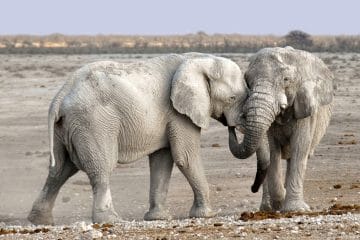
Etosha, Namibia Self- Drive Adventure
Southern Africa Namibia Etosha Windhoek Swakopmund
From $ 2100 /USD
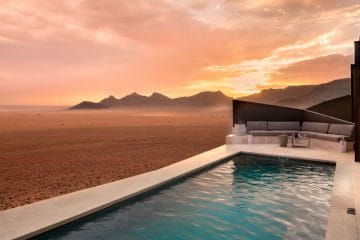
Sossusvlei Dunes Luxury Fly-in
Southern Africa Namibia Sossusvlei Windhoek
From $ 4790 /USD
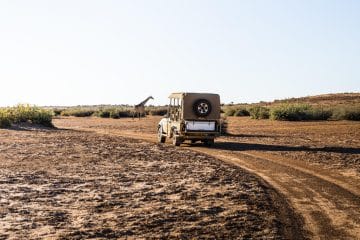
Namibia Highlights Group Tour
Southern Africa Namibia Sossusvlei Damaraland Etosha Swakopmund
From $ 2290 /USD
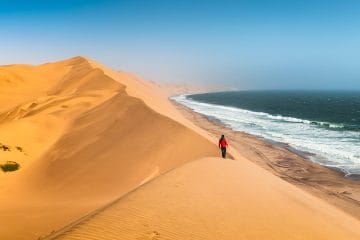
From Namibia to Victoria Falls - Marvels of Sou...
Southern Africa Namibia Swakopmund Sossusvlei Twyfelfontein Etosha
From $ 4420 /USD
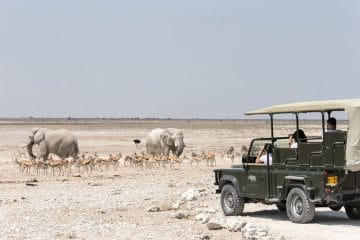
Affordable Namibia Adventure
From $ 4400 /USD
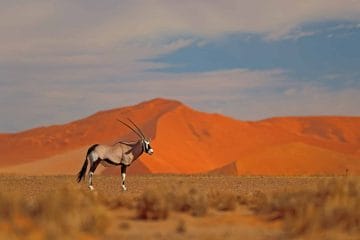
11 Namibia Safaris to choose from
Stay for 5 - 16 days
Experience our Tailor-made Tours in Namibia
When is the best month to travel to namibia.
- Namibia in January
January is midsummer in Namibia when temperatures in most of the country are scorching, and some parts of Namibia receive heavy afternoon showers.
The summer rains mean the foliage in Etosha National Park is at its greenest, making for beautiful photos and good birdwatching tours , but wildlife spotting is more challenging than in the drier months.
January is an excellent time to visit the Skeleton Coast as the weather is mild and sunny.
- Namibia in February
February is the wettest, hottest, and most humid month in Namibia for safari. It’s the low season, which means lower room rates and fewer other travelers.
It’s tricky to spot wildlife in Etosha, but it is birthing season, so if you’re lucky, you’ll get to see some newborn antelope calves.
- Namibia in March
The rains start to ease off in March, but it’s still hot and humid. It’s still a good month for birdwatching safaris in Namibia, but finding wildlife in places such as Etosha remains challenging due to the lush vegetation.
- Namibia in April
April is a lovely time to visit Namibia, especially if you’re a photographer. The weather is mild, the skies are clear, and the landscapes are green. It’s still the low season, so you can get good deals on room rates.
- Namibia in May
May is a good month for Namibia travel, with moderate temperatures, green vegetation, and clear skies. If you want to do a serious hike, the Fish River Canyon hike opens for the winter season at the beginning of the month.
- Namibia in June
Desert temperatures drop off in June. While daytimes are pleasant, nights can be freezing. Without rain, the landscape has become much drier and vegetation sparser, making this a good time for a visit to Etosha , where it’s just started to become easy to spot animals congregating around waterholes.
- Namibia in July
July is the driest month of the year, so it’s an excellent time to visit the game parks, especially Etosha, where it’s easy to see hundreds of animals vying for space around waterholes. Daytime temperatures are mild, and nighttime temperatures can drop well below freezing.
- Namibia in August
August is a popular time to travel to Namibia, so be sure to have your lodging booked far in advance. It’s an excellent time to see wildlife in the parks, and a good time to do outdoor activities as daytime temperatures remain mild (although be prepared for freezing nights). In August, you can see beautiful carpets of wild spring flowers covering the arid |Ai-|Ais/Richtersveld Transfrontier Park.
- Namibia in September
September is an ideal time for visiting Namibia. Daytime temperatures are still pleasant, and nights are a bit warmer. It’s still dry, so game viewing is excellent. Early to mid-September is the last time you can hike the Fish River Canyon before it gets too hot, and also the last month to catch the wild spring flowers in |Ai-|Ais/Richtersveld Transfrontier Park.
- Namibia in October
October gets very hot and dusty in Namibia, though it’s still an excellent time to visit Etosha for safari in terms of dry landscapes and easy wildlife spotting. This is the best month for spotting Southern Right, Humpback, and Minke whales as they pass through the Atlantic Ocean near Walvis Bay.
- Namibia in November
The first summer rains generally start in November, and the temperature drops a bit, although much of the country doesn’t receive much rainfall. This month is the end of the season for whale migration. November is an excellent time to visit the Skeleton Coast National Park , as the weather is mild.
- Namibia in December
With the summer rains in December, Namibia’s arid landscapes turn green, attracting migratory birds and making this an ideal time for birdwatchers. December is a busy time of year to travel in Namibia because of the Namibian and South African school holidays over the Christmas and New Year period. Be sure to book in advance for lodging and campsites.
Our Recommended Tours in Namibia
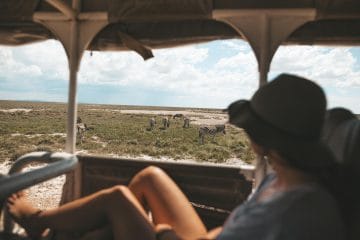
Namibia Self-Drive Adventure
Southern Africa Namibia Swakopmund Windhoek Etosha
From $ 1575 /USD
Looking for Something Unique?
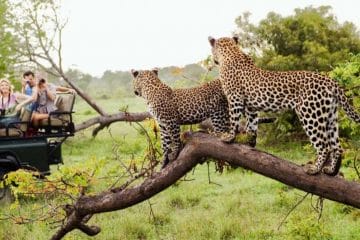
Big Five Safaris in Africa
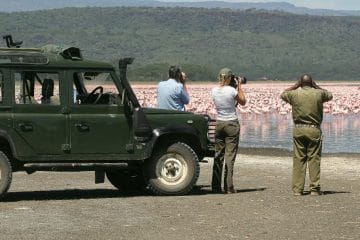
Birding Safaris in Africa

Desert Safaris in Africa
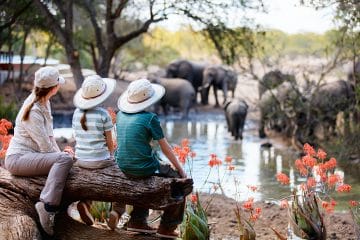
Family and Kid-Friendly Safaris in Africa
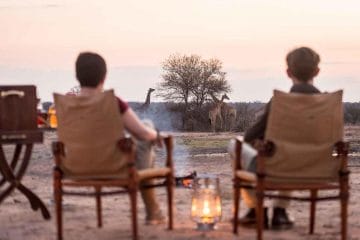
Honeymoons in Africa
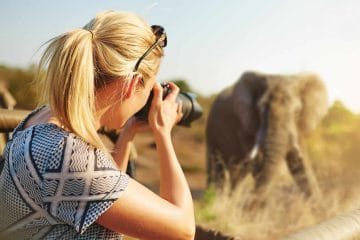
Photographic Safaris in Africa
Why travel with us?
Recent reviews from travellers who planned and booked their africa trips with discover africa safaris, megan was right on top of everything and returned emails and calls....
Sabi Sabi Earth Lodge review
Vicki, United States 20 May 2022
Do not miss out on discover africas safari.
Victoria Falls & Zambia Safari Review
Sheree Norton, United States 08 Mar 2022
Amazing experience.
SA Safari Review
Preeti, Canada 01 Dec 2019
Prompt, professional and excellent service.
Senior Safari to Kruger & Botswana Review
Chetan Vora, Canada 20 Nov 2019
Super glad we booked our safari adventure with discover africa safaris. they....
Big Cat Safari Tour Review
Mike, Philippines 03 Sep 2018
With discover africa i had the most wonderful experience of my life.
A Botswana Adventure Review
Debby, Spain 05 Jun 2015
Ready to plan your tailor-made safari.

Steve Conradie, Co-founder, Discover Africa
Free safari planning advice from destination experts
Faqs about namibia.
- A safari in Namibia is best done between July and October, when temperatures are just above 20°C and the chance of rain is low. This is also the best time for wildlife viewing, making it peak travel season.
- Blue wildebeest
- Bat-eared foxes
- Neutral-coloured clothing
- Long-sleeved shirts that provide sun and mosquito protection
- T-shirts and shorts for warmer days
- Evenings and cooler days call for jeans or long pants
- Sossusvlei is located about 350km southwest of Windhoek (southern part of the Namib Desert). It is a salt and clay pan surrounded by the high red dunes' of Namib-Naukluft National Park.
- Sossusvlei has a wide range of different types of accommodation from the luxury side to the budget side of things. Examples of this include; The Desert Camp, Desert Quiver Camp, Le Mirage Desert Lodge & Spa and much more.
- You can fly to Sossusvlei from Windhoek or you can drive to Sossusvlei
- The road to Sossusvlei is extremely beautiful and is a great journey to add to a Safari in Namibia
- There are many lots of routes to drive depending on where you are starting your journey
- Windhoek, the capital city of Namibia, is located roughly in the country's centre.
- It is located about 400 miles (650 kilometres) north of the Orange River and 760 miles (1,225 kilometres) north of Cape Town.
- The most well-known rock art areas are Damaraland's Brandberg Massif (2697m – mostly painting sites) and Twyfelfontein, a UNESCO World Heritage rock art site also in Damaraland.
- Visit the Twyfelfontein and Brandberg Massif Bushman rock art sites
- Explore Spitzkoppe or take photos from afar on your Damaraland holiday
- Learn about the amazing Damara culture on an organised cultural tour
- Try out scenic flights over Damaraland and see the beauty of the Namibian landscapes
Otjiwarongo has a variety of lodges, guesthouses and hotels to choose from.
- Visit the Cheetah Conservation Fund
- Combine the Waterberg National Park with an authentic Namibian Safari
- Explore the Rare and Endangered Species trust
- The driving distance from Otjiwarongo to Waterberg Plateau National Park is 113 km.
Visit the historic Lutheran church - Christuskirche
Go walking at Avis Dam Nature Reserve in Windhoek
Explore the Independence Memorial Museum
See the Gibeon meteorites on your Windhoek Holiday
Visit Joe's Beerhouse
- Before heading out for a Namibia safari , it’s important to receive a few key vaccinations.
- The World Health Organization and Centre for Disease Control recommend the following vaccines. Hepatitis A, Typhoid, Hepatitis B, Rabies, Yellow Fever and Routine Vaccinations. Source: https://www.passporthealthusa.com/2016/06/which-vaccines-do-you-need-for-namibia/
- Electricity in Botswana, Kenya, Namibia, South Africa, Tanzania, Zambia, Zimbabwe and in most of the continent is 220/240 volts.
- Most safari lodges and camps are not connected to an electrical supply. Solar lighting (backed up by batteries) is common, with many lodges having a generator, which runs part of the day (morning and late evening when guests are out on their activities).
- Lanterns also provide light at night. In many camps running on solar power, you will not be able to use a hairdryer.
Our Recommended Activities in Namibia
- Adventure Activities in Namibia
- Camping in Namibia
- Cultural Tours in Namibia
- Fishing in Namibia
- Hot Air Balloon Rides over the Namib Desert
Planning your Namibian adventure holiday is a matter of deciding which sorts of experiences you’d like to have. Without much planning or preparation, you can have a jam-packed itinerary full of adventurous activities , some of which are suitable for the whole family.
Just by staying in Swakopmund, various tour operators offer everything from skydiving and sandboarding down massive desert dunes to quad biking and ocean kayaking.
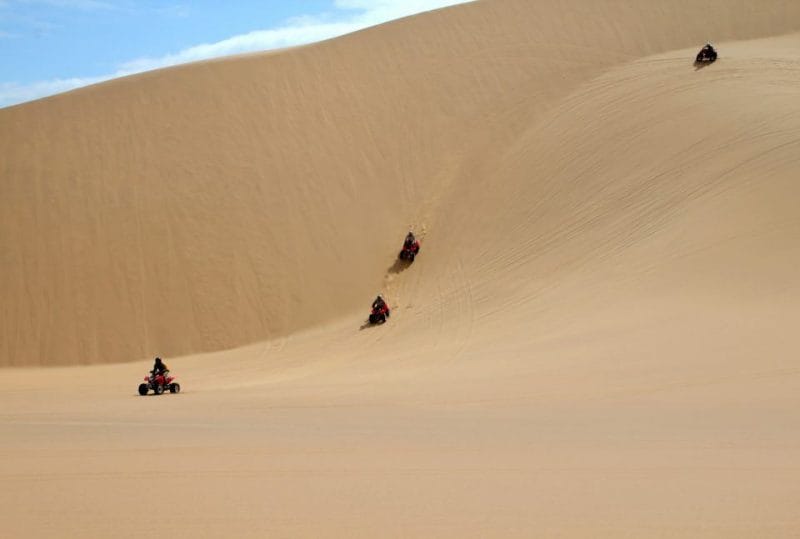
Going 4x4ing in Namibia’s most remote places is one of the most adventurous ways of experiencing the country’s wildest landscapes. Two of the best 4x4ing areas are the Skeleton Coast National Park and Damaraland – wild, rugged, remote, and inhospitable but incredibly scenic.
Regarding active adventures, Namibia’s tough peaks in the Brandberg and the Spitzkoppe mountains lure experienced climbers looking for a challenge.
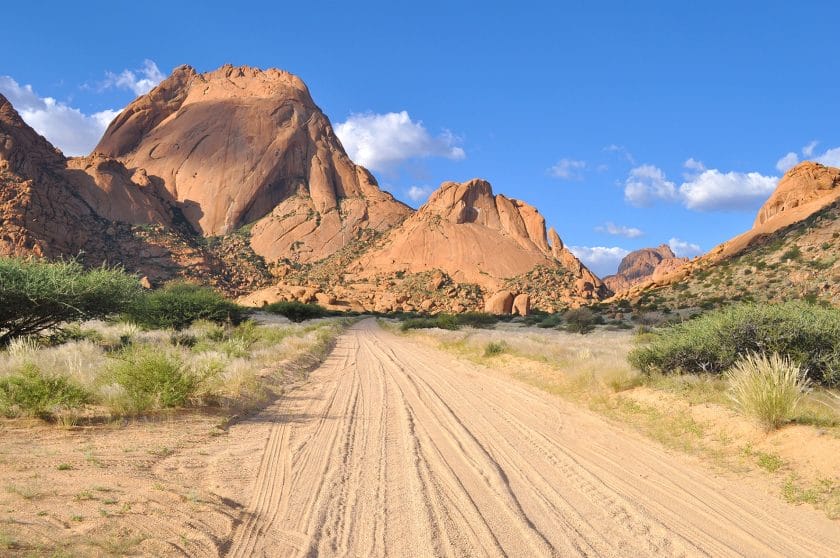
The five-day Fish River Canyon hike, which takes you through some of the best scenery of Africa’s largest canyon, is a beautiful trekking option for those with stamina. You can also find shorter, less strenuous hiking routes throughout the country.
A perfect family-friendly adventure is an Orange River canoeing journey, where you paddle down the watery boundary between Namibia and South Africa, passing through magnificent desert landscapes.
A trip to Namibia isn’t complete without a camping trip, which is a great way to see the country’s huge deserts, steep highlands, and unique wildlife.
Namibia is a great destination for campers of all skill levels, from those who are seasoned veterans to those seeking their first taste of the great outdoors on their Namibia holiday.
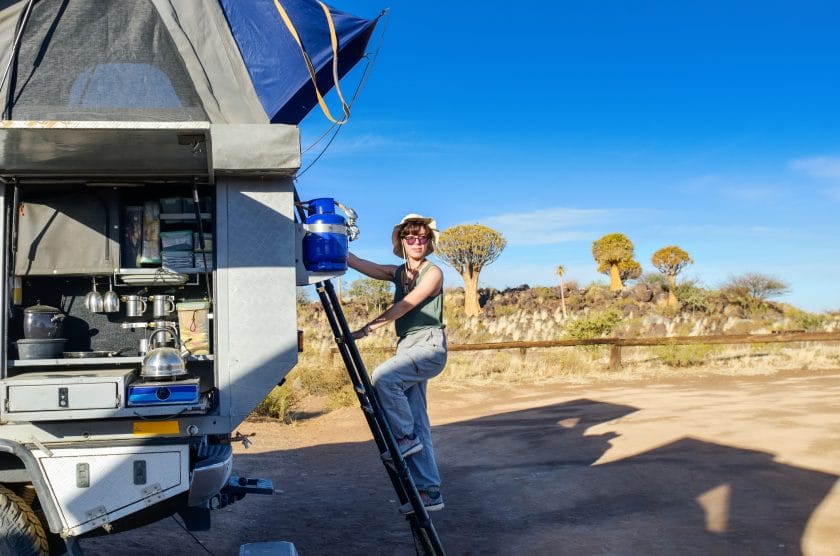
We at Discover Africa realize that the prospect of camping in Namibia can be intimidating, so we’ve simplified the planning process as much as possible.
Our many camping alternatives, from primitive campgrounds to five-star Namibia lodges , have been handpicked to provide you with the finest camping experience imaginable. Relax and enjoy your vacation without worrying about a thing thanks to our professional tour guides.
The Namibian night sky is one of the highlights of any camping trip there. Stargazers flock to the country because it has some of the clearest and darkest skies in the world.
Envision yourself unwinding in your tent, letting the gentle desert breeze caress your skin as you watch the stars twinkle above you. It’s the kind of amazing adventure you won’t soon forget.
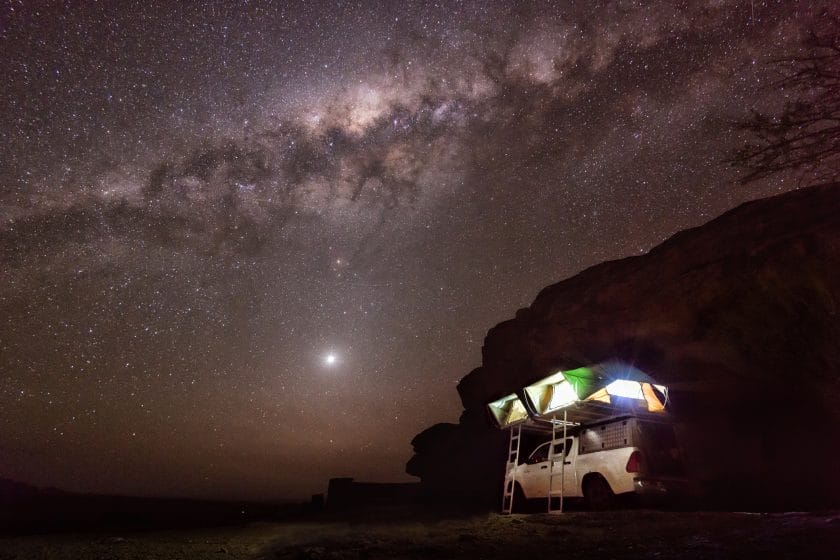
Wildlife enthusiasts flock to Etosha National Park , one of Namibia’s most popular camping spots, to see elephants, lions, cheetahs, and hundreds of other species.
Camping is permitted in the park, and there are a number of authorized areas to choose from, each with its own set of amenities.
Etosha boasts camping options for all kinds of people, whether you want a remote area to pitch your own tent or a more organized campground with access to showers and bathrooms.
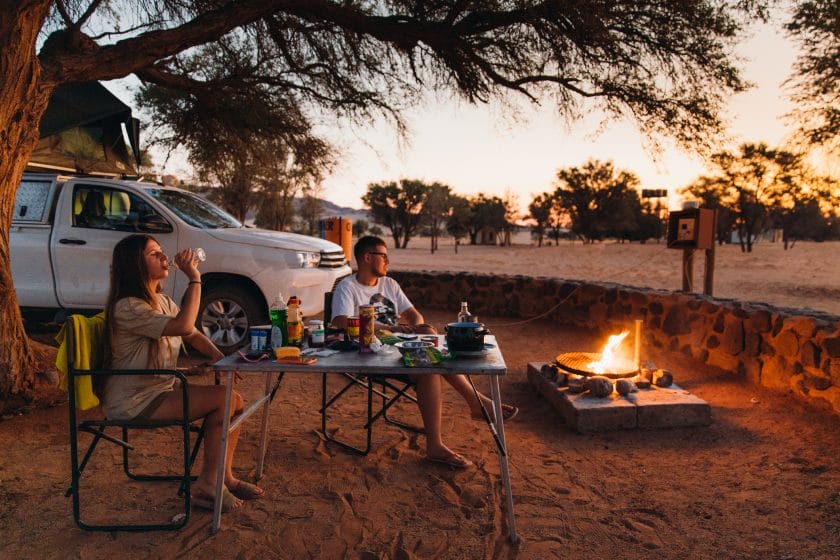
Sossusvlei , known for its towering red sand dunes, is another fantastic camping spot in Namibia. Many of the campgrounds in this area have stunning views of the dunes, and they range in price from free to luxurious.
Damaraland is the place to go camping if you want to get away from it all and enjoy nature in all its raw, unrefined glory. Rare desert lions and elephants that have adapted to life in the desert can be found here. A variety of camping alternatives, from simple tent sites to opulent lodges, are available in this area, each providing its guests with an unforgettable outdoor adventure.
A vacation in Namibia offers the chance to explore the incredible wildlife and natural beauty of the country as well as learn about its many and varied cultures. A Namibian culture tour is a wonderful opportunity to learn about the customs and way of life of the various ethnic groups who live here.
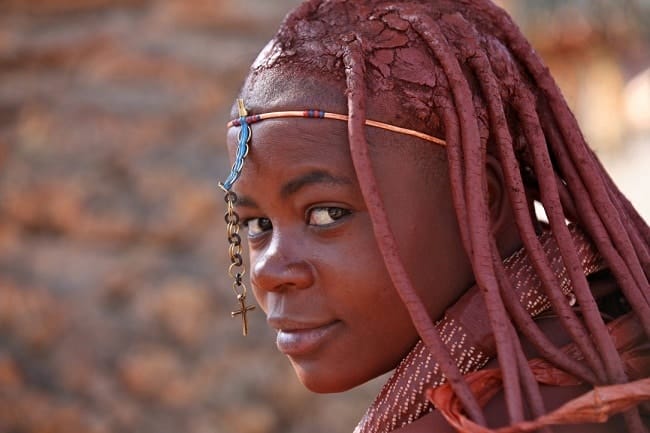
The north of Namibia, where you may visit Himba, Herero, and Damara communities, is one of the greatest locations to explore Namibian culture. The ancient way of life of the Himba has remained mostly untouched for centuries. They are recognized for their striking red ochre body paint and exquisite hairstyles. The pastoralists known as Himba continue to live in little villages.
The Herero people are renowned for their Victorian-era attire, which is a result of the German conquerors’ influence. The ancient beliefs and practices of the Damara people are a significant part of their vibrant culture. They are well-known for their rock engravings and paintings, which can be seen throughout Namibia.
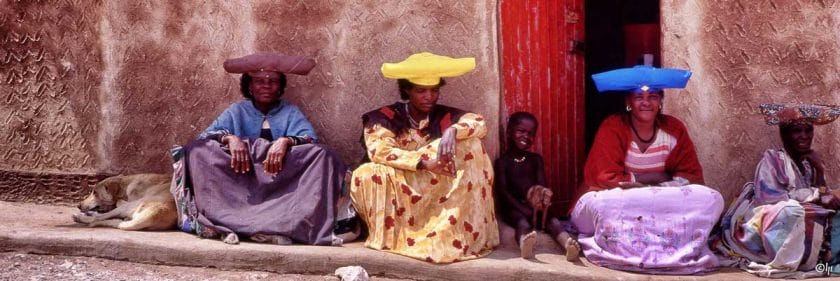
The San people, often known as Bushmen, who live in the Kavango and Zambezi regions, are another fantastic cultural group to encounter in Namibia. Because of their long history in the region, the San have a profound familiarity with southern Africa and its natural riches. Both their intricate rock art and their traditional lifestyle of hunting and gathering have gained them widespread recognition.
There is a lot more to Namibia than just its communities, though. The country’s music, dancing, and art are all worth exploring as well. The country has a thriving music scene, with artists and bands performing anything from classical music to modern pop. Traditional dance is also highly valued in Namibia, and its performers can be seen at celebrations and other occasions all around the country.
Combining your safari with a cultural tour of Namibia is a fantastic way to learn more about the country and its people. Seeing the world through the eyes of a different culture is one of the greatest benefits of travel. You should add a cultural trip to your Namibia safari if you want to have a genuinely authentic and immersive experience while you’re there.
If you’re planning a holiday in Namibia, consider adding fishing to your itinerary. Namibia is home to a wide variety of fish species, including tigerfish, tilapia, catfish, and yellowfish, making it a great destination for anglers of all levels.
One of the best places to go fishing in Namibia is the Zambezi Region, also known as the Caprivi Strip. This area is known for its large population of tigerfish, which can weigh up to 20 pounds and put up a strong fight.
The Zambezi Region is also home to various other species such as Tilapia, catfish and yellowfish. The best time to fish for tigerfish is during the rainy season, from January to April.
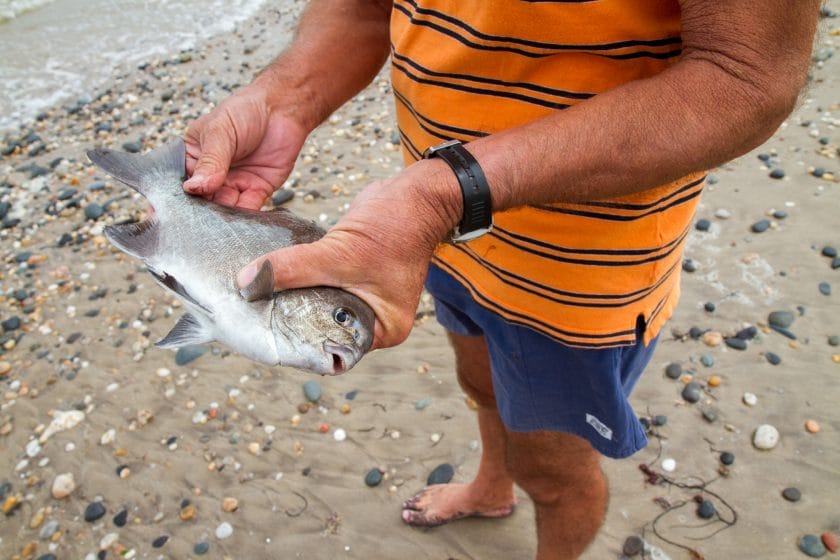
Another great destination for fishing in Namibia is the Kunene River, which is located in the far north of the country and forms the border with Angola. This river is home to a variety of fish species, including tilapia, catfish, and yellowfish. The best time to fish here is during the dry season, from May to December.
If you’re looking for a more remote and peaceful fishing experience, the Skeleton Coast , a remote and desolate stretch of desert along the Atlantic coast, is a great option. This area is known for its huge schools of yellowtail, which can be caught using various techniques such as trolling and fly fishing.
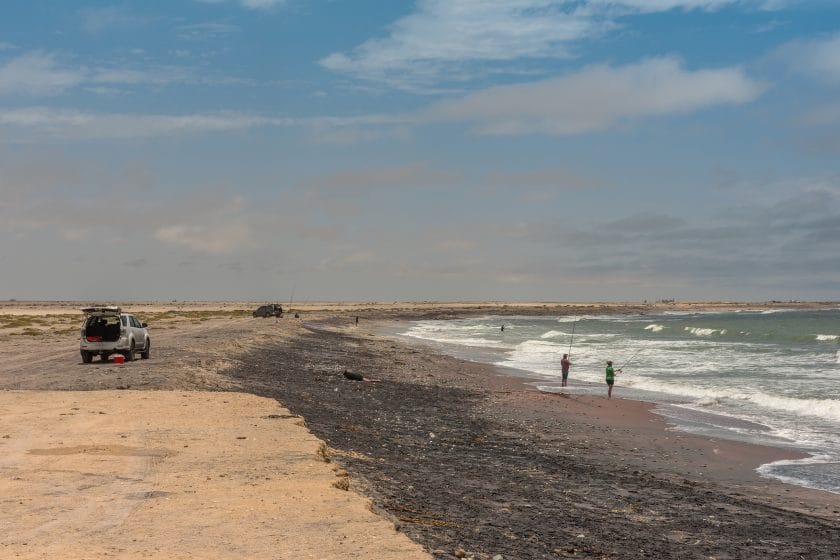
In addition to these specific fishing spots, there are many other places in Namibia where you can catch a wide variety of fish.
No matter where you go, you’re sure to have a great time fishing in Namibia and make lasting memories during your holiday in Namibia. So, if you’re an angler looking for a new and exciting vacation in Namibia, pack your fishing gear and head to one of these fantastic fishing destinations.
One of the most unique and impressive ways to experience Namibia’s stunning landscape is from the basket of a hot air balloon. Visualize yourself floating above the vast plains of Namibia, taking in the stunning scenery from above.
The best way to enrich your Namibian safari and acquire a new viewpoint is to take a hot air balloon ride.
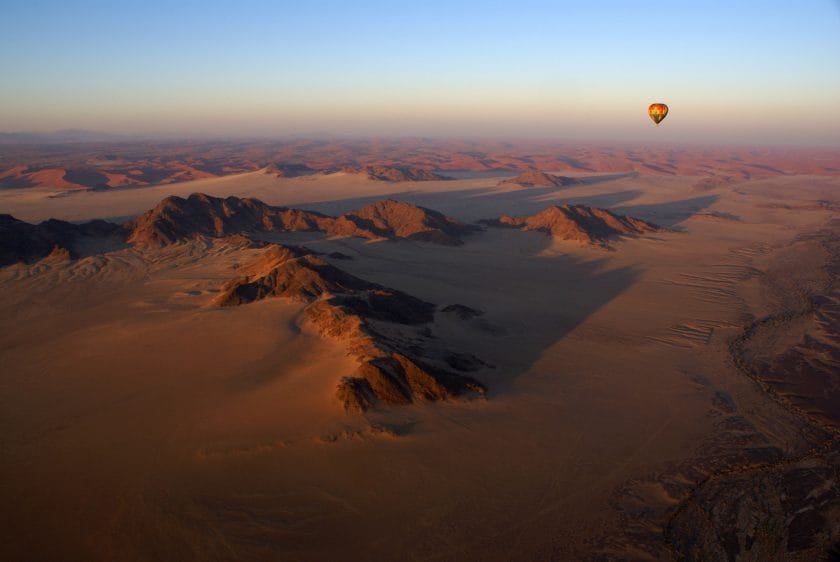
One of the best ways to see Namibia is from above on a hot air balloon ride, and Sossusvlei, in the southernmost part of the Namib Desert, is a perfect place to do just that.
The sand dunes in this area are well recognized as among the highest in the world. Taking a hot air balloon ride above Sossusvlei is a great way to see the desert in all its glory and to see the sand dunes transform as the sun rises.
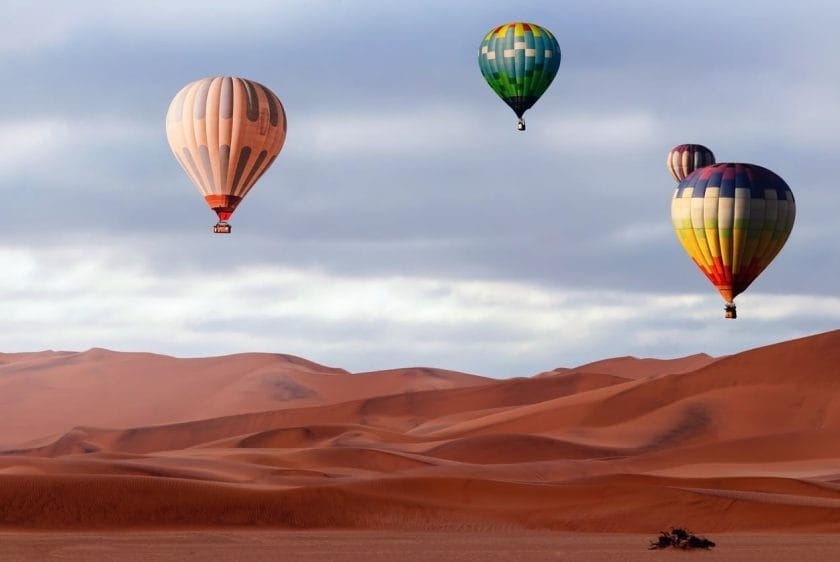
Etosha National Park , in Namibia’s north, is another great spot for a hot air balloon tour. Tourists can see the park’s many animals, such as lions, giraffes, and elephants, from the air on a hot air balloon ride.
The Etosha Pan, a large salt pan and one of the park’s most breathtaking sights, attracts thousands of migratory birds every year.
A hot air balloon ride above the landscape in Damaraland is an unforgettable experience. Damaraland is characterized by its rugged landscape, which consists largely of deserts but also of rugged mountains and deep valleys.
On a hot air balloon flight over Damaraland, you can take in the stark beauty of the region and see desert wildlife like springboks, elephants, and lions.
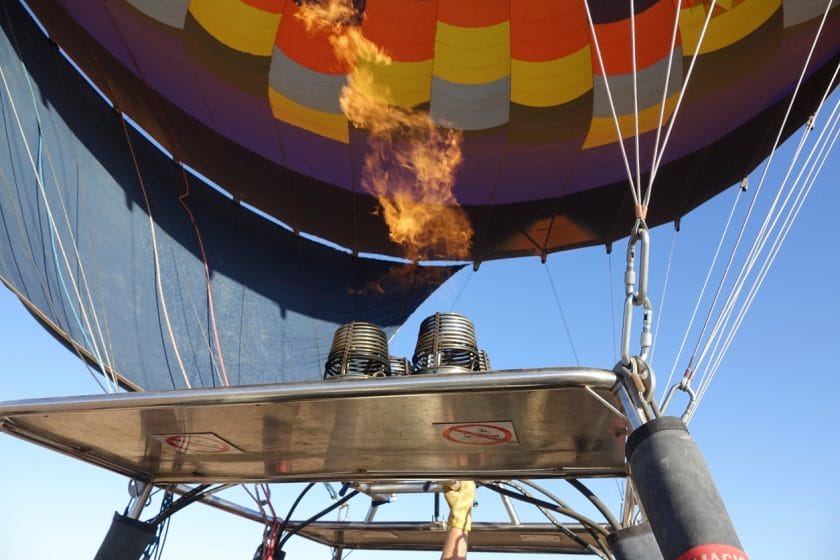
One of the most memorable ways to see Namibia is from above on a hot air balloon tour. Your Namibia safari will be greatly enhanced by taking a hot air balloon ride so that you can see the landscape from a new perspective.
So, if you’re looking for something truly unique and exciting to do in Namibia, consider booking a hot air balloon ride.
See Namibia in Your Comfort
- A Luxury Namibia Safari
- Affordable Safari in Namibia
- Namibia on a Budget
Namibia is home to superb luxury safari lodges in spectacular locations, often on private concessions in wilderness areas where part of the luxury is going on game drives without seeing other vehicles.
Most of the luxury lodges in the country are concentrated around popular destinations, such as Etosha National Park , on private reserves near Sossusvlei, in the Waterberg Plateau area, and Twyfelfontein.
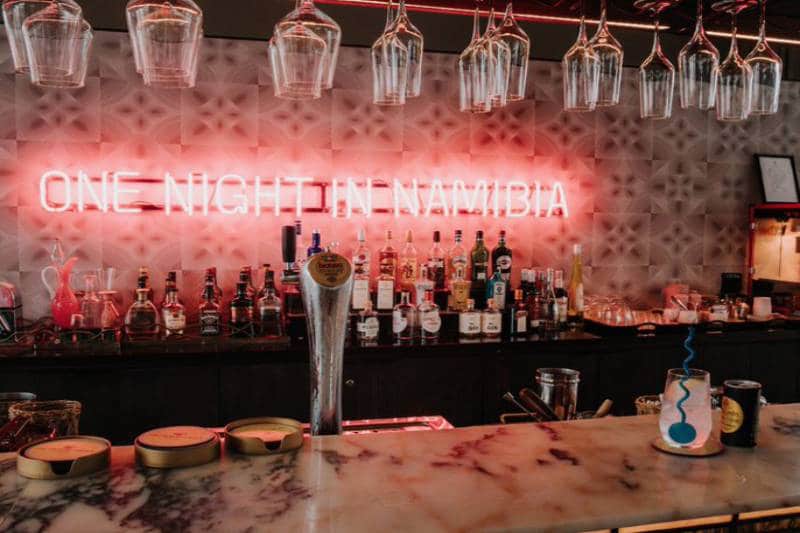
There are also intimate high-end lodges and camps in Namibia’s more remote areas, such as the Skeleton Coast and Kaokoveld, some of which are only accessible by light aircraft.
If budget isn’t an issue, fly-in safaris are the ultimate way to experience a Namibia Safari. On a fly-in safari, you’ll travel to Namibia in a small plane, flying between exclusive high-end safari camps in remote areas and visiting several parks and reserves along the way.
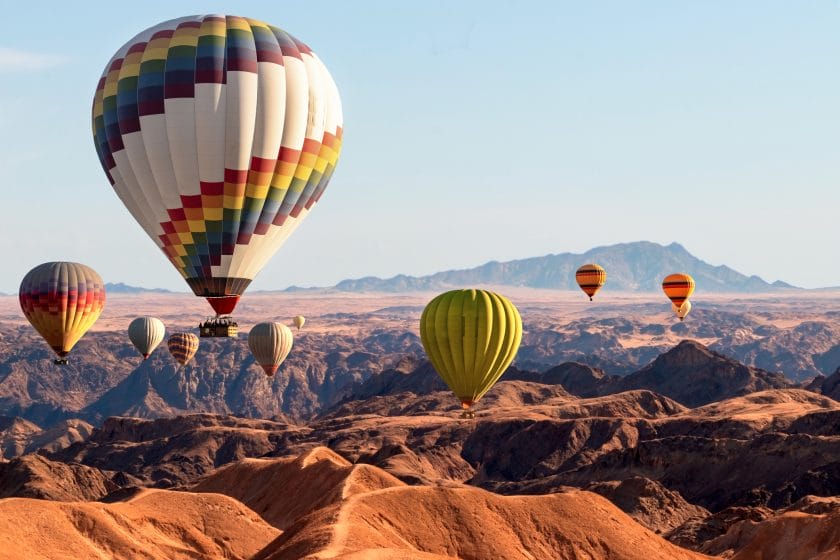
With Namibia’s vast distances and 4×4-accessible areas, doing a fly-in luxury Namibia safari is the best way of maximizing the time on your trip. Fly-in luxury safaris in Namibia usually include everything from accommodation, meals, and drinks to activities such as game drives.
A Namibia safari offers excellent value for money, especially if you hire a car and stay in campsites or lodges outside the national parks. While there are a lot of pros to staying inside the parks, camps can be pricey, especially in high season.
Choosing to sleep at a camp or lodge just outside the park gates means you can get better value for your money and only miss out on being inside the park in the early mornings and late afternoons when the gates are closed.
The low season (February, March, April, May, and November) sees hotels and lodges drop their room rates, so traveling during these months means getting better value for your lodging.
Staying at all-inclusive Namibia safari lodges can give you great value for money. Many lodges offer many activities, such as game drives, guided nature walks, and animal tracking as part of your stay.
The best way to travel through Namibia on a budget is to rent a car , stay at campsites and cook your own food. Namibia has some superb campsites in beautiful wild places, and many offer shops where you can stock up on things like meat, charcoal, and canned food so that you can self-cater
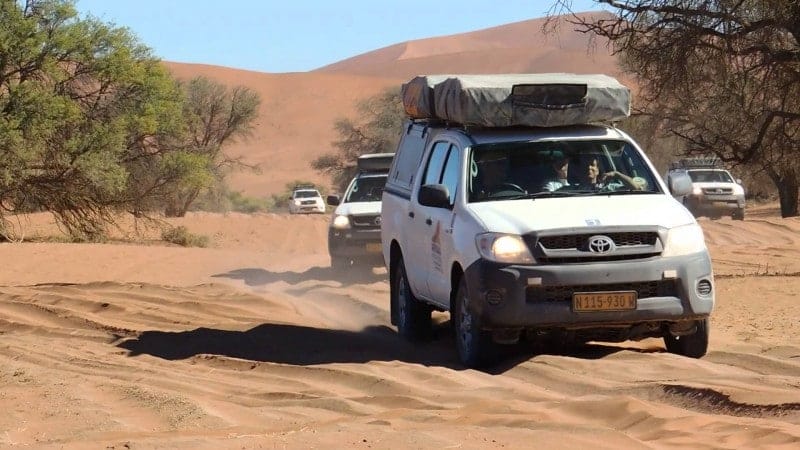
Another way to travel to Namibia on a budget is to join an organized tour that includes your lodging, transport, food, and activities. Traveling in the low season months of February, March, April, May, and November means you can get good deals on rooms in lodges and hotels as the rates are significantly lower than in the peak season.
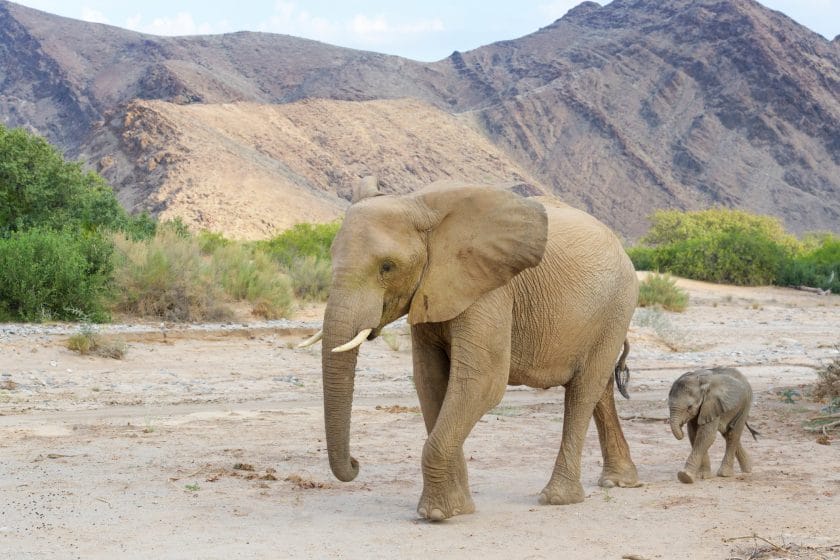
Hiking and exploring the national parks and reserves in your car are two of the top budget activities you can do on a safari in Namibia. They also happen to be the best ways to experience the most beautiful places and extraordinary wildlife that the country has to offer.
Holiday Styles and Options in Namibia
- A Foodie Holiday in Namibia
- A Photography Holiday in Namibia
- A Relaxed Safari Holiday in Namibia
- An Active Holiday in Namibia
- Big Five Safaris in Namibia
- Malaria-Free Safari in Namibia
- Walking Safaris in Namibia
Food and cuisine in Namibia are generally divided between indigenous food types and westernized foods to accommodate a broader range of palates, and range from German, Afrikaans, and European in nature.
The vast majority of visitors to Namibia concentrate their time in a handful of destinations, where restaurants, National Parks, and resort kitchens almost exclusively feature the latter. As such, nearly all meals are very familiar to western visitors.
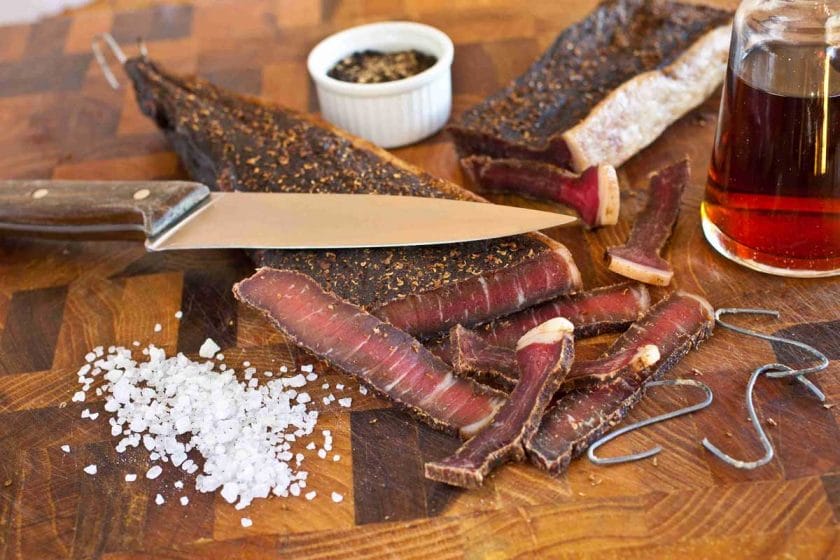
Breakfasts consist of cereals, yogurt, cheeses, cold cuts, eggs, sausage, bacon, and bread, which are familiar to most tourists.
Dinner mains feature a lot of game meats (kudu, springbok, oryx, wildebeest, and others) as well as chicken, pork, and steak. Sides are your typical variety of vegetables. Bread is served with most meals, and seafood is readily available along the coast.
Namibia is a photographer’s dream destination. The country’s spectacular landscapes of soaring dunes, vast horizons and cracked pans, rugged mountains, dramatic canyons, startling Skeleton Coast, unpolluted night skies, incredible wildlife, and unusual flora, couldn’t be more photogenic.
Namibia’s top photographic destinations are:
- Etosha National Park for wildlife photography
- The dunes around Sossusvlei for those quintessential desert scenes
- The petrified trees of Deadvlei in Sossusvlei
- The deserted ghost town of Kolmanskop
- Damaraland, where you can see desert elephants against a backdrop of arid mountains and stony plains
Make sure you have all the batteries and memory cards you need, as you won’t be able to find them in most of Namibia.
Namibia has such diverse landscapes and attractions that you’ll want to be traveling with a range of lenses, from wide-angle for the vast desert horizons to super telephoto for those wildlife shots.
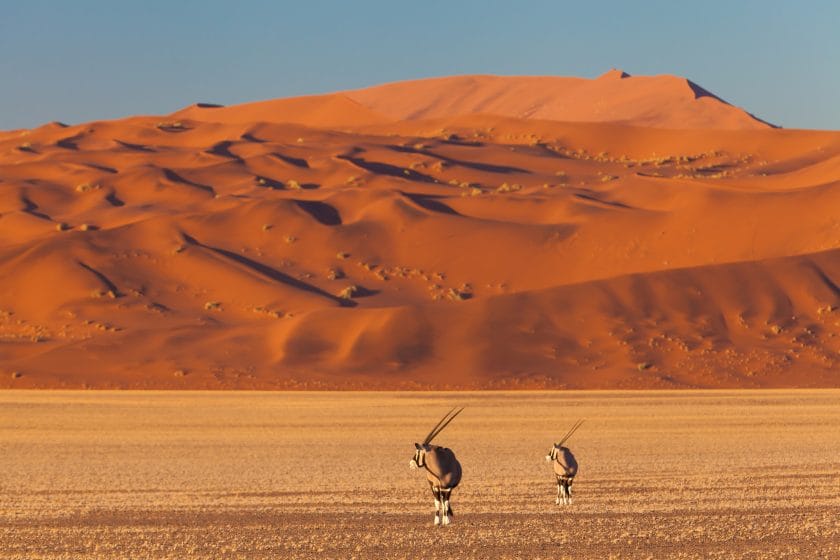
A tripod is essential for landscapes and wildlife photography (where you can set up at a waterhole such as in Etosha’s camps) and night sky photos.
Namibia is very dusty, so be sure to protect your gear in closed boxes while traveling in the car and clean lenses carefully to get rid of dust.
Different seasons offer varied photographic safari highlights:
- The rains have stopped by April and May, and these months are best for clear, dust-free skies.
- For the best chance of getting up close to wildlife at waterholes in Etosha, June to October is the ideal time to travel.
The huge empty spaces and unspoiled wild places of Namibia make you feel like you’re a million miles away from civilisation, which for many people provides the basis for a deeply relaxing holiday.
The best way to have a relaxing holiday in Namibia is to take things slowly. Long drives between distant destinations can be tiring. Instead of trying to cover all of Namibia’s highlights on one trip, pick two or three destinations to spend your time in or spend all your time in just one region. You could even choose just one destination to stay in and do day trips from there.
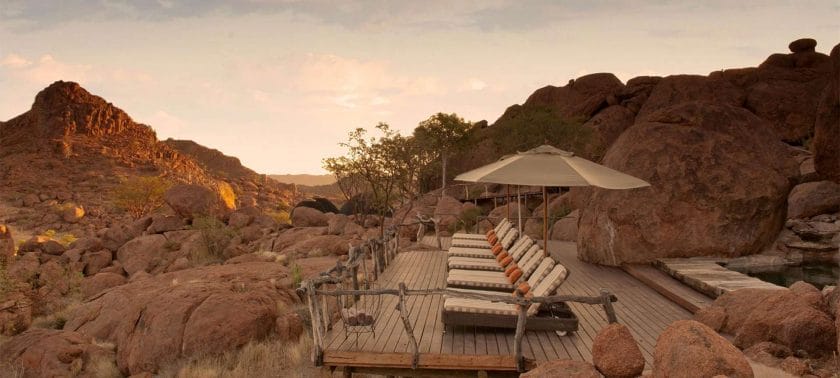
Namibia’s luxury lodges are all about as much relaxation as you want: while they offer a lot of activities, you can also take it really easy, whiling away days reading on your private deck overlooking vast desert plains or animals walking across a cracked salt pan in Etosha, taking dips in the pool, having sunset drinks on top of a dune and eating gourmet food surrounded by other-worldly scenery.
If you have the budget for it, a flying safari is an ideal way to have a relaxing holiday in Namibia. You fly between luxury camps and lodges around the country and get to experience the best of Namibia’s wildlife and wild places without having to drive anywhere.
If you’re after an active holiday in Namibia, you’re in for a mind-boggling array of choices: everything from hiking, mountain biking and sand boarding to river canoeing, ocean kayaking, mountain climbing, animal tracking and quad biking.
Swakopmund is an ideal base for an active holiday, as the coastal town offers a huge range of outdoors activities nearby, including sandboarding down towering dunes, skydiving over the desert, kayaking with seals in the ocean and quad biking.
There are hiking trails all over the country but the most famous is the 85-kilometre, five-day hike in the Fish River Canyon , a route that is only open between May and September.
You’ll need to be self-sufficient for the hike, carrying your own sleeping gear and food and the terrain is tough going, so it’s not for the faint hearted.
A fantastic wildlife hike is the four-day Waterberg Hike in Waterberg Pleateau Park (which is open from April to November) where you can spot rare roan and sable antelope, as well as giraffe, kudu and hyena amongst the dramatic red sandstone cliffs of the park.
For an easier hiking option, there’s the Tok Tokkie Trail, three-day slackpacking trail in the NamibRand Nature Reserve, where the walking is easy and your luggage is transported for you to comfortable outdoor camps that are set up for you at the end of your walking day (complete with cold drinks, gourmet food and hot water for washing).
Canoeing on the Orange River for a few days in southern Namibia is a perfect choice for a relaxing active holiday for the whole family . Several outfitters offer similar multi-day paddling trips which include guides and meals, meaning all you need to do is paddle, swim, and sleep under the stars.

Namibia is a mecca for mountain bikers, with an endless array of routes that traverse some of the country’s most spectacular terrain and take you through wilderness concessions where you may be lucky enough to spot rhinos and elephants from the saddle.
There are strenuous multi-day cycles suited for experienced, fit riders through remote and little-visited areas such as the Kunene Region and Damaraland, but if you’re just looking to cycle for a few hours, there are many options for short trails on private nature reserves dotted around the country.
Namibia offers a diverse range of climbing opportunities for enthusiasts, with its rugged mountains providing a range of challenges for climbers of all levels.
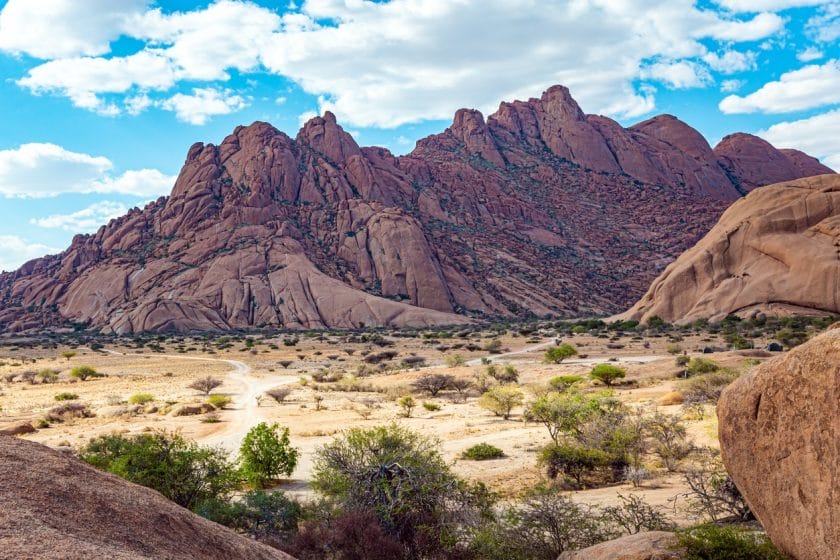
The Spitzkoppe, known as “Namibia’s Matterhorn,” offers a challenging peak summit and sport-climbing routes, while the Brandberg offers a multi-day summit of the country’s highest point, with the added bonus of ancient rock art along the way. In the Erongo Mountains, there are thirty different routes to choose from.
All three of these climbing destinations can be found in the Damaraland region, located north of Swakopmund.
In Namibia it’s easy to combine an active holiday with wildlife experiences by tracking animals on foot. Take your pick from the free-roaming desert rhinos and elephants of Damaraland, the cheetahs and leopards of Okonjima Nature Reserve or rare and elusive pangolins in Erindi Private Game Reserve .
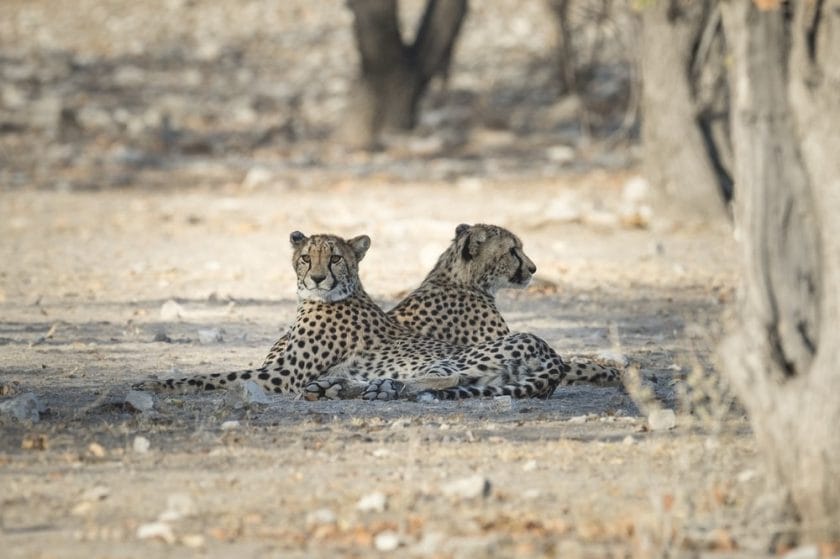
Having an active holiday in Namibia means you need the right gear: comfortable and sturdy hiking shoes, long lightweight trousers and long-sleeved shirts in neutral colours (so that you don’t stand out in the landscape when tracking animals on foot), and a wide-brimmed hat. A pair of binoculars is a must for game viewing.
The best months for outdoors activities in Namibia are the cooler winter months of May to September. In summer, day time temperatures can be brutally hot, and some activities not available, such as the Fish River Canyon hike and the slackpacking hike in the NamibRand Nature Reserve.
Namibia’s flagship reserve may lack the presence of buffalo (though they are in the nearby Waterberg Plateau and Caprivi Strip) but the abundance of elephants and lions more than makes up for it.
Etosha is also the best place in Africa to see black rhinos; stake out waterholes at night and check them again during the day – both lions and leopards often use them as ambush points.

Etosha is a stunning park by any stretch of the imagination, both in size the amount of extraordinary African wildlife that it contains.
The park is so large that it can easily be seen from outer space, and astronauts have been known to photograph it as they zoom over. How amazing is that? To give another comparison, Etosha National Park is as large as the country of Switzerland.
It also contains a very large salt pan that covers over 20% of the area, so in the rainy season parts of it become a shallow lake.
You can visit any time of the year, but winter May to September is the dry season, which means animals have to visit the water holes regularly and you can park up and “spy” on them easier.
It’s also a bit cooler for humans who don’t like sweltering in the heat. However, that is not to say you should avoid taking a Namibian holiday at other times of the year.
Namibia, and Etosha especially, has one of the largest populations of Black rhinos left in the world and is one of the few countries that have both Black and White Rhinos.
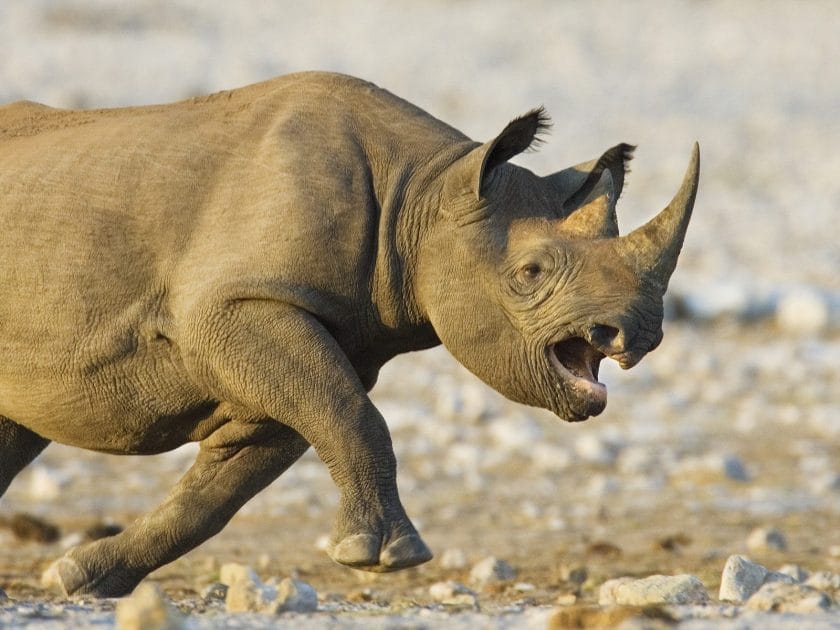
For the chance to see Cape buffalo and hippopotamus, you will need to travel to the northwest to the Caprivi Strip which reaches all the way to Victoria Falls .
The north is also on the edge of malaria territory, so while it is not likely, it is possible to be exposed to mosquitoes that may carry the disease. Take precautions by wearing dark-covered clothing (they prefer lighter colors) and using repellent while there.
Malaria-free safaris are an excellent option if you’re traveling with children if you’re elderly, if you’re pregnant, or in any way unable to take anti-malaria medication.
Sossusvlei may seem like a lifeless pan surrounded by the arid Namib Desert in the south of the Namib-Naukluft National Park in Namibia, however, the area is surrounded by red dunes that seemingly go on forever in every direction.
These dunes are among the most sought-after in Namibia for their height and shape, making them perfect for all kinds of activities that will bring out your adventurous spirit.
In addition, the scenery in nearby Deadvlei and Sesriem Canyon is a photographer’s dream, with brilliant colors and a silent window into a world that has been around since before antiquity – an amazing contrast to the ever-shifting sands that characterize the dunes.

From November to June malaria is prevalent in north and east Namibia, so that may strike Etosha National Park from your itinerary.
However, you can still get a malaria-free safari fix by visiting a game reserve in the Waterberg region or at Okonjima (over 12s only), where the AfriCat Foundation rehabilitates cheetahs and leopards.
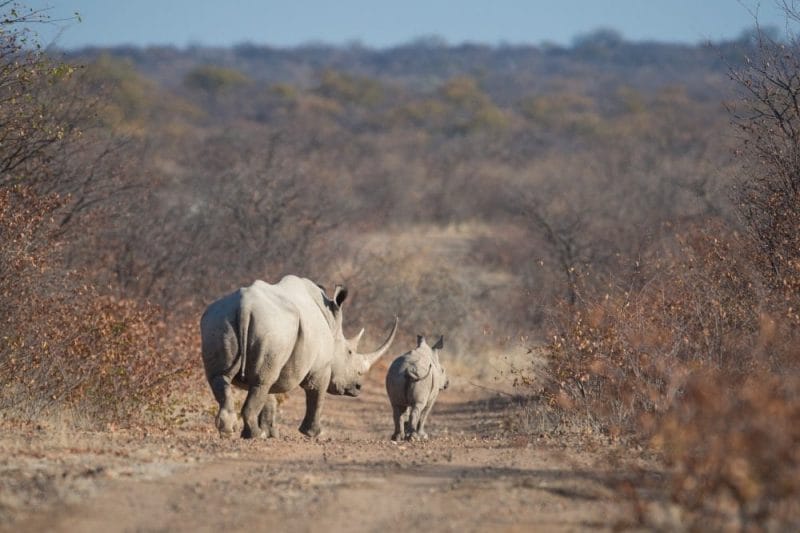
Having said that, during the dry months of July to September, there’s no risk of malaria in Namibia’s flagship National Park.
The dry months are the best time to go to Etosha anyway, as this is when the park’s water sources dry up and the animals congregate around waterholes, making it incredibly easy to spot them.
Just park off your car near a waterhole and wait for the zebras, springbok, giraffe, lions, elephants and rhino to arrive!
The ever-enchanting landscapes of Namibia has some of Africa’s most dramatic scenery and many great hikes as well as walking trails. However, walking safaris in Namibia offer a slightly different approach to the more traditional walking safaris of its African counterparts in that spotting prolific wildlife may not be as easy to come by because of the vastness of the country.
However, walks through the Etosha National Park are both awe-inspiring and humbling, as you tread along the very paths animals roam free on and observe their intimate lives from a careful distance, it is also one of the best ways to be guaranteed animal sightings. The slow pace of the walk and the interpretive skills of the armed guides open your eyes to a fascinating world.
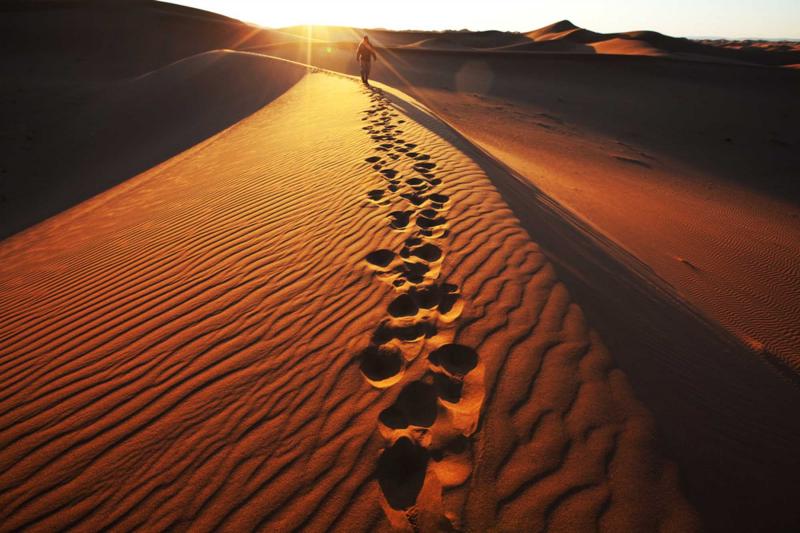
Walks tend to be led by experienced and trained guides who tailor the excursions to suit the preferences of guests, whether it’s to view a certain animal or plant species, to learn about the mannerisms of different wildlife species and their habitats or simply to enjoy the vast expanse of bush and the panoramic surroundings that sets Namibia apart.
Walkers will be instructed on the identification of various tracks, as well as on the smaller wildlife and plants that live in the park and that are often missed during a game drive.
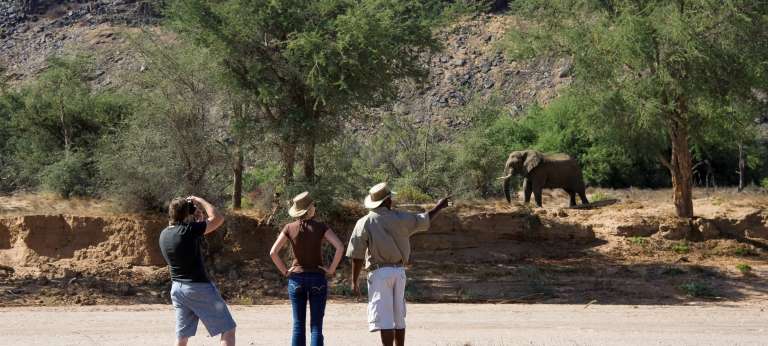
One of the best regions to walk in is Damaraland which has several really excellent camps and lodges to choose from . The scenery is astonishing, from granite boulders and euphorbia candelabra, to desert dwelling rhinos and elephants.
There have also been recent sightings of cheetahs and lions in this region too.
Who is Travelling to Namibia with you?
- A Couple Safari in Namibia
- Family Safari in Namibia
- Honeymoon in Namibia
- Solo Travel in Namibia
If you want to get off the beaten track and into the rugged wilderness for a romantic holiday, you can’t get much better than Namibia. Despite its harsh climate and rugged terrain, Namibia offers a unique and romantic setting for couples.
The stunning desert landscapes, intimate experiences such as watching the sunset from the top of a dune or waking up to a view of animals drinking at a waterhole, and luxurious safari lodges with private rooms tailored for honeymooners and couples, make it a perfect destination for a romantic getaway.
Additionally, many lodges offer special extras, such as the opportunity to sleep under the stars, that add to the overall experience.
Highlights on a couple safari in Namibia
Central Namibia is the top pick if you’d like to see Namibia’s most popular attractions without too much driving. Clamber up and down the dunes of Sossusvlei , and get your adrenaline pumping with adventure activities in Swakopmund (where you can also indulge in hearty German food and excellent beer in good restaurants).
There’s a good choice of luxury lodges near Sossusvlei , where you can stay in exclusive and intimate rooms or chalets with private decks surrounded by breath taking views of the desert.
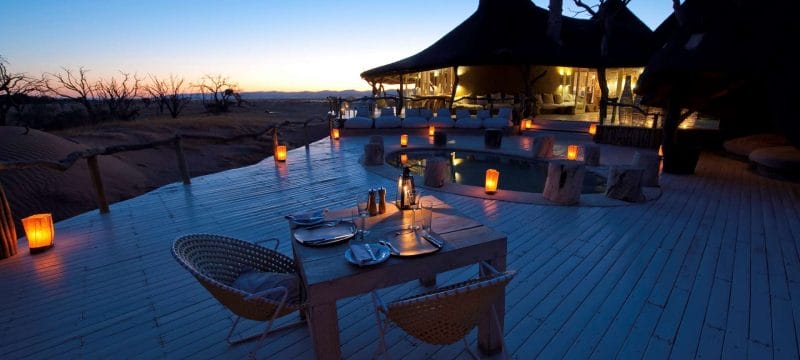
For wildlife, Etosha National Park in northern Namibia is unmissable, and staying in one of the five-star lodges or camps in and around the park means that after a day of game viewing you can relax in luxury: think showering outdoors while watching giraffes walk by, cocktails while you lounge on your deck overlooking animals grazing and gourmet dinners by candlelit under the stars.
If getting as far away from civilization as possible appeals to you for a romantic holiday, then opt for a stay in one of the luxury lodges tucked away in Namibia’s remotest corners – in the Skeleton Coast National Park and Damaraland, where you arrive by plane and get to explore some of the country’s most rugged and untouched wilderness areas with only a handful of other people for hundreds of miles around.
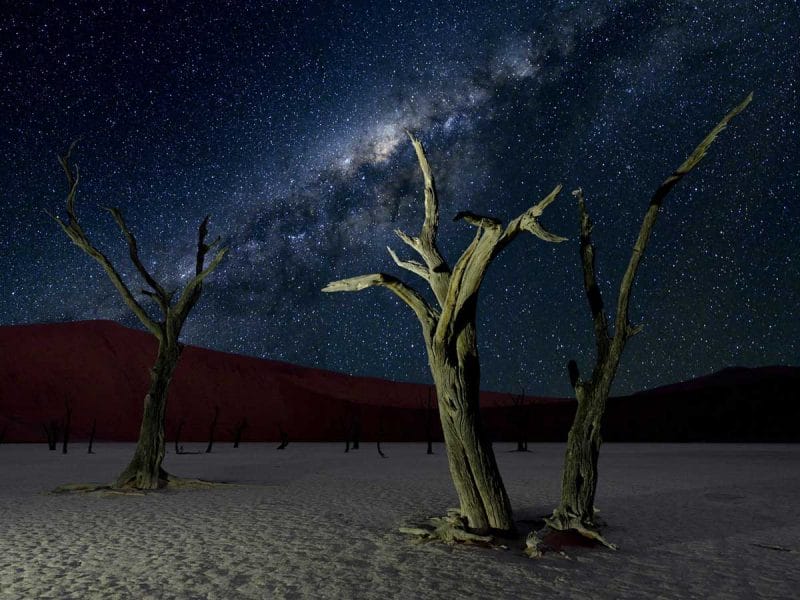
Watching the sunset from the top of a dune with no one else around, stargazing on the private deck of your luxury chalet, eating dinner by candlelight sitting above the cracked salt pan of Etosha National Park, game viewing from your bed and road-tripping on long, lonely desert roads.
Travel Tips for a couple safari in Namibia
Don’t underestimate the driving time between destinations in Namibia and cram your itinerary so that you spend more of your holiday in the car. Plan to spend at least a few days in each destination to really soak up what Namibia is all about: wild scenery, space and serenity.
A Namibian Safari is an incredible choice for a family safari holiday . It’s safe, easy to travel around on a self-guided journey, and offers a wealth of attractions and activities that will delight kids.
There are fun things to do with kids of all ages: nature walks, wildlife spotting, and sandboarding for young ones, multi-day hiking, sandboarding, quad biking, animal tracking, and skydiving for teenagers.
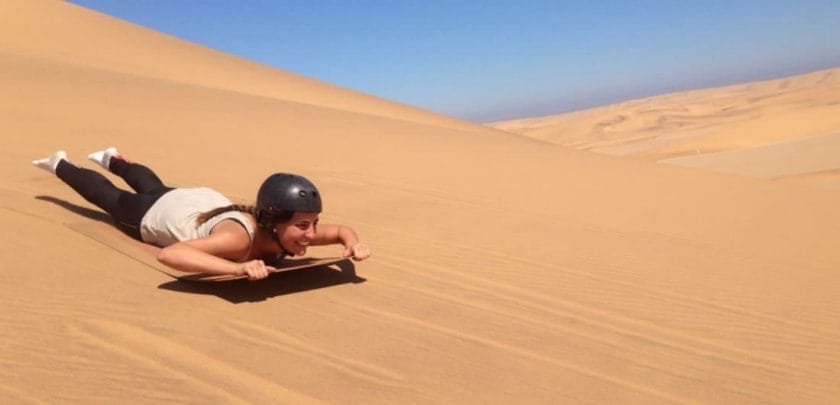
With Namibia’s wide range of lodging options , choosing places to stay for a family holiday in Namibia is easy. Pick from self-catering bungalows and cottages, well-equipped campsites, or luxury lodges (just be sure to check with lodges beforehand if they have a minimum age limit).
Highlights of a family Safari in Namibia
- Parking off at waterholes in Etosha National Park to watch herds of zebra, wildebeest, and giraffe congregate.
- Going on guided bush walks in the barren-looking Namib Desert and discovering a fascinating world of insects, birds, lizards, and adapted plants.
- Scrambling up the dunes near Sossusvlei and sliding back down or zooming down the dunes of Swakopmund on a sandboard.
- Sitting around a campfire under the twinkling stars of the Milky Way.
- Spending a day canoeing on the Orange River or kayaking among seals, turtles, and dolphins off the coast near Swakopmund.
Travel Tips for a Family Safari in Namibia
It’s a good idea to pick two or three destinations and spend longer at each one rather than trying to see all the highlights of Namibia at once.
Driving distances in Namibia are very long, and you won’t get the most out of your family safari in Namibia if most of it’s spent in the car with the kids getting restless in the backseat.
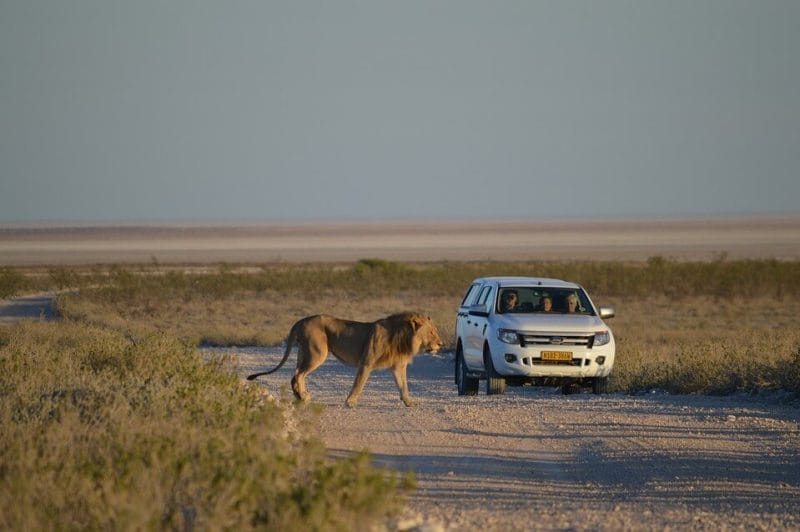
When you have to do a long drive, think about breaking your journey up with stopovers along the way, especially if you’re traveling with young children.
If you’re going to be exploring wildlife parks (which involves lots of driving around), plan to break up the game drives with snack breaks and picnics at designated areas.
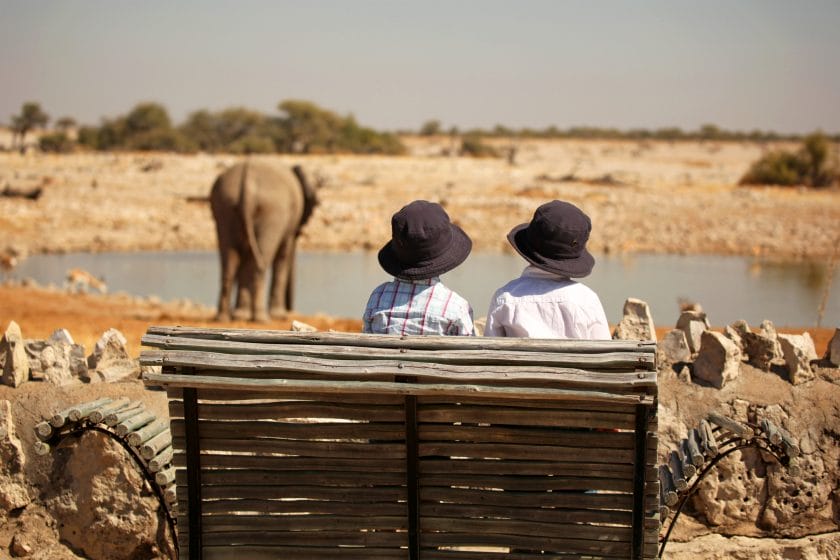
If you have young children, it may be best to avoid traveling to high-risk malaria areas. Traveling to Namibia in the cooler months from April to October is advisable, as the summer months can be unbearably hot.
Bear in mind that Namibia’s climate is harsh, and your kids will need to be able to cope with the elements. It’s extremely dry and dusty, it can be sweltering, and the sun is intense.
Be prepared with lots of sunscreen lotion, high SPF cream for lips, hats and clothes to protect from the sun, good sunglasses, and a big shade cloth if you’re camping.
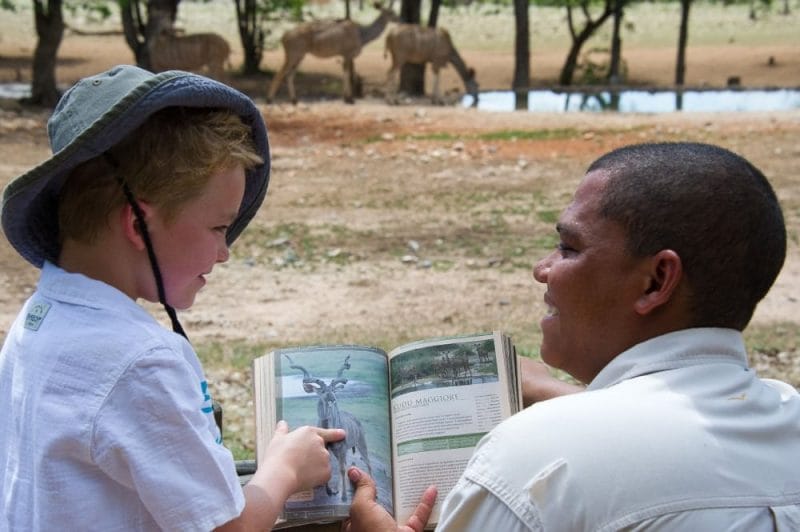
Take note of lodges’ policies regarding game drives with children. Many lodges have a minimum age limit for young children on a game drive vehicle, and some lodges won’t accept children under a certain age.
If you’re travelling over the border to Botswana or South Africa after your trip to Namibia, you must have unabridged birth certificates for your children.
Going on a honeymoon safari in Namibia means you can experience getting away from it all in remote campsites where you and your partner are the only people around for miles.
On your honeymoon safari, you can relax in five-star luxury in stylish, intimate Namibian lodges with rooms on the edges of dunes and water holes or built into the branches of trees.
Watching the sunset together over the desert from your private deck or sipping coffee in bed while zebras have a morning drink a few meters away are romantic moments that you can expect on a safari in Namibia.
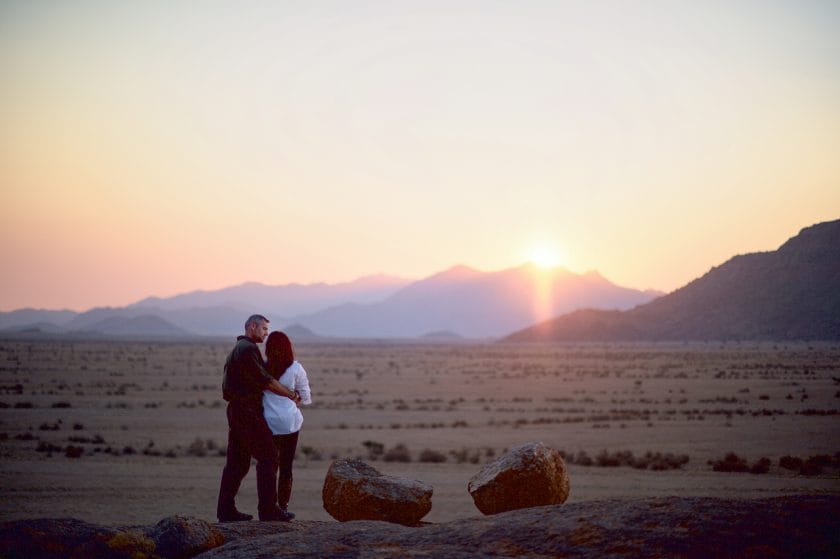
Whether you explore Sossusvlei , Etosha, Damaraland, or the Skeleton Coast, luxury lodges offer romance by the bucket load, with exclusive honeymoon cottages set apart from the main camp for maximum privacy, and special touches such as private picnics or dinners by candlelight.
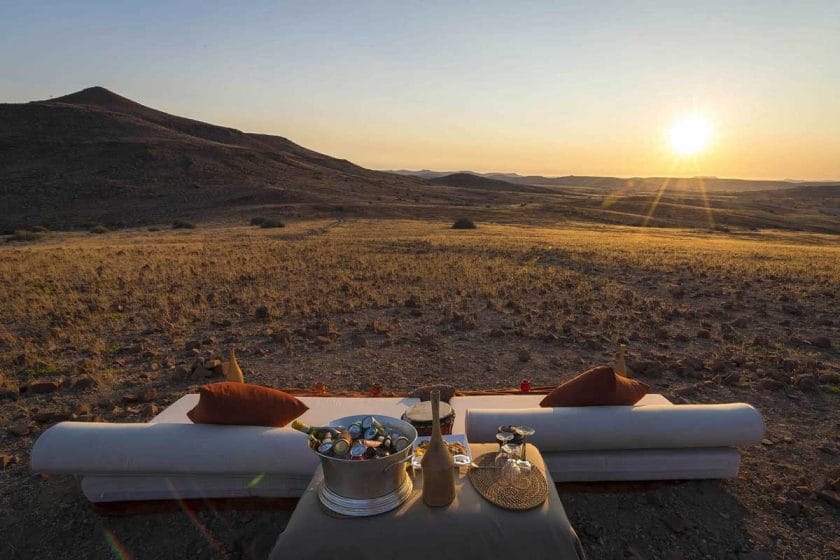
If you want to combine two of the most popular attractions of Namibia on a romantic holiday, stay in one of the luxury lodges inside Etosha National Park or just outside its gates.
Spend your days on game drives with guides, and then spend a while at one of the high-end lodges in the Sossusvlei area, where you can do several day trips.
If you like to be around other travelers, the best places to explore as a solo traveler are the most popular ones: Etosha National Park in the north, Sossusvlei in the center, and Swakopmund at the coast .
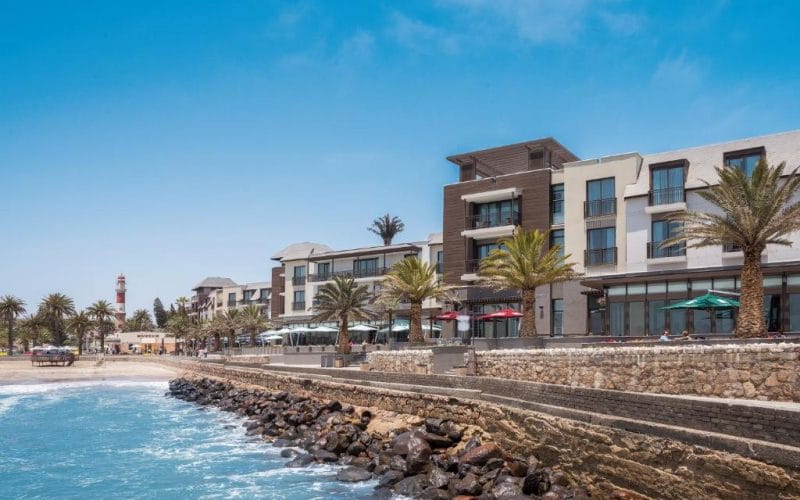
In each of these places, you’ll find camps and lodges where you can meet up with other travelers, and a host of activities where you can join up with other groups.
In northern Namibia, the Zambezi Region, which is popular with overlanders and backpackers, is another place where you’ll easily be able to meet up with other travelers.
You can look forward to seeing lions, elephants, and rhinos on guided game drives in Etosha National Park, and meeting new friends around the fire at a camp in the Zambezi Region.
Or go Skydiving, sandboarding, drinking beer with locals in Swakopmund, and soaking up the silence and timeless beauty of the desert atop a dune in the sands of Sossusvlei.
Travel Tips for a solo safari in Namibia
The only thing that you need to be aware of as a solo traveler in Namibia is long driving distances in remote areas. You’ll often drive for hours without coming across a gas station or town. Make sure that your lodge or hotel knows to expect you in case you have a breakdown.
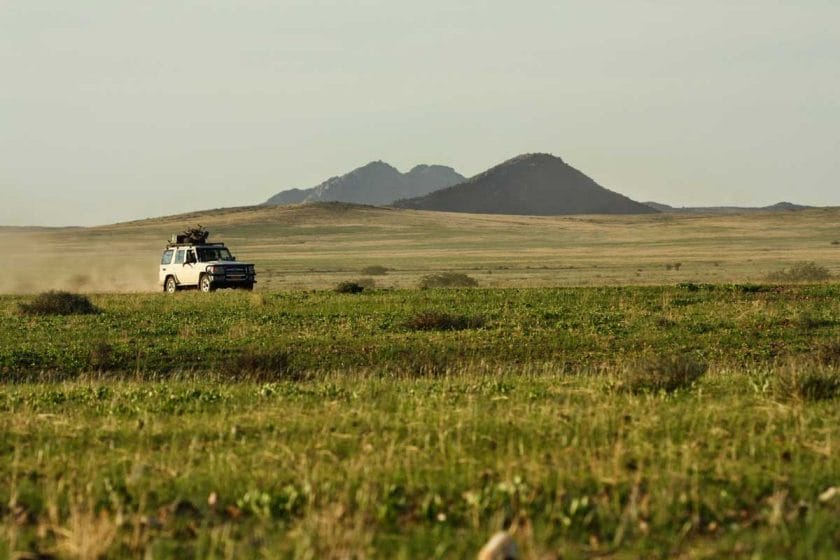
It’s also good to tell someone where you’re going if you head off from your lodge or camp on a day hike. If possible, join up with a guided hike or find someone to hike with, as it’s much safer to hike in a pair or a group in case of an emergency.
What You Need To Know
- Why go to Namibia?
- Why is Namibia Unique?
- Why do People Come Back to Namibia?
- Namibia vs Botswana
- Namibia vs South Africa
- Wildlife in Namibia
- Highlights of Namibia
- Safari Styles in Namibia
- Best Time to go to Namibia
- Travel Tips for Namibia
- Visas for Namibia
- Travelling to Namibia
- Travelling in Namibia
- Currency in Namibia
- Lodges in Namibia
- Food and Tipping in Namibia
- Namibian Culture
- Shopping in Namibia
- Languages in Namibia
- Medical Emergencies in Namibia
- Packing List for Namibia
- Vaccinations for Namibia
- Emergency Services in Namibia
- Namibia Health Care
- Health Insurance for Namibia
- Namibia Travel Costs
A blockbuster combination of sublime landscapes that will make you feel like you’re on another planet, some of the best wildlife viewing on the continent, a host of fascinating desert-adapted plants and animals, and jaw-dropping natural wonders make Namibia a country you’ll never forget.
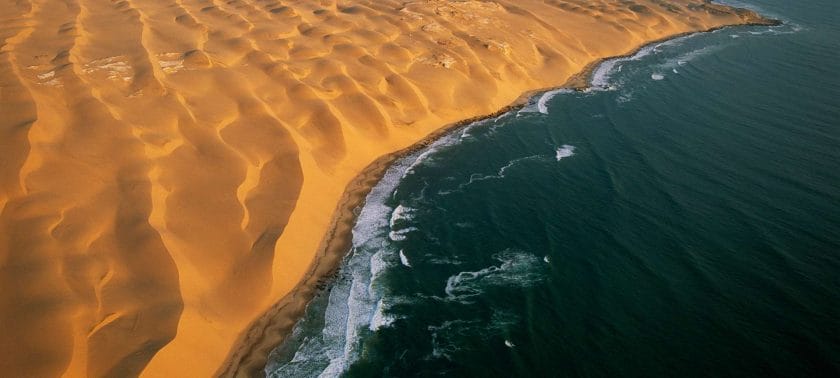
Namibia’s scenery and sights are as astonishing as they are varied. Ranging from the Namib desert, a vast and beautiful wilderness covering the country in sandy plains, dune seas, and savanna, to the dramatic Skeleton Coast, there’s endless beauty to be had.
Add to that the rugged granite mountains adorned with ancient rock art, the giant cracked salt pan of Etosha National Park , and the dizzying depth of the Fish River Canyon, and you’ve got a plethora of natural wonders to admire.
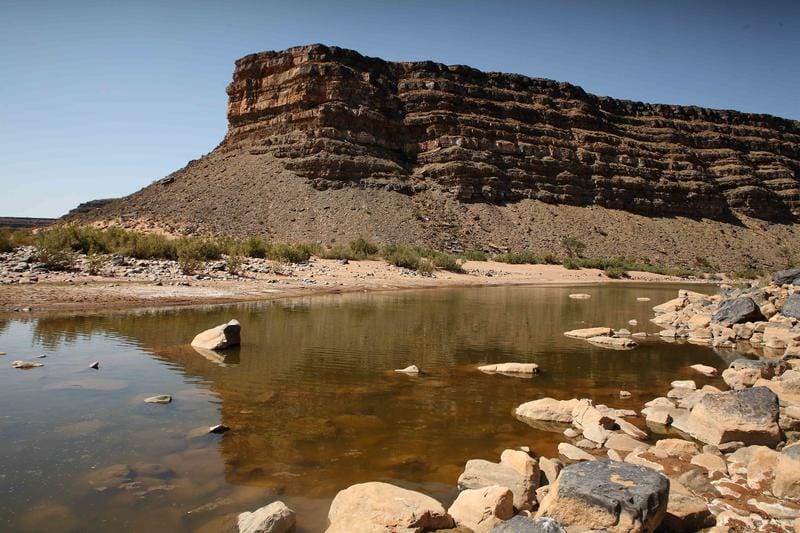
Adventure is always just around the corner in Namibia. Whether tackling a challenging 4×4 route in a remote area, hurtling down a dune on a sandboard, or skydiving above the desert, there are countless ways to experience the country with some adrenalin-filled fun.
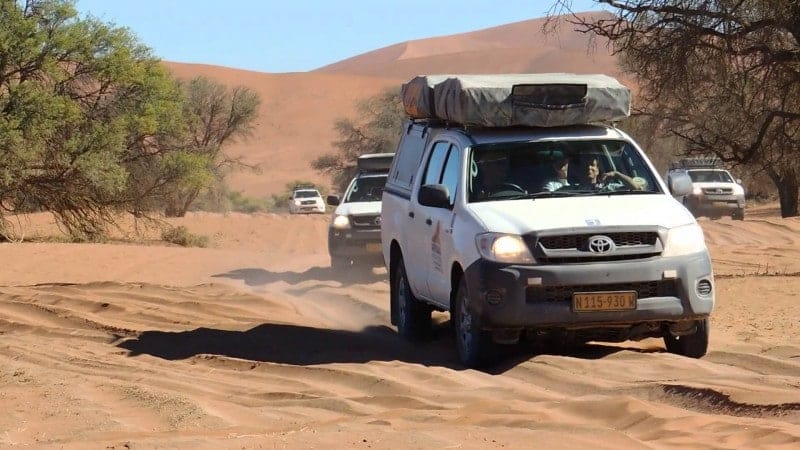
The network of well-maintained roads, excellent tourism infrastructure, and a wide range of lodging options means that Namibia is one of the safest and easiest countries in southern Africa for self-guided traveling and a strong contender for the world’s best road-tripping destination.
A safari in Namibia offers space, silence, and the chance to get away from it all. It’s the second least-densely populated country on the planet, with only two people per square kilometer.
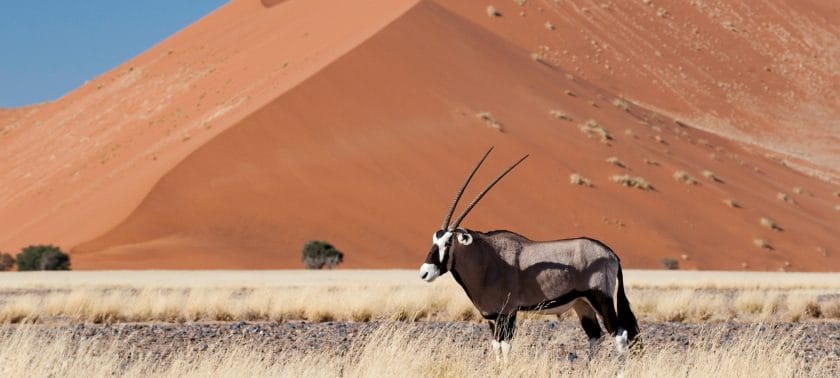
You can drive for hours under huge blue skies surrounded by landscapes so vast and empty that, at times, you feel like you’re on the edge of the planet. In an overpopulated world, there aren’t many places left where you can immerse yourself as deeply in remote wilderness areas as in Namibia.
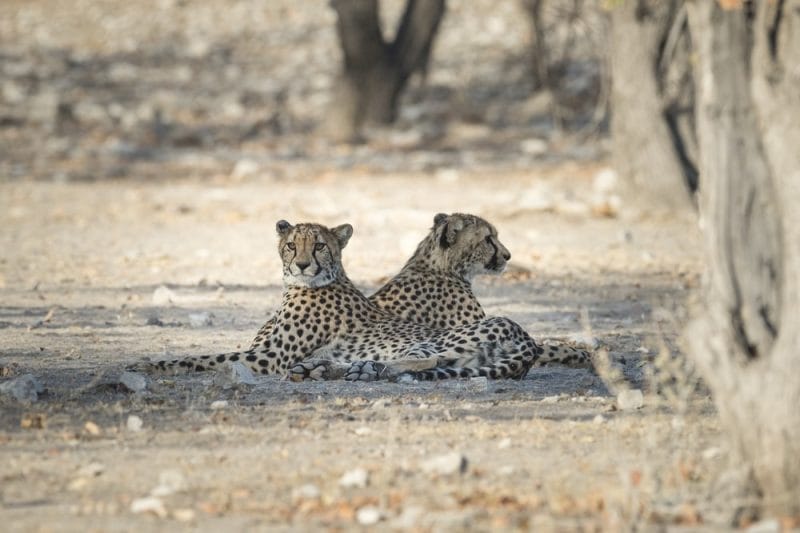
The driest country in Africa south of the Sahara, Namibia is covered in a large swathe of desert, giving rise to an array of unique plants and animals adapted to the harsh climate, such as the Welwitschia (which can live for more than 1000 years) and the famous desert elephants, which are only found in one other place on the continent.
In terms of big game safaris , Namibia has several parks and reserves, but its stand out is Etosha National Park , where during the winter months, the ease of spotting wildlife is nearly unrivaled. Other notable wildlife highlights in Namibia include tracking black rhinos and cheetahs on foot.
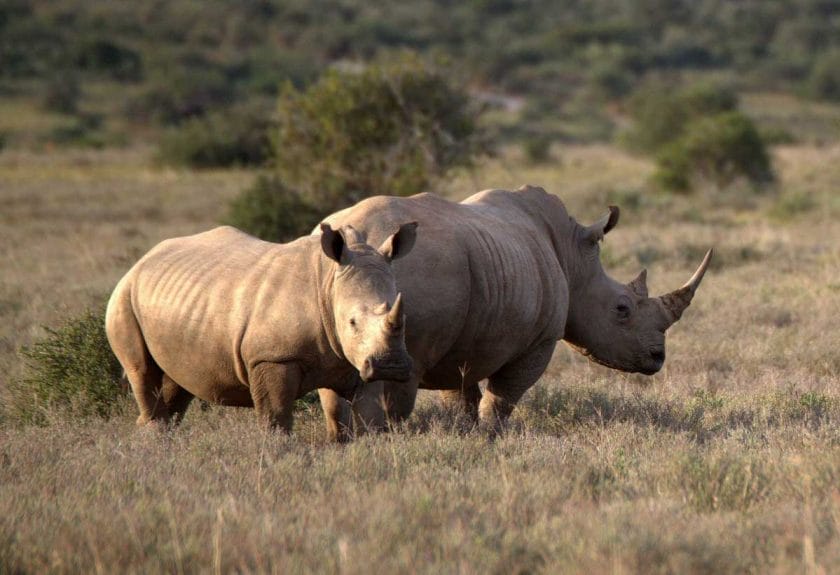
Namibia’s extreme landscapes are a big part of why the country is so unique. From the sand seas of the Namib, where you’ll find the tallest dunes in the world, to the awe-inspiring Fish River Canyon, Namibia is home to some of Africa’s most spectacular natural sights.
A safari tour in Namibia draws people back with its otherworldly landscapes, endless space, magnificent desert, superb wildlife spotting, memorable animal experiences (such as tracking free-roaming black rhino on foot), and unique desert-adapted animals and plants.
There’s also so much to see and do on a Namibian safari that you couldn’t even begin to do the country justice on one trip. On a first visit, many travelers explore Namibia’s best-known attractions, and then, on return trips, they head into more remote regions for off-the-beaten-track adventures.
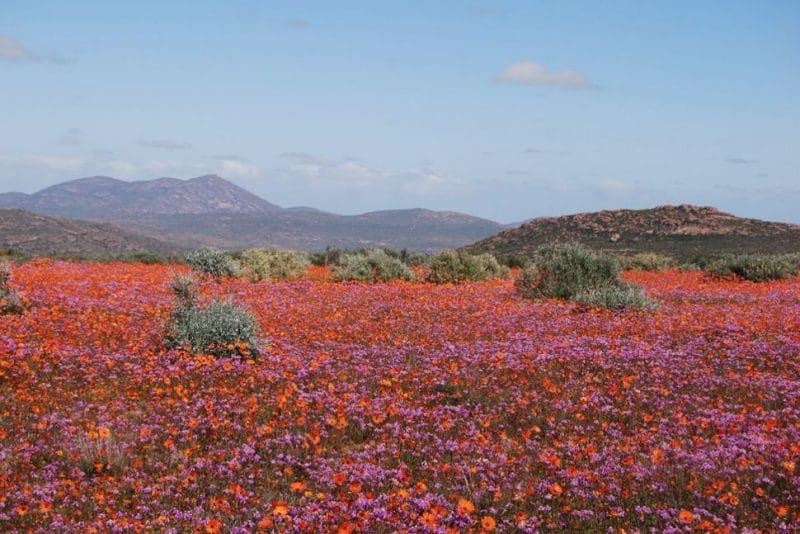
Namibia also has changing attractions that bring travelers back in different seasons. Expect superb game viewing in the dry winter, bird-watching safaris in the rainy summer months, spring flowers in |Ai-|Ais/Richtersveld Transfrontier Park in August and September, and migratory whale sightings along the coast in October and November.
Botswana is known for its superb luxury camps and its policy of low-impact tourism. The country limits the number of people staying in conservation areas, so a Botswana safari tour tends to be relatively expensive.
On the other hand, a safari tour in Namibia is more tourist-friendly and, with its well-maintained roads, is far easier to visit on a self-driving trip. Many of Namibia’s most famous attractions can be explored in a 2WD vehicle.
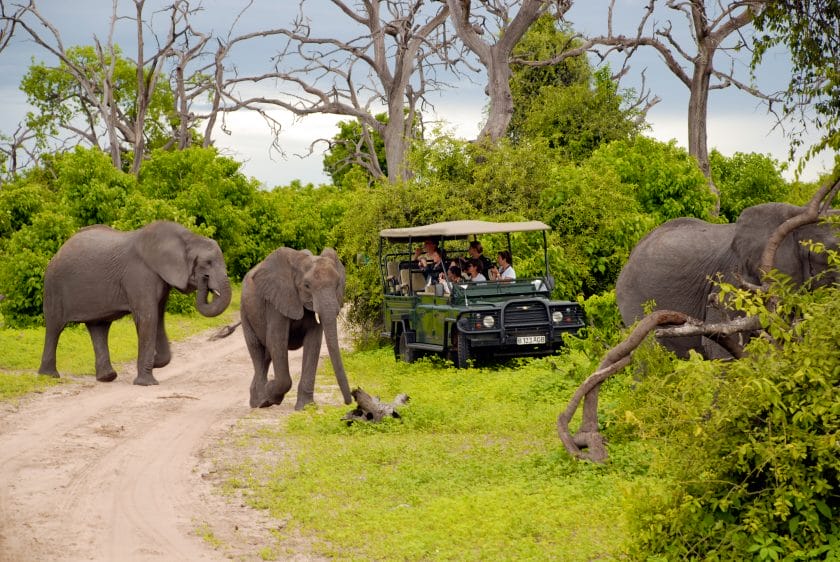
The huge variety of places to stay in Namibia, from excellent campsites to five-star lodges, appeals to a broader range of travelers. At the same time, Botswana caters largely to the high-end market.
Of the two countries, Namibia has a broader diversity of more stunning landscapes, from a deep canyon in the south to rugged mountains in the north, the cracked salt pans of Etosha, the towering dunes of Sossusvlei, and the dramatic Skeleton Coast .
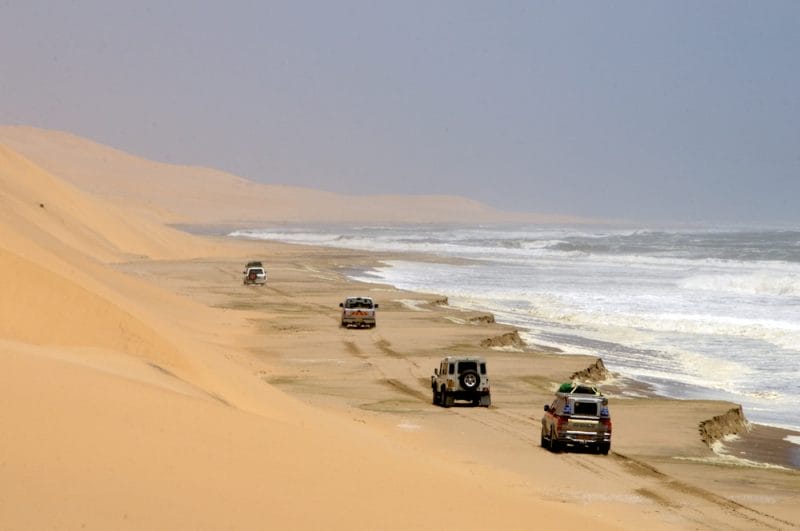
In terms of wildlife, Botswana has Africa’s largest elephant herds and vast numbers of buffalo, lions, and leopards, which makes for rewarding game viewing in its excellent parks.
However, the game viewing in Namibia’s Etosha National Park during the dry winter months, when animals congregate around waterholes, is hard to beat.
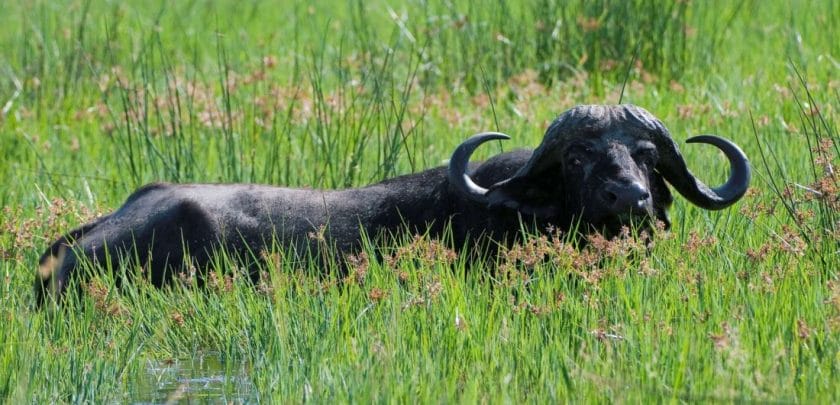
Even if you’re a first-time Namibia safari goer driving yourself around Etosha, you’ll be able to enjoy spectacular sightings of hundreds of animals at once if you park next to waterholes.
Namibia also scores for its unique desert-adapted animals, its free-ranging population of black rhinos (the last in the world) and desert elephants, and the largest population of cheetahs in Africa.
In terms of city culture, landscapes, flora, and fauna, South African safaris have much more diversity than a Namibian Safari.
South Africa also has excellent game parks where Big Five viewing is easy, as well as forests and mountains, a beautiful coastline with superb beaches, and culturally rich cities home to award-winning restaurants, fantastic shopping, art, museums, and nightlife.

Many travelers choose South African holidays for the ease of combining a safari tour with beach time , cuisine, and culture in cities.
Namibia can’t compete in terms of beaches or cities, but what it does have that South Africa doesn’t is dramatic desert scenery, vast open spaces, extremely wild rugged landscapes, and a lot more chances to get far off the beaten track and escape the crowds.
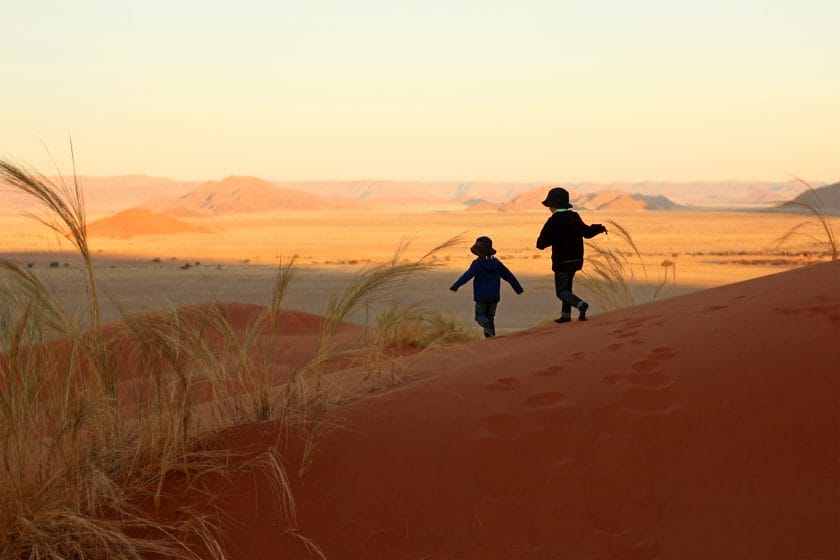
Having a real off-grid adventure in Namibia is also more accessible than in South Africa, with Namibia’s massive choice of 4×4 routes that take you into the country’s most remote corners.
In the busy season, the popular hotspots in South Africa can be bustling, while in Namibia, even during the peak months, the only place where you’ll see a lot of other travelers is Etosha.
In the north, Etosha National Park is Namibia’s unmissable wildlife destination. During the dry season, when water is scarce, the park’s animals gather around waterholes making game viewing as easy as parking your car in the right spot.
Along with herds of springbok, zebra, and blue wildebeest, you’ll see plenty of elephants and lions and, if you’re lucky, cheetahs.
You’ll also see desert animals such as oryx, meerkat, ostrich, and bat-eared foxes.

The park is the best place in Africa to spot black rhinos, while black-faced impala and Damara dik-dik are two other remarkable species. They’re only found in one other place – across the border in Angola.
Wildlife surrounding Etosha National Park
To the south of Etosha, Waterberg Plateau Park is home to some rare species, such as sable and roan antelope and black and white rhino, and Namibia’s only breeding colony of Cape Vultures.
Wildlife in Damaraland
Among the rugged mountains of Damaraland, in Namibia’s northwest, are free-roaming populations of desert elephants (which are incredibly rare – the only other place in the world you’ll find them is Mali) and desert-adapted black rhinos and lions.
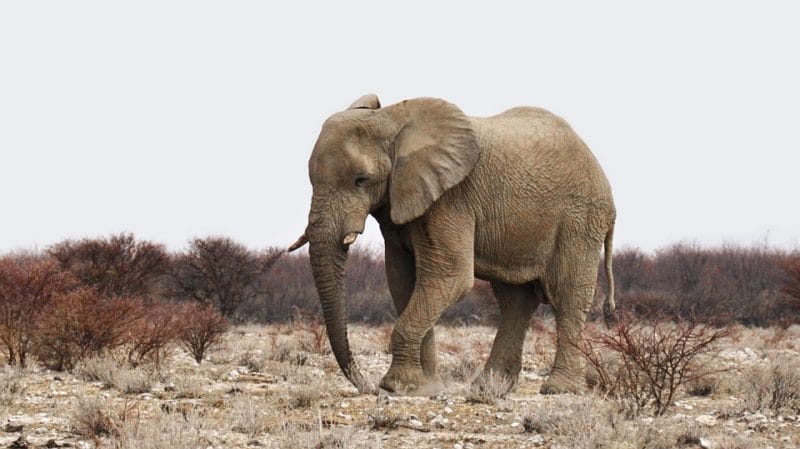
Namibia’s most rewarding wildlife experiences include tracking black rhinos and elephants against spectacular desert backdrops.
Wildlife in the Zambezi Region of Namibia
In far north-eastern Namibia, the Zambezi Region (formerly known as the Caprivi Strip) offers a different wildlife experience to the rest of the country, thanks to its heavy summer rainfall, rivers, and water sources.

This is where you can see hippos and crocodiles, and it’s one of the only places in the country where buffalo occur. A highlight of the Zambezi Region is water-based wildlife viewing from boats or a mokoro (traditional dug-out canoe).
Wildlife on the Skeleton Coast of Namibia
Stretching along Namibia’s northern coastline, the Skeleton Coast National Park has one of the world’s largest breeding colonies of Cape fur seals at the Cape Cross Seal Reserve.
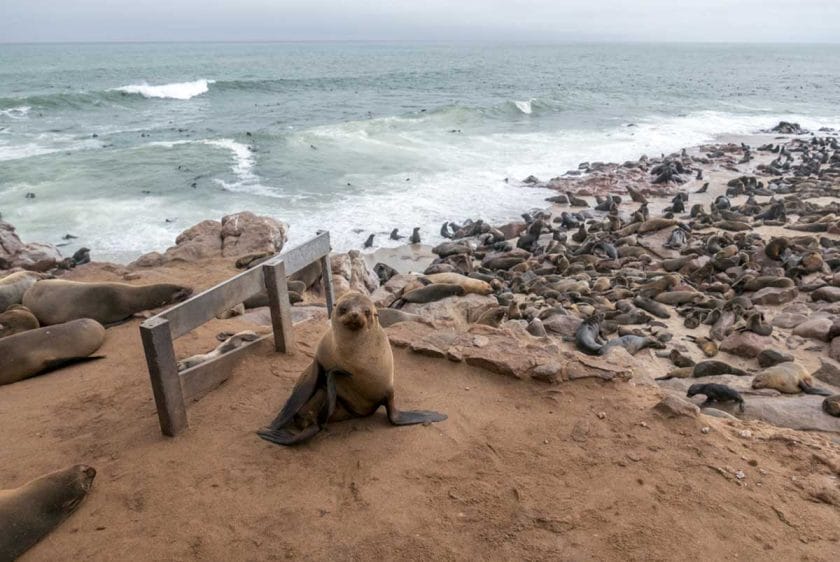
There are around 100,000 seals here year-round, and if you visit the reserve in November and December, you’ll see their tiny pups – and perhaps a stalking jackal.
Wildlife in Central Namibia
In central Namibia, there’s marine wildlife to see from a boat and kayaking trips from Walvis Bay to spot seals, whales, and dolphins.
Central Namibia also has two places to take part in animal tracking. Search for cheetahs and leopards at Okonjima Nature Reserve near Otjiwarongo and track rare and extremely elusive pangolins at Erindi Private Game Reserve .
Wildlife in Southern Namibia
Southern Namibia isn’t a prime big-game region. However, if you want to see the animals of the Namib Desert (oryx, springbok, kudu, zebra, giraffe, hartebeest, leopard, hyena, jackal, and fox), the NamibRand Nature Reserve , a vast conservation area with spectacular scenery and a low density of visitors, is your best bet.

An unusual wildlife highlight of southern Namibia is the herd of around 150 wild horses that roam freely in the desert between Aus and Lüderitz – the world’s only desert-dwelling wild horses.
For a first-time trip to Namibia, most travelers combine a rewarding mix of wildlife viewing and landscape exploration on a route that takes in the superb game on the salt pan of Etosha National Park, the adventure activities of the Germanic town of Swakopmund , and the towering dunes of the Namib-Naukluft National Park at Sossusvlei.
If you’re on a longer holiday, Namibia’s southern region has plenty of gems to discover, from the geological monument of Fish River Canyon and the desolate Mars-like landscapes of the |Ai|Ais/Richtersveld Transfrontier Park to the eerie ghost town of Kolmanskop, the German colonial architecture of Lüderitz and fantastic canoeing through the desert on the Orange River.
Travelers seeking more adventure generally head to northern Namibia for rugged wilderness and off-grid journeying.
You’ll need a 4×4 hire and self-sufficiency to explore the desolate Skeleton Coast, mountainous Damaraland, and the Himba villages of the remote Kaokoveld on your safari holiday in Namibia.
Namibia’s safari experiences are all about taking in the spectacular landscapes of desert, mountains, and coastline, running the gamut from the sedate to the extreme, and everything in between.
For many travelers to Namibia, wildlife viewing will be at the top of their list of experiences. Spotting Etosha’s abundant wildlife by driving yourself around the park or going on guided game drives is an unmissable highlight of any holiday to Namibia.
You can also enjoy more active animal experiences, including horseback wildlife viewing in various reserves, camel rides in Swakopmund and tracking desert rhinos on foot in Damaraland.
Namibia’s safari adventures and outdoor activities are endless and cater to all fitness and experience levels.
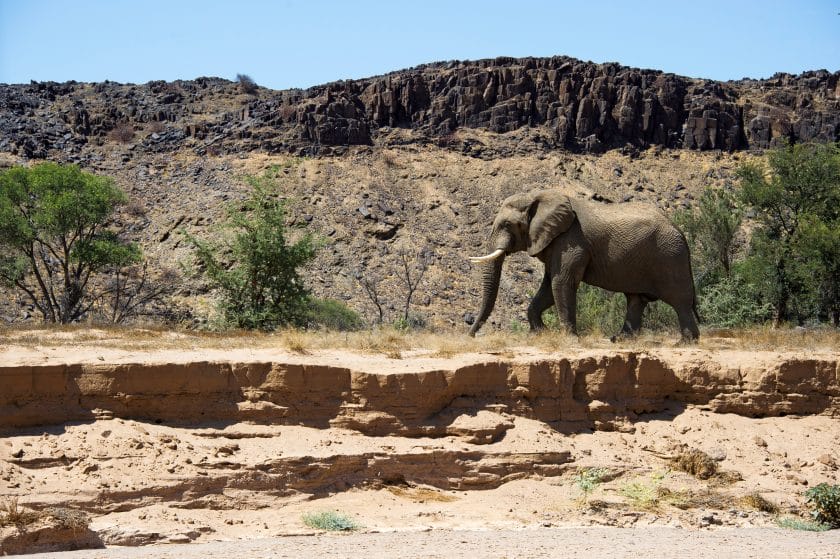
From short, gentle walks in the desert to multi-day strenuous hikes, bouldering to serious mountain climbing and easy mountain biking routes to tough long cycles through rugged desert terrain, there’s literally something for everyone.
Then there’s family-friendly ocean kayaking, gentle canoeing on the Orange River, quad biking in the desert, sandboarding down massive dunes, and the ultimate adrenaline-pumping fun of skydiving.
For experienced drivers, Namibia offers memorable 4×4 adventures that range from routes of just a few hours to days-long journeys into the country’s most remote and wildest corners.
Namibia generally has a dry climate, and you can visit the country year-round. However, deciding on the ideal month to travel to Namibia really depends on which regions and attractions you’ll be traveling to and what your interests are.
In general, the dry winter season from May to September is the most popular time for travelers to visit Namibia.
Malaria risk is lowest, daytime temperatures aren’t too hot (though nights between June and August are freezing), and, in parks such as the iconic Etosha National Park .
The combination of sparse foliage and the lack of rain forces animals to congregate around waterholes, which makes wildlife spotting particularly easy.
November to March are the hottest months in Namibia, and temperatures in some regions can reach above 50°C (122°F) during the day.
These months are also the rainy season, although many areas in Namibia receive little or no rain at all. During the wetter months, some tracks in the northeastern part of the country can become unsurpassable.
These are the hardest months for spotting wildlife in parks such as Etosha and carry the highest malaria risk.
Namibia is one of the easiest and safest African countries to travel in. Still, due to the huge distances between destinations and remote locations, a successful trip usually requires some advance planning and research.
In terms of communication, many hotels don’t offer WiFi, and cell phone coverage can be sparse in remote areas.
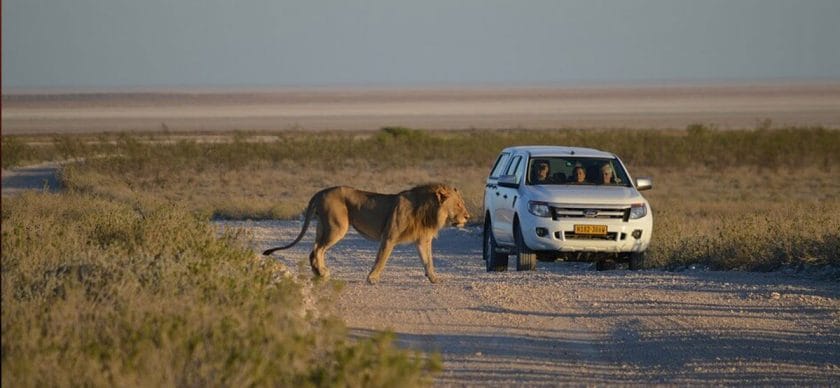
In the peak season from July to October and over the Christmas holidays, lodging and campsites in Namibia get booked up well in advance, especially in the most popular parks.
Make sure you place your reservations well before your trip if you’re traveling to Namibia for holiday during these months.
Etosha National Park and Sossusvlei are busy year-round, so it’s a good idea to book your camp or safari lodge in advance, even if you’re not traveling during the busiest months.

Distances in Namibia are significant, and it’s vital that you do some research before plotting out a self-driving itinerary so that you’re not spending the entire time in the car driving from one spot to the next.
It’s a good idea to spend a few days in each place rather than packing too many places into your trip so that you have time to soak up the serenity of Namibia’s beautiful landscapes.
Namibia has visa exemption agreements with the USA and many European countries, so if the exemption covers your country, then you can travel visa-free to the country for up to three months. Everyone entering Namibia needs a passport with six months of validity from the date of entry to the country and one blank page.
If you’re flying to Namibia from the US, it’s easiest to travel to Johannesburg in South Africa and catch a two-hour connecting flight to Windhoek in Namibia.
Travelers from Europe have the option of direct flights to Windhoek from Frankfurt on Air Namibia or from Cologne-Bonn on Eurowings or from Amsterdam on KLM, or connecting flights via Johannesburg from London on British Airways or South African Airways. Qatar Airways flies to Windhoek from several European cities via Doha.
If you’re traveling by car in South Africa or Botswana before your trip to Namibia, it’s easy to cross the Namibian border with your hired car. Just let the rental car company know beforehand so that they can provide you with the paperwork you’ll need to bring your car across the border.
Namibia is a vast country without many public transport options, so hiring a car is the best way of getting around. Namibia’s tarred and gravel roads are in good condition and are well maintained, making it easy to do a self-drive holiday.
It’s a good idea to have both a GPS (or offline map on your smartphone) and a paper map for navigating.
You don’t need to hire a 4×4 to drive around Namibia – 2WD vehicles can drive on the gravel roads – but it’s preferable to have a car with high ground clearance, especially for the ungraded dirt secondary roads.
If you’re traveling in Namibia’s more remote regions, such as the Skeleton Coast National Park, Kaokoveld, and Damaraland, you’ll need a 4×4. You’ll also need a 4×4 to explore Khaudum National Park, Nkasa Rupara National Park, and parts of Bwabwata National Park in the Zambezi Region.
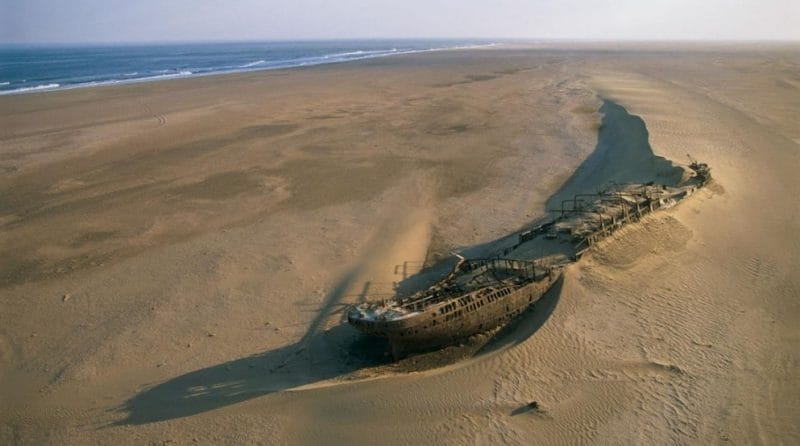
Some car rental companies offer vehicles fully kitted out for camping trips , with rooftop tents, freezers, gas cookers, camping chairs and tables, sleeping bags, jerry cans, and cooking sets.
Namibia has one of the world’s highest rates of road accidents, and it’s recommended to take out fully comprehensive insurance to cover you for any damage or accidents that may happen during your trip.
The currency in Namibia which is the Namibian Dollar is equivalent to the South African rand.
If you’re travelling to Namibia after spending time in South Africa, this South African currency, is accepted all over Namibia (although Namibian currency is not accepted in South Africa). You can draw currency in Namibia from ATMs using your international bank cards.
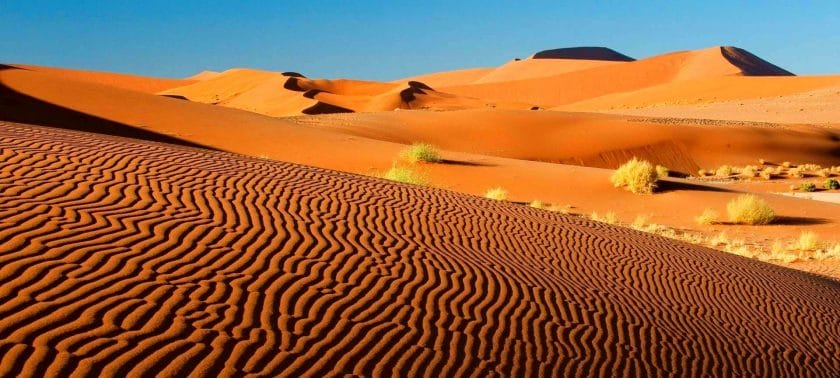
Many hotels, lodges and restaurants in towns will accept credit card payments, but you do need carry enough currency in Namibia with you to cover yourself for places that don’t accept cards.
You’ll also need cash for park entrance fees and tips. Few petrol stations will accept cards for payment of petrol, and while there are usually ATMs at bigger petrol stations, many small stations will not have an ATM, so have enough currency in Namibia for filling up with petrol in rural areas.
Euro, British Pounds, US Dollars and other major currencies may be traded locally or in advance of departure. In addition, exchange facilities are available in the various offices of change and banks in the major cities of ATMs. It is best to request bank notes in smaller denominations, as it can often be difficult to get a change from large notes, and smaller notes are handy for smaller transactions.
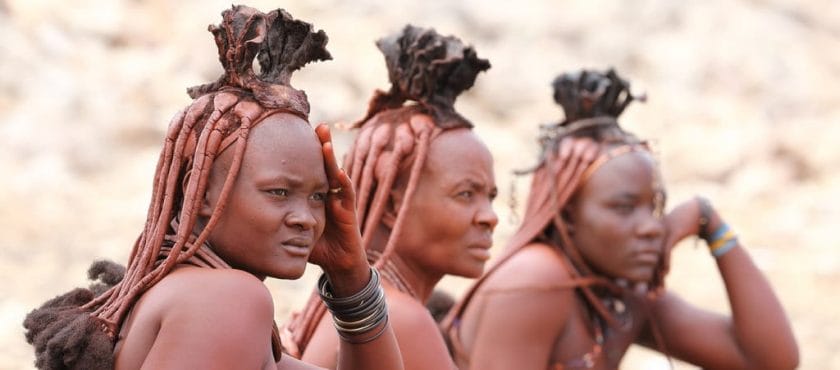
Traveller’s checks are not recommended as they are often difficult to exchange and incur high fees for currency in Namibian.
Please note that while South African Rand is used in Namibia, Namibian Currency is not legal tenders in South Africa, so make sure you have used or exchanged them before you leave Namibia.
Many lodges in Namibia offer activities, food, and drinks as part of your rate. It’s always a good idea to check exactly what is and isn’t included before your stay, so you don’t get any surprises on your bill when you check out.
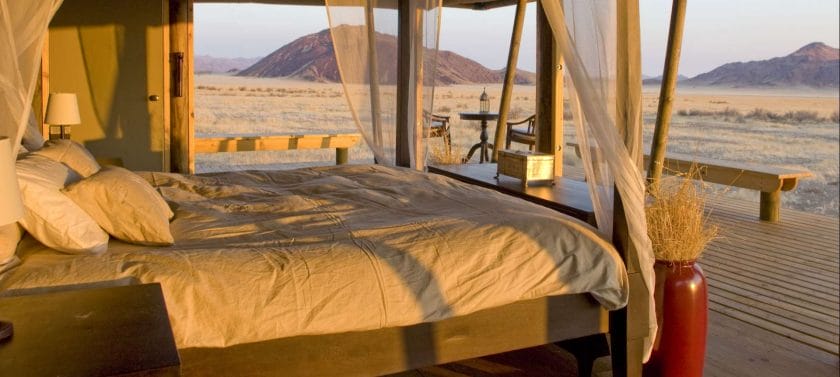
Lodges usually explain their tipping practice in the in-room booklet, but if you’re unsure, check with the management staff.
Meat – ostrich, chicken, beef, and free-range venison such as kudu, eland, and oryx – features heavily in Namibian cuisine and is cooked barbecue-style or in potjiekos, a one-pot stew.
Most tourist restaurants serve meaty international fare, so you’ll have to look out for restaurants that offer Namibian eats such as oshifima (a millet and maize meal porridge served with stew), dried fish, oshingali (bean soup), and spicy mopane worms.
You can taste Namibia’s German influence in dishes such as eisbein (pork knuckle), pork schnitzel, and delicious cakes and pastries such as apfelstrudel and black forest cake.
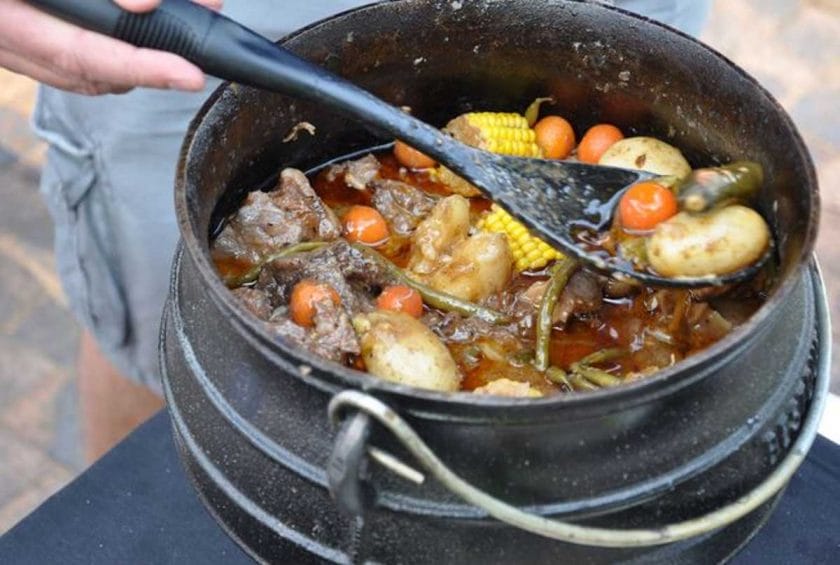
Local specialties to look out for are fresh oysters in Lüderitz on the coast and Kalahari truffles from eastern Namibia, delicious rare delicacies which are in season in April and May.
Namibian beer, brewed in accordance with the Bavarian purity law, is excellent. Two favourite local brands are Windhoek and Tafel, and you can also find German beers in bars and restaurants around the country.
There are few Namibian wineries, so if you’re not drinking beer, you’re most likely going to be sipping South African sauvignon blancs and pinotages.
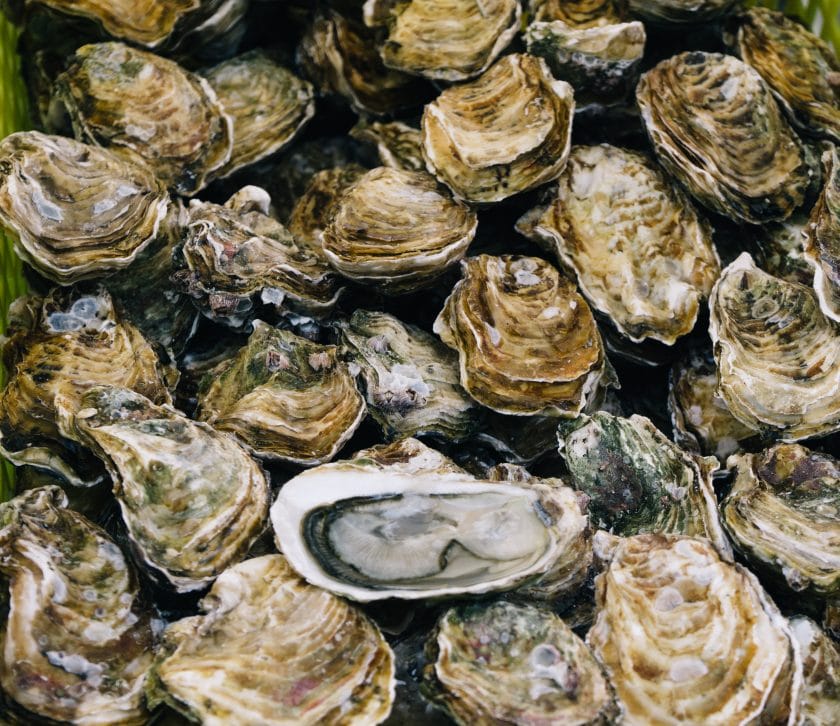
It’s standard to leave a 10% to 15% tip in restaurants. If you park your car in Windhoek, there may be a car guard who offers to watch over it while you’re gone. It’s usual to tip them a few Namibian dollars when you return to your car. People usually tip petrol attendants around N$5 for fuelling.
Most lodges will suggest tipping amounts for guides, trackers, and housekeeping staff which is usually an amount per day. Some lodges ask for you to put your tip in an envelope and hand it to the manager or guide; some have tip boxes at reception.
It’s customary to leave a tip at the end of your stay (it’s not necessary to tip at the end of each day or activity), especially for guides and trackers.
The San Bushmen are descendants of Africa’s Stone Age tribes and are considered Namibia’s oldest inhabitants. Confined in the desert and semi-desert regions of Namibia, their survival skills in such a harsh climate are renowned worldwide.
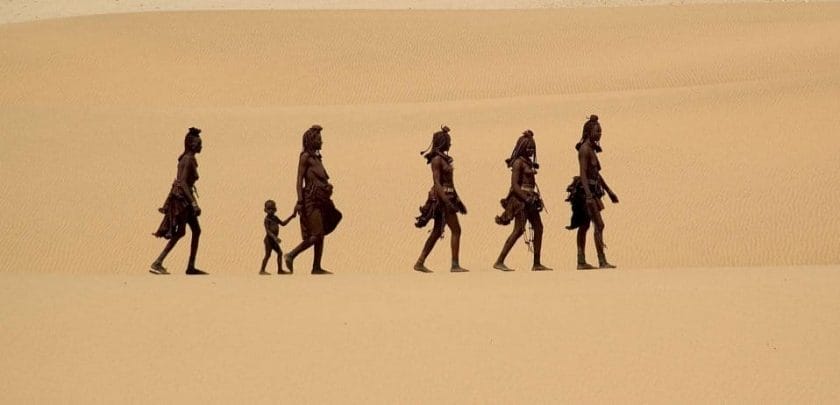
Bantu-speaking populations include the Himba, Ovamba, and Herero people, who are also highly adept at living in the stark landscape of Namibia.
Namibia’s capital city Windhoek has shopping malls and craft markets (the Namibia Crafts Center is a highlight) where you can buy any clothing items or travel gear you may have forgotten to pack, as well as souvenirs such as baskets, pottery, carvings, art and jewelry and leather goods, to take home.
Swakopmund also has a number of souvenir and jewelry shops and art galleries. Traveling around Namibia, you’ll find craft markets and curio stalls in tourist areas, villages, along roadsides, and near the entrance gates to national parks such as Etosha.
On March 21, 1990, Namibia declared independence from South Africa. The indigenous peoples of the nation were the San, Nama, and Damara. Later, during the Bantu expansion, Bantu immigrants arrived in the region.
Since then, the Bantu people (known as the Ovambo) have become the majority of Namibia’s population, and their language, Oshiwambo, has become the country’s most commonly spoken language.
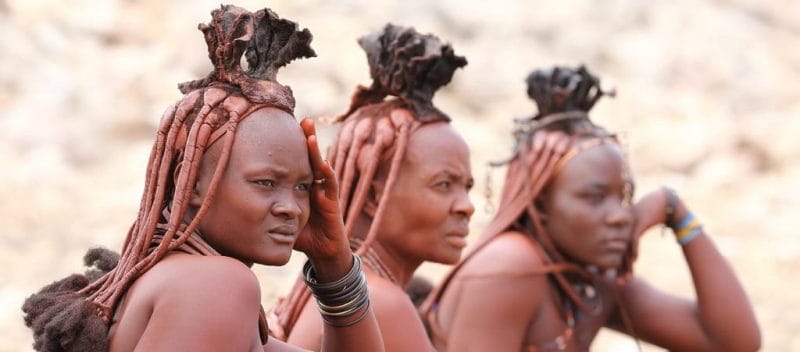
Namibia has a population of 2.1 million people and is sparsely populated due to the vast Namib Desert, which covers most of the region.
Despite its limited population, Namibia has a complex linguistic environment, with languages in ranging from the Indo-European, Khoisan, and Bantu families being spoken.
The three languages in Namibia, English, German, and Afrikaans, were designated as official languages in Namibia during the apartheid regime.
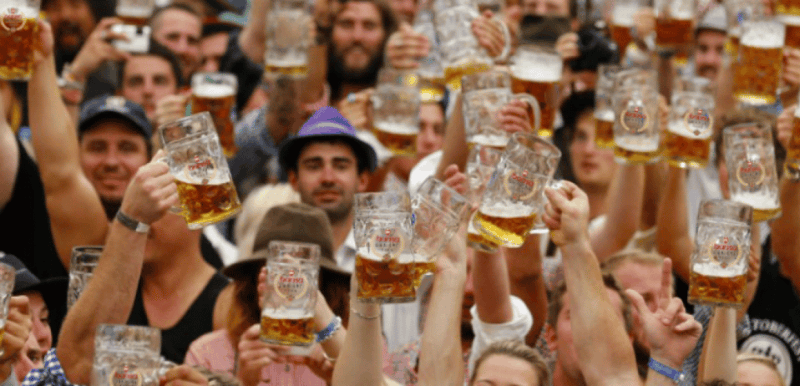
However, after Namibia achieved independence from South Africa, the country’s new government declared English to be the only official language in Namibia, as stated in the country’s constitution.
The language is now used in the country’s government administration and schools and universities as a medium of instruction.
Oshiwambo is spoken by the majority (48%) of Namibians, especially the Ovambo people who live in the region formerly known as Ovamboland.
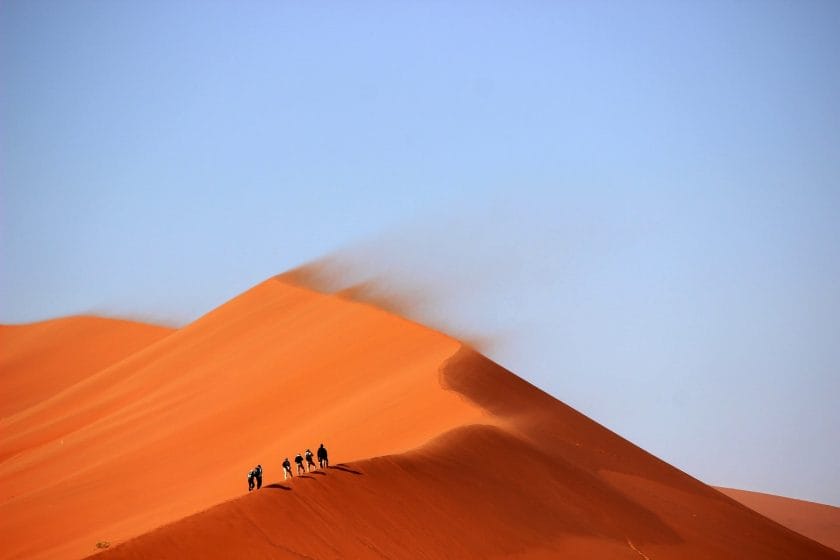
The Khoekhoe languages are Namibia’s second most widely spoken indigenous language, with approximately 11% of the population speaking it. About the same number of people speak Afrikaans. The Hereo and Kwangali languages are spoken by 10% of the Namibian population.
Other Bantu (Fwe, Kuhane, Yeyi, Tswana, Mbukushu) and Khoisan languages (Naro, Kung-Ekoka, Xó, Kxoe) are spoken by smaller percentages of the Namibian population.
Due to its dry climate, Namibia is generally a safe country regarding health issues. Windhoek has good medical facilities, although you will probably only spend a few days in the city and the rest of your trip in more remote areas.
Most of Namibia is rural and sparsely populated and big towns with hospitals are few and far between.
If you have a minor health problem, you’ll need to travel to the nearest clinic or hospital, which may be several hours away. For a serious medical emergency, you’ll need to be medically evacuated to Windhoek for treatment.
Private hospitals may insist on a cash or credit card payment before starting treatment, and it’s likely that you’ll need to pay upfront and then claim back from your travel insurance.
Namibia has an arid climate, so it’s easy to get dehydrated. Make sure to drink plenty of water (tap water is safe to drink in most places in Namibia).
The sun is particularly strong, so always wear high SPF sunscreen, a hat, and protective clothing, and avoid the midday rays.
Since many places you may end up visiting in Namibia are remote, it’s best to bring along any medication you might need.
It’s also a good idea to carry a comprehensive first aid kit that includes antibiotics, anti-inflammatory drugs, antidiarrheal medication, antibacterial ointment, antimalarial tablets, rehydration electrolyte sachets, insect spray and repellent, water purification tablets and bandages.
For driving and hiking navigation, it’s a good idea when you have WiFi to download offline maps of Namibia on your smartphone using the Google Maps and maps.me apps.
A yellow fever vaccination certificate is required for people visiting Namibia from countries with a risk of yellow fever transmission. It’s recommended that you get vaccinations for cholera, typhoid, tetanus, hepatitis A and B, and diphtheria. The rabies vaccination is recommended if you’re going to be staying in remote areas where you may not have medical access for an emergency vaccination, if you’re going for a particularly long trip, or if you’re going to have a higher risk of contact with animals and bats.
From November to June there is a high risk of malaria in the Ohangwena, Omaheke, Omusati, Oshana, Oshikoto and Otjozondjupa regions and a medium risk in northern Namibia, such as in Etosha National Park and the Zambezi Region. In all other areas there is a low to no risk of malaria throughout the year. It’s best to contact your doctor or travel clinic about malaria prophylactics before your trip. To prevent mosquito bites, use repellent on your skin and clothes, wear long trousers and shirts in the early morning and evenings and if possible, sleep under a mosquito net.
If you aren’t able to get to a nearby hospital, then call E-Med Rescue 24, a private emergency evacuation company that runs ground ambulances and aircraft. If you’re in a remote location they will be able to arrange transport for you to hospital.
Namibia has both public and private healthcare providers and mobile clinics in remote locations. There are big differences between public and private healthcare facilities: private hospitals and clinics are far more sophisticated and better staffed, while public facilities, which serve the majority of the population, are often understaffed and aren’t able to offer all healthcare services such as organ transplants and dialysis. Travellers are advised to only use private healthcare services for which you will usually need to pay yourself and afterwards claim back from your travel insurance.
It’s advisable to get full travel insurance that includes medical coverage for your Namibia vacation. Make sure that your medical insurance covers you for medical evacuation, as well as any adventure activities you may want to do, such as skydiving, hiking, mountain climbing, sand boarding and quad biking. It’s a good idea to get comprehensive insurance on your rental car too.
Prices for lodging in Namibia range from:
- N$140 (US $12) per person in a campsite
- N$200 (US $17) for a budget guesthouse
- N$700 (US $60) for a B&B room
- N$1000 (US $85) per person for a chalet in one of the camps in Etosha National Park
- N$1500 (US $128) per person in a mid-range safari lodge
- N$7000 (US $600) per person for a night in an all-inclusive luxury safari lodge
A meal for two people in a mid-range restaurant will cost around US $30. Entrance fees for some national parks are N$80 (US$6) per person per day, while other parks are N$40 (US$3).
The cost of activities varies greatly ranging from:
- N$85 (US $7) for a guided tour of Kolmanskop ghost town
- N$650 (US $55) for a half-day guided nature walk on the dunes near Swakopmund
- N$6500 (US$557) per person for a hot air balloon flight
- Why Namibia
Registered Members of these Organizations
USEFUL LINKS
- African Safaris
- African Safari Tours
- African Safari Lodges
- Why Book with us?
- Content Collaborations
- Safari Cost Estimator Tool
- Wildebeest Migration
- Privacy Policy
- Website Terms of Use
POPULAR COUNTRIES
- View All Countries
- South Africa Safaris
- Botswana Safaris
- Kenya Safaris
- Tanzania Safaris
- Namibia Safaris
- Rwanda Safaris
- Uganda Safaris
- Zambia Safaris
- Zimbabwe Safaris
POPULAR DESTINATIONS
- View All Destinations
- Cape Town Holidays
- Kruger Safaris
- Victoria Falls Safaris
- Masai Mara Safaris
- Serengeti Safaris
- Etosha Safaris
- Chobe Safaris
- Okavango Delta Safaris
TRAVEL BLOGS
- Virgin Atlantic and Kenya Airways improve connectivity to Kenya
- South Africa’s Mega Landscapes Plan: Conservation Boost or Nature Risk?
- Rwanda vs Uganda: Which is Better for Mountain Gorilla Trekking?
- Kruger’s New Gate to Grow Tourism + SA’s Top Parks to Visit in 2024
- East Africa’s Safari Experiences: A Photographer’s Paradise
DISCOVER AFRICA SAFARIS
2nd floor, Tygervalley Chambers One, 27 Willie van Schoor Avenue, Bellville, Cape Town , 7530

Namibia Safaris
Wildlife safaris in the living desert.
Welcome to the most unique wildlife destination on Earth. Along with our friends at AfriCat, Save the Rhino Trust, and Dr. Flip Stander, we have developed world-class safaris that support critical conservation efforts. Search for desert-adapted elephant, oryx, rhino, and lion, have a chance to assist with behind-the-scenes vet checks at AfriCat, and scale the world’s largest free-standing dunes of Sossusvlei! These adventures encapsulate the best of this top-tier safari destination.
All Trips to Namibia
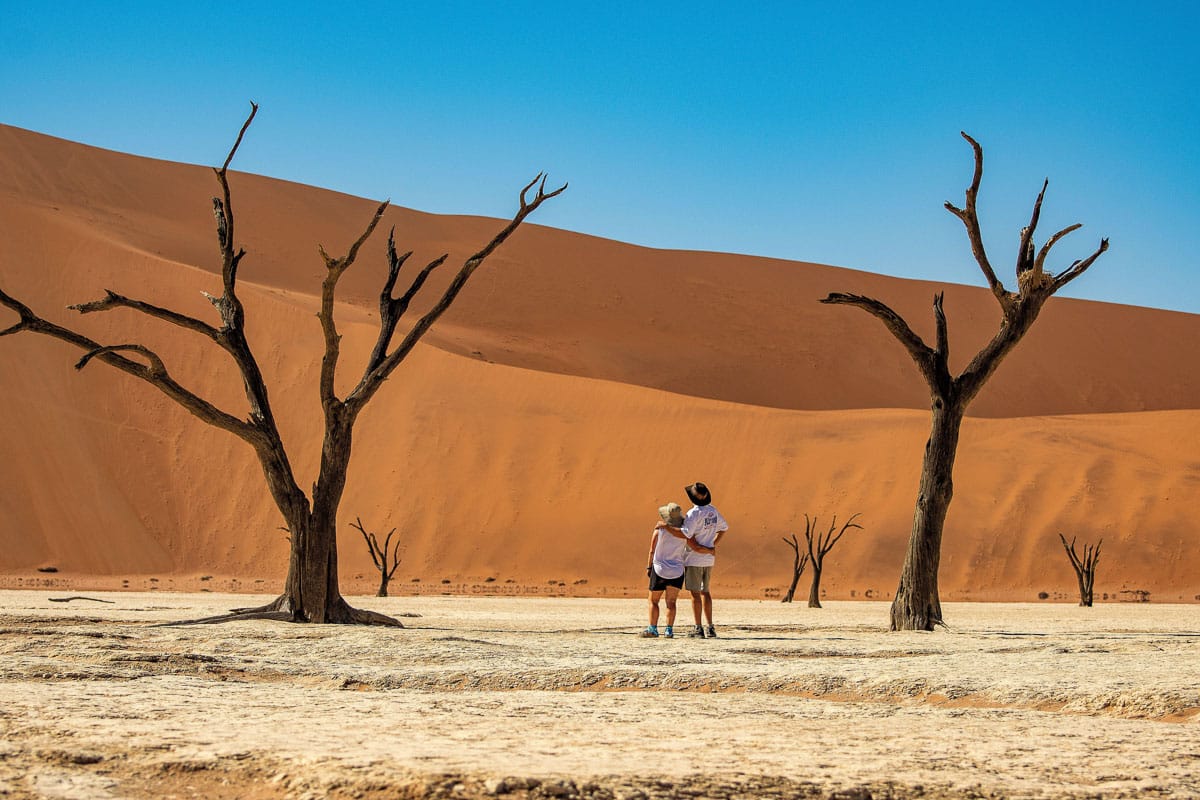
Small Group Adventure
Namibia Expedition
From $9,195
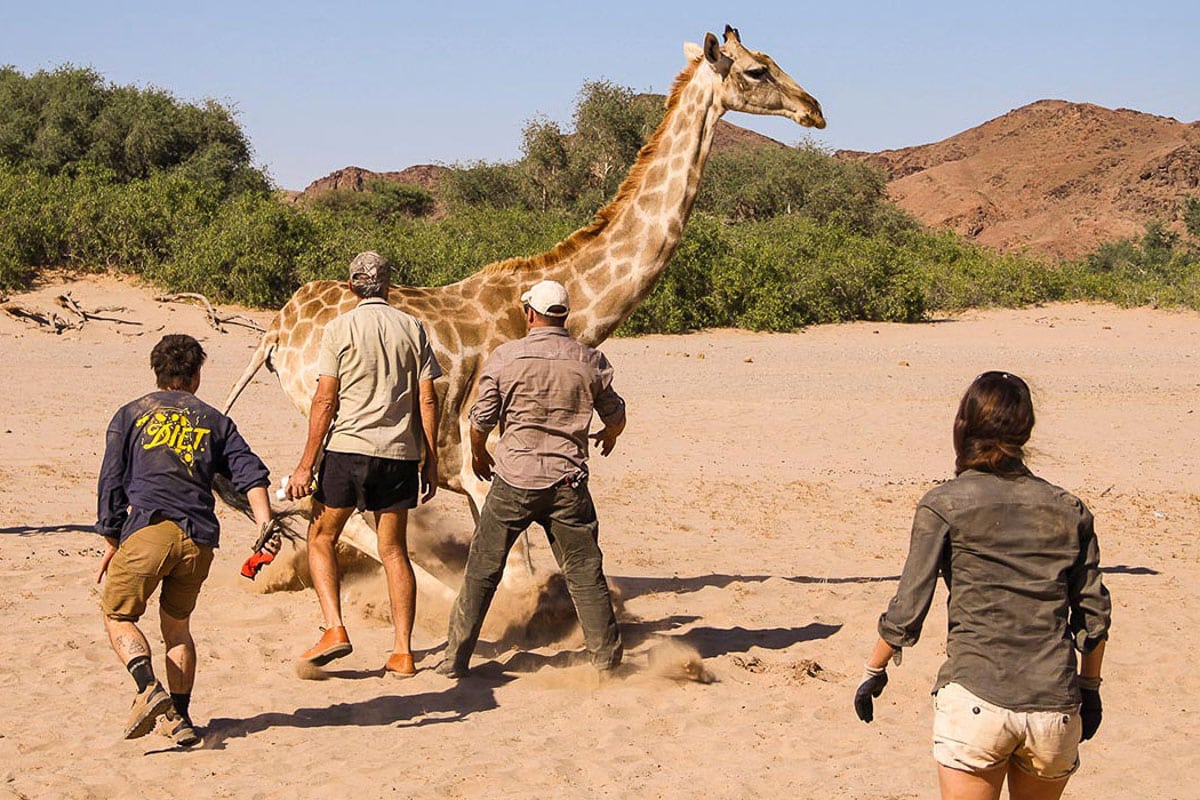
Namibia: Giraffe Conservation Safari
From $9,595
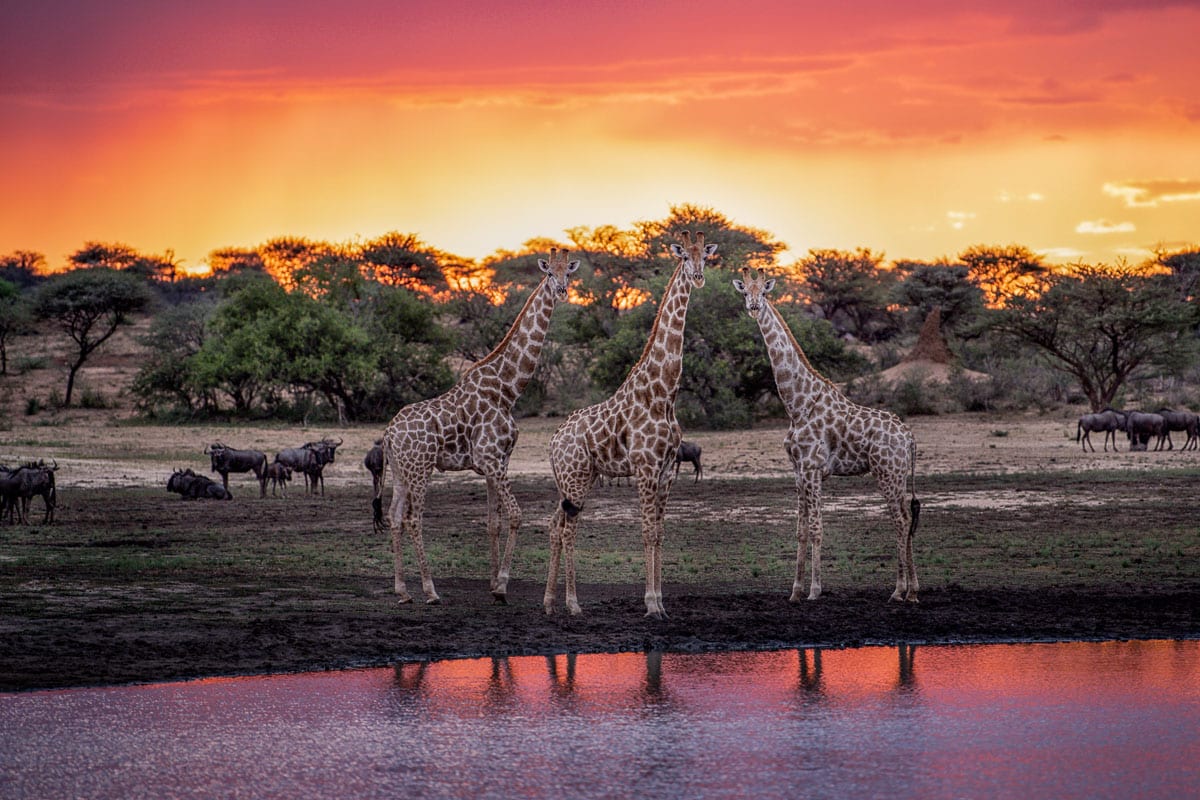
Namibia: Green Season Safari
From $9,795
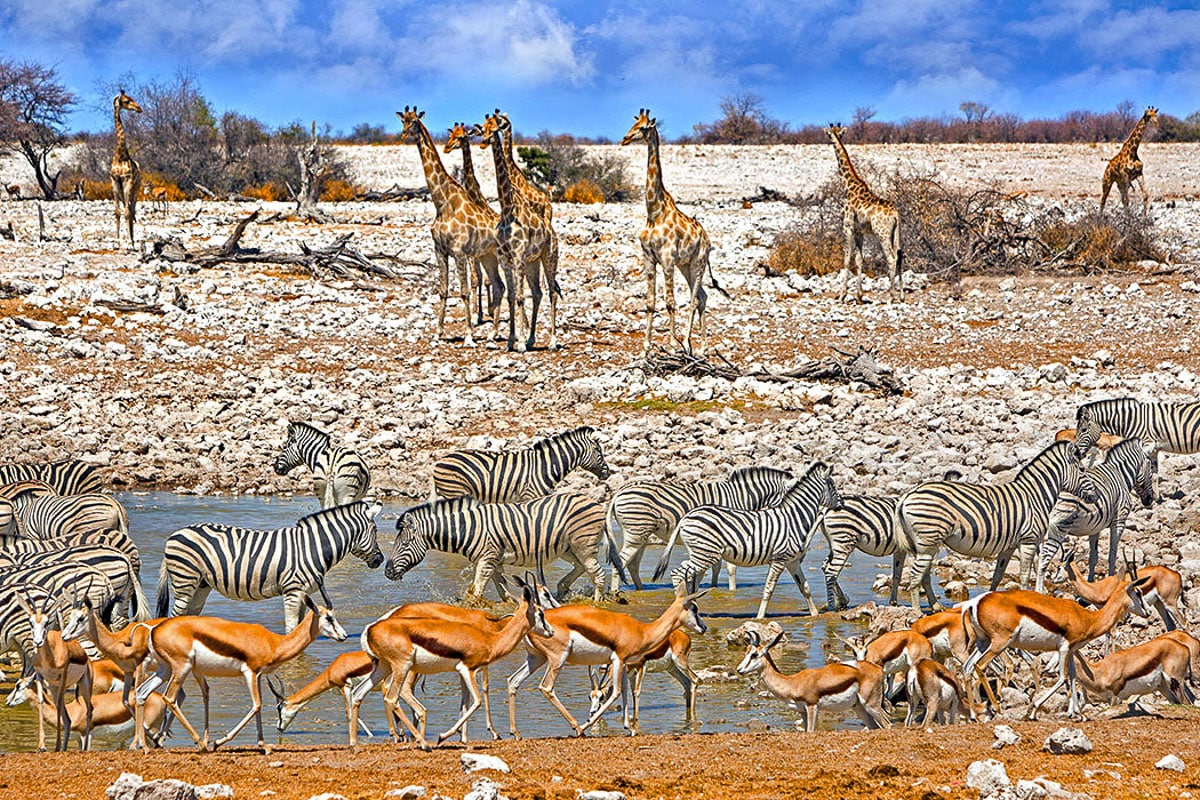
Ultimate Namibia and Botswana
Namibia, Zimbabwe, Botswana
From $11,595
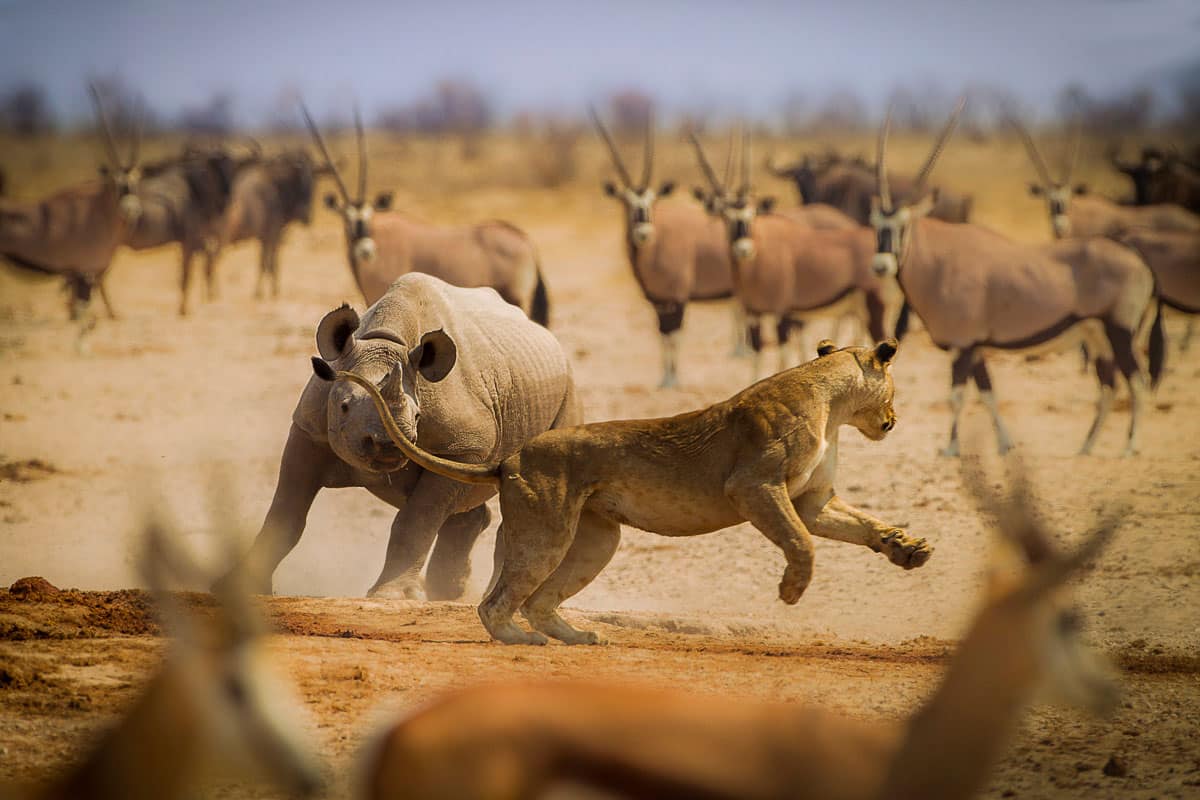
Namibia: Desert Lion Conservation Safari
From $8,795
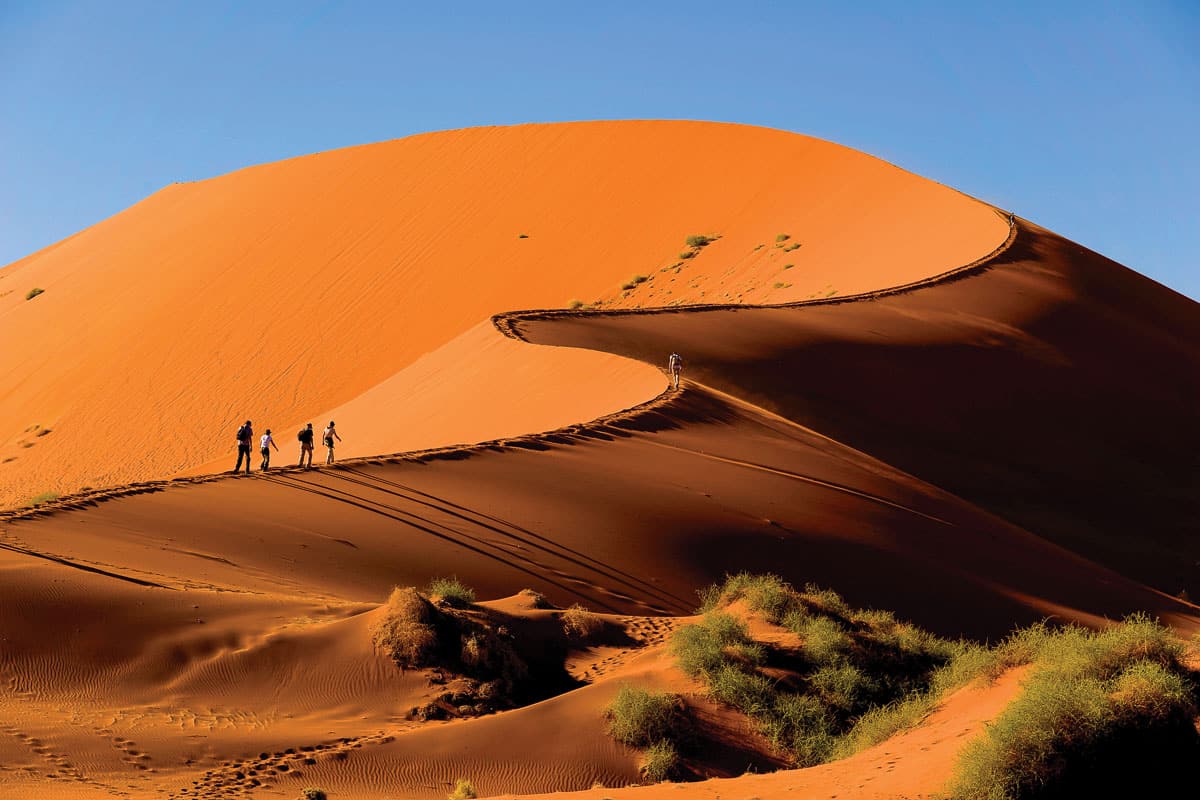
Private Journey
Namibia Private Journey
From $8,695
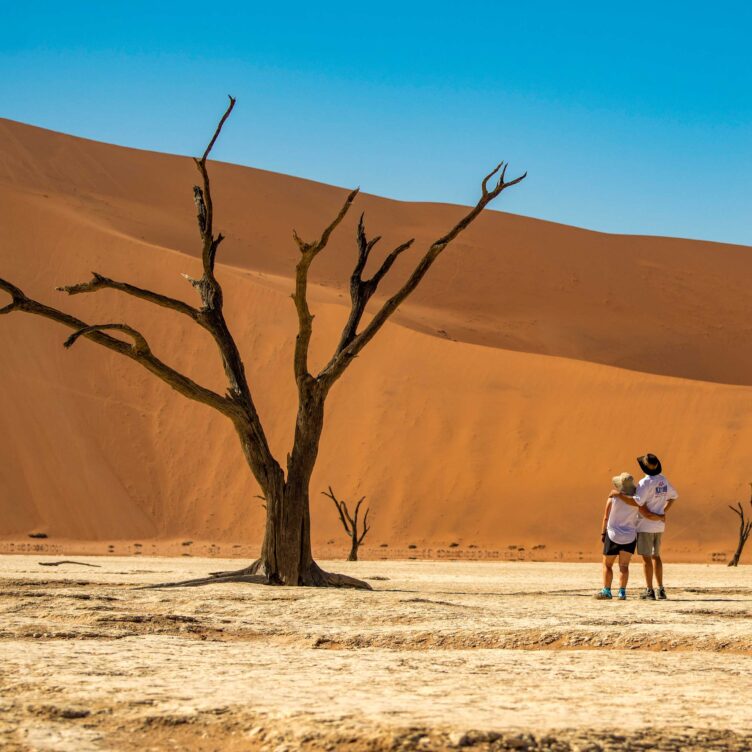
What Makes Our Namibia Safaris Special?
- The Most Extensive and Diverse Namibia Itineraries — We get you off the beaten track, with an unmatched range of activities including visiting with Himba tribes, climbing the epic dunes of Sossusvlei, and hiking the Tok Tokkie trail.
- Accommodations as Enchanting as the Landscape — Chosen to give you unrivaled comfort in Namibia’s most remarkable locations, our accommodations include private tented camps sited for access to rare wildlife, and charming lodges inside parks and game preserves.
- Custom-Built Vehicles & Guaranteed Window Seats — Our air-conditioned Land Cruisers guarantee each passenger a window seat and ample room for camera gear. We also include a private charter flight with dramatic views along the Skeleton Coast.
- Small Groups & Expert Trip Leader — With a maximum of 12 travelers per departure, we ensure you never feel crowded or rushed, and our world-class Trip Leader accompanies you throughout your entire safari.
- Be Part of the Greatest Conservation Story on Earth — Namibia took the extraordinary step of writing conservation into its constitution, and now has over 40% of its land preserved. It is the only growing wildlife population in all of Africa!
Everything You Need to Know
We plan our adventures for Namibia’s best seasons, when wildlife viewing is at its peak. The “dry” season (April-September) is the most popular time of year, when daytime temperatures are in the mid-70sºF and wildlife viewing is at its peak as waterholes attract a vast array of animals. We also highly recommend the “green” season (January-March) when the crowds are gone and sporadic rains bring the desert to life to reveal carpets of flowers and calving season begins for plains game such as springbok and zebra.

Namibia’s varied landscapes and unique wildlife viewing offer seemingly endless opportunities for exploration—we’ve highlighted our favorite activities below!
Our purpose-built Land Cruisers are ideally suited for Namibian road conditions and ensure the best possible ride comforts on the many miles traveled; and Namibia’s awe-inspiring landscapes are the ideal destination for road adventures! With a maximum of 5 passengers per vehicle, everyone is ensured a window seat and plenty of room to stretch out their gear and legs.
All of our vehicles feature:
- Pop-top roofs for better photography and game vantage points, located at both driver’s front and back cabin
- Air conditioning
- Onboard fridge and freezers with plenty of water
- Library, including guide books, maps, stationary and check lists
- 220 volt electrical outlets to recharge batteries on the go
- VHF radios to allow group communication while on the road
- “Magic Boxes” for en-route catering from bush breakfasts, coffee and tea stops, to sundowners!
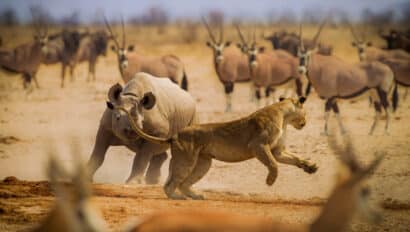
Not sure which Namibia adventure is best for you? See below for a side-by-side comparison of each of our itineraries to help make your decision easier. Still unsure? Our Africa Area Specialists are happy to answer any questions and explain the journeys in greater detail.
Experience Namibia
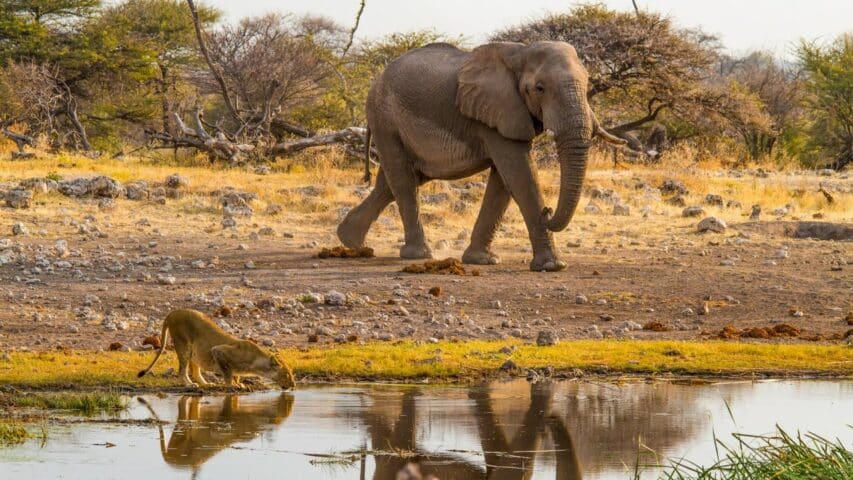
Extend Your Trip
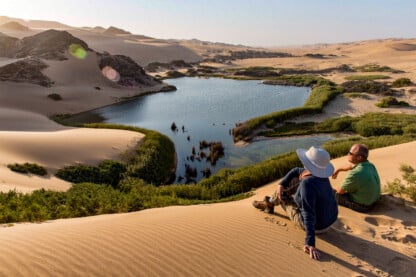
Hoanib Skeleton Coast Extension
From $3,690
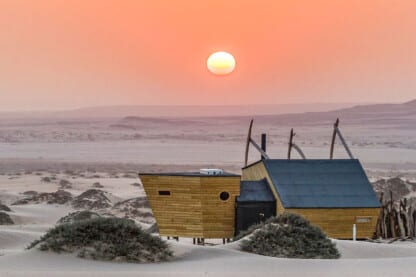
Shipwreck Lodge Extension
From $6,795
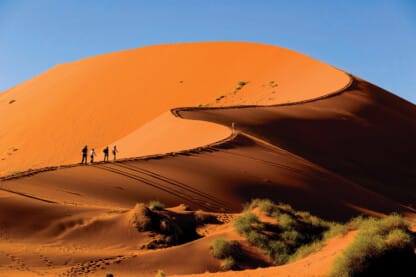
Sossusvlei Dunes Extension
From $5,195
REVIEWS FROM OUR CLIENTS
From our arrival to departure everything fell into place perfectly: the hotels, lodges, and food were all first rate. Being able to track the cheetahs on foot at AfriCat was absolutely amazing. What an experience!
This was my ninth Wilderness Travel trip and one of my very favorites. This trip had it all, great animal viewing, stunning landscapes including dunes and deserts, fascinating cultural exchanges with the Himba, and a real appreciation of Namibia past and present.
This is a wonderful trip. I was reluctant to leave just about every place we were. The place, the animals, the landscape, the accommodations, the people were all outstanding. The devotion of all to preserving their unique environment was impressive and enviable.
I love Wilderness Travel. You select the best guides, a variety of special places to stay, the food is always plentiful and cultural, and the adventure is top drawer! This trip to Namibia met all my expectations and more. Thank you for offering a trip that expands one’s knowledge of other cultures while making it enjoyable and fun.
Namibia is a fascinating and varied country. I feel privileged to have seen it. The quality of a trip often rests with the quality of the guides, and both were excellent!
This is an astounding trip to a really beautiful country. I really liked the itinerary. The Tok Tokkie desert hike is what caused me to choose the Wilderness Travel trip over some others and it was great. I was surprised by how many animals you see on that hike and how close they let you come to them.
Couldn’t have asked for a more interesting trip and two outstanding guides, accommodations, and meals. This was our fourth trip with Wilderness Travel and one of the best (although we say that about every trip we have been on!).
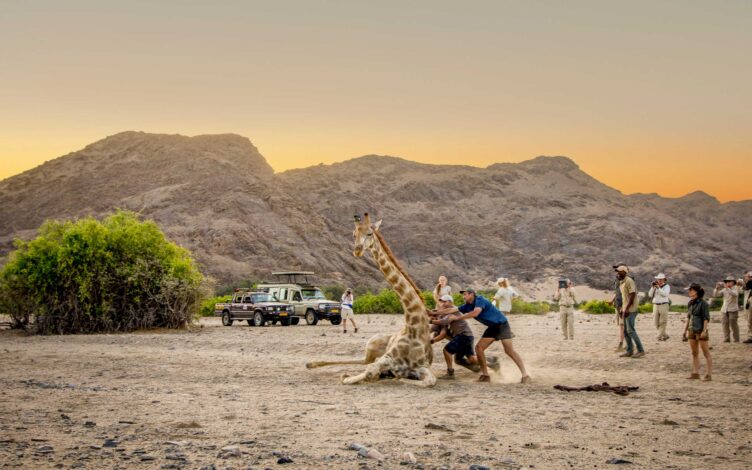
Community & Conservation
Our trips directly donate to Save the Rhino Trust, Desert Lion Project, Giraffe Conservation Foundation, and AfriCat Foundation. They are all actively working to establish protected habitats and create a sustainable future for endangered wildlife.
Talk to an Expert
Our Africa Specialists know every detail about our Namibia safaris. They will be happy to answer any questions and help you choose the journey that’s right for you. Contact us to learn more or book your trip today!
Where to Go on an African Safari in June
Tanzania, Kenya, Botswana, South Africa, Zambia and Zimbabwe are all good choices for a safari in June. It is a great month to go to the bush; it is mostly dry and many iconic safari destinations offer great wildlife viewing. The dry conditions are excellent for gorilla trekking in Rwanda and Uganda too.
Best Time per Country
Flag of zimbabwe zimbabwe in june.
- Excellent wildlife viewing in the Dry season
- It rarely rains and there are lots of sunny days
- It’s not yet peak season and parks won’t be crowded
- It’s cold on early morning and evening game drives, you’ll need winter clothing
Flag of Zambia Zambia in June
- Wildlife viewing is great in the Dry season
- Blue skies and lots of sunshine
- It’s not yet peak season and parks are never crowded
- It’s a good time to see Victoria Falls
- Early mornings and evenings are cold, you need to bring warm clothing
Flag of South Africa South Africa in June
- It rarely rains (except for Cape Town and surrounds)
- It is low season
- There are no mosquitoes
- Evenings and early mornings are very cold, especially in open game-drive vehicles
- Cape Town, the Garden Route and the beaches are better enjoyed in the warmer summer months
Flag of Uganda Uganda in June
- It is Dry season and conditions are perfect for gorilla and chimp trekking
- There are lots of sunny days
- Wildlife viewing is good in the savannah reserves as the vegetation thins out
- It is high season and gorilla permits need to be booked long in advance
- Some parks can get busy
Flag of Tanzania Tanzania in June
- Excellent time to see the wildebeest migration
- It is Dry season and there is little rainfall
- It’s not yet high season and it’s not very crowded
- Wildlife viewing is excellent as animals gather around water sources
- It gets cold at night, warm clothing is recommended
Flag of Rwanda Rwanda in June
- Excellent time for gorilla trekking
- Wildlife viewing in Akagera is great as animals gather near water sources
- There are lots of sunny days in the Dry season
- Although it is high season, the parks never get crowded
Flag of Namibia Namibia in June
- Great wildlife viewing, especially in Etosha NP where animals gather around the waterholes
- Dry weather with lots of sunshine
- It isn’t peak season and visitor numbers are quite low
- It is cold at night and early in the morning, especially on game drives in open vehicles
Flag of Kenya Kenya in June
- Good wildlife viewing from late June onwards
- It’s not high season yet and it isn’t very crowded
- It is still green after the rains
- Lovely weather and warm sunny days
- Wildlife viewing is less good than later in the Dry season
Flag of Botswana Botswana in June
- Excellent wildlife viewing
- It’s not peak season yet and it doesn’t get very busy
- It’s cold on early morning and evening game drives
- Wildlife viewing is better in the middle and end of the Dry season
Visiting month
Best safari parks to visit in june.
See below for an overview of the best parks to visit in Africa by country. Please note that the listings focus on the most popular parks only and are not comprehensive.
Flag of Botswana Botswana
Best parks & reserves in june.

Chobe NP Excellent
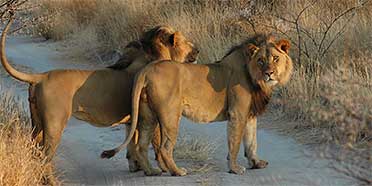
Central Kalahari GR Good

Moremi GR Good

Okavango Delta Good
Flag of Kenya Kenya
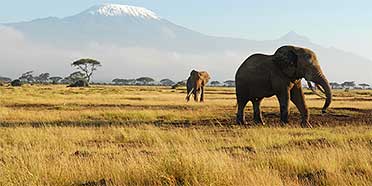
Amboseli NP Excellent

Lake Nakuru NP Excellent

Masai Mara NR Excellent

Samburu NR Excellent
Flag of Namibia Namibia
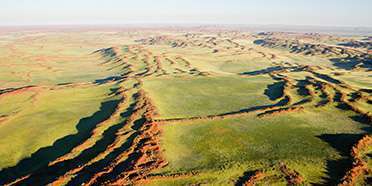
Namib-Naukluft NP Excellent
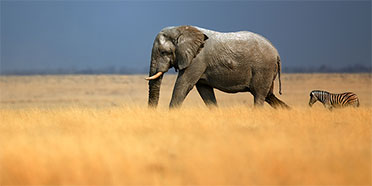
Etosha NP Good
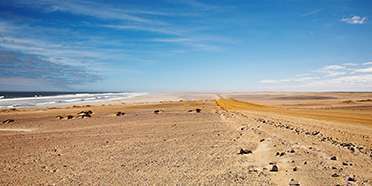
Skeleton Coast NP Good
Flag of Rwanda Rwanda
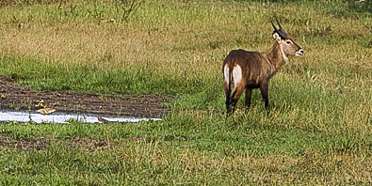
Akagera NP Excellent
Flag of South Africa South Africa

Hluhluwe-iMfolozi GR Excellent

Kruger NP Excellent
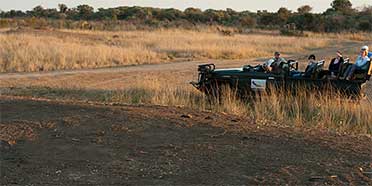
Phinda GR Excellent

Sabi Sands Excellent
Flag of Tanzania Tanzania
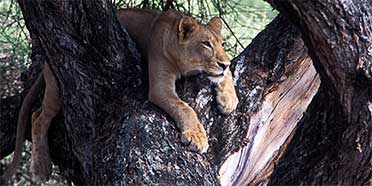
Lake Manyara NP Excellent
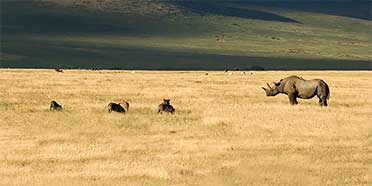
Ngorongoro Crater Excellent

Nyerere NP Excellent

Serengeti NP Excellent
Flag of Uganda Uganda

Bwindi NP Excellent

Kibale NP Excellent

Murchison Falls NP Excellent
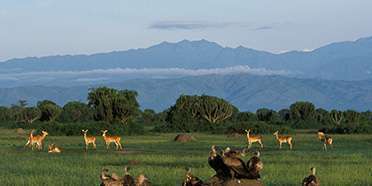
Queen Elizabeth NP Good
Flag of Zambia Zambia

Kafue NP Good
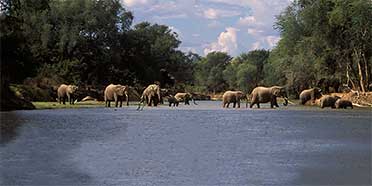
Lower Zambezi NP Good
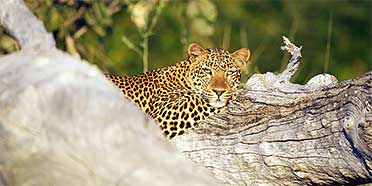
South Luangwa NP Good
Flag of Zimbabwe Zimbabwe
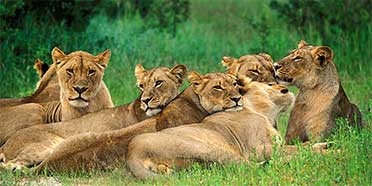
Hwange NP Good
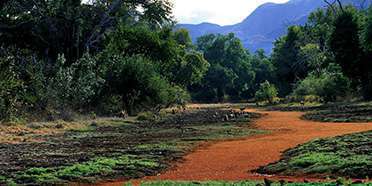
Mana Pools NP Excellent
All Parks & Reserves
Safari highlights in june.
Every safari is filled with special moments, big and small. Some might be bucket-list items, some might be unexpected surprises. Mind though that wildlife viewing is seasonal and careful planning guarantees a successful trip. See below for some inspirational clues on where to go on an African safari in June.
The Sardine Run in South Africa
The annual sardine run in South Africa is one of the most exciting marine spectacles in the world. Every year between May and July, vast shoals of sardines migrate north along South Africa’s Wild Coast. The exact timing is unpredictable but June is a safe bet to witness this unique event. A huge concentration of marine predators, such as birds, dolphins, sharks and whales, follow the sardines. All play part in the feeding frenzy so well documented in the Emmy Award–winning BBC film The Greatest Shoal on Earth.
The Wildebeest Crossing the River in Tanzania
Around June splinter groups of the great wildebeest migration reach the Western Corridor of the Serengeti. They mass at the southern bank of the Grumeti River. The numbers gradually increase and so does the pressure to cross. Eventually they take the leap. Everywhere animals are plunging into the water and inevitably big crocs are waiting. The timing for this dramatic event is difficult to predict (even more so than the famous crossing of the Mara River), so witnessing it is very special.
Start of the Shark-cage Diving Season in Gansbaai in South Africa
The Gansbaai coastline in South Africa is thought to have the largest great white shark population in the world. With a global population of about 3,500, these epic predators are listed as ‘vulnerable to extinction’ in the wild. The most exciting and safest way to see them is on a shark-cage diving trip. Although often presented as an adrenaline thrill, coming eye to eye with one of the world’s most powerful predators is much more than that. Always choose a responsible operator when booking this sensitive activity.
Start of the Dry Season in East Africa
June marks the beginning of the Dry season, favorable for wildlife viewing in most East African parks and reserves. The bush starts to dry out and animals start moving towards permanent water sources, which makes them easier to find. However, the vegetation isn’t parched yet; the surroundings are still looking lovely and green. The high season only really kicks off in July, so you can beat the crowds on a June safari. And although not really low season either, you might still get some good deals at this time.
This website uses cookies to ensure you get the best experience on our website. Learn more
- Australian Dollars
- British Pounds
- Namibian Dollars
- New Zealand Dollars
- South African Rands
- U.S. Dollars
Talk to an expert 1-800-242-2434 Lines open now
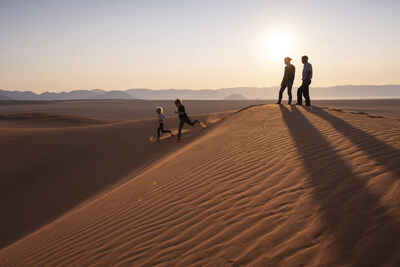
Immerse yourself in spectacular scenery
Soar over the world's oldest desert in a hot air balloon
Namibia is home to world's largest cheetah population
Enjoy a bird's eye view of Namibia's vastness
Escape to the Skeleton Coast
Etosha is full of photographic opportunities
Find solitude beside the Kunene River
Etosha has a healthy lion population
Enjoy excellent for hiking, both guided & self-guided
Track desert-adapted elephants in damaraland
Enjoy a front row seat to the wildlife action
Visit colonies of Cape fur seals along the Namibian coast.
Namibia holidays
Captivating in scale, natural grandeur and sheer emptiness, Namibia is by turns breathtakingly beautiful and almost dauntingly wild.
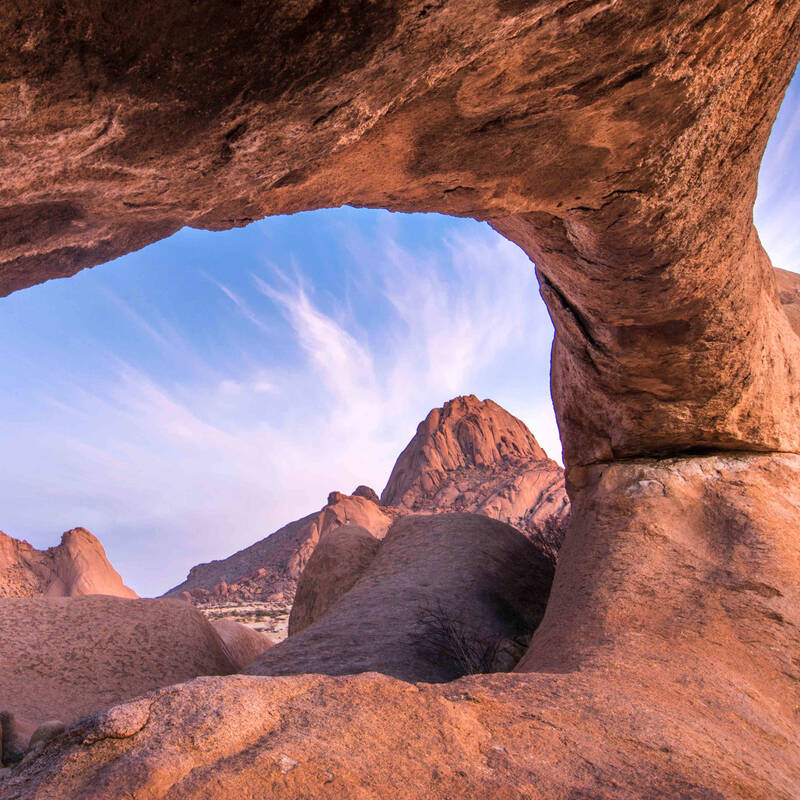
Add to this a plethora of hospitable lodges, exceptionally good roads and many superb areas for wildlife safaris , and the country becomes perfect for individual exploration – by light aircraft, guided expedition or self-drive. To focus on the highlights of a Namibia holiday is to take in the soaring red dunes of Sossusvlei, the rich colonial culture of the coastal towns coastal towns , and the wildlife in Etosha National Park: mountains, sea and safari in one iconic trip. But spread your wings further, and the options are even more tantalising. With a fifth of this huge country protected by national parks, and much more safeguarded in superb private reserves, there is no shortage of mountains to hike, of wildlife to seek out, of sheer space in which to safari. This extraordinary diversity of landscape protects the people of some of Namibia’s most ancient cultures, from the semi-nomadic Himba whose villages are scattered among the vast rocky plains of the north-west to the San, or Bushmen, who have for millennia hunted on the open plains of the Kalahari . It’s a heady mix, one that repays exploration in many different ways – and for a range of budgets. Whether you’re looking for a self-drive trip including some nights beneath the stars, the luxury of a fly-in safari staying in top-class lodges, or something in between, Namibia is the place to create your own adventure.
Namibia's key areas and destinations
Towering red dunes unfolding in waves towards the distant ocean – this is the iconic image of Namibia, this is Sossusvlei in the Namib-Naukluft National Park .
But Namibia has other “must-sees”. For prolific wildlife, the vast salt pan and numerous waterholes of Etosha National Park draw elephants and giraffes , lions and black rhinos , and more. This is world-class safari destination.
Desert-adapted elephants roam the ephemeral rivers of Damaraland , where indigenous San people created unique galleries of rock art; further north, the pastoral Himba cling on to their semi-nomadic culture.
Battered by the cold waters of the Atlantic the hostile Skeleton Coast is home to thousands of Cape fur seals – and the rare brown hyena .
Look into the depths of the Fish River Canyon and wonder at the layers of history in the rocks beneath your feet, or seek out the erstwhile Caprivi Strip for prolific birdlife, lush scenery – and hippos. And if you’re craving contemporary culture, head for the coastal towns.
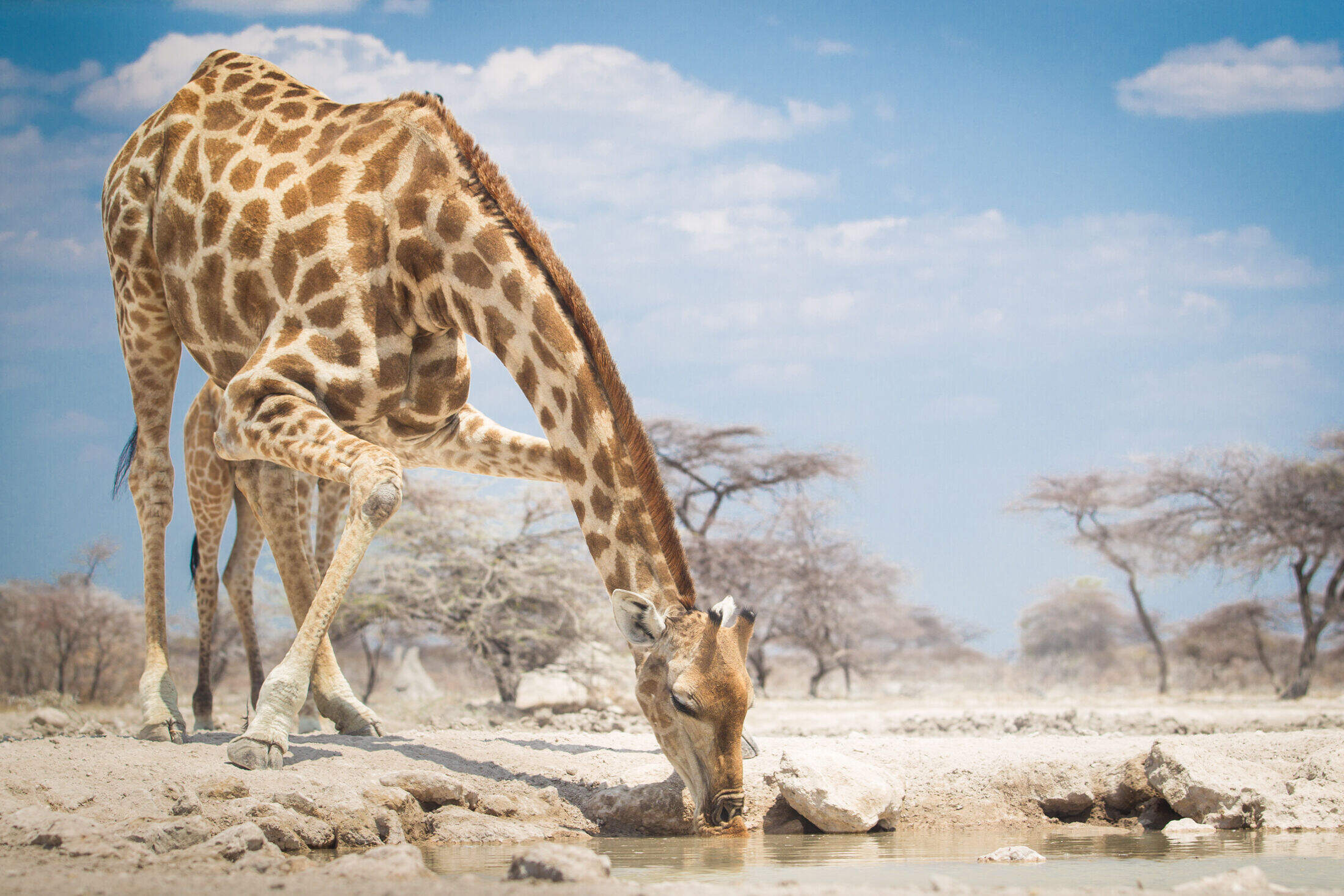
31 places to stay
Namibia’s flagship national park is a must for wildlife lovers and photographers, whether self-driving or on a guided game drive.
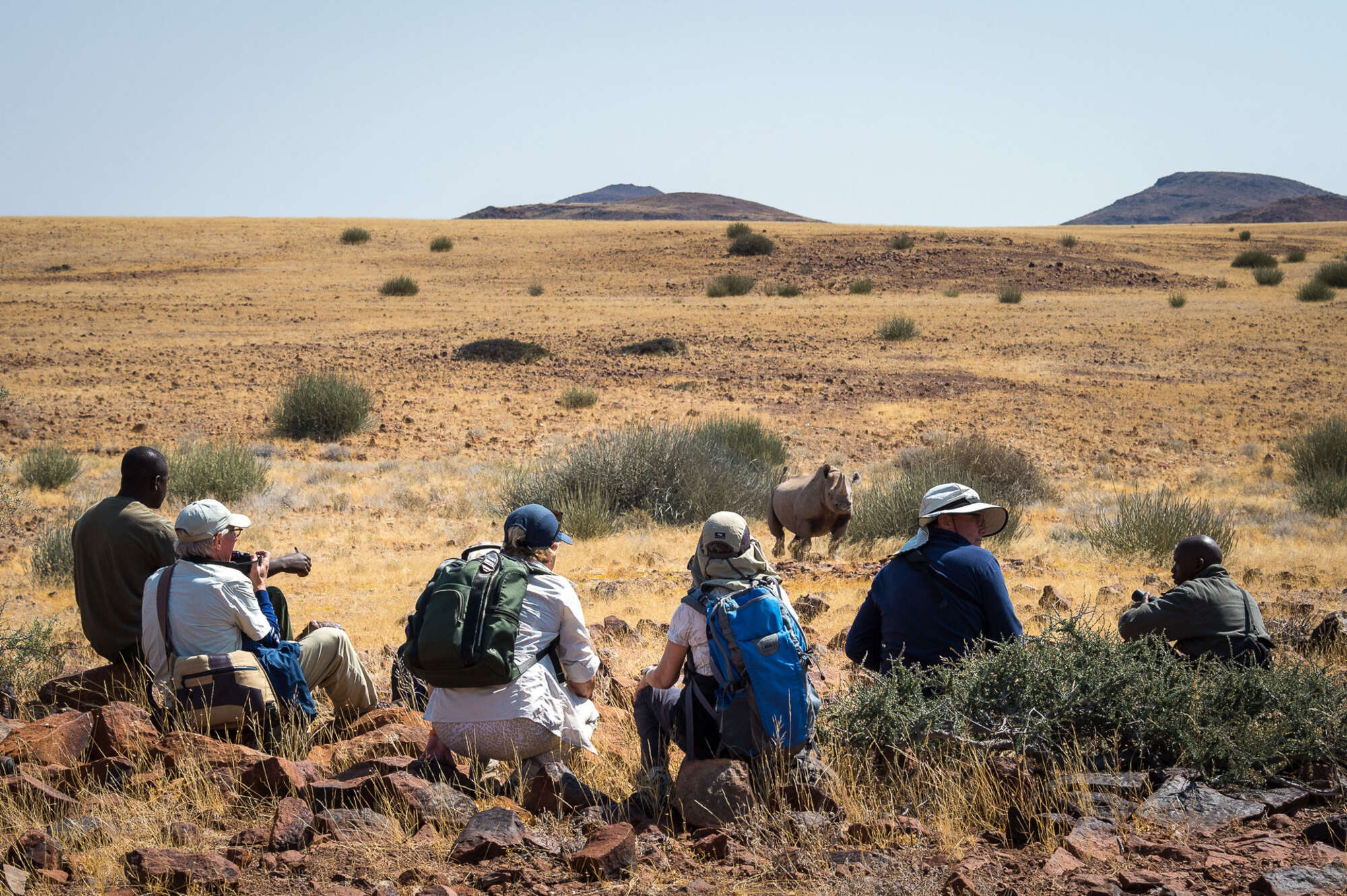
26 places to stay
From rock art to rhinos, Damaraland’s treasures are intrinsically bound up with a landscape of rugged mountains and wide, grassy plains.
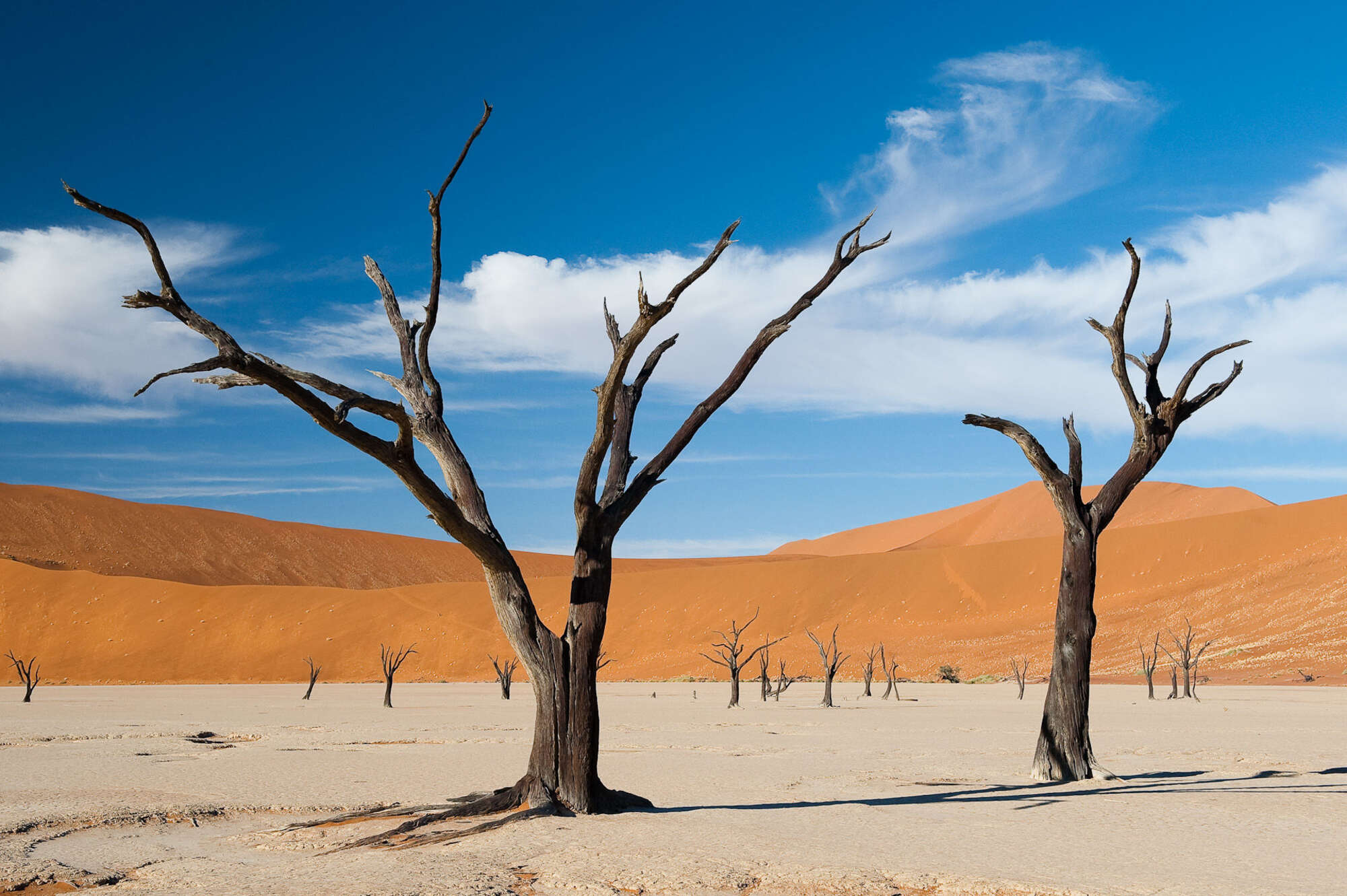
Namib-Naukluft
25 places to stay
A captivating landscape of soft sculpted dunes, vast plains and majestic mountains with excellent hiking: few can resist the Namib-Naukluft.
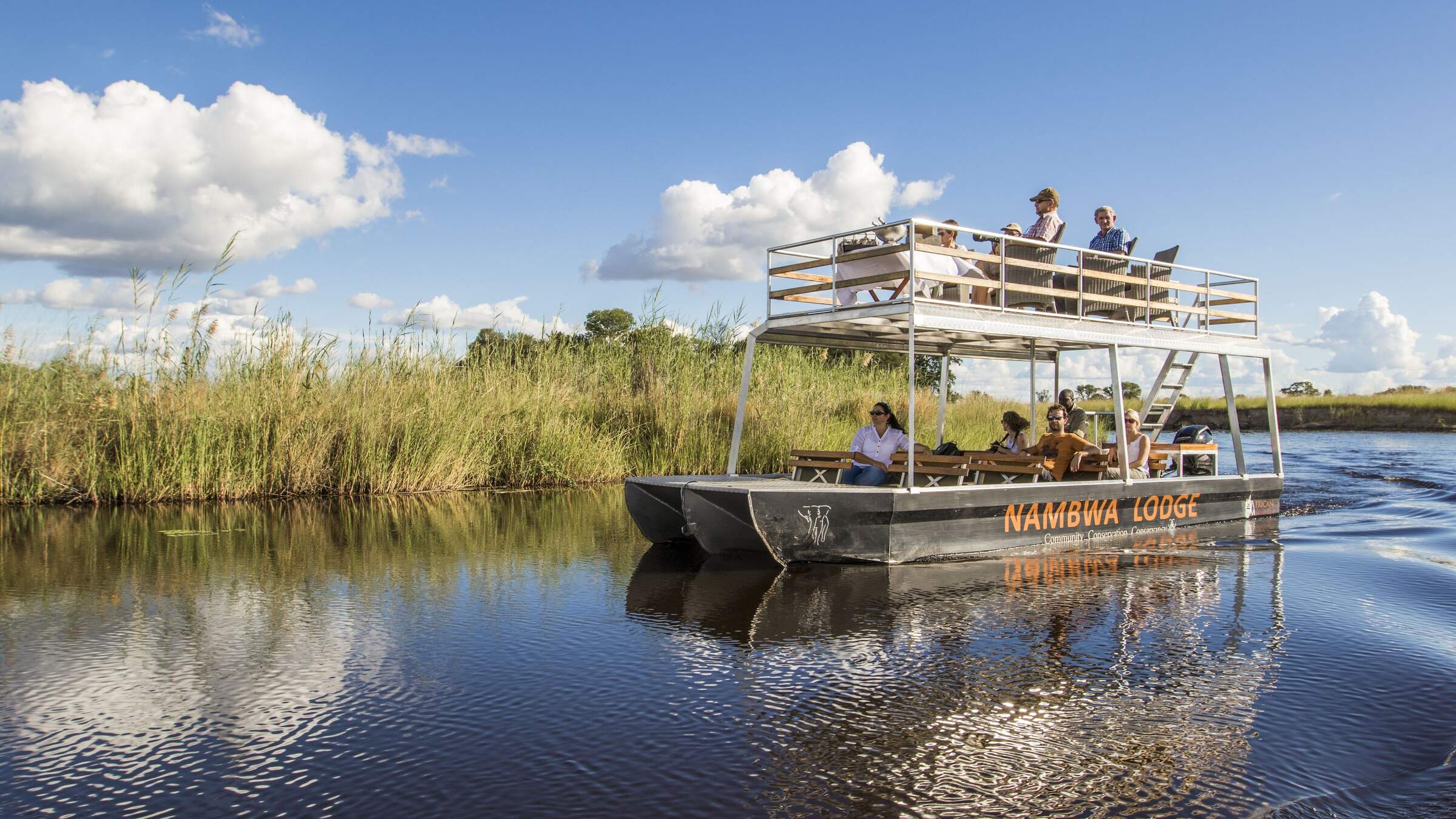
Caprivi Strip
23 places to stay
Literally out on a limb from the rest of Namibia, the Caprivi has an entirely different feel: lush, verdant and often rich in wildlife.
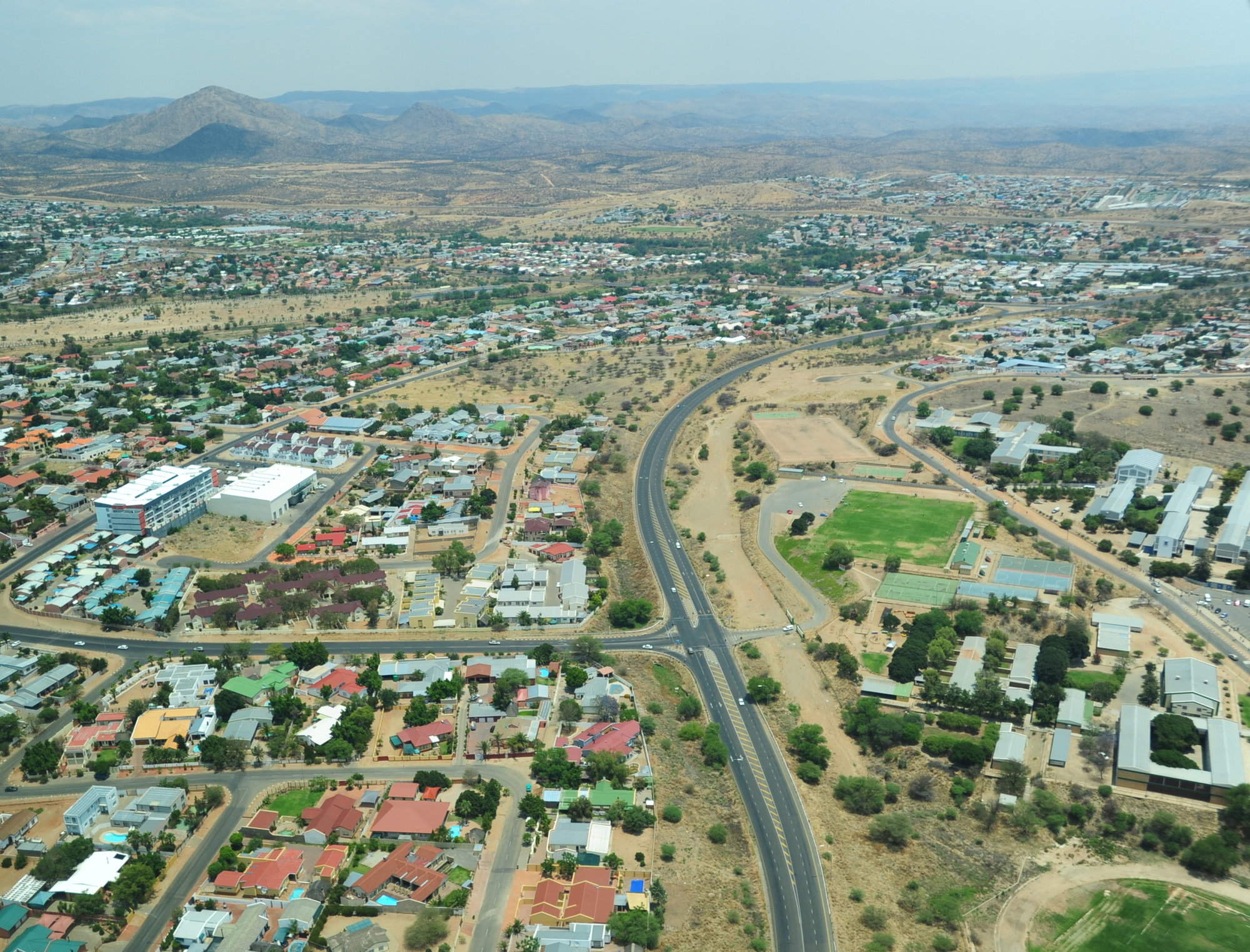
21 places to stay
An inevitable stopover for most visitors, Windhoek, with its attractive valley setting, is worth more than a passing glance.
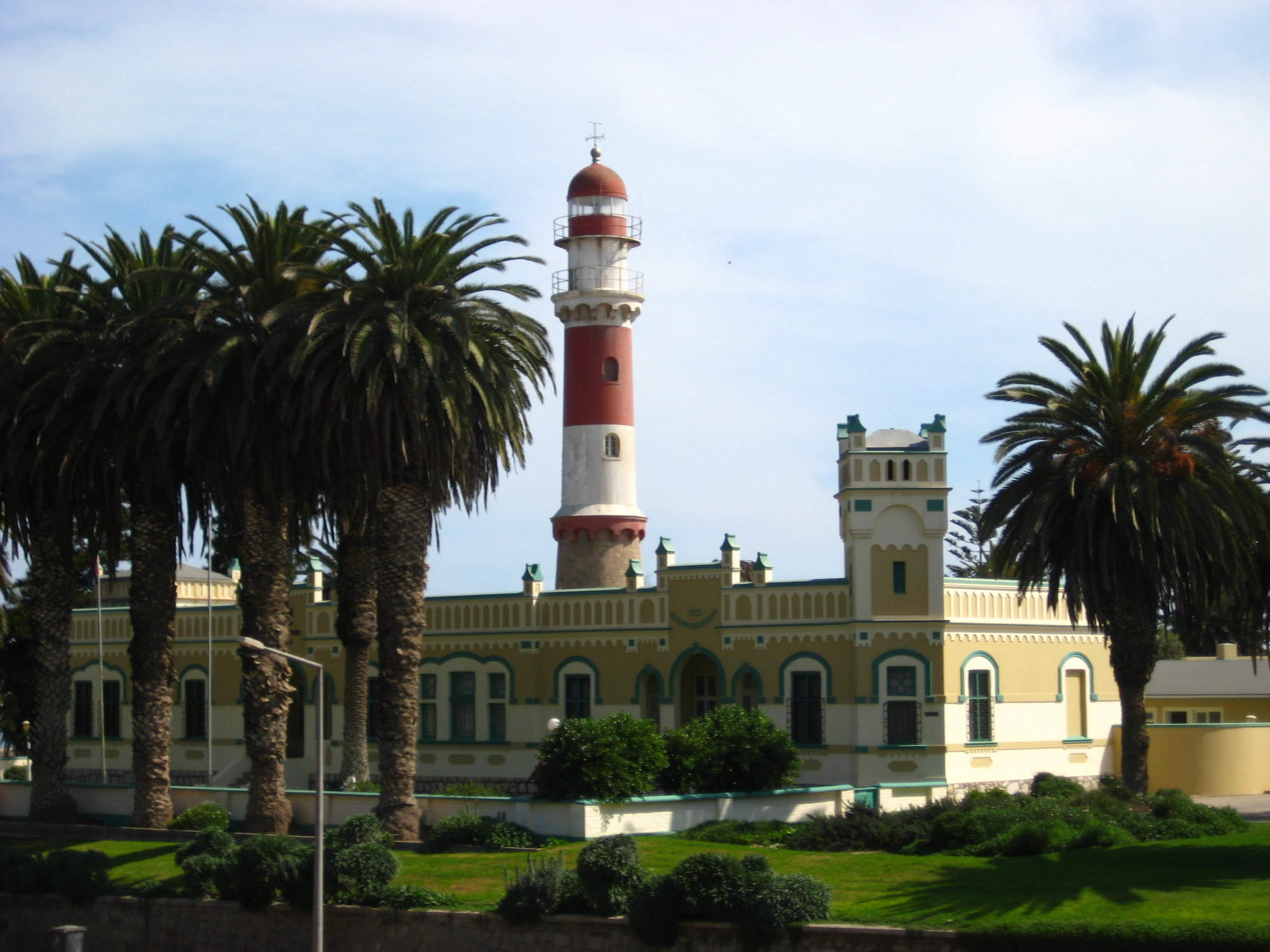
Swakop' & Walvis Bay
From shopping to sandboarding, seafood to coffee and cake, boat trips to birdwatching: the seaside towns offer a varied take on Namibia.
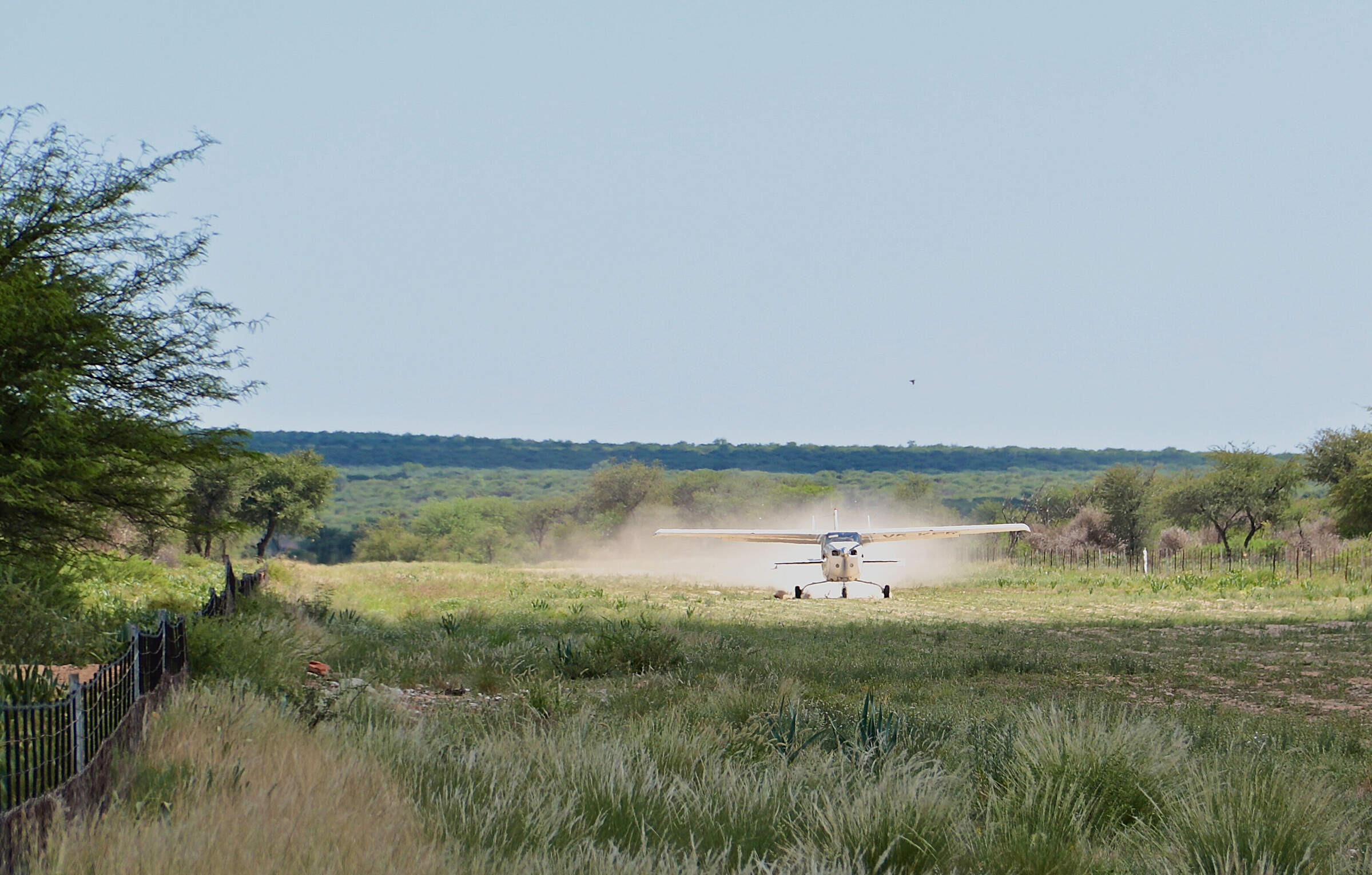
Southern Namibia
15 places to stay
Low, deep-red, undulating dunes characterise the southern Kalahari, variously home to photogenic quivertrees, carpets of flowers and the irresistible meerkat.
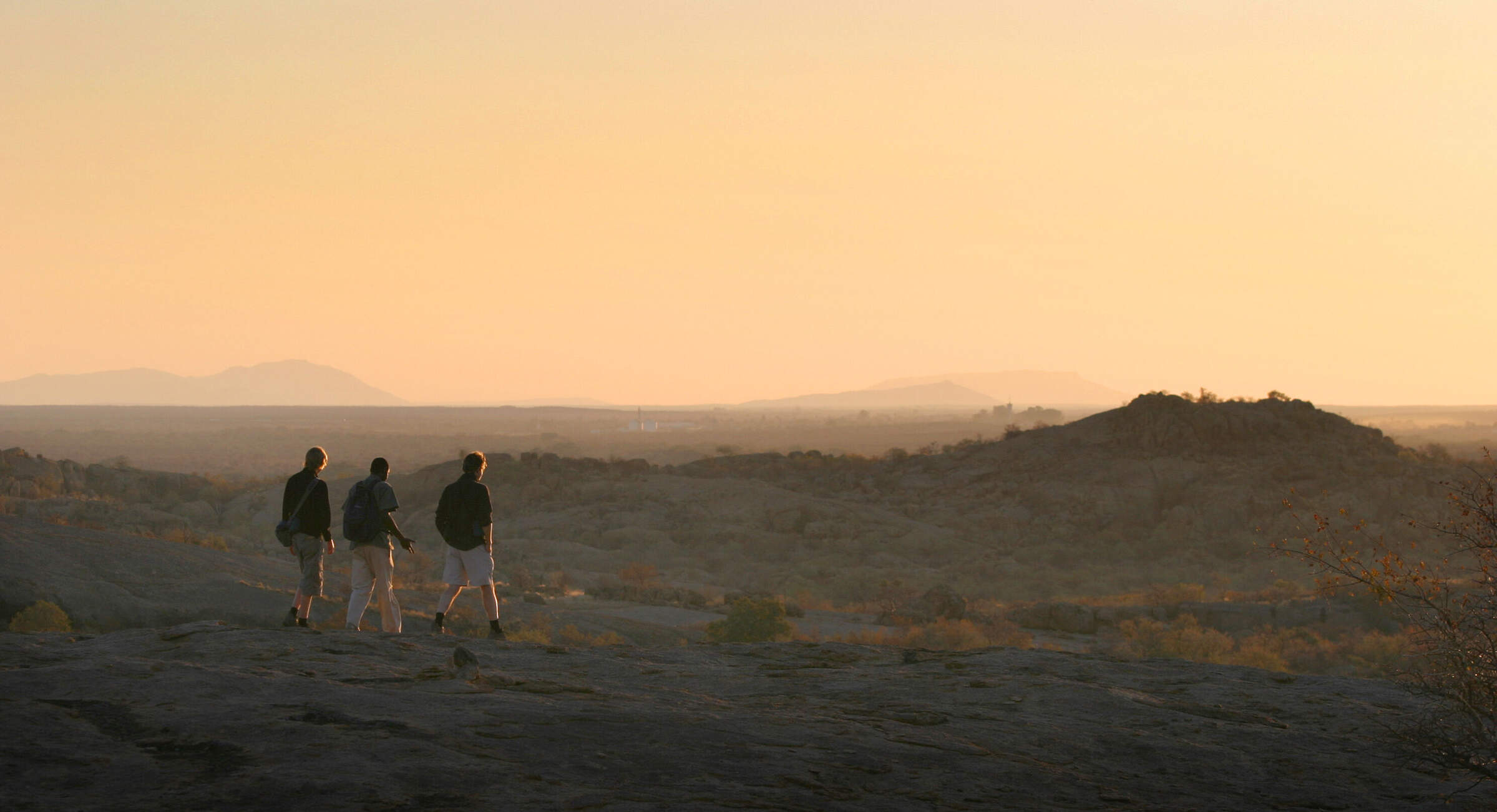
Central Highlands
9 places to stay
Small, personal lodges and guest farms welcome visitors to these rolling hills, whose attractions range from hiking to cave paintings.
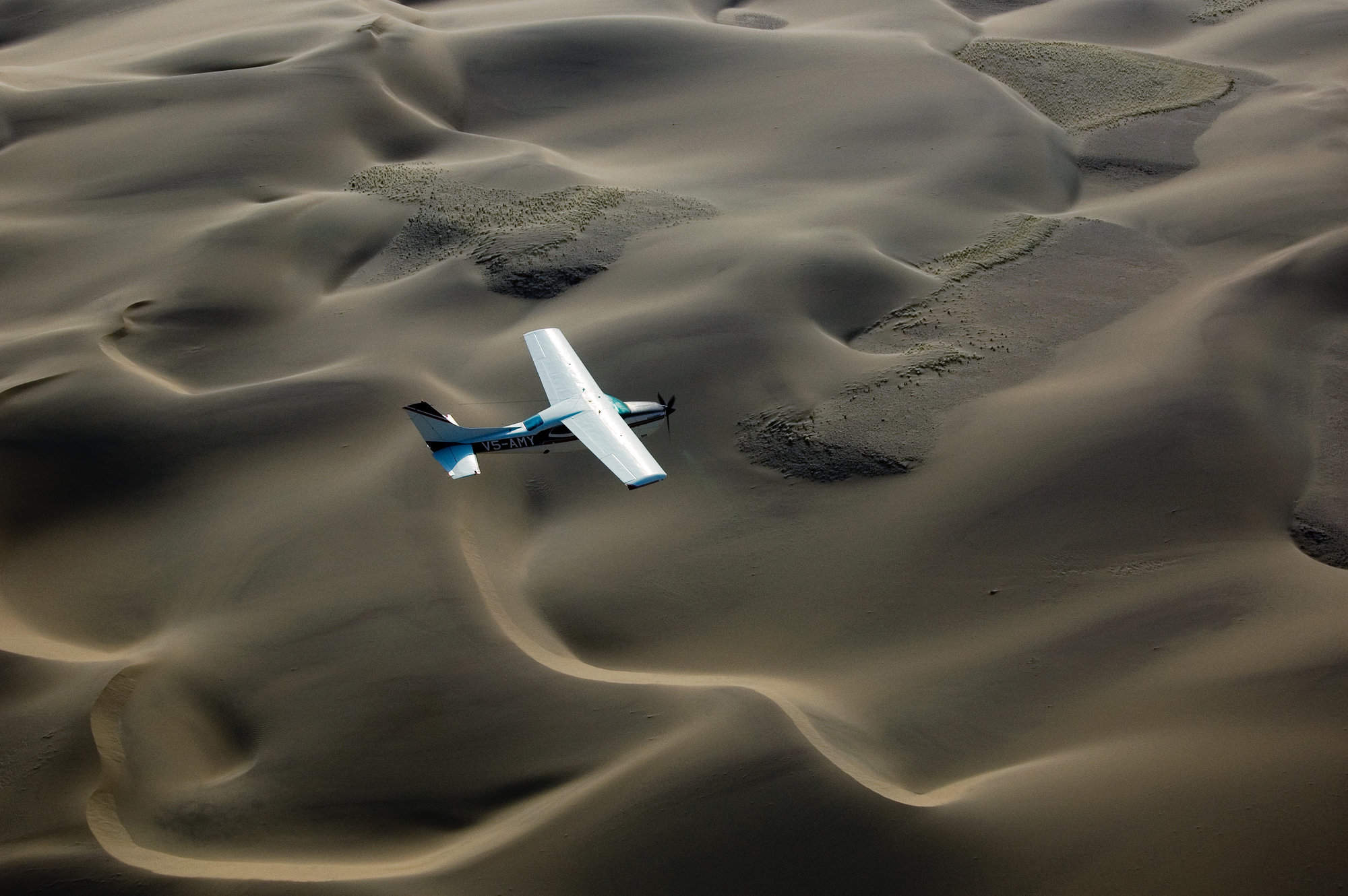
Skeleton Coast
13 places to stay
Fringing Namibia’s western border with the Atlantic, the Skeleton Coast is one of the world’s most desolate yet compelling wildernesses.
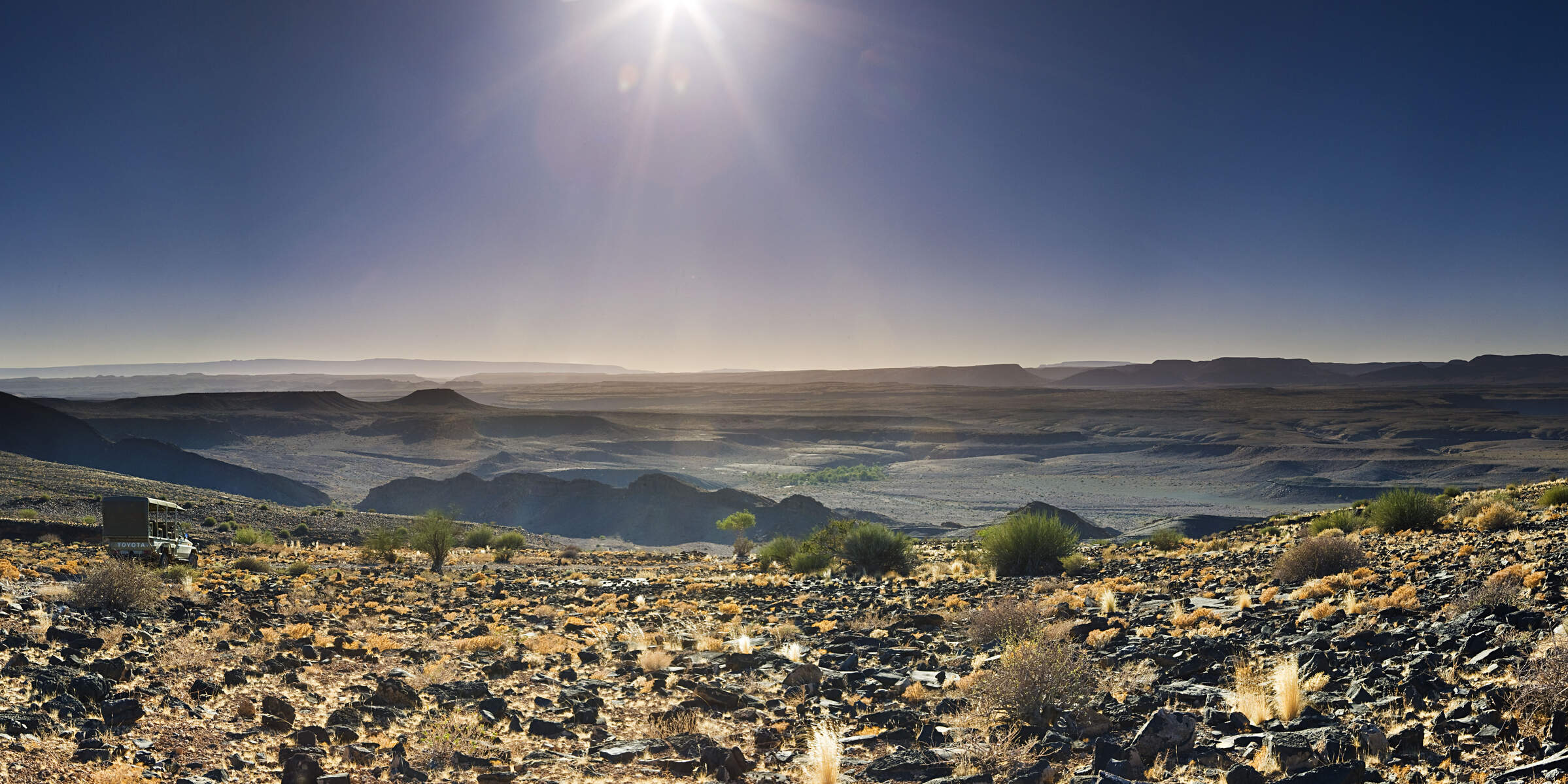
Fish River Canyon
7 places to stay
Both awe-inspiring and exceptionally picturesque, the Fish River Canyon follows a deep fissure in the arid landscape of southern Namibia.
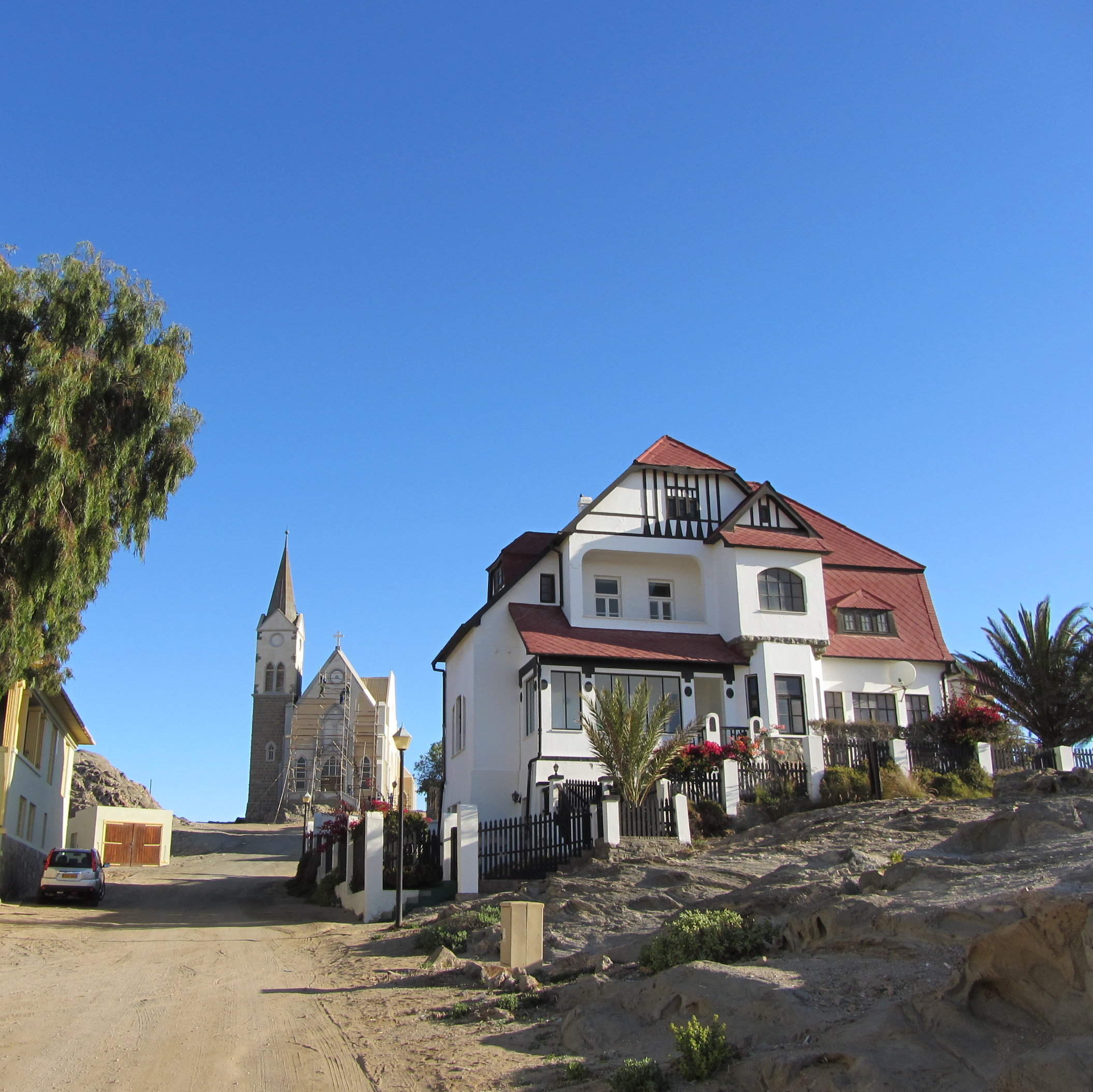
Lüderitz & Aus
5 places to stay
Marooned at the end of a long road from Aus, Lüderitz retains the feel of a frontier town founded on the 20th-century diamond boom.
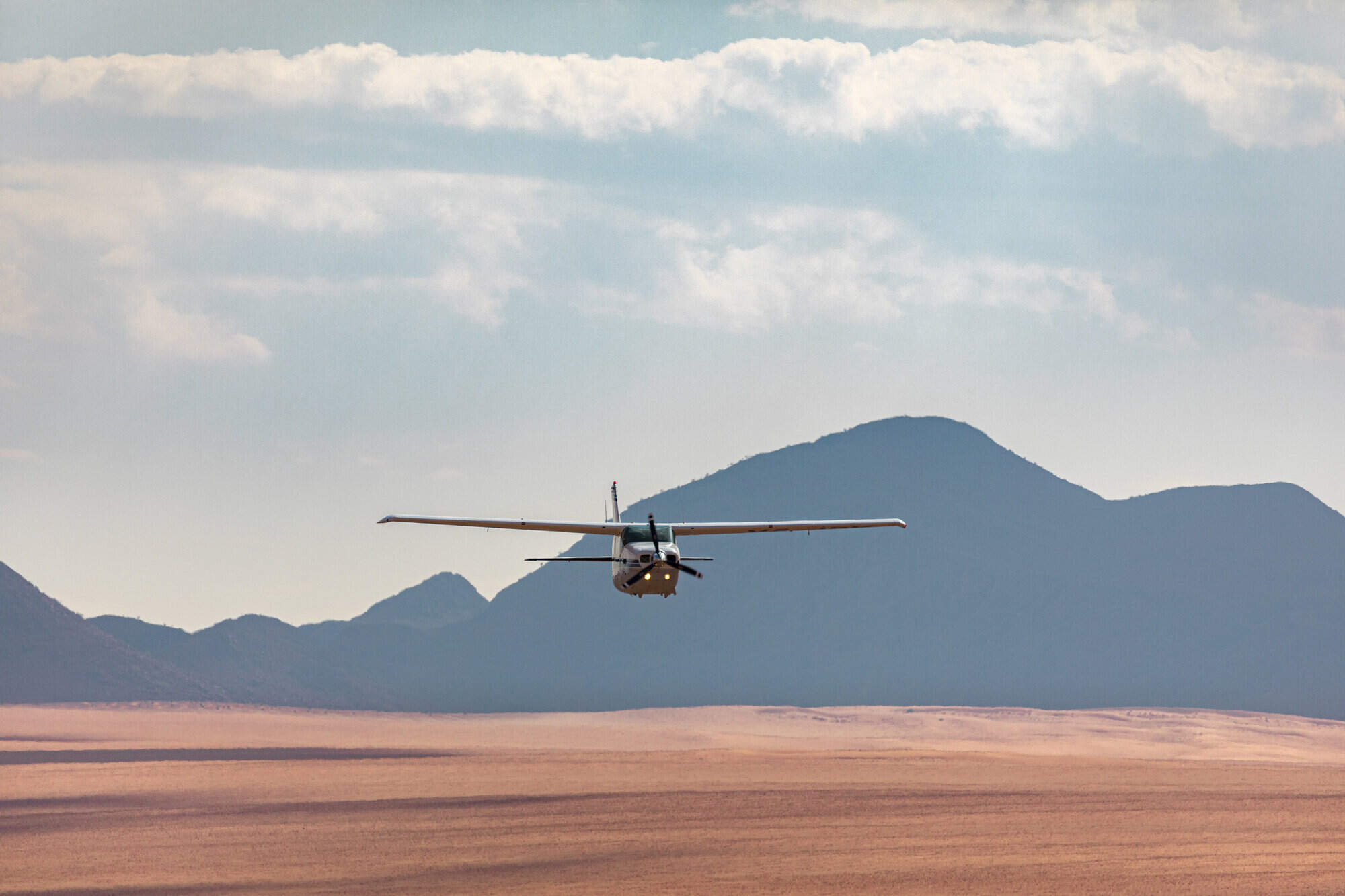
With just a scattering of lodges across a desert area nearly three times the size of Singapore, the NamibRand offers pure escapism.
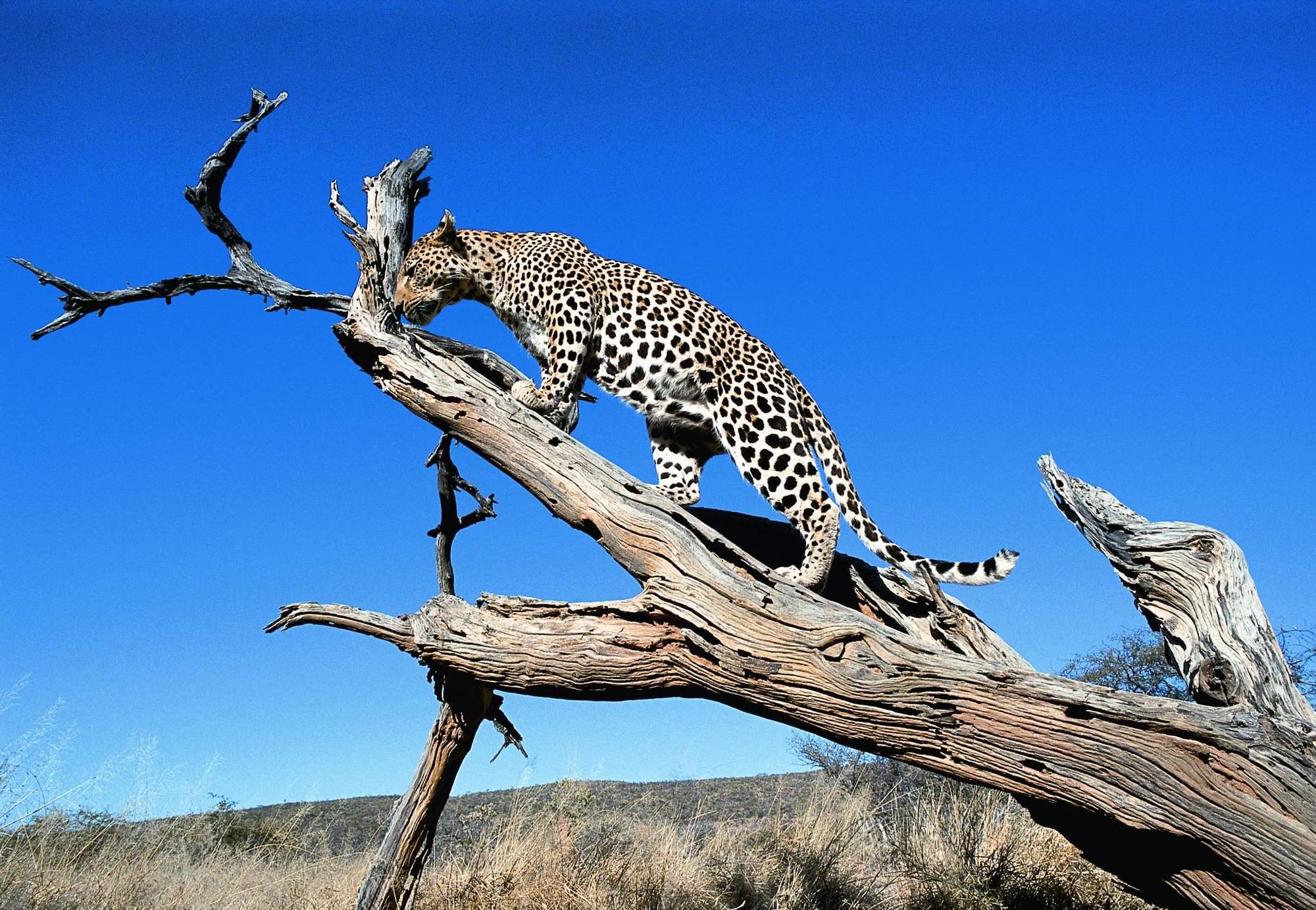
4 places to stay
Renowned for its leopard sightings, Okonjima protects and conserves a range of big cats on a private reserve between Windhoek and Etosha.
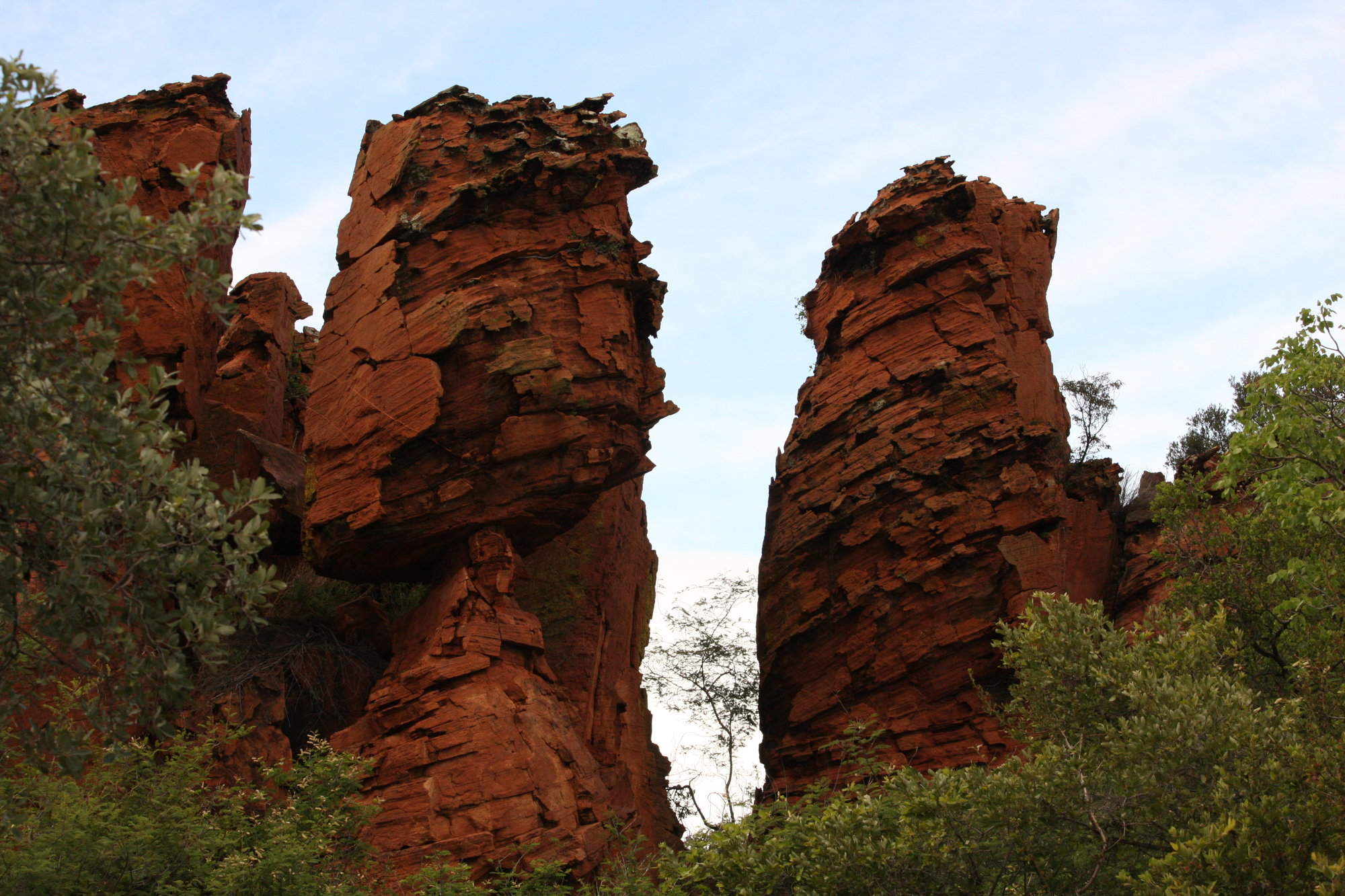
Waterberg Plateau
3 places to stay
Renowned for some of the best walking in Namibia, Waterberg is one of the country’s smallest, yet most intriguing national parks.
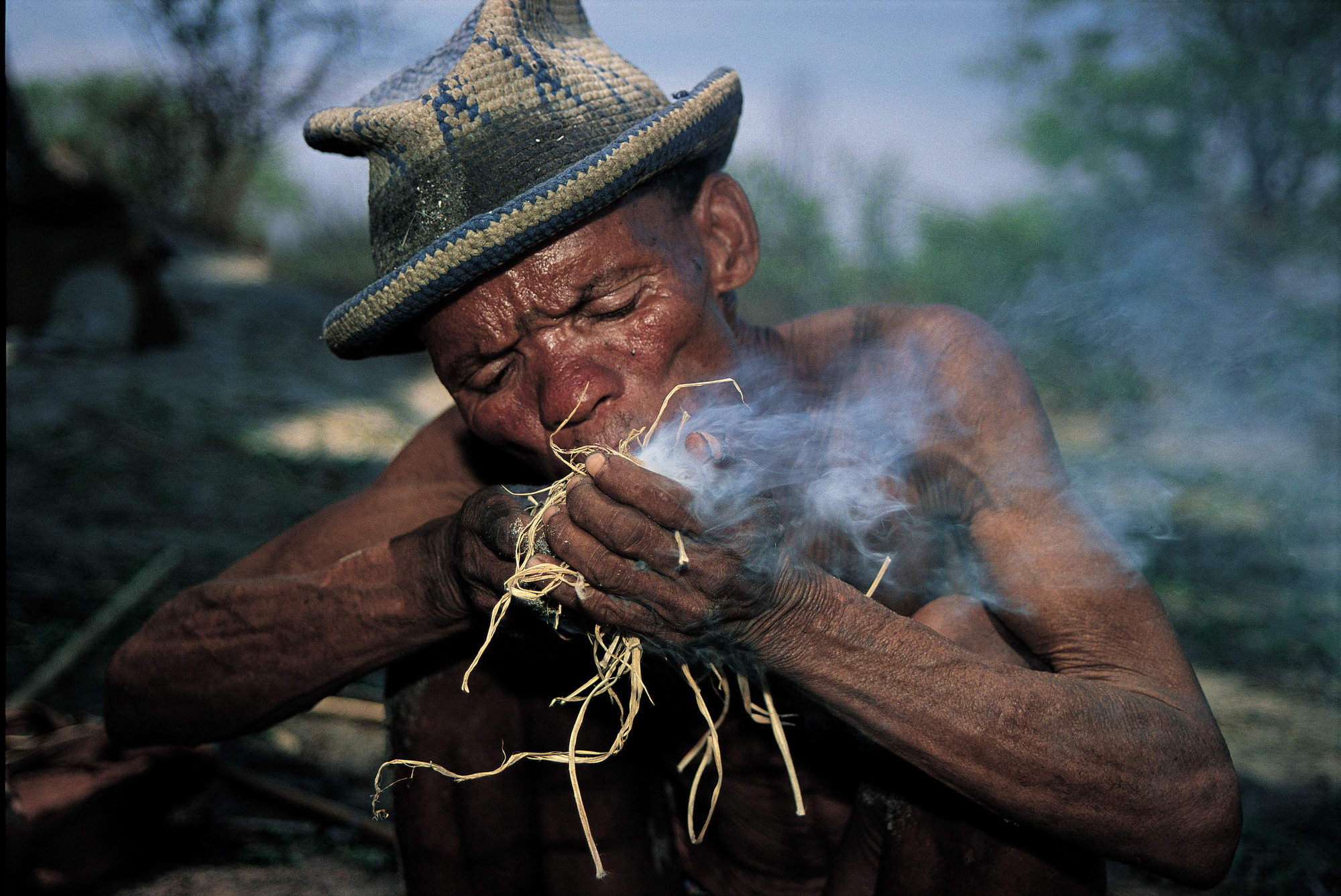
Bushmanland
1 places to stay
Remote and seemingly endless, the Kalahari sand-sheet that covers north-eastern Namibia offers a remarkable opportunity to immerse yourself in Bushman culture.
Ten best safari holidays to Namibia
All our trips to Namibia are tailor-made, based around how you wish to travel, but here are ten of the most popular options – out of the 23 Namibia safari holidays on this website.
Most Namibia holidays are self-drive trips. This isn’t intrepid exploration; we’ll plan the trip with you and arrange a car, detailed maps and all the information that you’ll need to explore at your own pace. Look for trips named self-drive safaris below.
A fly-in safari is great for those with limited time, or who don’t want to drive, giving a magical perspective on the country’s dramatic landscapes. Look for trips named fly-in safaris below.
If you don’t want to drive yourself, consider on of our guided safaris below. On these you’ll be driven around the country, gleaning real insights from your private guide along the way. These fascinating and very flexible trips can be as wild as you want – talk to us about designing one just for you.
Below are examples of some great Namibia holidays; contact us to help you plan your own.
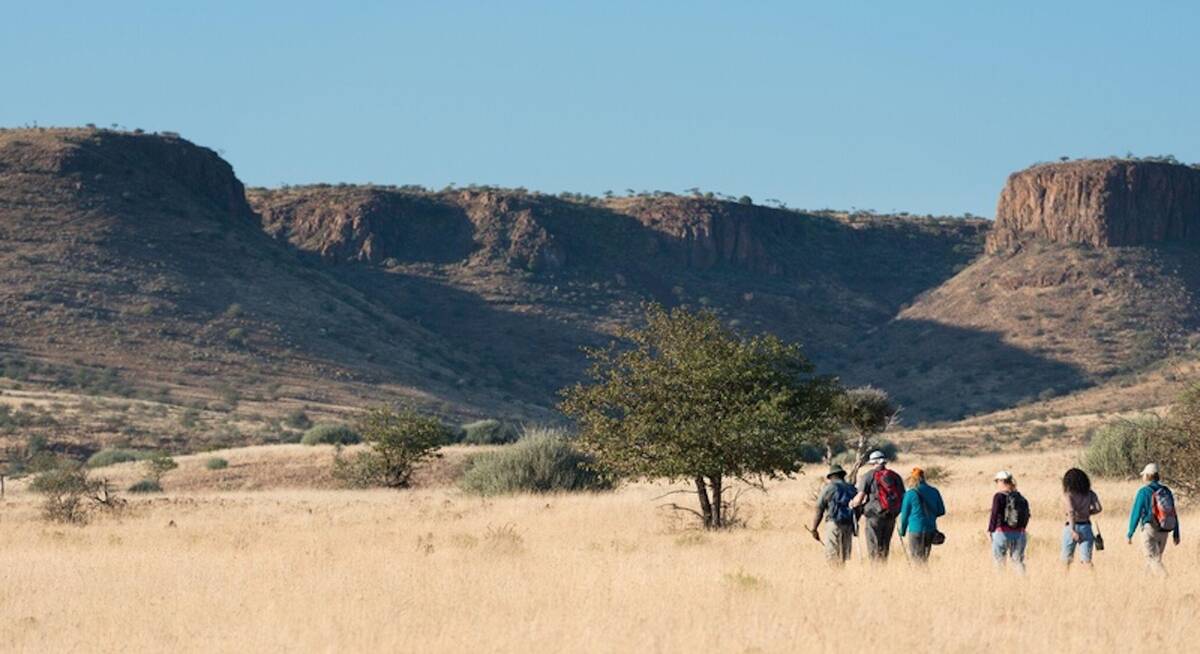
Chongololo Self-drive Safari
21 days • 11 locations WINDHOEK AIRPORT TO WINDHOEK AIRPORT
This self-drive safari focuses on the best walking experiences in Namibia. Get your boots ready for the apricot dunes of the Namib Desert and the ancient hills of Damaraland.
US$5,820 - US$7,240 per person
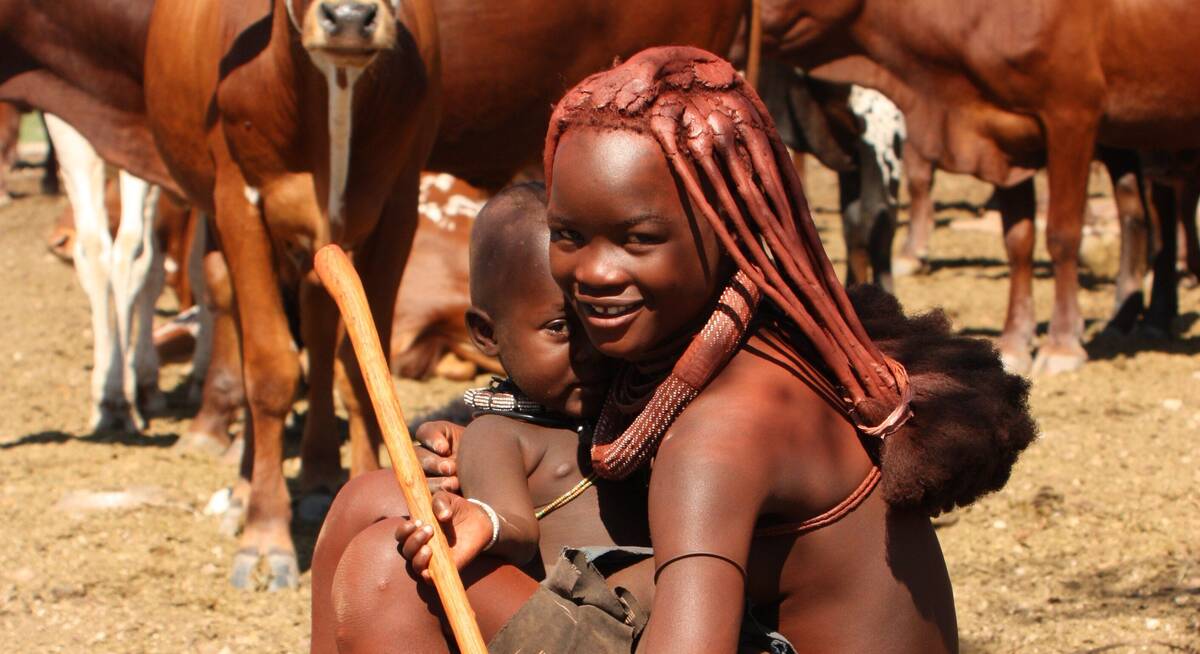
Hartebeest Self-drive Safari
16 days • 8 locations WINDHOEK AIRPORT TO WINDHOEK AIRPORT
This self-drive safari focuses on the best cultural experiences in Namibia. Visit a Himba village and enjoy three days living with the San Bushmen interspersed with some excellent wildlife watching.
US$3,400 - US$4,170 per person
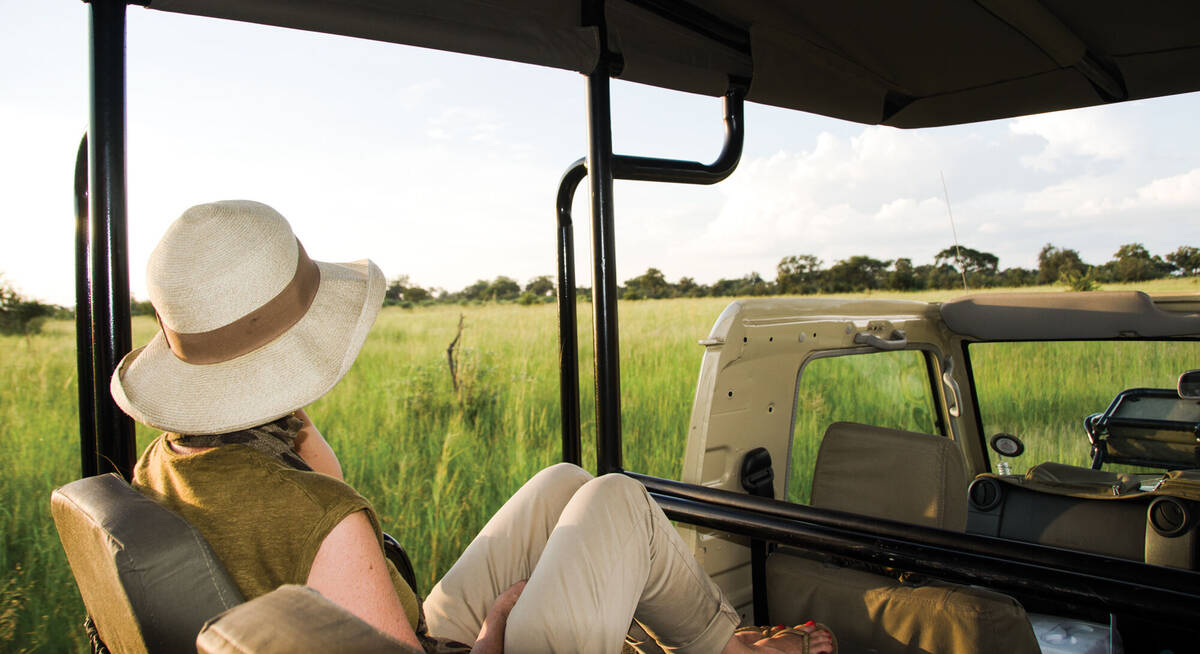
Rock Hare Self-drive Safari
20 days • 12 locations WINDHOEK AIRPORT TO VICTORIA FALLS AIRPORT
An in-depth look at Namibia from the Namib Desert to the Caprivi, with additional stops in Botswana and Victoria Falls. This three-week adventure includes an unrivalled mix of environments and is great value.
US$5,100 - US$7,270 per person
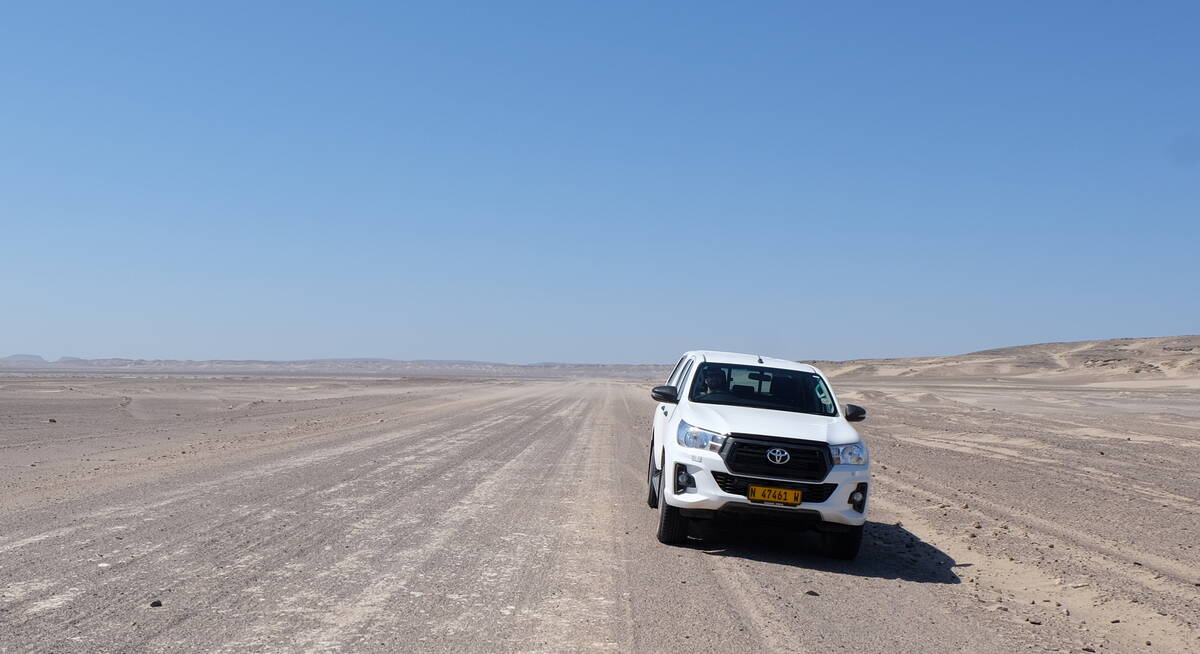
Caracal Self-drive Safari
14 days • 8 locations WINDHOEK AIRPORT TO WINDHOEK AIRPORT
The quintessential Namibian self-drive adventure exploring the highlights from Sossusvlei and the Namib Desert to Damaraland’s wilderness and a safari in Etosha. A great mix of accommodation and excellent value.
US$2,310 - US$3,900 per person
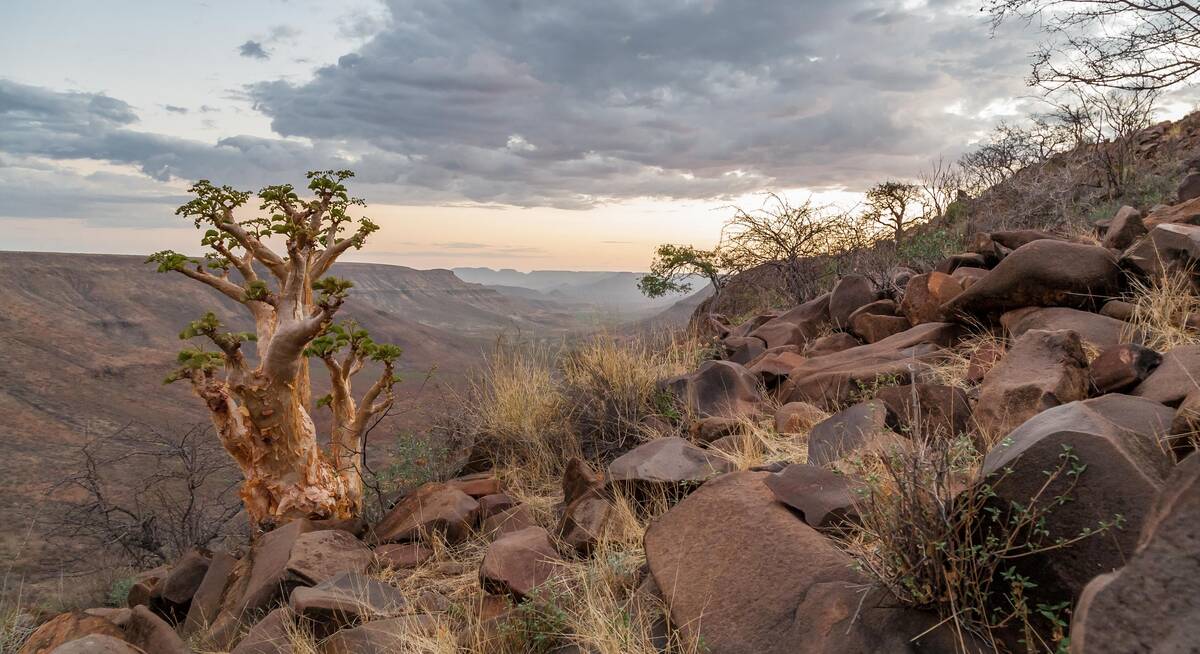
Dune Lark Fly & Drive Safari
A combination fly-in self-drive exploration of Namibia, with quick, easy and scenic flights in and out of Sossusvlei before a classic road trip adventure of the country’s rugged north.
US$4,380 - US$5,630 per person
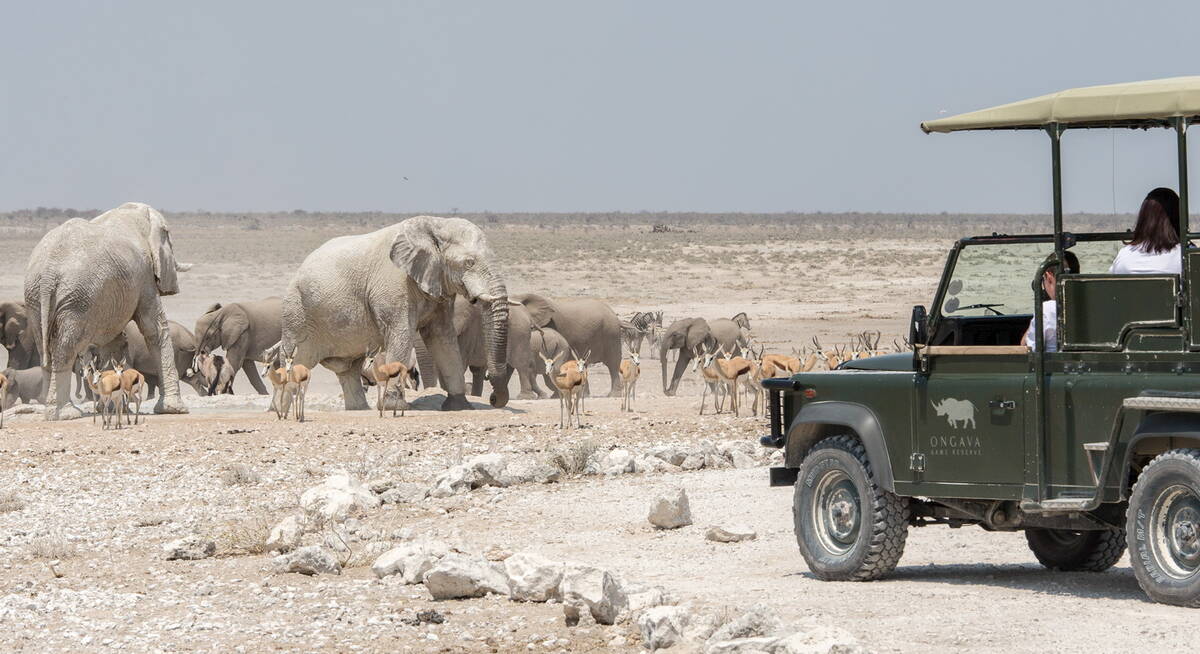
Brown Hyena Self-drive
The perfect trip for those who want to mix the adventure and freedom of a self-drive with some of our favourite luxury camps in Namibia and a great mix of activities.
US$5,980 - US$7,640 per person
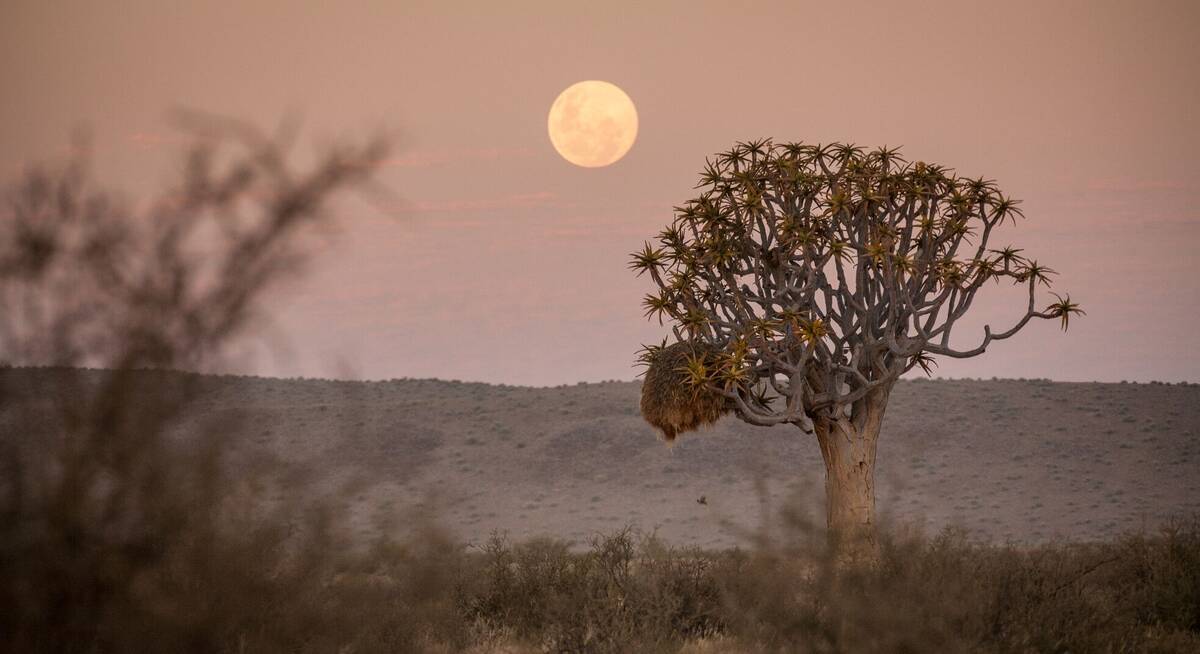
Quiver Tree Self-drive Safari
14 days • 7 locations WINDHOEK AIRPORT TO WINDHOEK AIRPORT
An offbeat Namibian self-drive adventure exploring the epic Fish River Canyon and fascinating Kolmanskop ghost town in the south, before turning north via the classic highlights of Sossusvlei, Swakopmund and Damaraland.
US$2,300 - US$3,170 per person
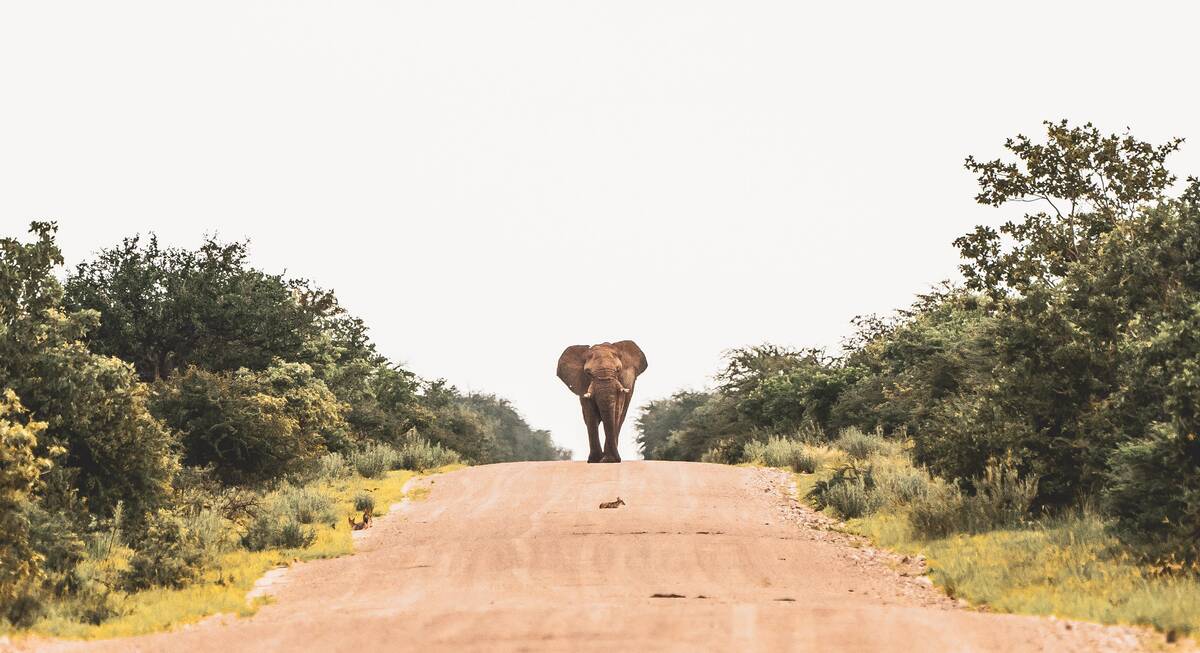
Black Wildebeest Self-drive Safari
19 days • 10 locations CAPE TOWN AIRPORT TO WINDHOEK AIRPORT
Journey from South Africa’s cosmopolitan Cape Town to central Namibia’s Okonjima Nature Reserve during this self-driven safari. The route passes through a stunning variety of landscapes, offering access to this beautiful continent’s rich diversity.
US$3,190 - US$3,670 per person
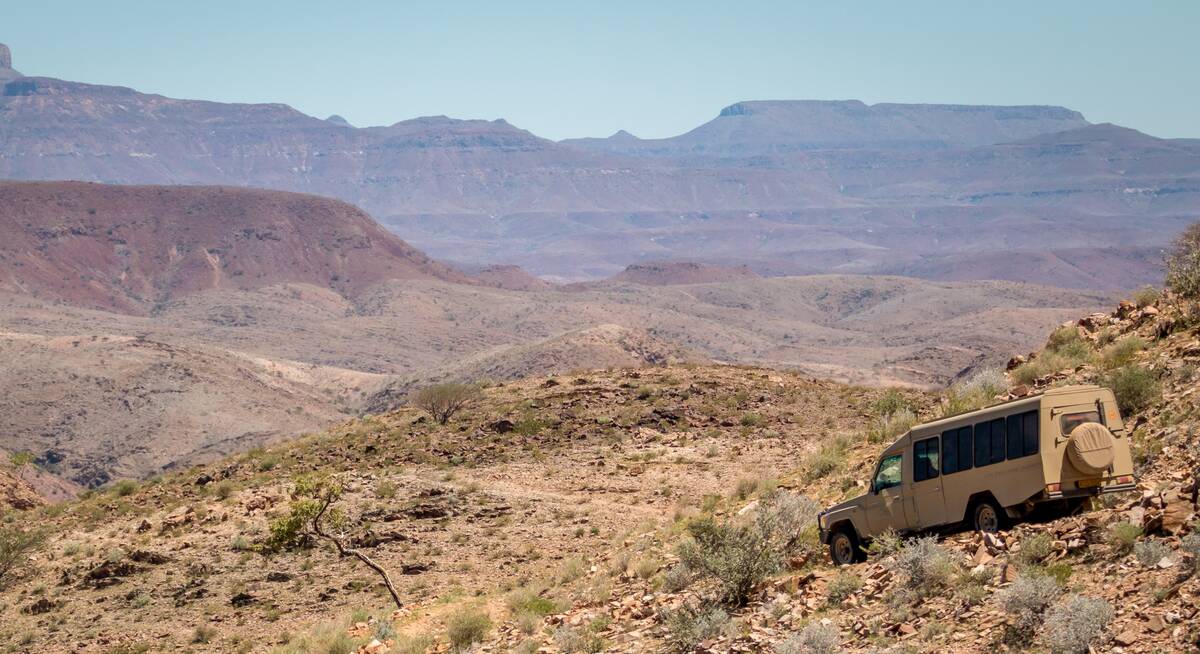
Cape Fox Guided Safari
13 days • 7 locations WINDHOEK AIRPORT TO WINDHOEK AIRPORT
A classic clockwise circuit around Namibia’s northern highlights with a private guide and vehicle. We can’t think of a better way to see more in this timeframe.
US$8,110 - US$10,340 per person
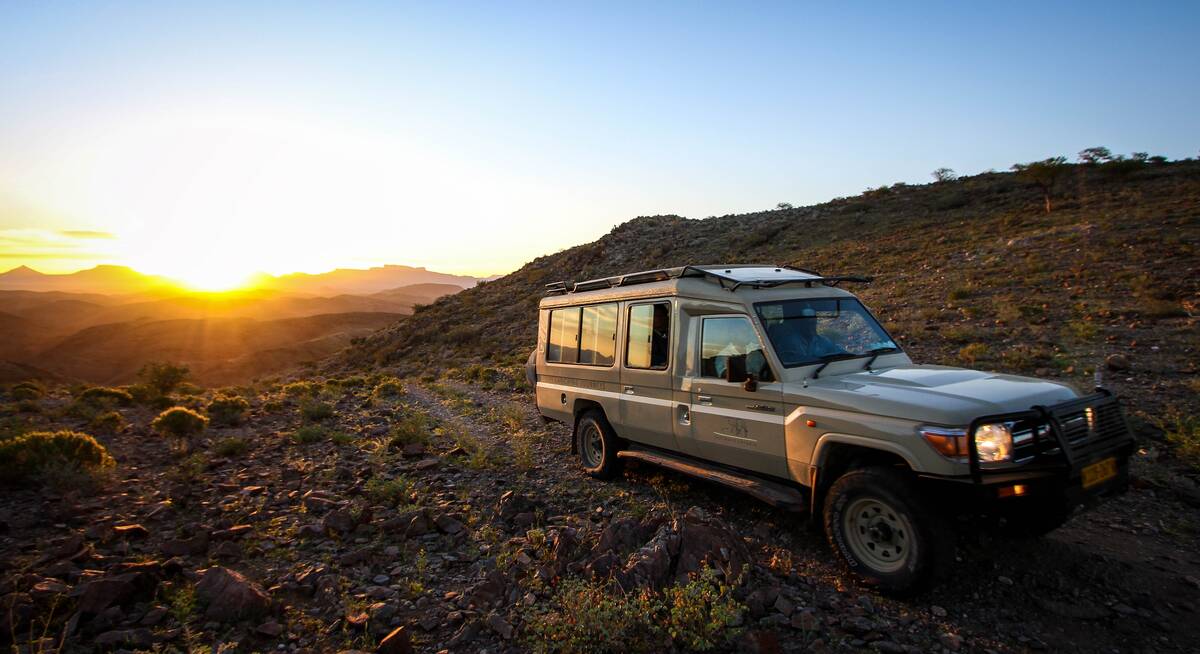
Black-faced Impala Guided Safari
13 days • 6 locations WINDHOEK AIRPORT TO WINDHOEK AIRPORT
A unique mix of luxury and adventure in our original, and perhaps most varied, destination on a privately guided Namibian overland safari. Perfect for families, friends or couples travelling together.
US$4,720 - US$6,210 per person
View all holidays
Our travellers' 10 most recent Namibia holidays reviews
At Expert Africa, the feedback we receive from our travellers is invaluable.
It helps us to stay up to date with the latest developments, which in turn helps our travellers to plan their trips; it even helps us to understand our travellers better. It’s also very important to our partners running lodges and safari camps across Namibia, who appreciate such genuine and constructive feedback.
All our Namibia holiday reviews are published in full without us editing them. See all 1609 reviews of Namibia safaris holidays here , or click on a card below to read one of the most recent reviews in full.
Arrived 7 Feb 2024, 17 nights
"This was truly very special!"
Overall rating: Excellent
Arrived 29 Sep 2022, 22 nights
"My Sep 2022 trip"
Arrived 15 Dec 2023, 23 nights
"My Dec 2023 trip"
Arrived 13 Jan 2024, 13 nights
"My Jan 2024 trip"
Arrived 11 Dec 2023, 13 nights
Arrived 11 Nov 2023, 35 nights
"My Nov 2023 trip"
Arrived 23 Nov 2023, 13 nights
Arrived 7 Nov 2023, 13 nights
Overall rating: Good
Arrived 12 Nov 2023, 25 nights
Arrived 3 Nov 2023, 19 nights
"Namibia November 2023"
See all Namibia reviews
Our travellers' wildlife sightings across Namibia
While they are in Namibia, many of our travellers record their wildlife sightings for us – from big cats and elephants to black rhino and brown hyena – and kindly share these with us when they are home. Citizen science in action!
Their feedback gives us a unique picture of the distribution of various species, so we in turn can tell other travellers their best chances spotting individual species during a Namibian safari. ( Read how this wildlife survey works. ) The percentages below give just an “average” percentage of the likelihood of a safari visitor seeing each species in Namibia.
For full details of sightings at individual camps and lodges, our species-by-species interactive map shows the best locations for wildlife viewing in Namibia .
83% success
81% success
70% success
69% success
68% success
56% success
52% success
50% success
48% success
47% success
22% success
20% success
18% success
17% success
16% success
13% success
Where to find Namibia’s key wildlife species
Our travellers’ feedback on their wildlife sightings helps us to work out the best camps and lodges to see Namibia’s key wildlife species.
Whether you’re driven by spotting a cheetah in Namibia in Namibia, or your must-see animal is a desert-adapted elephant , we can help. Take a look at our data-driven maps , which show the best places to actually see each species within Namibia’s extraordinary diverse range of habitats.
For a specific data-driven map of the best camps and lodges for sightings of a particular species, click on a card:
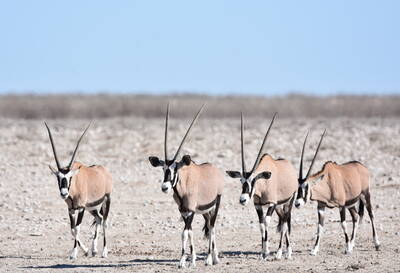
Oryx are impressive antelopes, with a powerful physique and elegant markings set off by rapier-like horns. They cut a distinctive dash in some of Africa’s harshest landscapes.
70% SUCCESS
1,272 sightings from 1,825 observations
Where to see oryx in Namibia
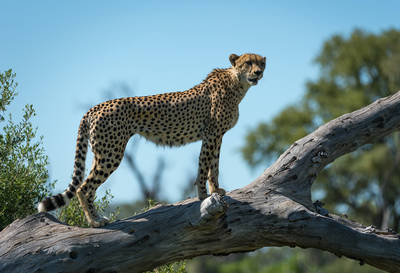
Acinonyx jubatus
The cheetah is the fastest land animal and the only cat that hunts by pure speed. Found largely in open grasslands, its slim, elegant form is today an increasingly rare sight.
33% SUCCESS
1,014 sightings from 3,059 observations
Where to see cheetah in Namibia
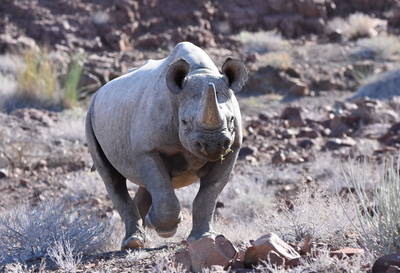
Black Rhino
Diceros bicornis
The black rhino is the smaller and rarer of Africa’s two rhino species but has the more fearsome reputation. Shy and heavily persecuted, it tends to stick to cover.
31% SUCCESS
610 sightings from 1,973 observations
Where to see black rhino in Namibia
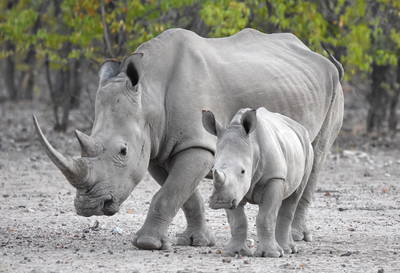

White Rhino
Ceratotherium simum
The white rhino is the largest and most numerous of the world’s five rhinoceros species. They are larger, easier to see and generally more approachable than the black rhino.
44% SUCCESS
478 sightings from 1,086 observations
Where to see white rhino in Namibia
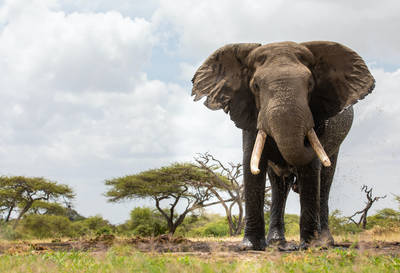
Loxodonta africana
By far the biggest of the so-called Big Five – indeed, the largest land animal on the planet – the elephant shapes the very landscape it inhabits and is a defining presence on any safari.
91% SUCCESS
3,515 sightings from 3,861 observations
Where to see elephant in Namibia
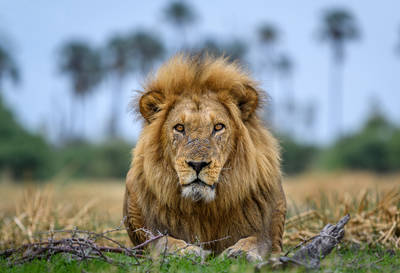
Panthera leo
Lions are at the top of the food chain and also most safari wish-lists, but with their numbers falling fast, any encounter with these majestic apex predators always feels like a privilege.
81% SUCCESS
2,942 sightings from 3,613 observations
Where to see lion in Namibia
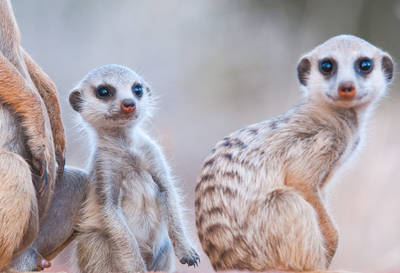
Suricata suricatta
These highly sociable little mammals have an endearing appearance and comical antics. Found in the drier areas of Southern Africa, close encounters are a sought-after experience.
22% SUCCESS
85 sightings from 395 observations
Where to see meerkat in Namibia
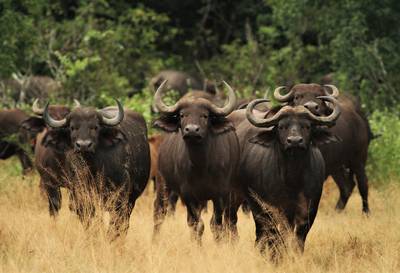
Syncerus caffer
One of the ‘Big Five’, buffalo earned a fearsome reputation in hunters’ tales. By contrast, big herds of these sociable bovids are placid, but mount formidable defences against predators.
83% SUCCESS
2,482 sightings from 2,995 observations
Where to see buffalo in Namibia
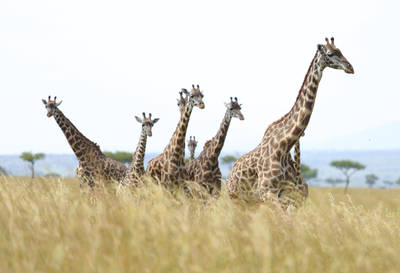
Giraffa camelopardalis
The world’s tallest land mammal, giraffes are herbivores which have evolved many unique adaptations. Their iconic outlines tower above the bush in many of Africa’s wildlife areas.
86% SUCCESS
3,386 sightings from 3,924 observations
Where to see giraffe in Namibia
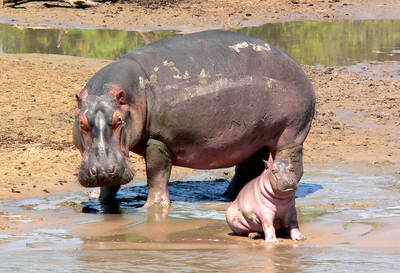
Hippopotamus amphibius
The territorial calls of the hippo create a signature soundtrack to Africa’s rivers & wetlands. Despite an endearing smile, this aquatic herbivore has a notoriously aggressive disposition.
89% SUCCESS
2,570 sightings from 2,885 observations
Where to see hippo in Namibia
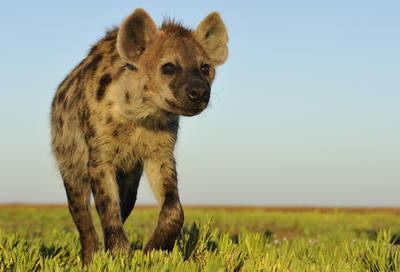
Spotted Hyena
Crocuta crocuta
The spotted hyena may be thought of as ‘ugly’ and ‘cowardly’. In fact, this versatile and intelligent carnivore is one of Africa’s most fascinating and warrants attention on any safari.
55% SUCCESS
2,105 sightings from 3,812 observations
Where to see spotted hyena in Namibia
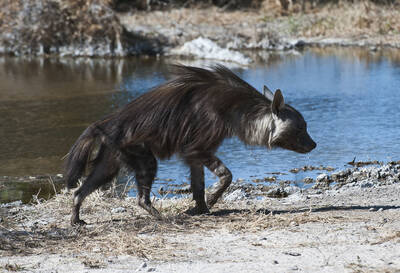
Brown Hyena
Parahyaena brunnea
This largely solitary scavenger is one of the more elusive and little-known of Africa’s carnivores. Shaggier than its spotted cousin, it occurs only in the arid southwest of the continent.
17% SUCCESS
239 sightings from 1,448 observations
Where to see brown hyena in Namibia
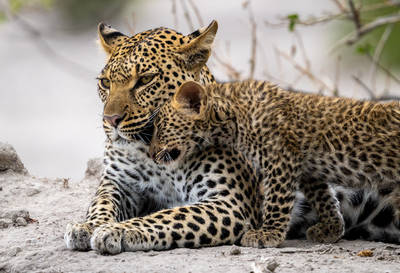
Panthera pardus
The most numerous of Africa’s big cats, leopard occur across many habitats, from wild tracts to populated areas. Their grace and their elusive nature make them a unique safari drawcard.
47% SUCCESS
1,879 sightings from 3,999 observations
Where to see leopard in Namibia
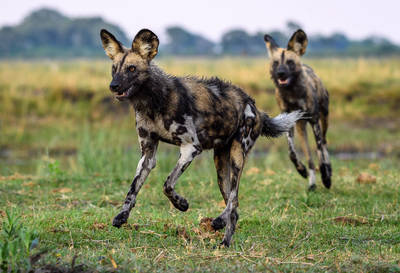
Lycaon pictus
African wild dogs are among the continent’s most compelling animals. Much misunderstood, these rare, tie-dyed canids are amazingly efficient hunters with a fascinating social life.
841 sightings from 2,685 observations
Where to see wild dog in Namibia
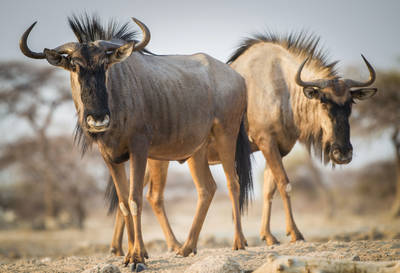
Connochaetes sp.
Superficially bovine in appearance, wildebeests are known for their spectacular migrations sometimes in huge numbers. These resilient animals are some of Africa’s most successful herbivores.
68% SUCCESS
2,390 sightings from 3,533 observations
Where to see wildebeest in Namibia
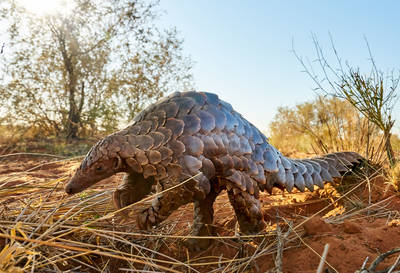
Smutsia sp.
Pangolins appear to be more pine cone than animal in their unique armoury of scales. These nocturnal, ant-eating oddities are not only highly elusive but also increasingly rare.
52 sightings from 3,214 observations
Where to see pangolin in Namibia
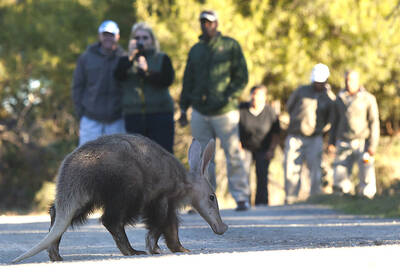
Orycteropus afer
The aardvark is one of Africa’s most bizarre and enigmatic animals. A shy, nocturnal termite-eater, signs of its presence may be scattered about the bush whilst sightings remain elusive.
67 sightings from 3,219 observations
Where to see aardvark in Namibia
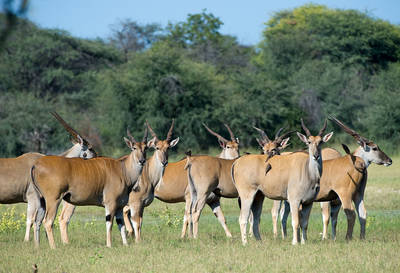
Taurotragus oryx
Africa’s largest antelope, eland are culturally important from prehistoric rock art to modern game farms. Though widespread, they are also shy so sightings are uncommon and often fleeting.
49% SUCCESS
1,414 sightings from 2,888 observations
Where to see eland in Namibia
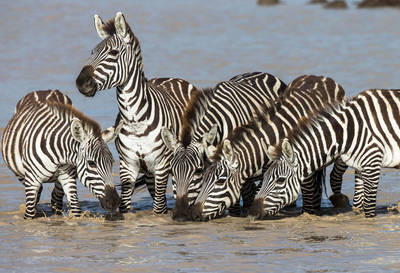
The zebra is a quintessential African animal: the horse in stripy pyjamas at the end of every child’s A–Z. There are three species, of which the plains zebra is much the most common.
84% SUCCESS
3,693 sightings from 4,379 observations
Where to see zebra in Namibia
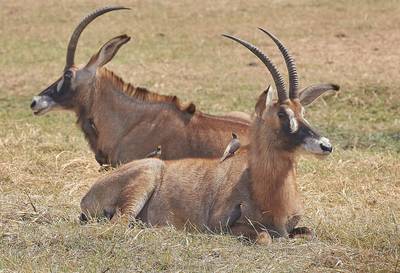
Roan antelope
Hippotragus equinus
Africa’s second largest antelope and one of its most handsome, with a powerful build and distinctive markings, roan are wary of people, but renowned for their bravery against predators.
23% SUCCESS
457 sightings from 1,959 observations
Where to see roan antelope in Namibia
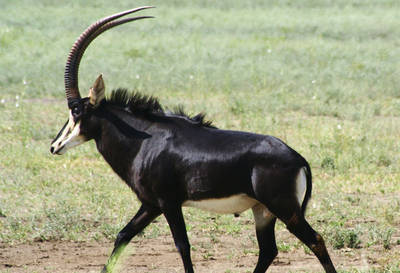
Sable antelope
Hippotragus niger
Perhaps Africa’s most beautiful antelope, sable are renowned for their combative nature, even holding off lions. Shy and restricted in range, sightings of sable are always special.
436 sightings from 1,953 observations
Where to see sable antelope in Namibia
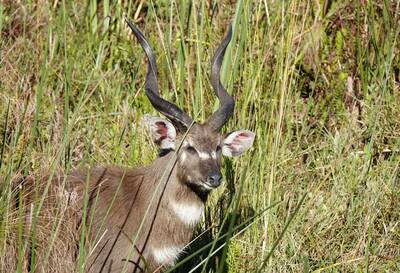
Tragelaphus spekii
The sitatunga is the most aquatic of Africa’s antelopes and specially adapted to its swampy habitats. Though widespread across Africa, only a handful of places offer reliable sightings.
19% SUCCESS
60 sightings from 316 observations
Where to see sitatunga in Namibia
When to go on a Namibia holiday
Key to planning any holiday to Namibia – from an adventurous road trip to a top-notch guided safari – is weather.
The good news is that there’s no “wrong” time to visit Namibia: the climate is generally dry and pleasant. Temperatures are typically warm or hot during the day, although in desert areas between June and August they may fall below freezing at night. Rainfall is fractional along the coastal fringes, whereas further east it tends to fall largely between November and March – often in the form of short, sharp thunderstorms.
For wildlife watching, especially in Etosha , April to October are the best months, when animals are drawn to the park’s perennial water sources. Prices tend to peak in July and August. Conversely, the wetter season is cheaper, less crowded – and an excellent time for birders. Click on the months below; and see here for historic rainfall and temperatures in Namibia .
Namibia in January
January is at the heart of Namibia’s rainy season. However, as you’d expect from a country dominated by desert and semi-desert environments, the rains are often (but not always) weak and usually quite localised. Some days will be clear, the strong sun raising temperatures to around 30ºC/86ºF; on others humidity and clouds build, sometimes culminating in spectacular thunderstorms. In extreme cases, these generate flash-floods which race down the beds of ephemeral rivers. Across the country, the greening landscape makes a refreshing change, especially in desert areas. Many birds are in full breeding plumage and migrant species are here in force. In the north, where the rains are more reliable, the abundant water and food allows wildlife to disperse, making it trickier to spot.
- Variable weather: clear, hot & dry, or cloudy & humid with some rain
- Occasional, highly localised thunderstorms
- Many animals with young; birdlife at its most spectacular
- Wildlife dispersed & harder to see, especially in Etosha & the Caprivi
- Very few tourists (apart from the New Year) so rates mostly low
This is not a great time to visit
Weather in January
Namibia in February
February is the wettest month, but as Namibia is dominated by deserts, the rains are often weak and patchy. The variation in weather across Namibia is significant, too; the central highlands and Caprivi can see some heavy rain. More typically, some February days are clear with a hot, strong sun; others are cooler as cloudy skies build and, sometimes, culminate in short, spectacular thunderstorms. Occasionally these generate flash-floods, bringing ephemeral rivers to life and making travel more challenging. Across the country, the landscape feels green and alive; insects and smaller animals are more easily seen, and many birds and animals are raising their young. However, small pools in the bush and thicker vegetation can make it hard to spot the wildlife.
- Variable weather: clear, hot & dry or cloudy & humid with some rain
- Occasional localised thunderstorms meander over the landscape
- The bush feels alive; birdlife is at its most spectacular
- Wildlife in Etosha & Caprivi is dispersed & harder to see
- Few tourists, so rates usually at their lowest
Weather in February
Namibia in March
March usually sees Namibia’s main rains tailing off, although actual precipitation varies hugely across the country and can be unpredictable from day to day. Many days will be clear, with a strong sun driving temperatures up. On others, clouds will build, and the late afternoon may see a short, spectacular thunderstorm. Such deluges reduce in both frequency and volume as the month progresses. Across the country, landscapes are often vivid: a “green and pleasant land”. Many birds and animals are finishing raising their young, so smaller animals and insects are in evidence. In the north, where rains are generally heavier, pools in the bush and thicker vegetation can make it difficult to spot larger animals.
- Afternoon thunderstorms less common as March progresses
- Animals looking sleek and well-fed, after 3–4 months of plenty
- Few tourists visit during March, so rates often low
A good time to visit, with pros & cons
Weather in March
Namibia in April
Typically, April is dominated by dry weather; there’s an ever-decreasing chance of rain. Temperatures are now below their peak and continue to fall. Even so, days remain pleasant and warm, but there might be a slight chill in the air at night. The rains usually leave many parts of the country verdant and green, so animals are in fantastic condition – often with fast-growing young in attendance. With the dust washed out of the atmosphere, photographers make the most of clear air, spectacular landscapes and healthy animals. Stargazers will have clearer night skies as the month progresses. In the game parks of Northern Namibia, water and food remain in plentiful supply, so finding big game can prove trickier than later in the year.
- Becoming drier &, especially at night, also cooler
- Few visitors, except around Easter, so rates remain low
- Wildlife in Etosha & Caprivi remains relatively hard to see
- Migrant birds have started to leave
- Fresh, clean air and often green, verdant landscapes
Weather in April
Namibia in May
By May, Namibia is usually drying out fast as the rains have ended. If they’ve been good, then the land remains green, but wildlife starts to congregate at more permanent water sources. Over much of the country the air quality and clarity can be amazing, making this an ideal month for photography. Typical days are warm, with crisp, clear mornings and clear blue skies. Evenings are usually cool, and temperatures may dip below 10ºC (50ºF) overnight. Many lodges still charge “low season” prices, although with Namibia’s increasing popularity in recent years, some have started to introduce higher “shoulder season” rates. May’s good-value rates, increasingly good wildlife sightings, beautiful landscapes and crystal-clear air combine to make this one of our favourite months in Namibia.
- Lovely weather: dry, warm days & cool nights
- The country is drying out although many landscapes remain green
- Fantastic air clarity – ideal for keen photographers
- Visitor numbers are often still low, mirrored by lodge rates
- Wildlife is starting to congregate more around remaining water
A very good time to visit
Weather in May
Namibia in June
Namibia is dry again. Skies are blue and usually largely cloudless. Days are lovely: warm and dry; nights are cold, sometimes below freezing in the desert. Most swimming pools in Namibia are always outdoors, making them too cold for all except the very dedicated. Take a warm hat and gloves for game drives, where dawn and dusk will feel particularly chilly. In the north, especially Etosha, wildlife viewing is now into its dry-season pattern, focusing around the waterholes – though the park is still not busy. Photographers come for superb air clarity, with minimal dust or smoke in the air. Historically, June rates have been low. However, with Namibia’s increasing popularity many lodges now count it amongst their “high-season” months, and request higher prices.
- Clear, bright days with blue skies; cold nights, mornings & evenings
- Great air quality, especially welcome for photographers
- “Shoulder season” for some lodges: lodge rates moderate
- Wildlife gravitates to waterholes, making game-viewing productive
- Some greenery in the landscape, depending on the last rains
Weather in June
Namibia in July
Reliably warm daytime temperatures (upwards of 20ºC/70ºF) and good wildlife sightings make this a popular month to visit Namibia. Rain would be very unusual indeed and clear skies make for great photographs. Once the sun sets, though, temperatures cool rapidly bringing cold nights that may dip below freezing in the desert. Be prepared: dress in layers and expect early-morning and late-afternoon drives, and anywhere coastal, to be cold. As the land dries and vegetation shrivels, game congregates beside drinking water: Etosha’s waterholes are busy with animals. Across the country, lodges charge “high season” rates; many are fully booked a year or more in advance, especially during European school holidays (from the latter half of July to late August).
- Dry days, warm in the sun, with crisp, cold nights
- Cloudless skies: July is usually superb for stargazing
- The beginning of European school holidays so more families travelling
- Peak season: so high rates and many lodges fully booked far in advance
- A fantastic time of year for wildlife watching, particularly in Etosha
Weather in July
Namibia in August
August is the height of Namibia’s “winter”. Expect cloudless skies and plenty of warm sun in the day, but nights down to freezing in the desert. Dress in layers and bring warm clothes (including hats and gloves) for chilly starts and evenings. Only the hardiest even contemplate using outdoor pools. It’s 3–4 months since any rain, so the land is dust-dry and much vegetation is golden brown. Many landscapes appear sparse and harsh. Wildlife congregates around available water sources, helping to guarantee good animal sightings. Namibia is never really “busy” by the standards of Europe or the USA, but August is the most popular time to visit, especially for families. Book early (over a year in advance) if you want to stay at the best lodges.
- Dry days, warm in the sun; cold mornings, evenings & nights
- Cloudless skies in the day; spectacular stars at night
- Busy by Namibian standards: family rooms in particular demand
Fantastic: the very best time to visit
Weather in August
Namibia in September
September is a month of blue, cloudless skies and fantastic wildlife viewing. Rain is almost unheard of. As the month progresses, the days and nights get warmer. In some areas, daily maximums hit around the low 30s Celsius, although low humidity ensures this feels comfortable. The contrast makes the nights seem very cold. The air is becoming dustier, occasionally augmented by smoke from fires – so becoming hazy for photographic purists. In the national parks, animals congregate around remaining water sources – making September one of the best months for game viewing. Hence it’s one of Namibia’s most popular months for visitors: a “high season” month that is often the time of choice for safari aficionados.
- One of the best months for wildlife viewing
- Warm days & cold nights, with temperatures rising during the month
- Many plants have faded from green to golden brown
- Air can be hazy – with dust & sometimes smoke
- High season rates; many lodges & camps are full 9 months in advance.
Weather in September
Namibia in October
Namibia is usually at its hottest and driest in October. Temperatures build as the month progresses; towards the end, daily highs may exceed 40ºC/100ºF, though with humidity close to zero, even this rarely feels oppressive. In exceptional years, isolated rain showers may fall in late October. More usually, the end of the dry season sees wildlife watching at its best, particularly in Etosha. The place feels like a desert as spectacular herds of thirsty animals gather around the available water. October is popular amongst wildlife enthusiasts and commands peak-season prices, even if dust and smoke may make the air hazy, challenging photographers. Visitor numbers can fade towards the end of the month, allowing a window for last-minute bookings.
- Probably the most spectacular month for wildlife-viewing in Etosha
- Hot and dry: much of the country feels like a desert
- The air can be hazy with dust & smoke
- It’s peak time to visit, so expect high season rates
- Lodges & camps are full, especially early in October
Weather in October
Namibia in November
November is always a bit unpredictable: sometimes dry and hot; sometimes cloudier and cooler. Typically, mornings are hot and cloudless and clouds appear in the afternoon. Humidity builds and eventually breaks, resulting in spectacular thunderstorms that bring convection rainfall in late afternoons. Such storms are typically sparsely distributed and highly local – being completely absent from desert areas, for example. Places that do get good rain will flush green, with a tangible feeling of new life softening the landscapes. Many mammals give birth to their young. Once any rains come, wildlife dissipates in search of food, and game viewing in Etosha becomes harder. Conversely, this is a great time for birdwatchers, with migrant species in breeding plumage.
- A very interesting, variable month, depending on the rains
- With rains come an amazing explosion of both vegetation & new life
- Wildlife viewing better in Damaraland than Etosha if it has rained
- Shoulder season: mid-range rates offer great value
- Away from the Namib, showers are more likely later in the month
Weather in November
Namibia in December
December is the first “proper” month of Namibia’s rainy season, and one of its hottest. Clear mornings give way to building clouds and, with luck, the occasional short, spectacular thunderstorm: refreshing and cleansing. These are often highly localised and generally warmly welcomed: most Namibians love rain! Rains clear the air of dust. Even relatively short showers enable plant life to erupt, carpeting this thirstland in green and providing food for the young animals which abound. Animals disperse widely, which can make game viewing challenging. Many birds are breeding and so sporting their most colourful plumage. Christmas and the New Year fall within local “summer holidays” – so places to stay can be surprisingly busy, especially in and around coastal towns, where temperatures are cooler.
- Hot and humid; sometimes refreshed by cooling showers
- Landscapes flushed green if/where there has been rain
- A tangible life and energy amidst this often green & pleasant land
- Very photogenic: blooming deserts amidst crystal-clear air
- Best time for birdwatchers; larger animals harder to spot
Weather in December
Country guide
A guide to visiting Namibia
Take a Namibia holiday; this is African travel at its most varied! Flying in, driving yourself, or being guided: the choice is yours.
A classic Namibian holiday might feature sunrise on top of the world's highest dunes; a day relaxing in a hot mineral spring at the foot of the world's second-deepest canyon; a wildlife safari watching lion stalk huge herds of antelope – and an evening observing wild black rhino by moonlight.
You can meet a cheetah at close quarters, stroll through a petrified forest, marvel at ancient rock paintings and see footprints as old as a dinosaur – or as fresh and close as a leopard outside your tent. Namibia is a real travel adventure, like nowhere else on earth.
Where to go in Namibia
Namibia’s key attractions are relatively undervisited, so even seeking out dense herds of big game in Etosha National Park , or taking in the show-stopping scenery of the Namib-Naukluft National Park , there’s no sense of crowds. More offbeat is Damaraland , home to black rhino, elephant and other desert-adapted animals. Then there is the vast, coastal wilderness of the Skeleton Coast , or the rugged mountains of semi-desert Kaokoland , and Bushmanland : these are Namibia at its most remote. If adventure beckons, head for Namibia’s adrenalin capital, Swakopmund , which along with duneboarding also boasts some exceptional desert excursions. Or marvel at the 500m-deep Fish River Canyon , a spectacular backdrop for hiking. And if you have time to explore further, consider the more verdant Caprivi Strip , or Zambezi Region, where you can combine a classic safari with boat trips on narrow waterways and perhaps add on a visit to Victoria Falls .
How to explore Namibia
Travel in Namibia is very easy – although how you travel is at least as crucial as where you travel. The options are largely between a self-drive road trip, a fly-in trip, and a privately guided safari – although a mix of two or even all three is certainly possible. Most popular is to drive yourself, giving you the freedom to travel where you want, at your own pace. With long, straight roads and minimal traffic, Namibia excels at self-drive trips. A fly-in safari may not be the cheapest way to visit, but flying around Namibia can be simply amazing, taking in superb scenery during flights of some 30 minutes to a few hours. Or if you fancy a road trip, but driving yourself doesn’t appeal, how about a privately guided safari – where you are driven to the places you want to go by an expert guide with an in-depth knowledge of the country and its wildlife?
Where to stay in Namibia
From luxury lodges and safari camps to personal B&Bs and simple campsites, Namibia offers the full spectrum of places to stay. Even in the most popular destinations, such as Etosha and the Namib-Naukluft , there are a range of options that will appeal to most travel preferences. The best lodges tend to have their own knowledgeable guides, who can add considerably to your enjoyment – of both the wilderness and the wildlife. You can expect a good standard of comfort and cuisine, and some may have extras such as spa facilities. Guesthouses and B&Bs are something of a specialty in Namibia. A hearty breakfast is the norm, returning to a home-cooked dinner in the evening – or, in the towns, to a selection of restaurants within easy reach. At the other end of the spectrum, camping comes into its own in Namibia’s national parks and wilderness areas – the perfect way to end the day’s adventure.
Where to see wildlife in Namibia
With its low population density and a diverse range of ecosystems inhabited by a surprising variety of wildlife, Namibia is a natural choice for a wildlife safari. Etosha National Park , the heartland of a Namibia safari, is home to elephants, lions, giraffes, rhinos and a plethora of antelope species. For hippos and crocodiles, make for the parks in the verdant Zambezi Region, at the east end of the Caprivi Strip , which also boasts exceptional birdlife, while for desert-adapted species, such as oryx, springbok and meerkats, the Namib-Naukluft National Park , Southern Namibia and Damaraland . Leopards generally inhabit rocky environments, but are most easily spotted on the Okonjima Reserve . More elusive is the brown hyena, occasionally seen looming out of the mists of the Skeleton Coast & Kaokoland . The coast also supports extensive population of Cape fur seals, along with dolphins, and even African penguins, while on the lagoons of Walvis Bay look out for flamingos and pelicans. Read more about Wildlife in Namibia – and see our data-driven maps showing where our travellers actually saw the various wildlife species.
Namibia in context: history, environment & people
Bordered to the west by the Atlantic Ocean, Namibia’s neighbours are Angola, Botswana , and South Africa . Along with the desert landscapes of the Namib and the Kalahari, the country also features sweeping tracts of savannah, rolling hills and the vast Etosha Pan . Namibia dates back to ancient times, when the San, Damara and Namaqua peoples roamed the land. During the 19th century it became a German colony until, as South-West Africa, it came under South African administration at the end of World War I. Independence for the ethnically diverse population came in 1990, with English now the official language. Afrikaans and German are also widely spoken, along with indigenous languages that include Oshiwambo, Herero and Nama. With perennial rivers only on its northern and southern boundaries, the population was traditionally based in the north but many now live in and around the coastal towns and the capital, Windhoek. For more on Namibia in context, read on.
Maps of Namibia: two styles
See Namibia in different ways, with two different styles of maps: a Google map and a curated Reference map .
Namibia is vast – and its low rainfall makes much of its geology exceptionally clear. Zoom into the areas and then the lodges on our maps for some amazing views of what the country is really like!
At this scale, note the apricot-orange in the south-west: the Namib Desert. Then double-click a few times to zoom in closer – and see the extraordinary patterns of the dunes themselves. Then look at the sharp, curved northern edge of the desert, where the Kuiseb River halts the march of the dunes northwards.
Double-click near “Etosha National Park”, and immediately you’ll spot the huge saltpan at the heart of Etosha.
Click onto any of the markers, and follow the links in the bubbles, for maps of these areas with precise locations for the various safari camps and lodges.
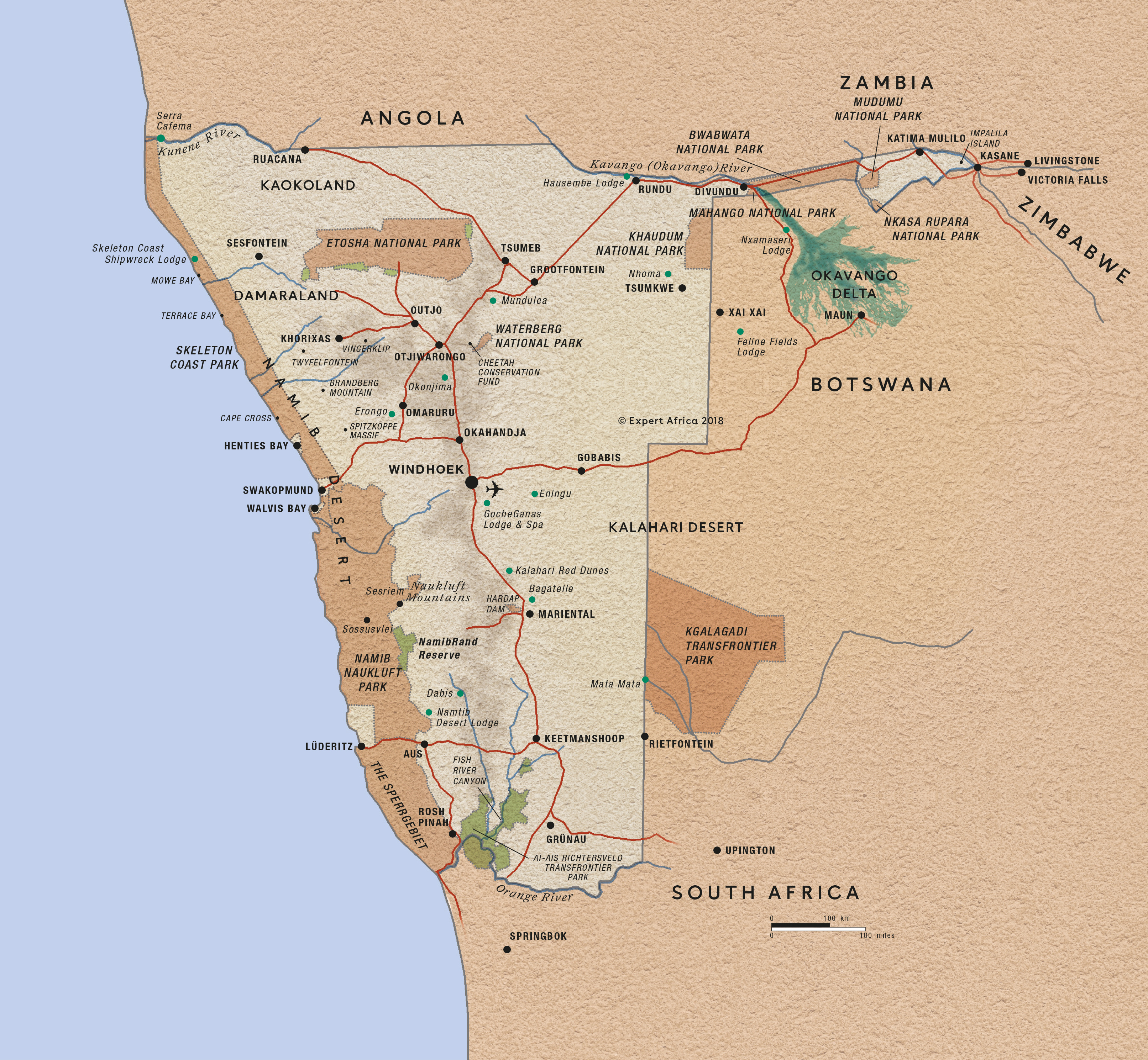
Need inspiration?
Let our trip chooser narrow down the options for you
Understanding more about travel in Namibia
Arguably the key factor involved in a Namibia holiday is how you travel: driving yourself, flying around, or with a private guide.
The way in which you choose to travel will also be affected by your time, your budget, and your personal interests. So those on a relatively low budget with an adventurous streak and plenty of time on their hands are likely to seek an entirely different style of holiday from the time-poor traveller seeking a luxury getaway-from-it-all vacation.
For a road trip without the hands-on commitment to driving, a privately guided safari may fit the bill. And for some travellers, a combination of two or even all of these choices may work the best.
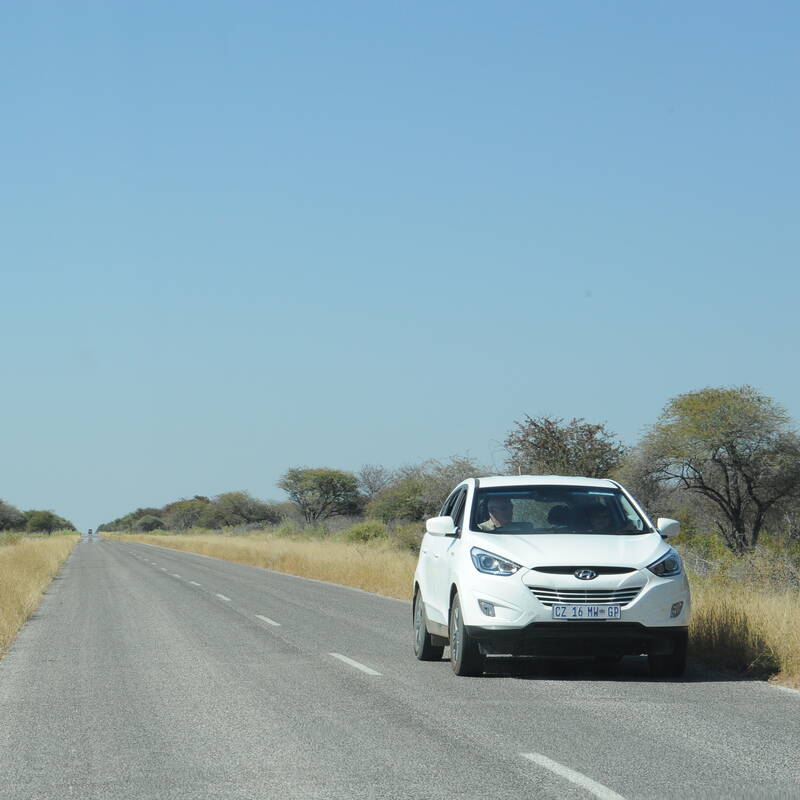
Self-drive - car types
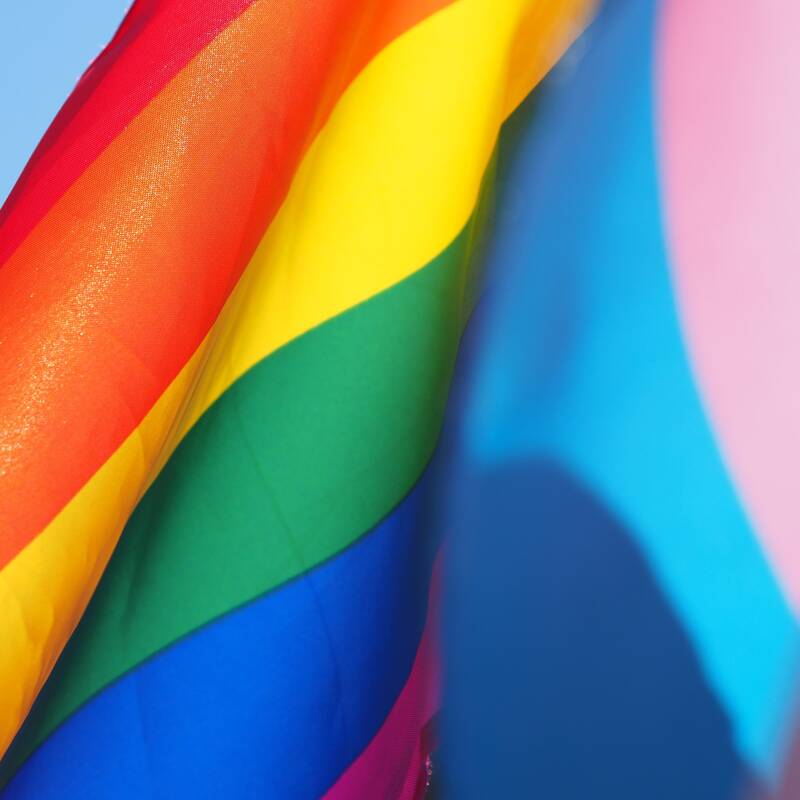
LGBT travel in Namibia
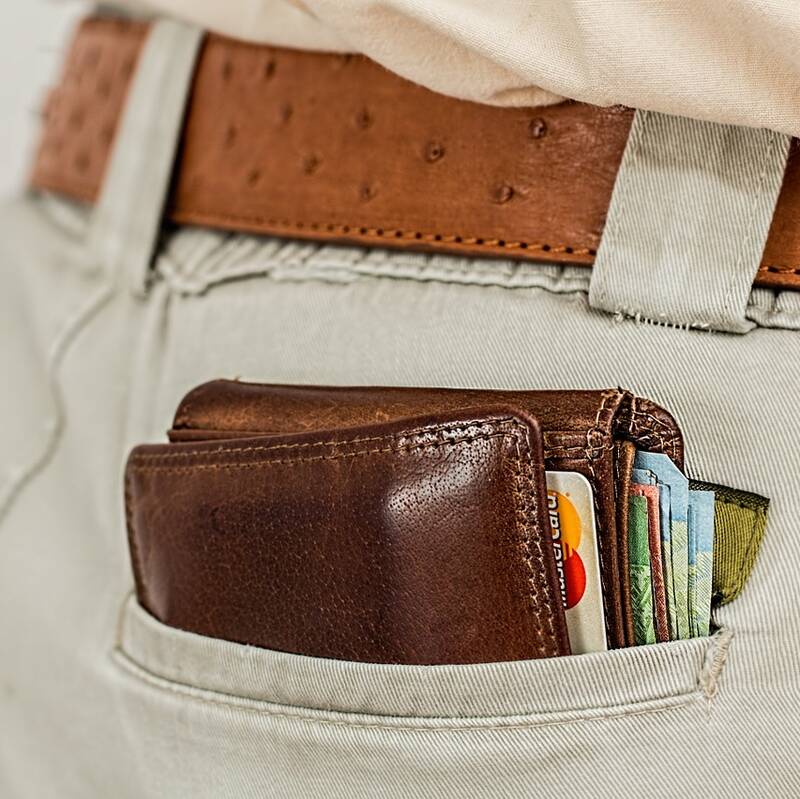
Tipping in Namibia
Self-drive - car types.
Driving yourself is arguably the most popular way to explore Namibia, provided you’re prepared for long days at the wheel. With total flexibility, you can create a unique adventure, experiencing the country's stunning landscapes and diverse attractions at your own pace. Key to making this work is choosing the best type of self-drive car for your trip. A 2WD car is often sufficient, though for travelling off the beaten track – and for your ease of travel and peace of mind – we usually suggest a higher-clearance vehicle for better visibility, especially in Etosha National Park, or a 4WD for more intrepid itineraries. See examples of the Namibia's car hire groups here . Namibia's roads are generally long, straight and relatively empty, with a tarmac surface on the main arteries, and well-maintained gravel roads elsewhere. Understanding our tips and techniques for driving on gravel roads will help you to enjoy the trip in safety. A self-drive road trip is likely to be the cheapest option for a Namibia holiday, particularly for a family or a small group of friends travelling in one vehicle.
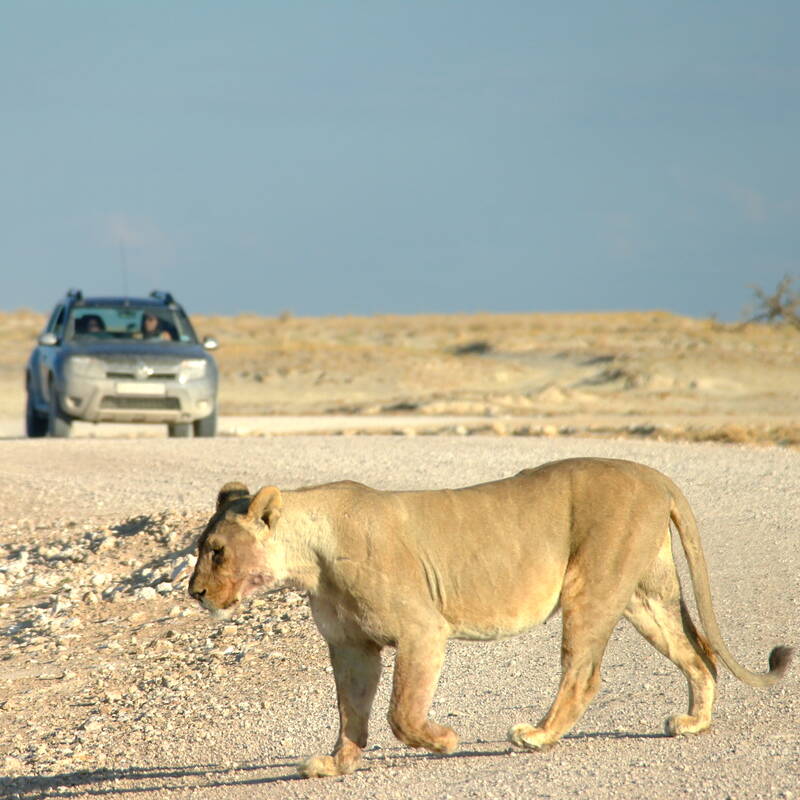
Lesbian, Gay, Bisexual and Transgender (LGBT) travel to Namibia
We have been sending travellers to Namibia since 1994 and have booked trips for many LGBT travellers in that time. We have never heard of any problems experienced on their travels due to their sexuality, and many have come back to us for regular repeat trips. This reflects our opinion that the vast majority of people in Namibia are friendly to visitors, irrespective of the gender and sexual orientation of the visitor. So in our experience, LBGT travel here is usually fine and uneventful. That said, it's important to be aware of both the law and the current climate of opinion. So do please check your government's latest travel advice before you go – and read more about this here: Read more about Lesbian, Gay, Bisexual and Transgender (LGBT) travel to Namibia.
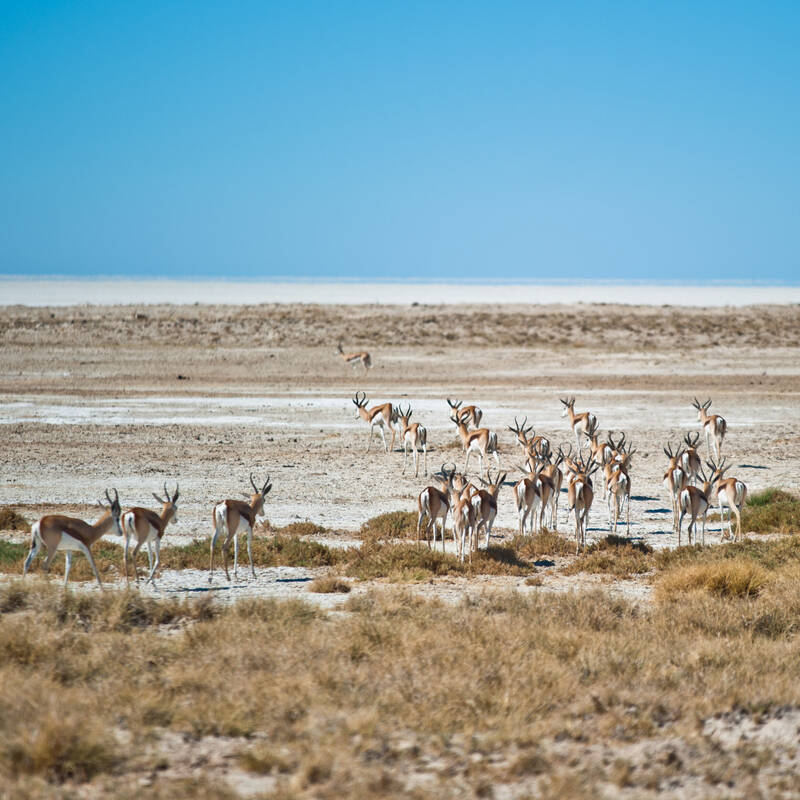
Tipping in Namibia, as in many other countries, is always voluntary, and should depend on the standard of service received. That said, we would encourage visitors to tip in appreciation of good service, while staying mindful of the importance and extent of the work someone is doing for you. Every successful safari or lodge stay is underpinned by a team of staff, all of whom work hard to ensure that their visitors enjoy their vacation. So when thinking about tips and tipping, do please consider them as well as your guide and your waiter, and remember to consider carefully the amount you tip. Usually we would recommend tipping at the end of your stay in any lodge or camp, perhaps using the staff tip box, or placing your tip in a named envelope or series of envelopes so that there can be no misunderstanding. Read more about tipping in Namibia.

Ideas for the best safaris & holidays in Namibia
From ephemeral rivers to the world’s highest sand dunes, wildlife parks to wilderness shores, Namibia’s diversity is legendary – and a holiday here can be as varied as the scenery. With impressive infrastructure, there are many different ways to explore:
Self-drive trips don’t need to be intrepid exploration; we’ll plan the trip with you and arrange a car, detailed maps and all the information that you’ll need to explore at your own pace.
Our fly-in safaris are perfect for those who don’t want to drive, or have very limited time, and they give a magical perspective on the country’s dramatic landscapes.
Guided safaris work particularly well for families or small groups of four or more travelling together. Then you’ll have a top private guide to take you all the way – and we can design the trip to be as adventurous as you wish.
Look through the suggestions below, then talk to us – and let us create the perfect Namibia trip for you.
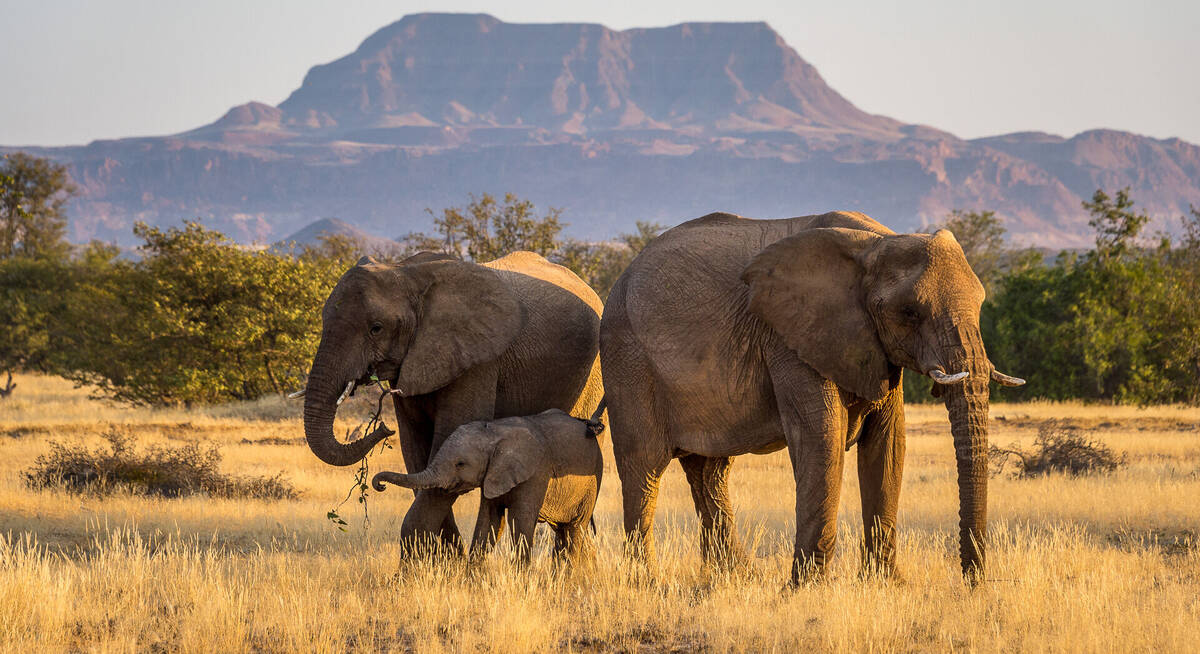
Hoopoe Fly-in Safari
11 days • 4 locations WINDHOEK AIRPORT TO WINDHOEK AIRPORT
This relaxed fly-in safari reveals Namibia at its best. Generous timings and a wide choice of activities help travellers to enjoy the best of the country’s most spectacular areas.
US$5,920 - US$8,880 per person
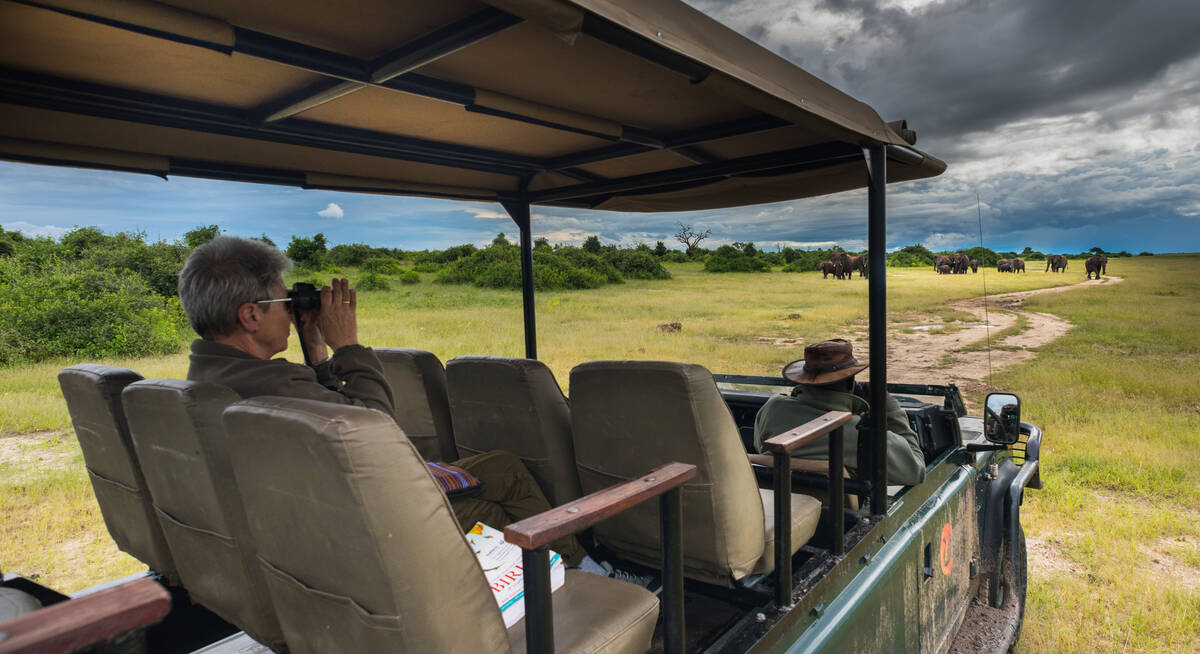
Pygmy Mouse Self-drive Safari
18 days • 10 locations WINDHOEK AIRPORT TO VICTORIA FALLS AIRPORT
A truly epic southern African self-drive safari adventure from Namibia’s mountains and deserts, along the lush Caprivi Strip to Botswana and Victoria Falls in Zimbabwe, staying at luxury lodges throughout.
US$5,400 - US$8,730 per person
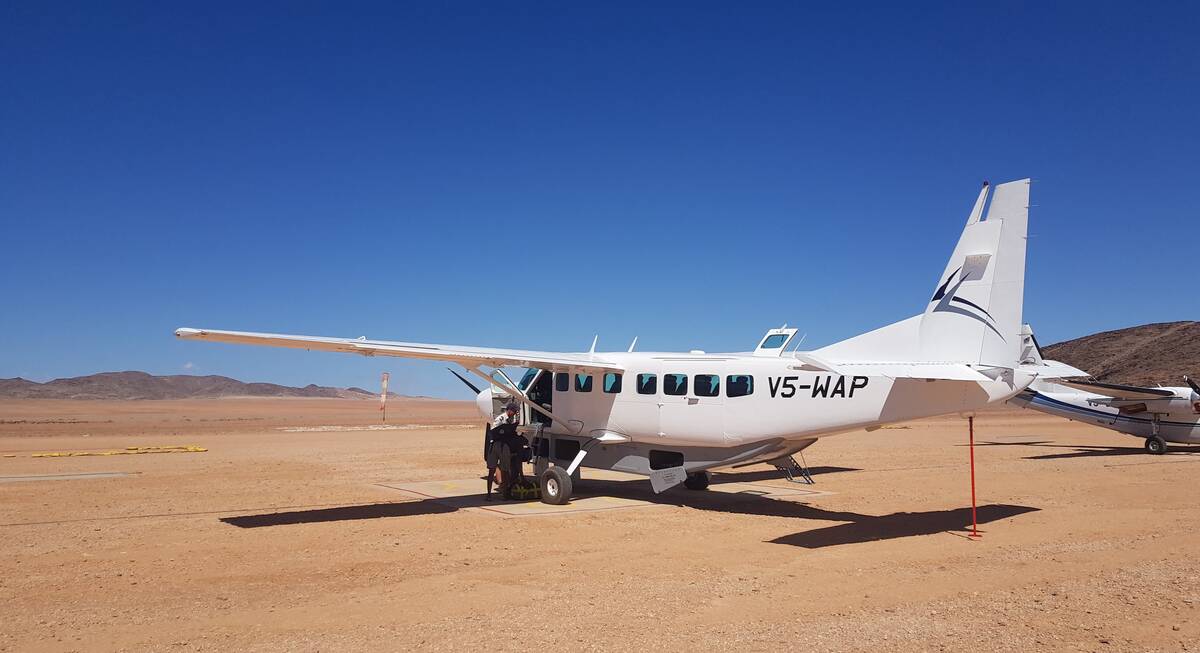
Flamingo Fly-in Safari
6 days • 3 locations WINDHOEK AIRPORT TO WINDHOEK AIRPORT
Short on time but big on experience, this luxury fly-in safari takes in Sossusvlei’s famous dunes and Etosha National Park’s captivating wildlife with stays at two excellent luxury lodges.
US$4,780 - US$6,520 per person
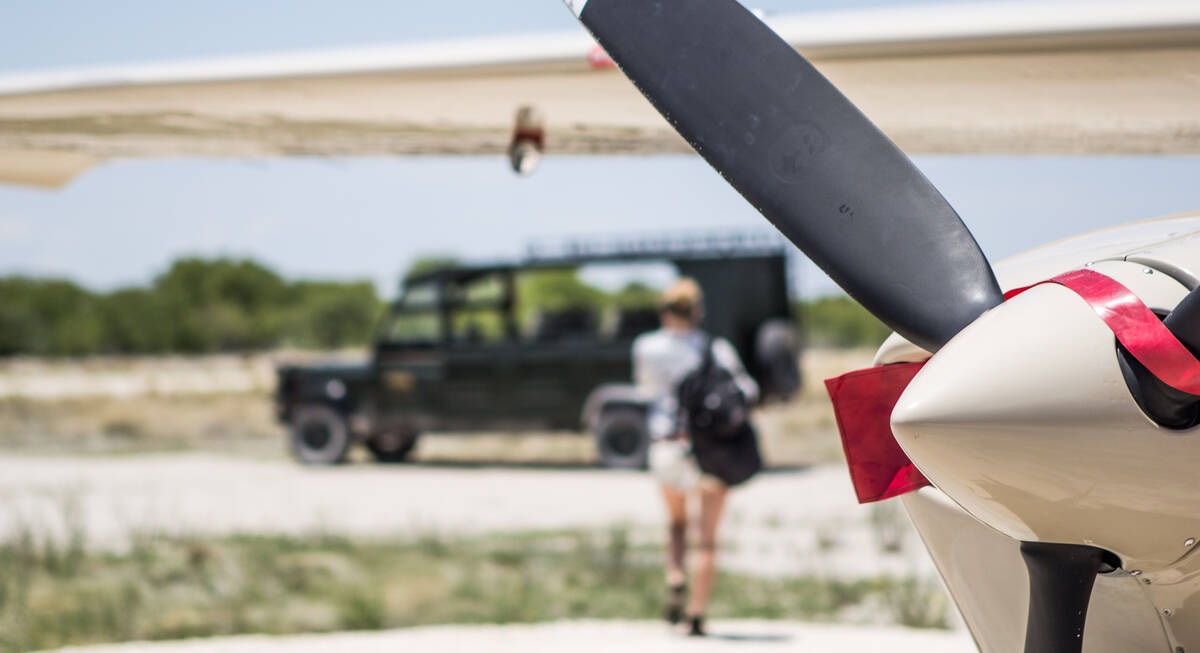
Bateleur Fly-in Safari
7 days • 4 locations WINDHOEK AIRPORT TO WINDHOEK AIRPORT
Classic fly-in Namibian safari staying at excellent camps. Explore Sossusvlei’s dunes and track Damaraland’s desert elephants before a safari in Etosha. Incredible scenery, good wildlife viewing and authentic cultural experiences.
US$5,630 - US$8,880 per person
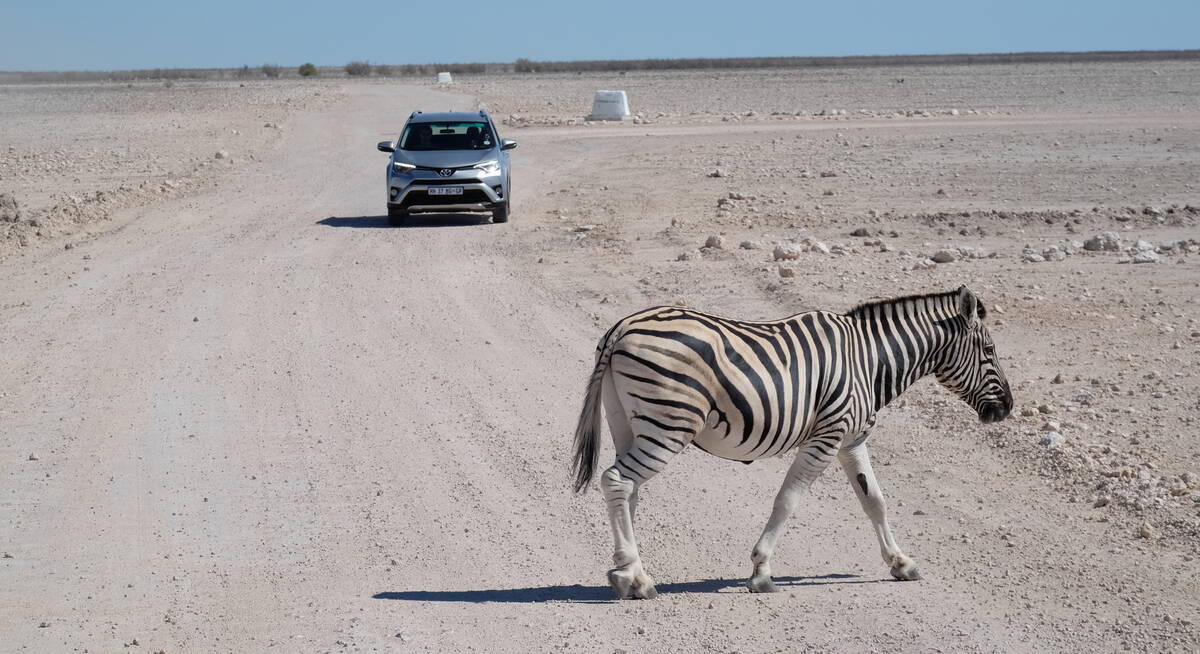
Namaqua Chameleon Self-drive
12 days • 7 locations WINDHOEK AIRPORT TO WINDHOEK AIRPORT
A classic 12-night self-drive adventure around the highlights of eastern and northern Namibia taking in Sossusvlei, Swakopmund, Damaraland, Etosha and a final stop at Okonjima. Comfortable lodges and great value.
US$2,770 - US$4,430 per person
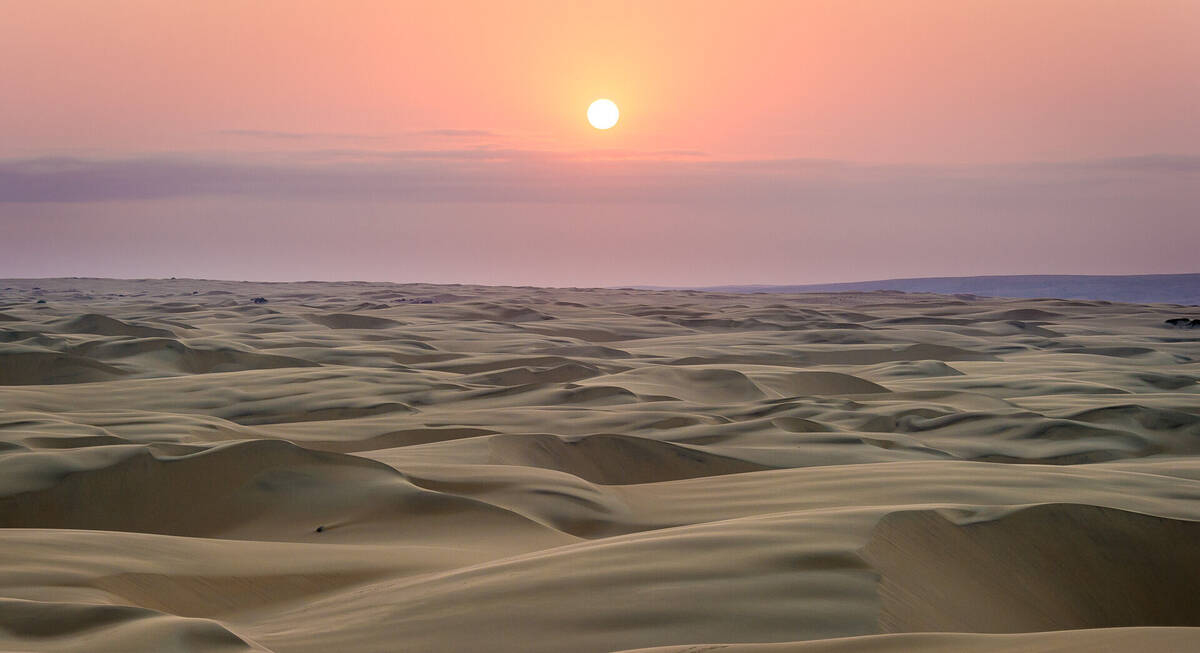
Ruppell's Korhaan Fly-in Safari
9 days • 4 locations WINDHOEK AIRPORT TO WINDHOEK AIRPORT
Explore Namibia’s remotest wildernesses while staying at some of the most exclusive luxury camps in the country. This epic fly-in safari will deliver otherworldly landscapes, fascinating wildlife and genuine cultural experiences.
US$9,770 - US$14,890 per person

Pelican Fly & Drive Safari
10 days • 5 locations WINDHOEK AIRPORT TO WINDHOEK AIRPORT
A unique itinerary visiting the must-see highlights combining the adventure of a classic Namibian self-drive with the ease and spectacular views of a fly-in safari.
US$5,570 - US$7,400 per person
Let us help you customise your trip
All of our holidays on this site are just ideas; none are fixed. All of our trips are tailor-made, so we'll always adapt them to suit you. Talk to an Expert and let us help you to work out your perfect trip.
Talk to an Expert
Call us now! We’ll match you with the Specialist in our team who is best suited to help you. Then together we can start planning your trip.
Set up your itinerary
Based on our experience and your ideas, your specialist will create a detailed, costed itinerary. We’ll refine it together, until we have a trip that you’re perfectly happy with.
Prepare for your trip
The same Specialist will make the seamless arrangements for your trip, send you detailed travel documents, and be available to answer any questions before you depart.
Travel with peace of mind
After you set off, you’ll be cared for by our partners in Africa, most of whom have worked with Expert Africa for decades. And if you ever need us urgently, we’re available 24/7.
When you return
We love to learn about your trip, and so will always be grateful if you’ve the time to give feedback to your Specialist when you return.
Special types of holiday to Namibia
With such varied terrain, Namibia suits many individual interests and styles of travel.
For a family holiday , a self-drive trip is a big adventure, combining the flexibility to choose your own route with the freedom of the open road.
Etosha is a mecca for wildlife enthusiasts, easily explored on your own or with a guide, while Walvis Bay , Sandwich Harbour and the northern rivers offer superb birding.
Top-notch lodges on a fly-in safari offer a touch of luxury , especially with options such as hot-air ballooning , while the hot springs at Ai-Ais come into their own for an affordable wellness retreat , or at the end of a tiring hike. Namibia excels at hiking too – and horseriding !
With constantly changing light and spectacular scenery – Sossusvlei at dawn; pelicans flying low over Walvis Bay lagoon; the mist-drenched emptiness of the Skeleton Coast – Namibia is a photographer’s dream .
Whatever your passion, talk to us and we’ll help to create your perfect trip.
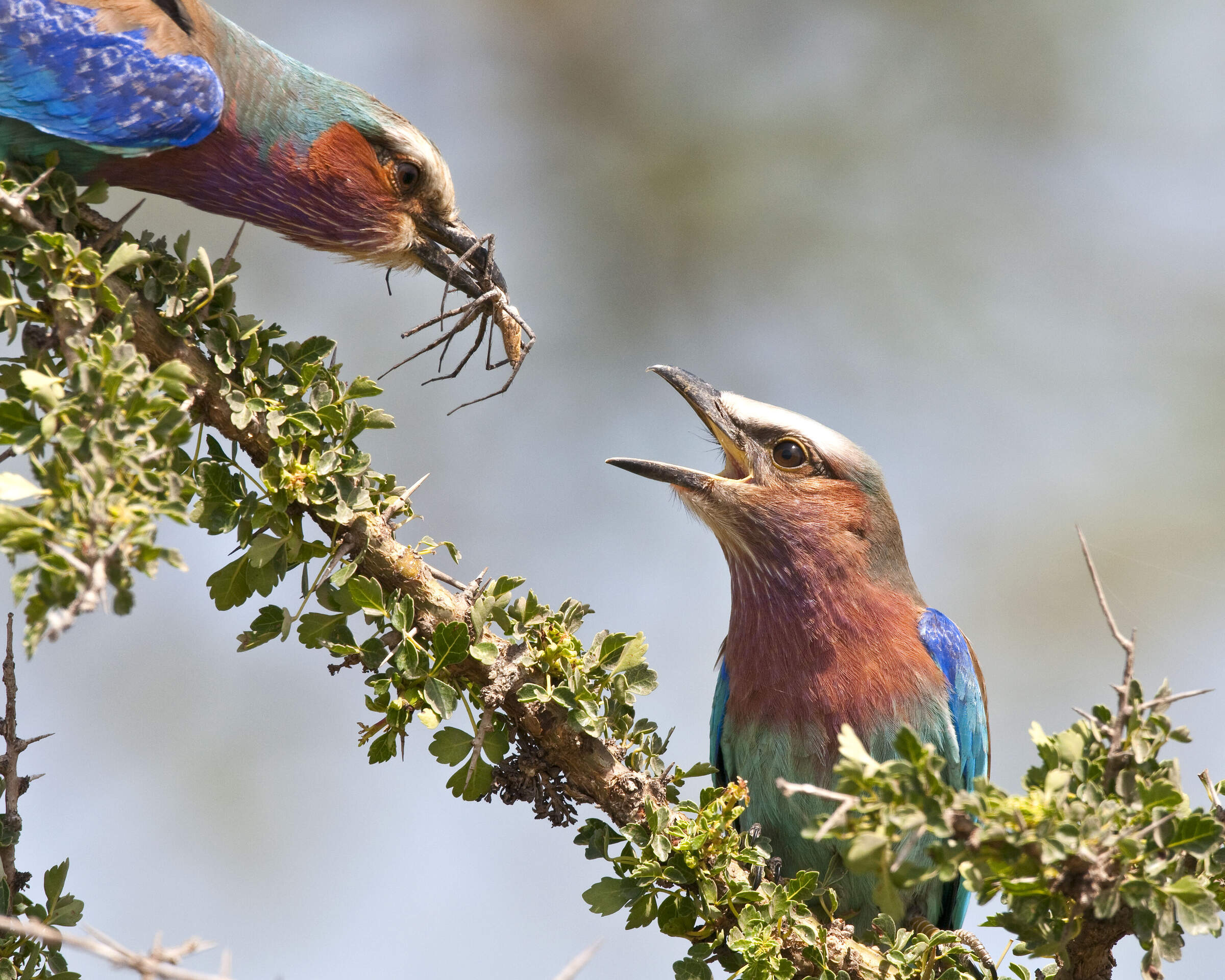
Birdwatching
Diverse habitats, discreet hides and superb guiding.
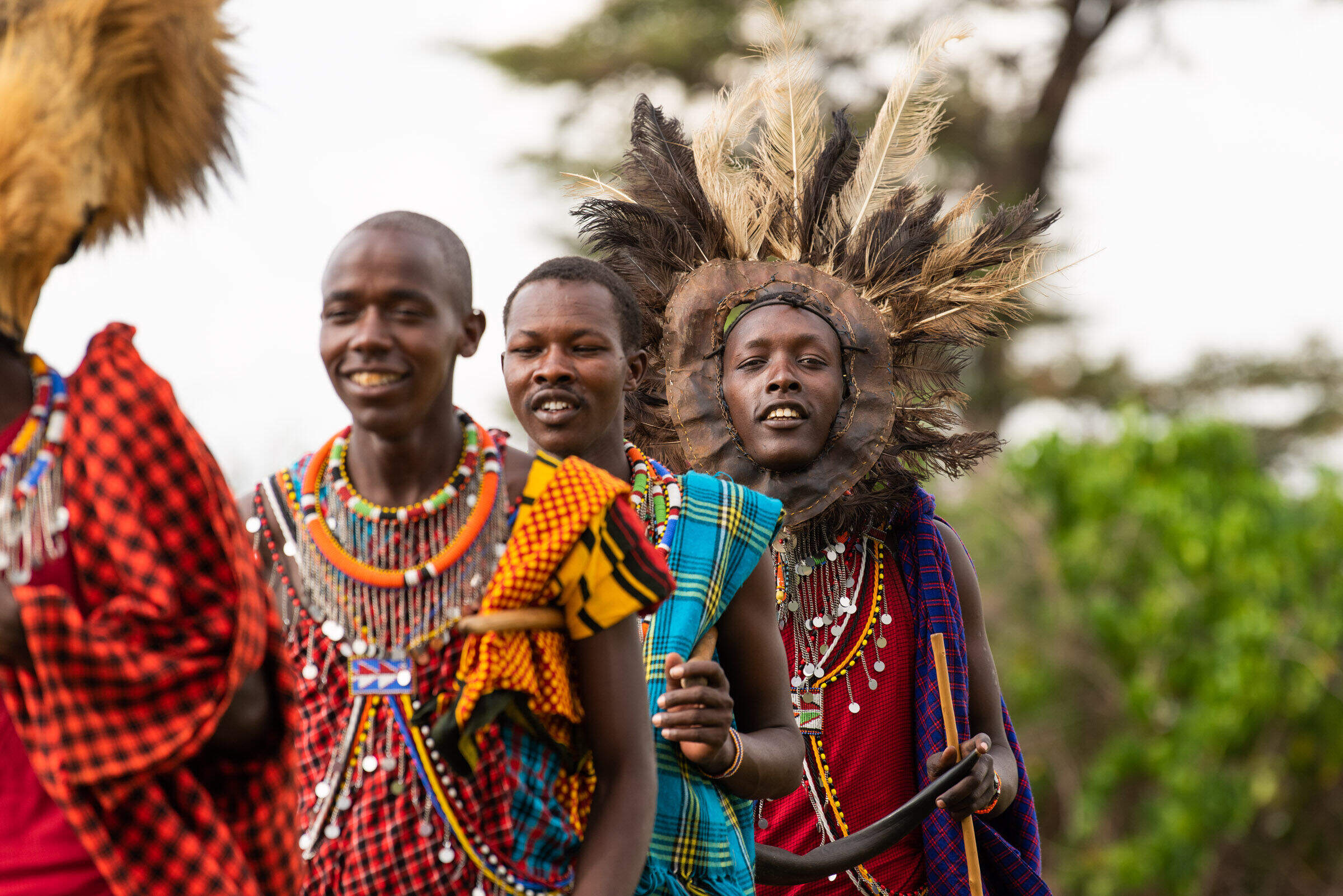
Cultural experiences
Get an insight into Africa's cultures and history.
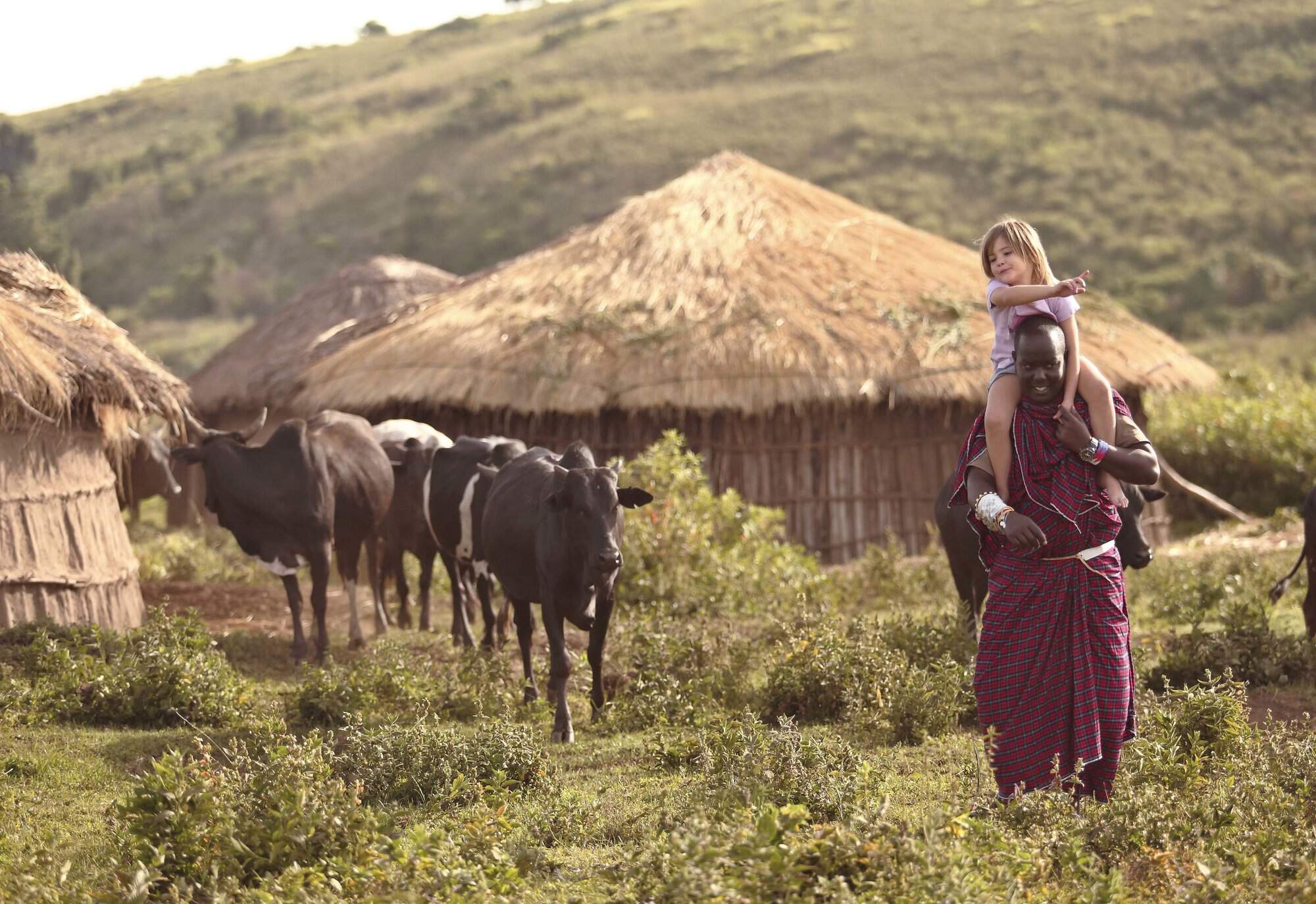
Family holidays
Hand-picked camps for an incredible family safari.
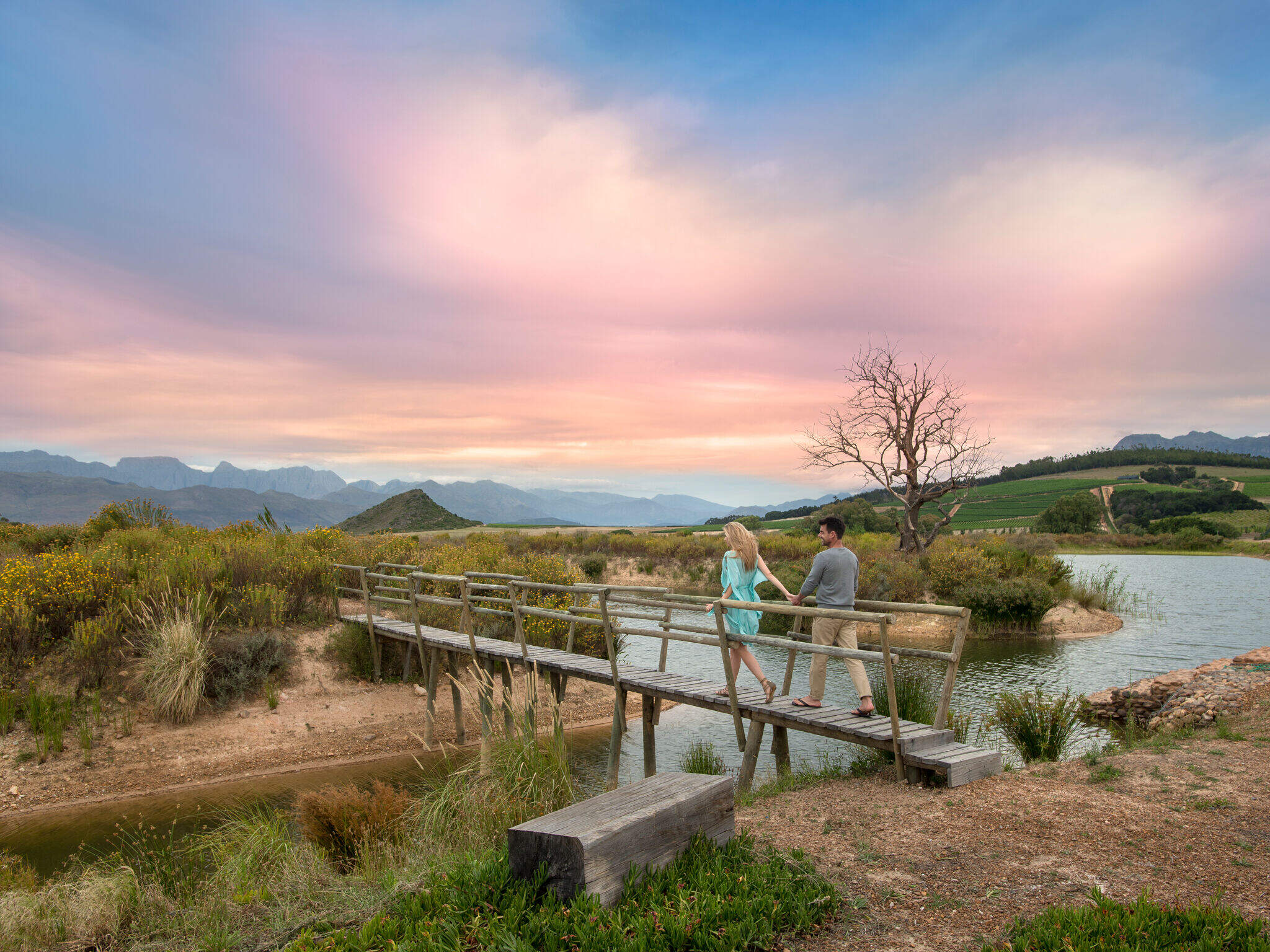
Romantic safaris and castaway island retreats.
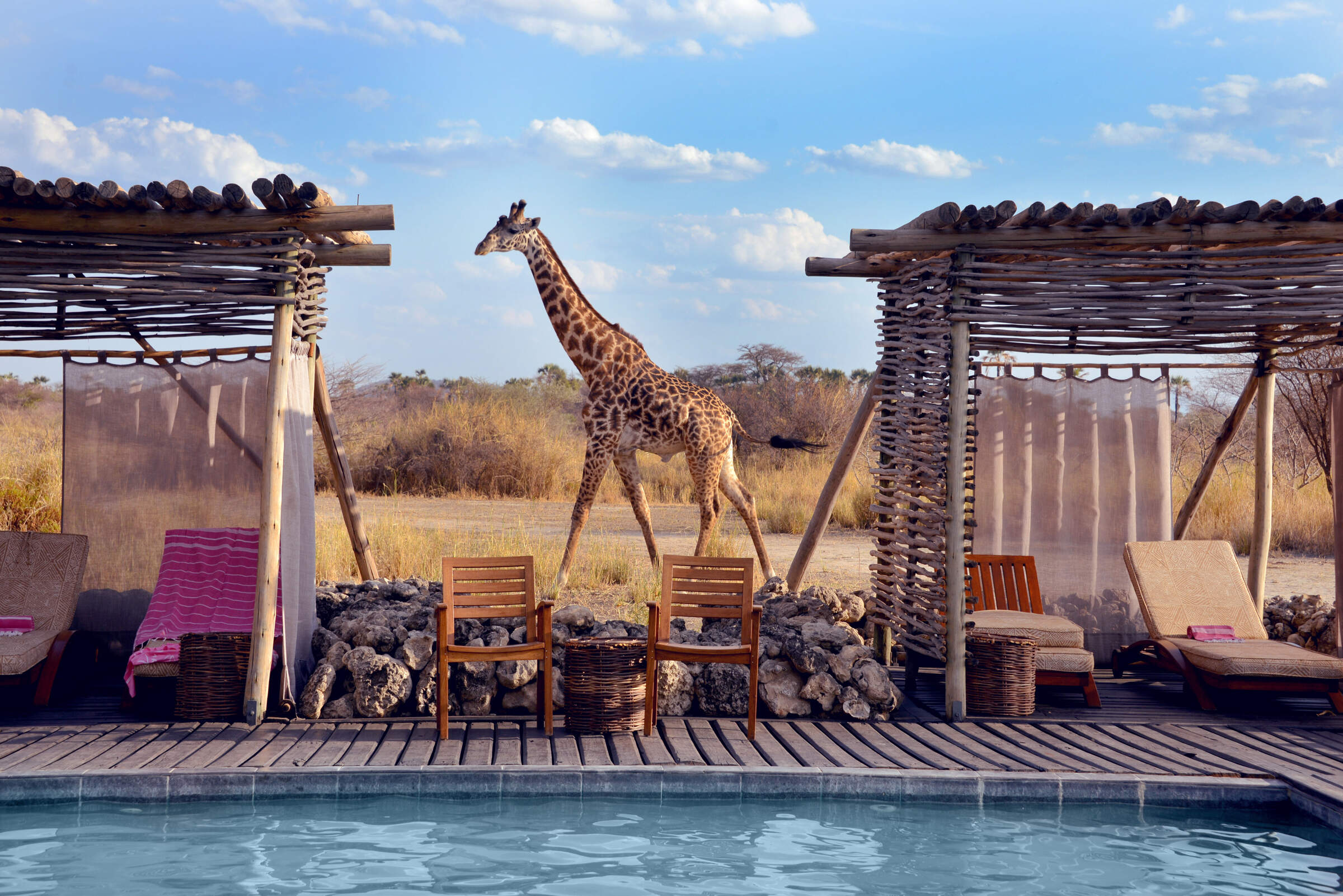
First-class service, scenic vistas and unparalleled comfort await you during these carefully selected luxury holidays.
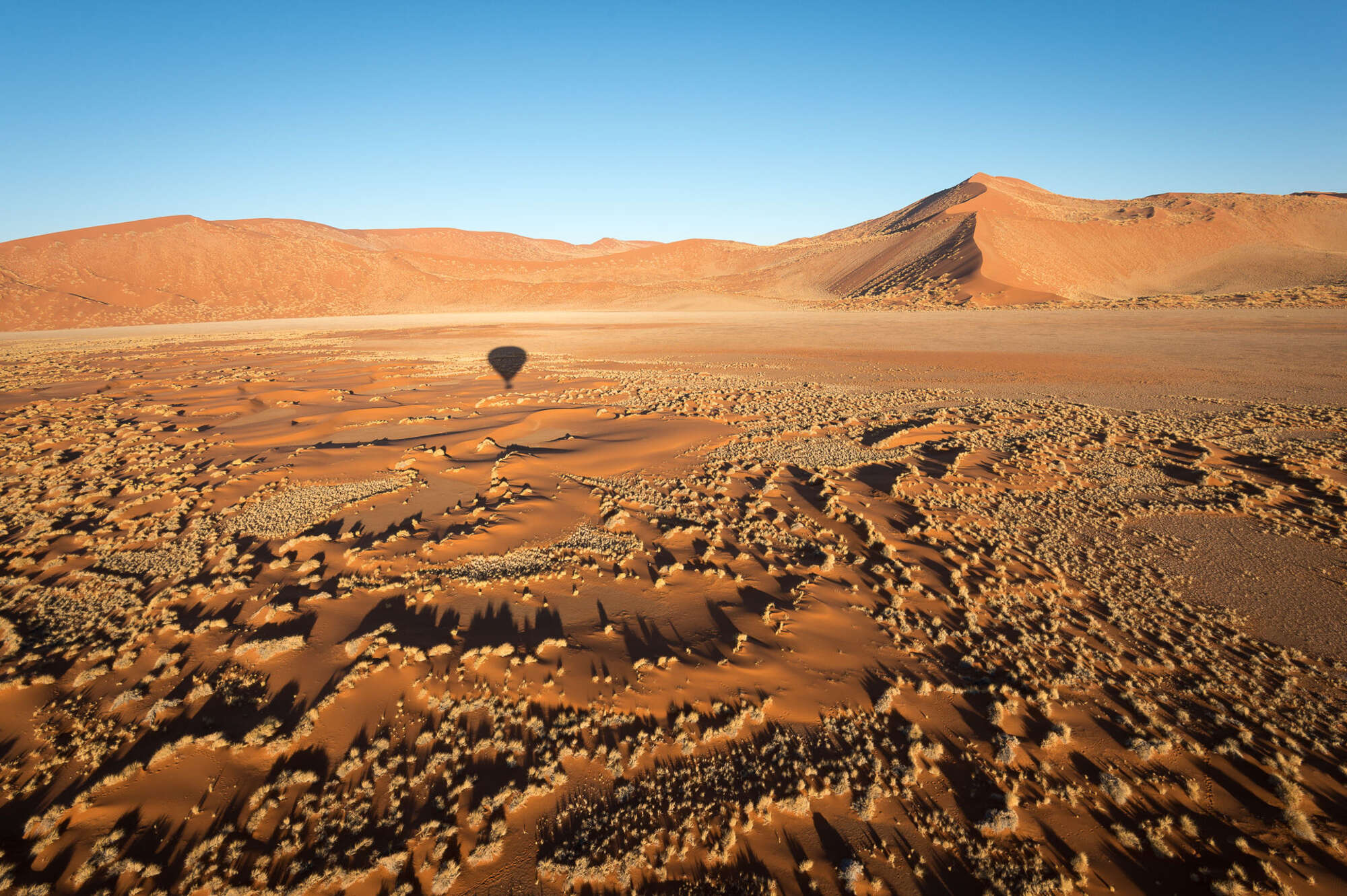
Photography holidays
Great holidays to suit the keen photographer.
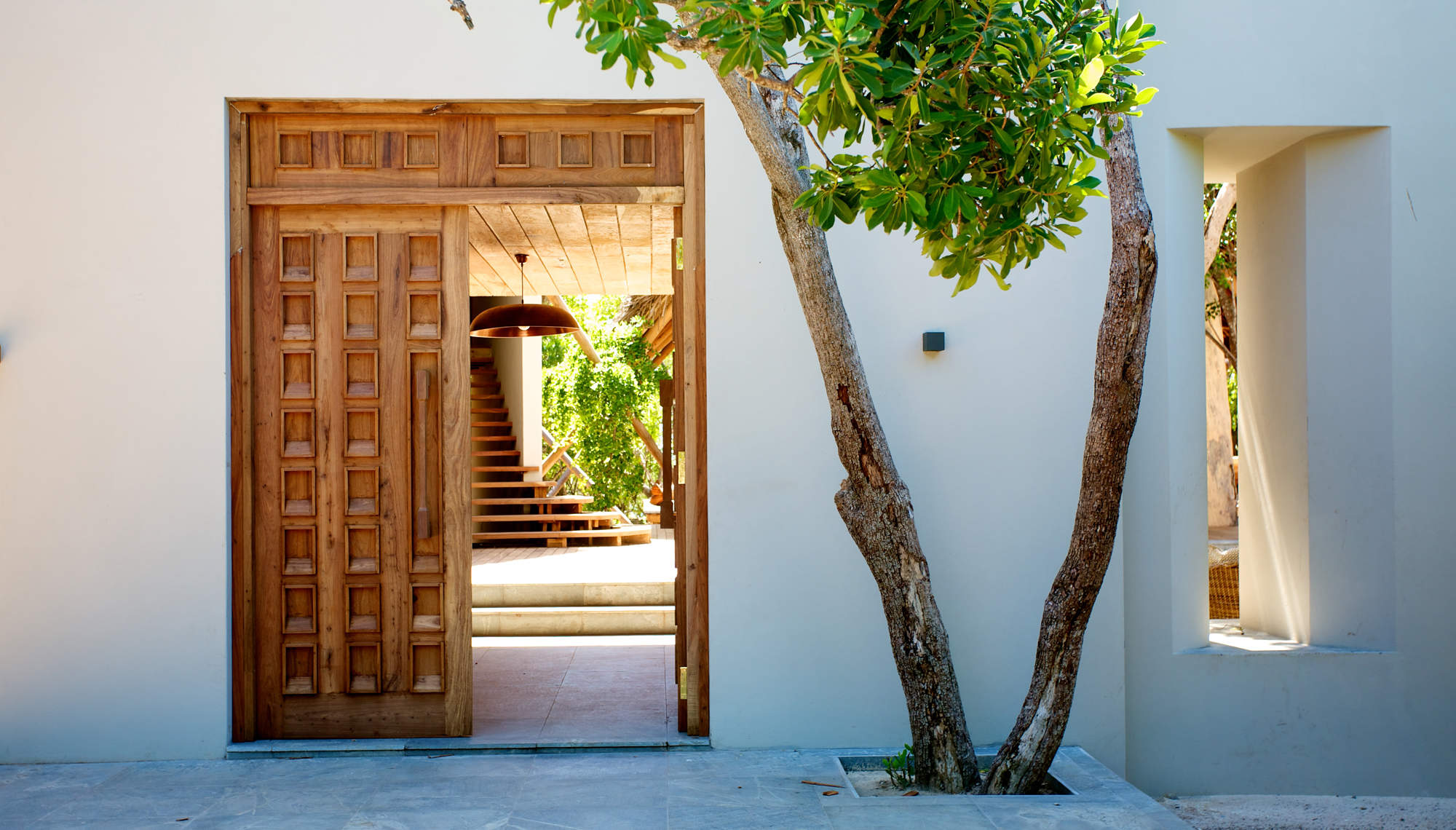
Private villas & houses
Enjoy Africa with just your friends & family
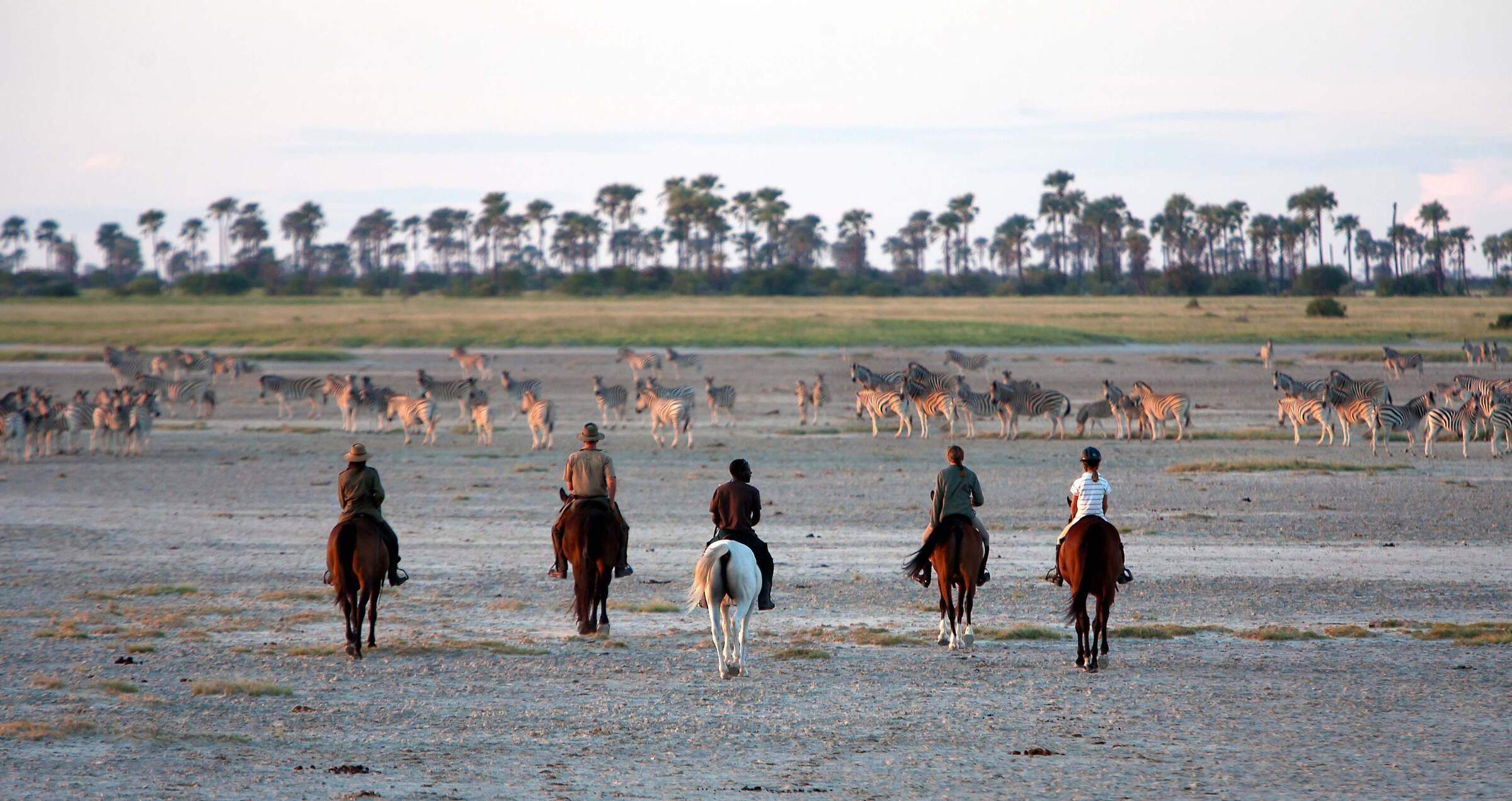
Riding holidays
Explore Africa's wilderness on horseback.
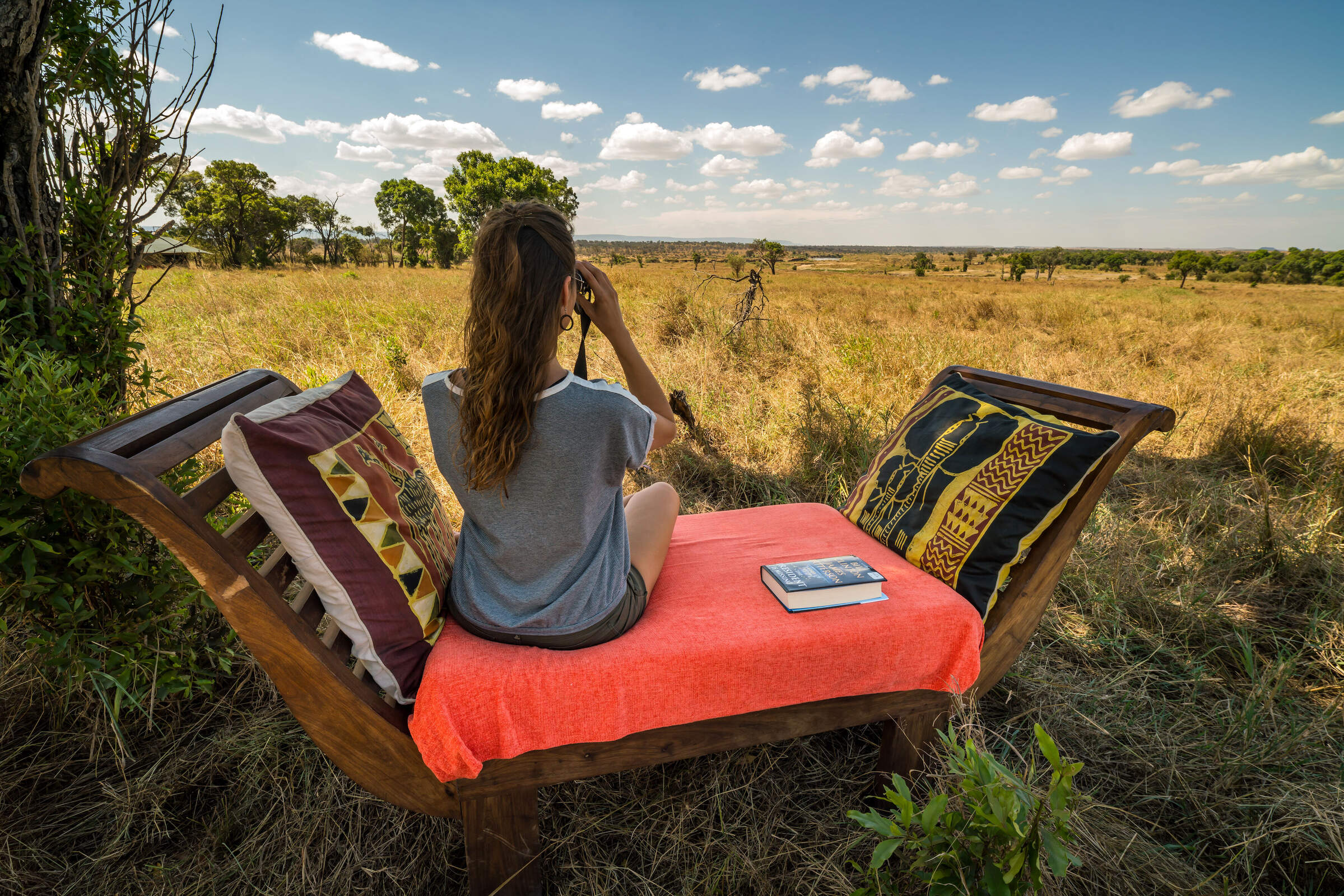
Solo Travel
Trip ideas ideally suited for a solo traveller.
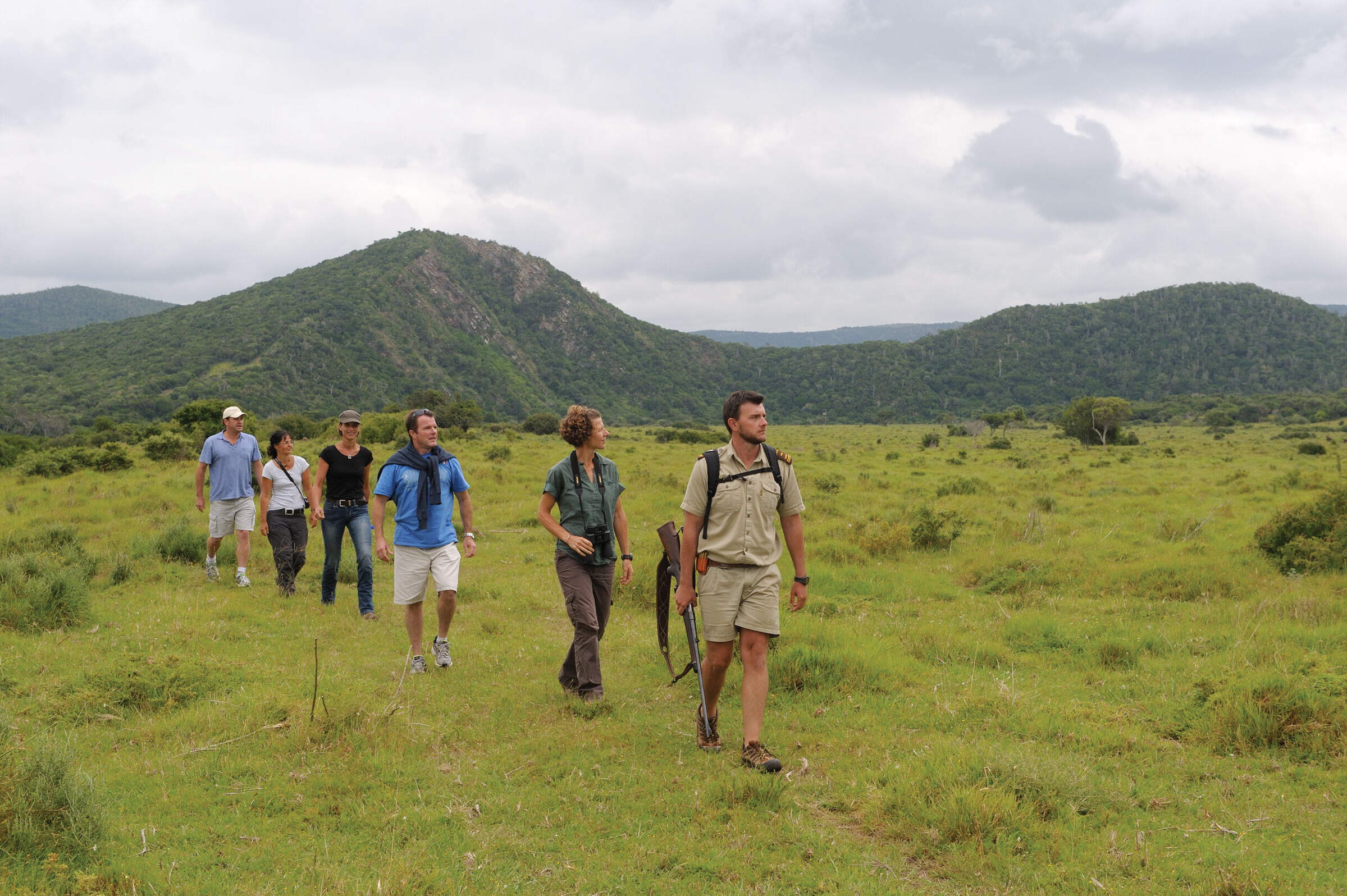
Explore Africa's most scenic trails on foot.
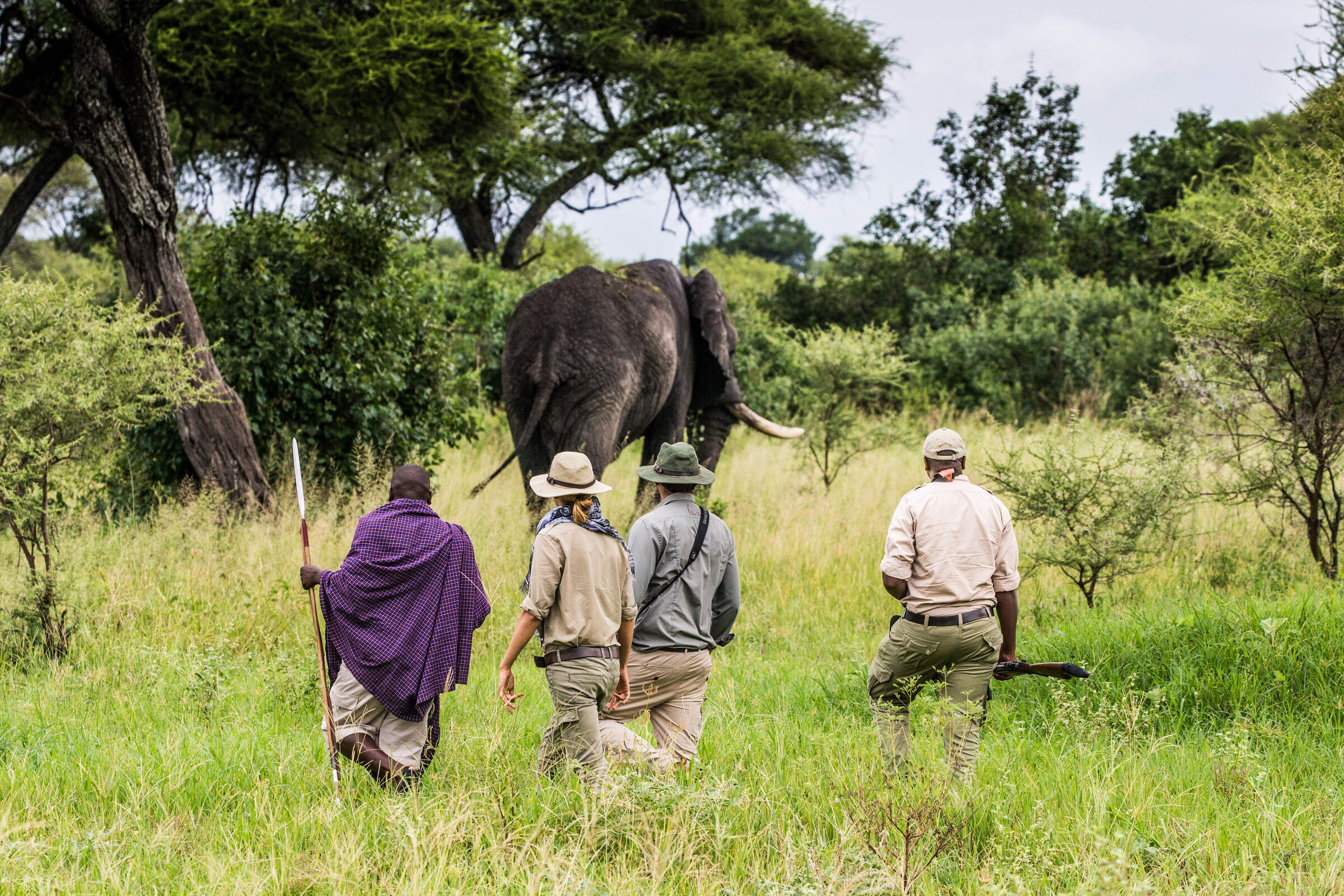
Walking safaris
Explore Africa's untouched wildernesses on foot.
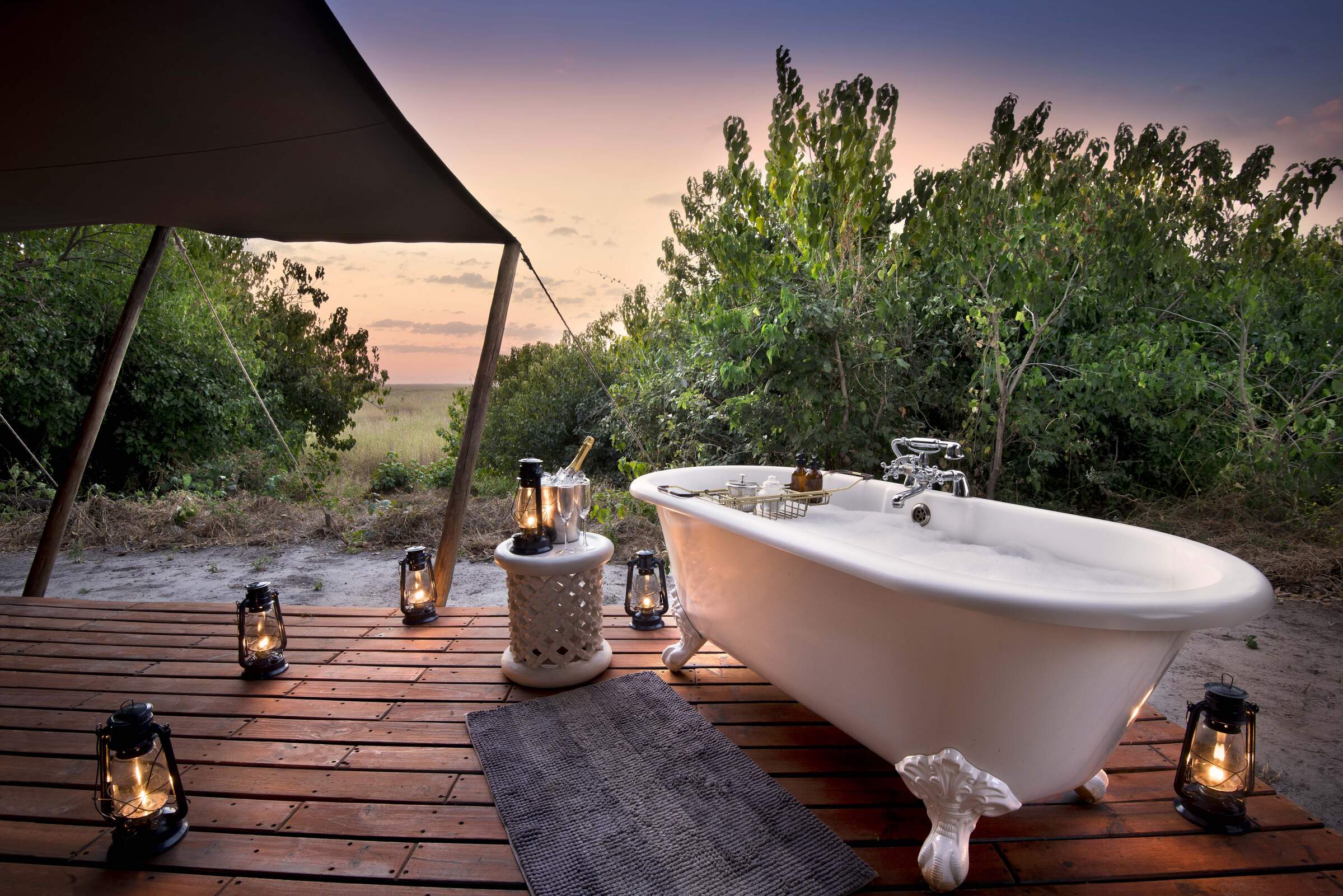
Wellness escapes in stunning locations
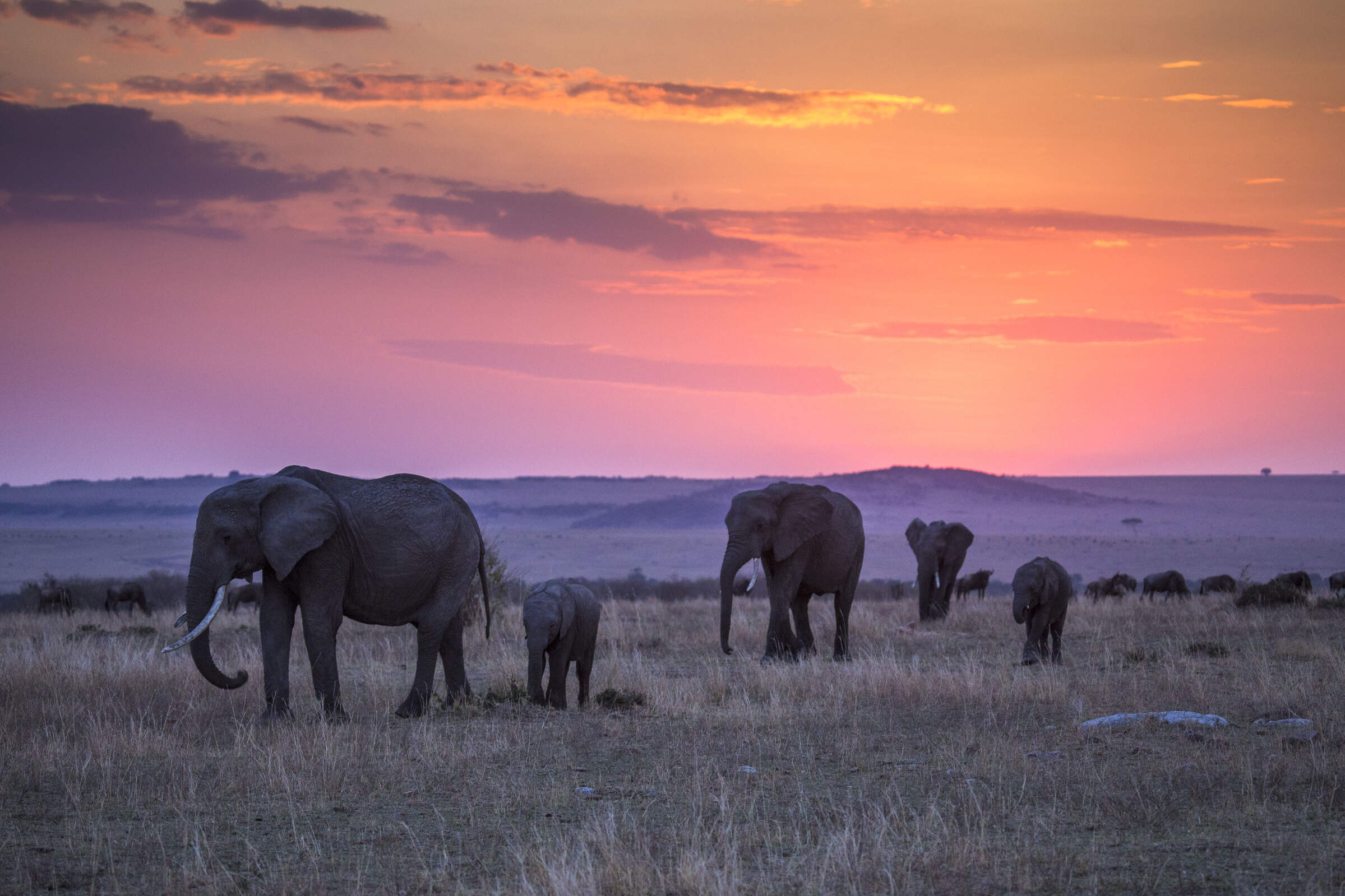
Wildlife safaris
These trips include hard-hitting game and fascinatingly elusive species alike, as well as superb guiding and a variety of diverse ecosystems.
Frequently Asked Questions
Namibia FAQs
Every trip to Namibia is different, but each throws up individual questions – some seemingly trivial, some crucial to the success of your holiday.
At Expert Africa, we have in-depth knowledge of the country and we’re here to help. Below are some of the questions that we’re frequently asked, from what it’s like to drive in Namibia to where to look for wildlife and whether or not you can swim in the sea.
Whatever you need to know, please contact us and we’ll do our best to help.
How to plan a Namibian road trip?
As with any journey, meticulous planning ensures success. You can trust our team of experts , whose experience travelling across and living in Namibia allows us to take the reins. We know the myriad destinations and stops across Namibia, and once we understand your preferences, we will expertly curate a self-drive trip to suit you perfectly. In addition to meticulously organizing your self-drive safari, we will guide you in the choice of vehicle, ensuring that you have the right car hire for your adventure. Then, when you arrive, a few basic steps will enhance your road journey. Namibia's vast expanses often mean long distances between fuel stations – so set off with a full tank of fuel (and at least one spare can of fuel, if you’re heading off piste), plus at least one spare tyre. Water and sustenance are equally vital companions, so provision yourself with plenty of snacks and water – orchestrating a full-scale picnic will appease the appetites of both body and soul. Furthermore, do not forget to shield your eyes from the sun with a sturdy pair of sunglasses and protect your skin with a generous application of suncream. While on your Namibian Odyssey, do seize every opportunity to replenish your reserves. Then embrace the open road, for you are about to embark on an unforgettable journey through Namibia's awe-inspiring landscapes.
Can I sleep under the stars in Namibia?
With a night sky that is unrivalled in much of the industrial world, and a largely dry climate, sleeping under the stars in Namibia – sometimes dubbed ”the thousand-star hotel” – is a magical experience. Campers are spoiled for choice, even in Etosha National Park, as well as in more remote locations such as Spitzkoppe and the Namib-Naukluft National Park. At the other end of the spectrum, some of the top lodges, from the Skeleton Coast and Damaraland to the Namib Desert (Kuala and Little Kulala), have beds that can be rolled out under the stars for your night’s rest. For a more adventurous experience, guests on a walking safari on the NamibRand Nature Reserve sleep on camp beds laid out in the open by their guides. Just remember to take plenty of warm clothes.
Can I visit Namibia’s diamond areas?
For many years, the desert area south of Lűderitz, where in 1908 diamonds were first discovered scattered across the ground, was off limits to visitors. Home to Diamond Area 1, it was known as the Sperrgebiet, or “forbidden territory”. Today much of the area falls within the Sperrgebiet National Park, but access remains restricted. For most of the region you’ll need to visit with an authorised tour operator. The eerie “ghost” town of Kolmanskop, however, can be visited by self-drivers – although you’ll still need a permit. For the history, the flora, the sheer remoteness, visiting places such as Elizabeth Bay and the ghost town of Pomona may take some planning, but it is worth the bureaucracy.
What coastal activities does Namibia offer?
Namibia may have 1,570km of coastline, but thanks to vast expanses of desert, and the presence of diamonds, much of it is inaccessible – which in part adds to the appeal. Sea swimming isn’t generally an option except in Swakopmund & Walvis Bay and Lűderitz . Courtesy of the Benguela Current, the waters of the Atlantic are cold – even by British standards! – and can be treacherous. Against this, kayaking at Walvis Bay , where Cape fur seals see you as part of their morning’s entertainment, is a must for watersports and wildlife lovers alike. Boat tours provide similar opportunities without the exercise, while in Lűderitz they offer the additional opportunity of seeing African penguins. Fishing, too, can be organised in the coastal towns, while hiking along the beaches of the Skeleton Coast , littered with whalebones, gives a whole new meaning to a walk by the sea.
How long does a Namibia safari holiday take?
The highlights of Namibia – Sossusvlei’s dunes , Damaraland and Etosha National Park – can comfortably be fitted into a week’s holiday, if you fly around, making this a perfect itinerary for those with limited vacation time. Those with a more time usually build on the highlights, perhaps driving around and including a stop for activities at Swoakpmund, time leopard-spotting on the Okonjima Reserve , or a visit to one of Namibia’s many less famous guest farms and lodges. If you have longer, the options are many and varied. For sheer desolate wilderness, the Skeleton Coast is a must, while the awe-inspiring scenery of Fish River Canyon is more than a match. To gain a glimpse of Namibia’s indigenous cultures, you’ll need to head north to the Himba villages nestled in the stark, arid landscape of Kaokoland . Or seek out the homelands of the San, or Bushmen, in Bushmanland , on the country’s eastern borders with Botswana.
Our other African destinations
Namibia’s scenic diversity is among its greatest appeals, but if you’re after a stronger focus on wildlife or water activities, take a look at some other Expert Africa destinations.
Neighbouring Botswana stands out for the iconic Okavango Delta, where vast private reserves offer exclusive wildlife watching. Zambia , too, boasts exceptional wildlife and intimate camps, many of them owner-operated. For a more rustic safari, consider Zimbabwe , whose safari guides are some of the best in the world, or head east to the open grasslands of Tanzania .
Water lovers will be in their element in South Africa , as well as in east Africa, where Kenya , Mozambique and Malawi beckon. Or for a true castaway experience, the islands of Zanzibar and the Seychelles make superb add-ons to a safari. And then there’s Rwanda , with that once-in-a-lifetime opportunity to come face to face with mountain gorillas. The choices are many and varied, so contact us to help you design your perfect safari – wherever that may be.
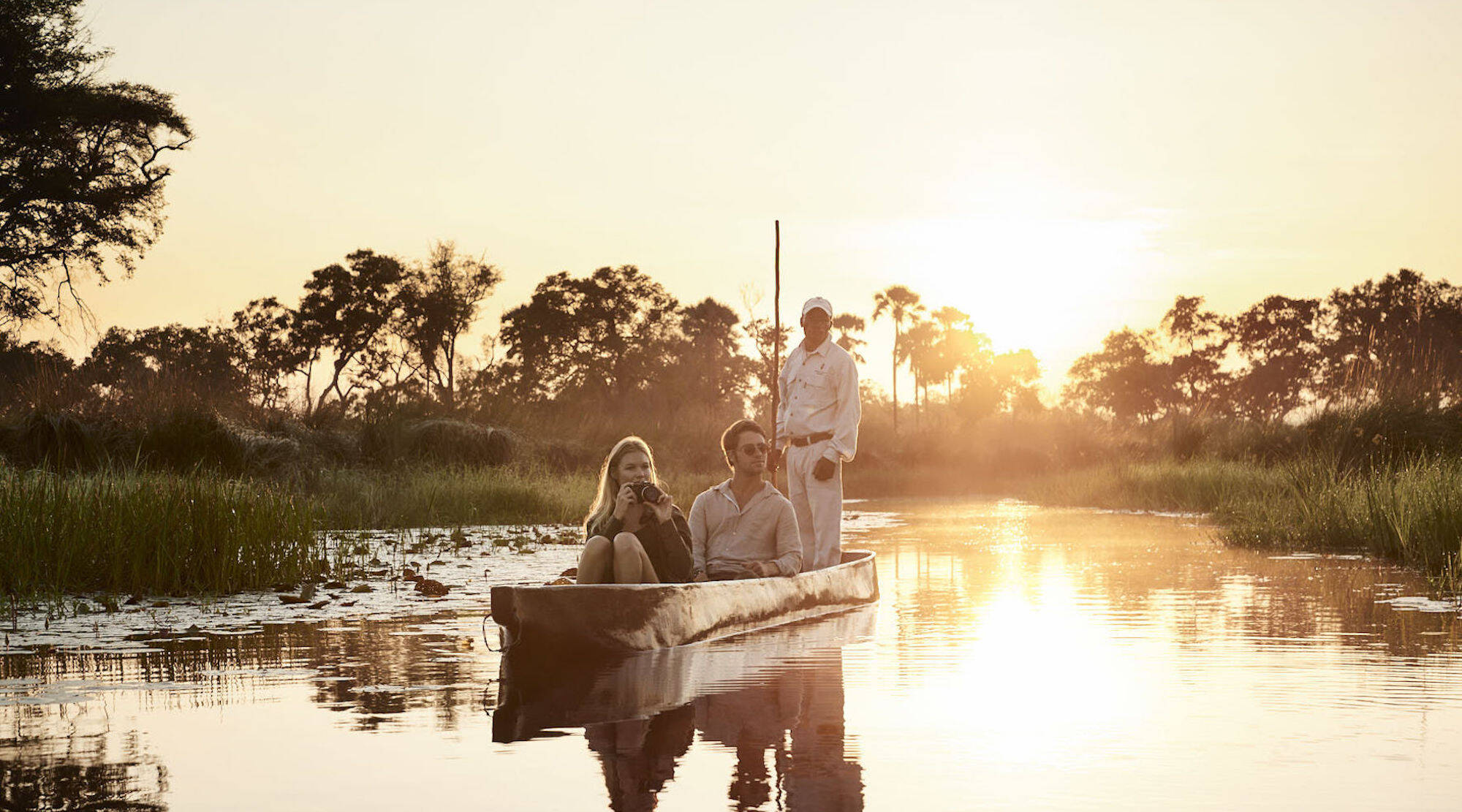
With big game, glamorous lodges and one of the greatest unspoilt wildernesses on Earth, Botswana is perhaps Africa's most exclusive safari destination.
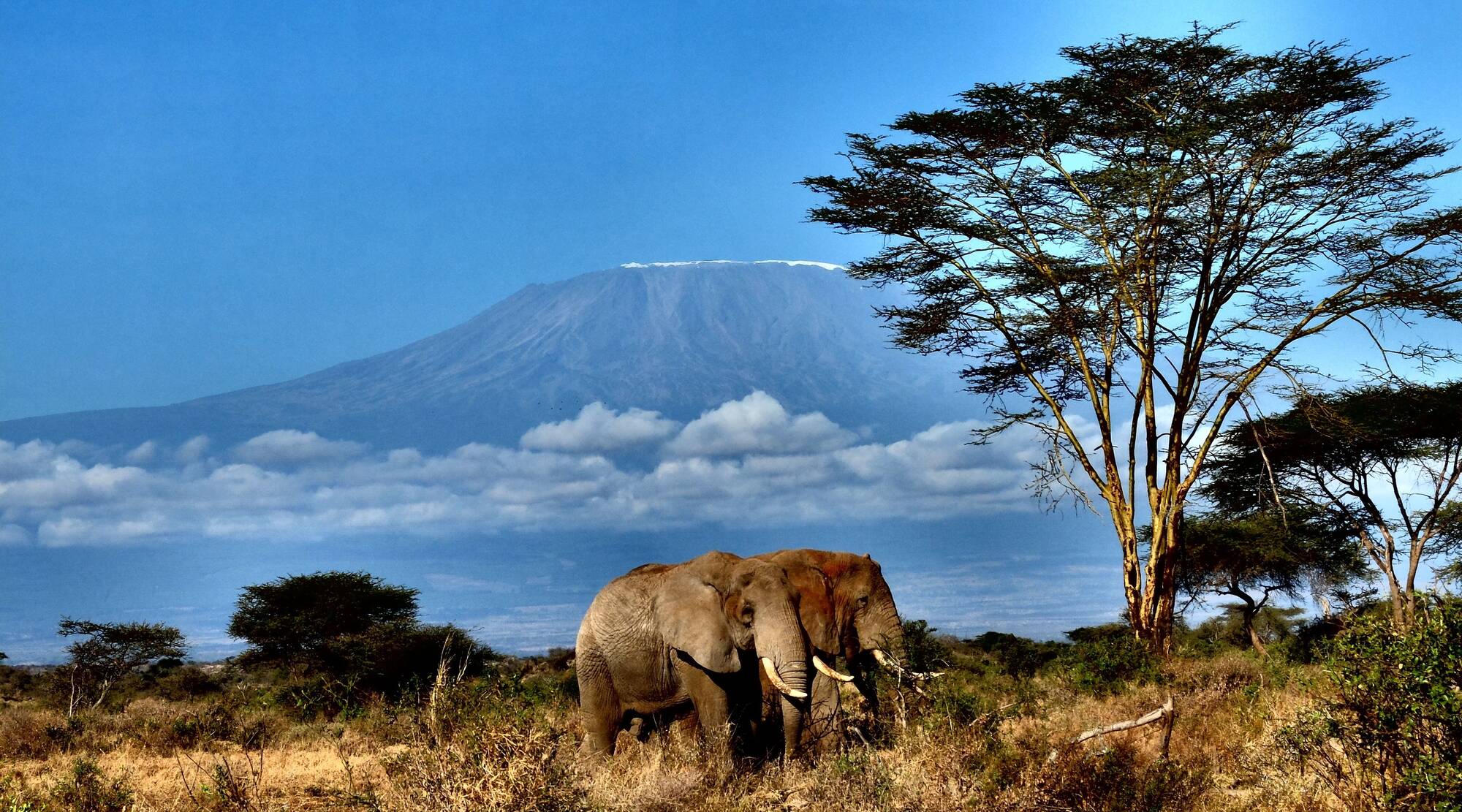
Humanity’s ancestors lived in Kenya, which is now home to people speaking 42 languages, and some of Africa’s rarest, most magnificent wildlife.
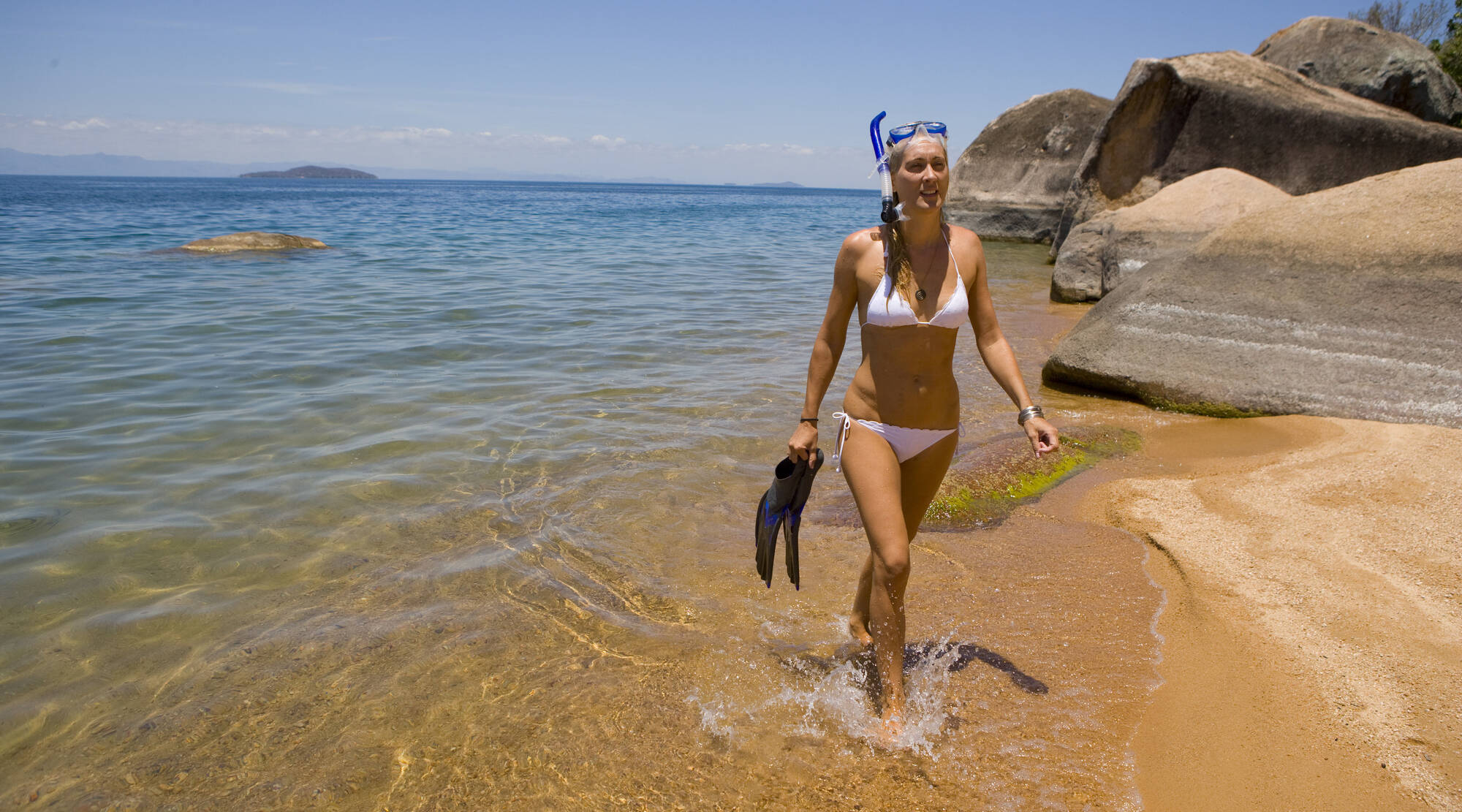
With tropical rivers, Rift Valley plateaux, the crystal-clear waters of Lake Malawi and a stunning lakeshore, Malawi invites relaxed exploration.
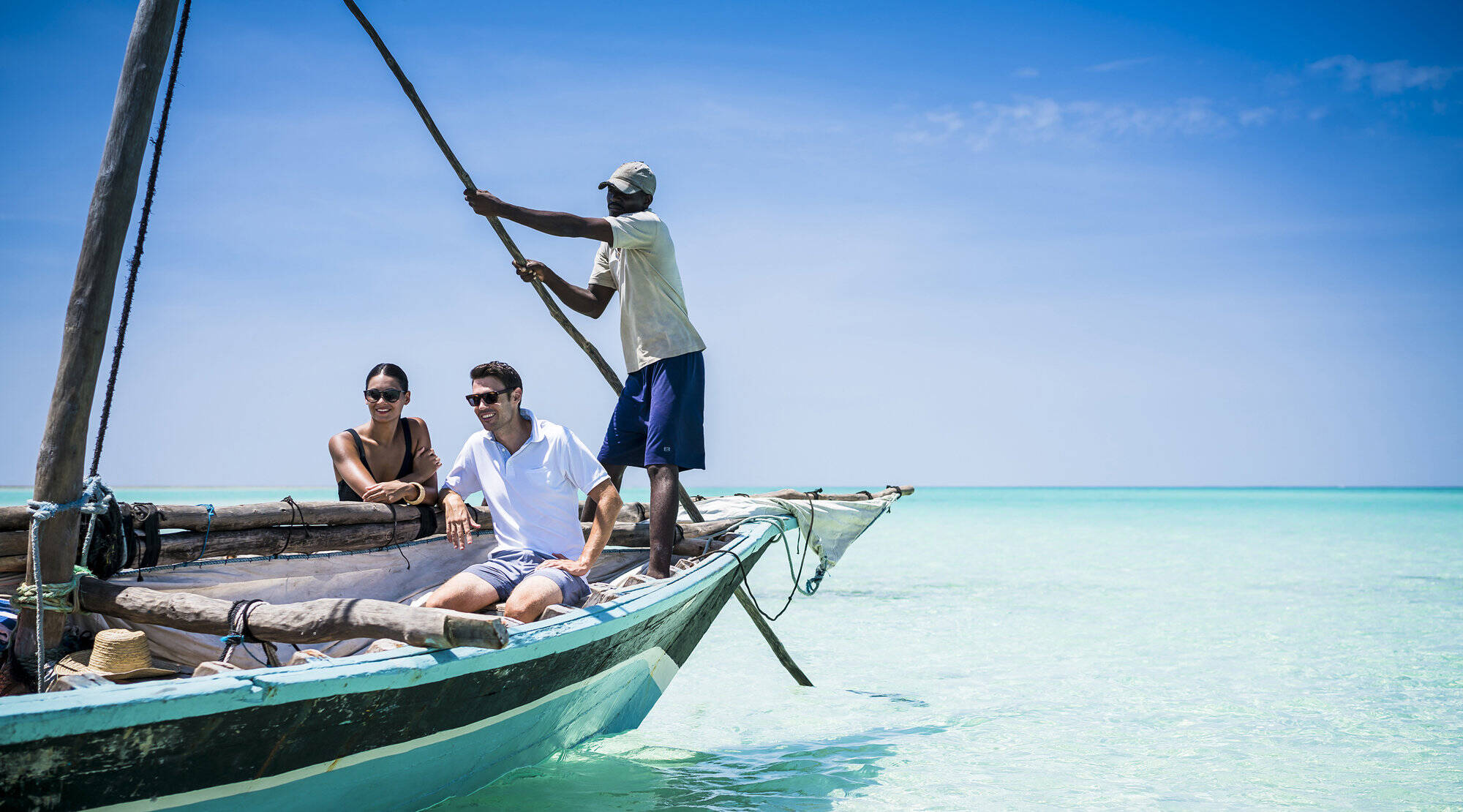
An ocean paradise protected by world-class marine parks, Mozambique’s idyllic archipelagos offer heavenly hideaways, outstanding diving and laid-back luxury.
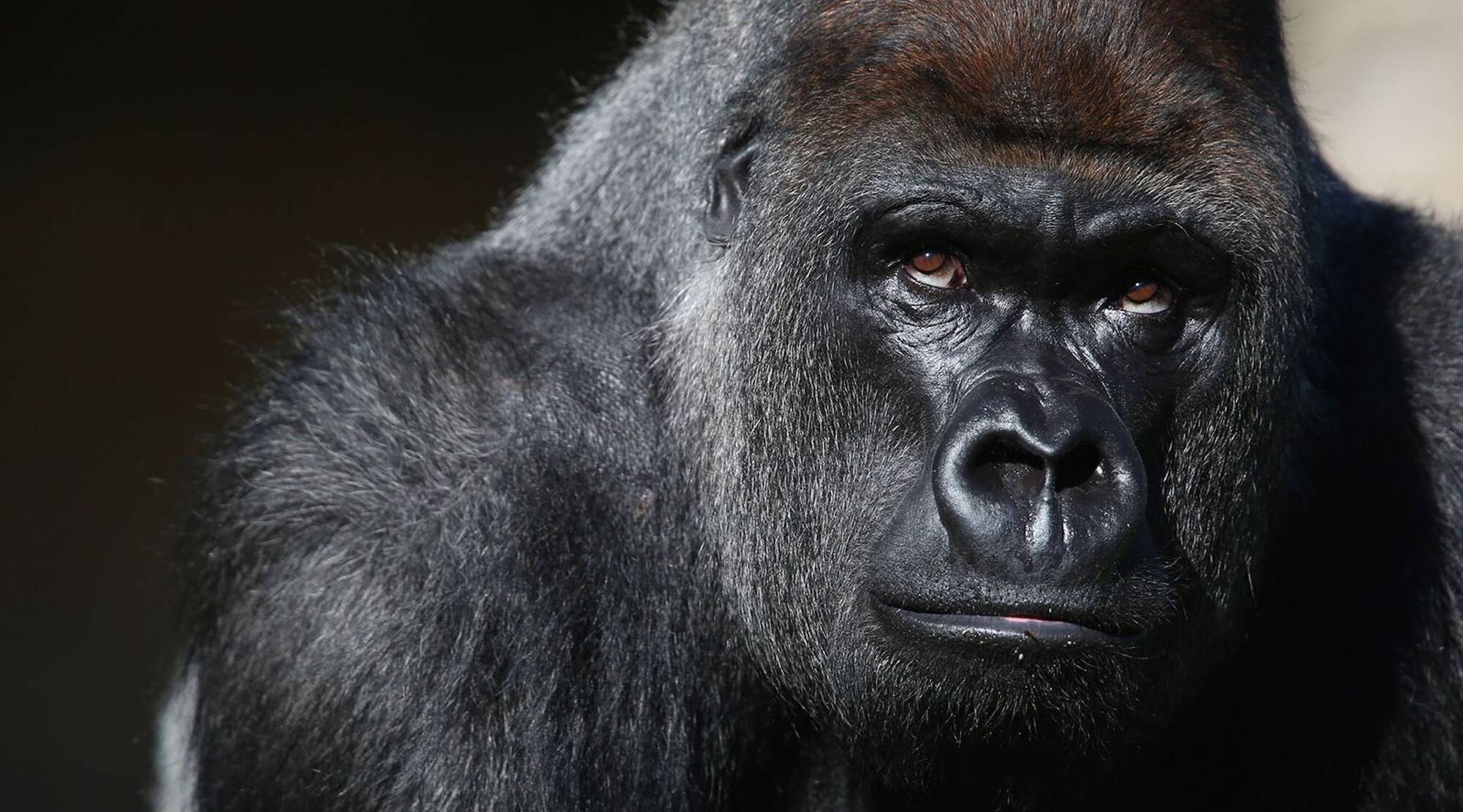
This small, mountainous country offers Africa’s best gorilla treks, other good safari options and a profound human element in every trip.
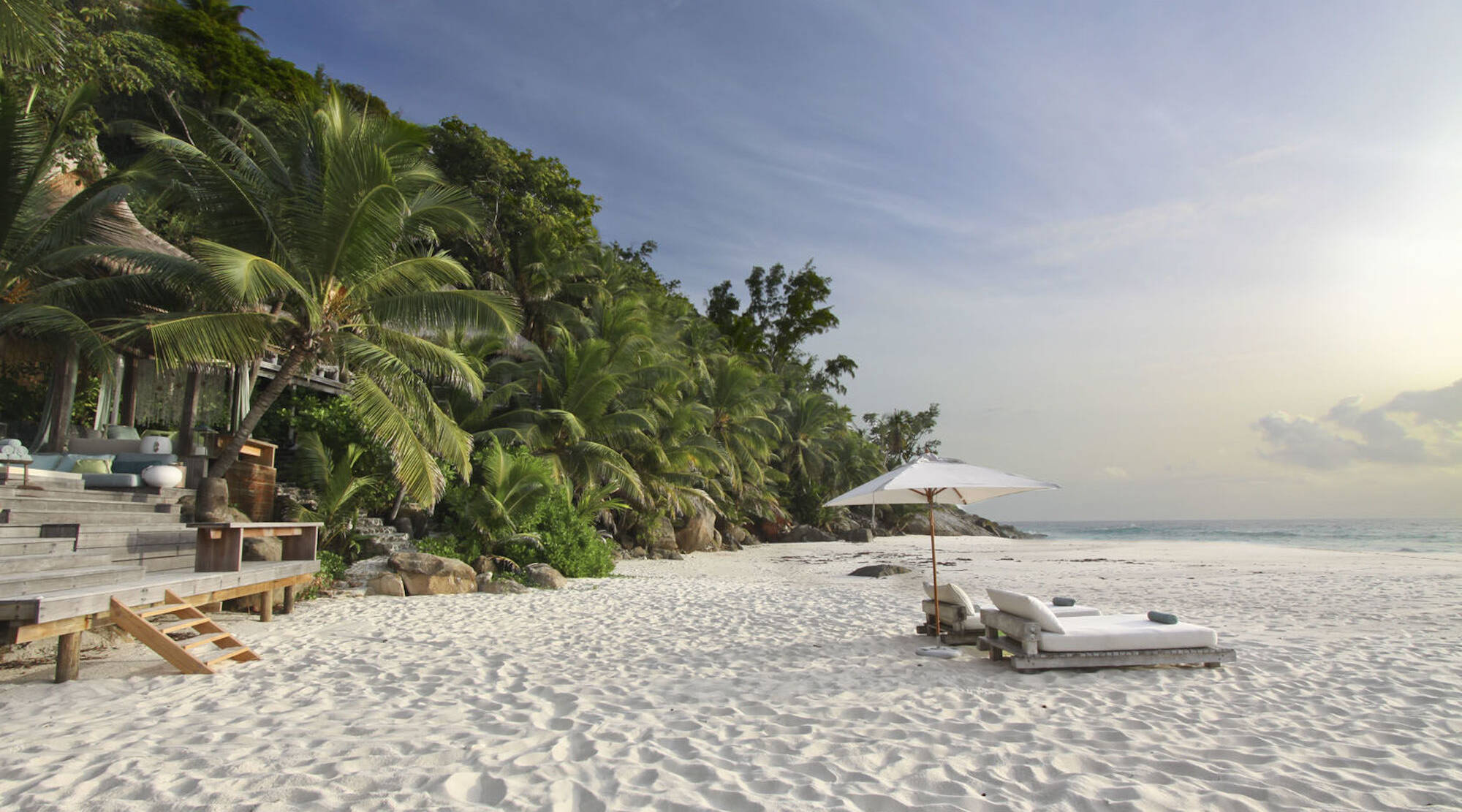
The ultimate glamorous getaway: the lush islands of Seychelles are enchantingly beautiful and stylish sanctuaries for both wildlife and ocean-lovers.
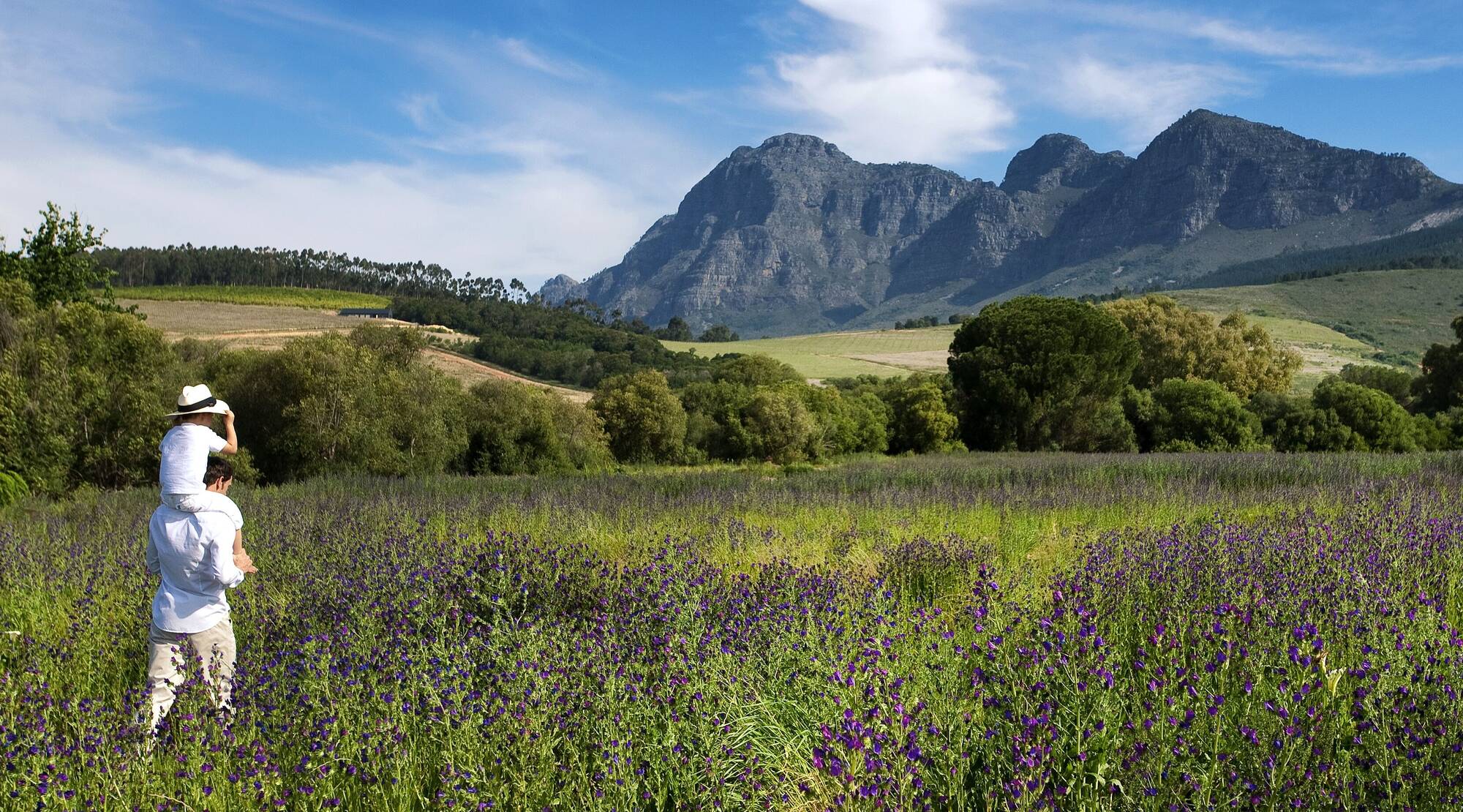
South Africa
Cosmopolitan Cape Town, world-class wineries, brilliant ‘Big Five’ safaris and spectacularly diverse scenery make South African holidays fabulously exciting and enjoyable.
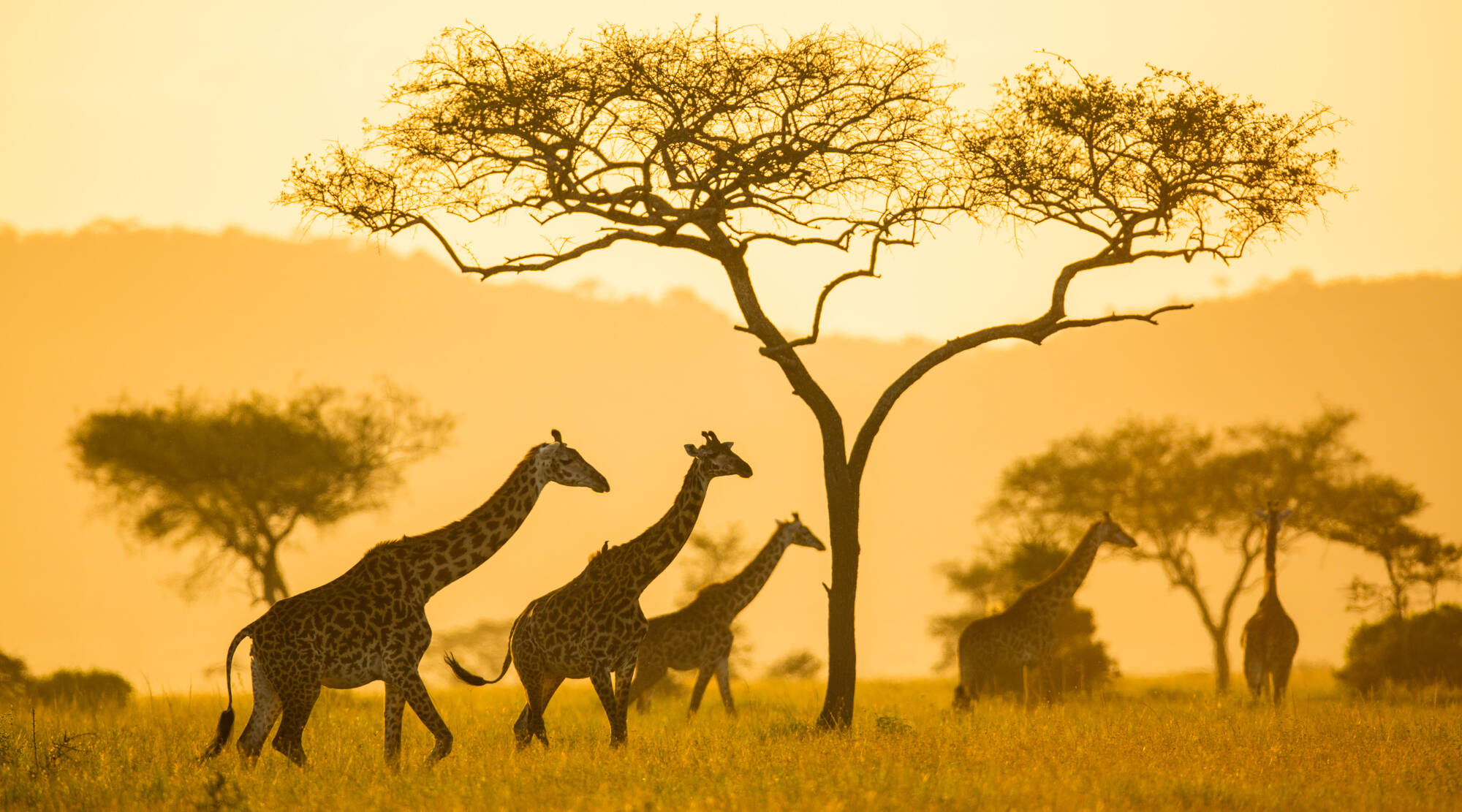
East Africa’s biggest country has a wide range of parks to explore and some of the Indian Ocean’s best island retreats.
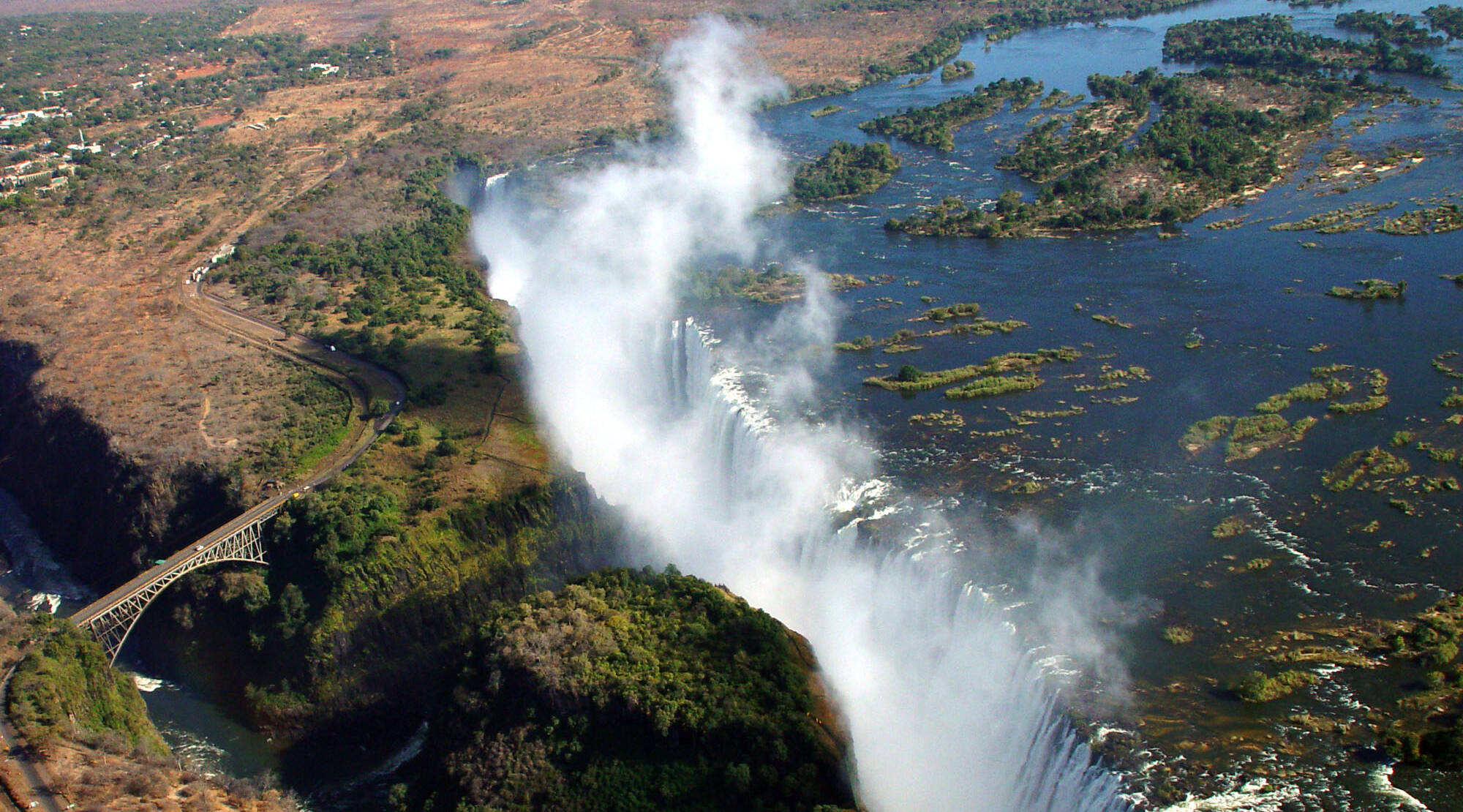
Home to walking safaris, exceptional wildlife, superb guiding and the mighty Victoria Falls, Zambia is Africa at its most alluring.
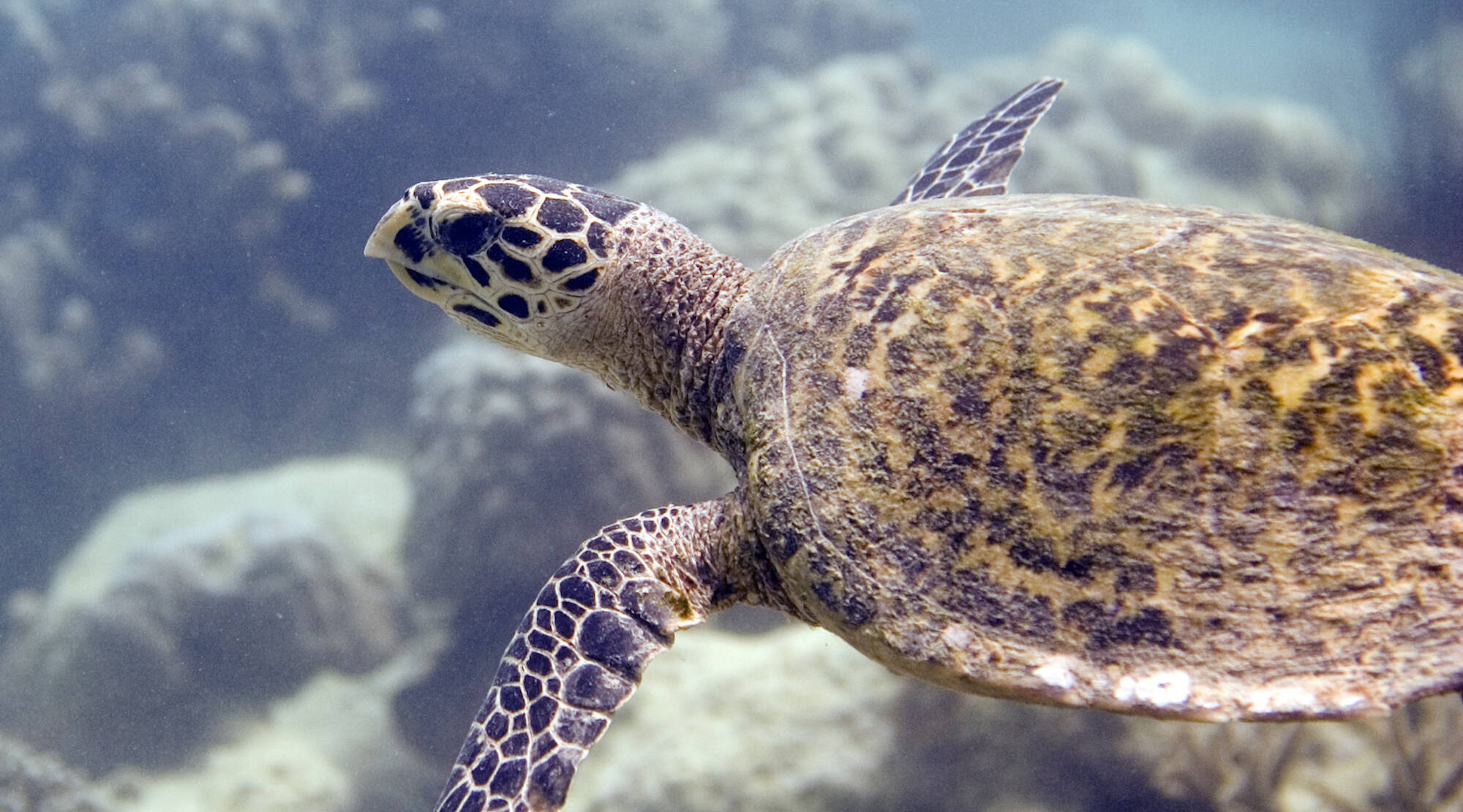
The ultimate Spice Island: Zanzibar’s mystique, marine life and chic beach retreats make it Africa’s most alluring archipelago.
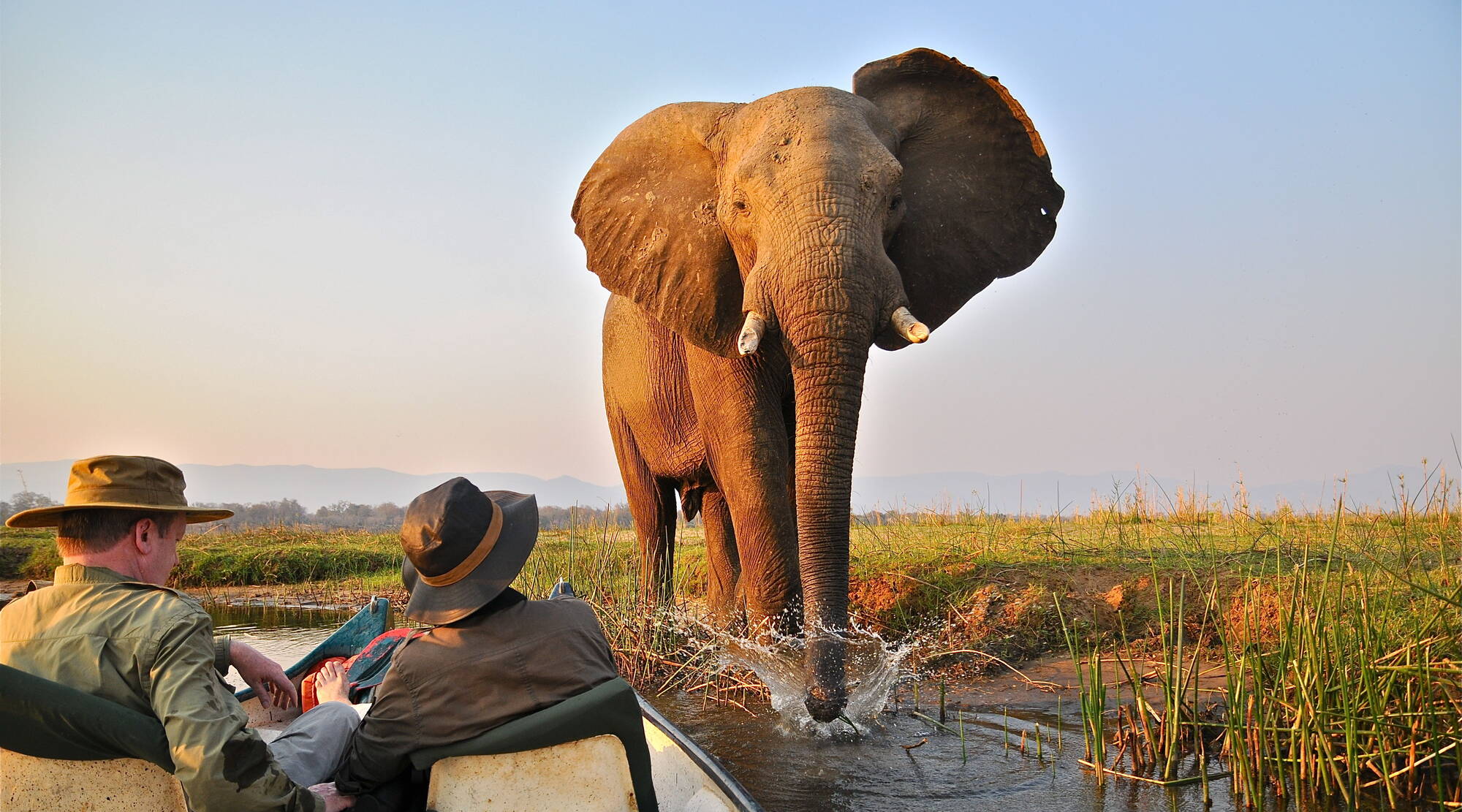
Stunning national parks teeming with game, plus Africa's finest professional guides and the spectacular Victoria Falls: Zimbabwe is enthralling.
Elephant safari in Linyanti
Login to Expert Africa
Sign in with password
Sign in with email link
New to Expert Africa? Create an account
Forgotten your details?
It's free & quick to set up
- Save your wish-list
- Send us an enquiry
- Pay online for your trip
- Subscribe to our newsletter
- Give us feedback on your trip
- Full site benefits of the site
Need some help? Talk to our team
32 essential things to know before you visit Namibia
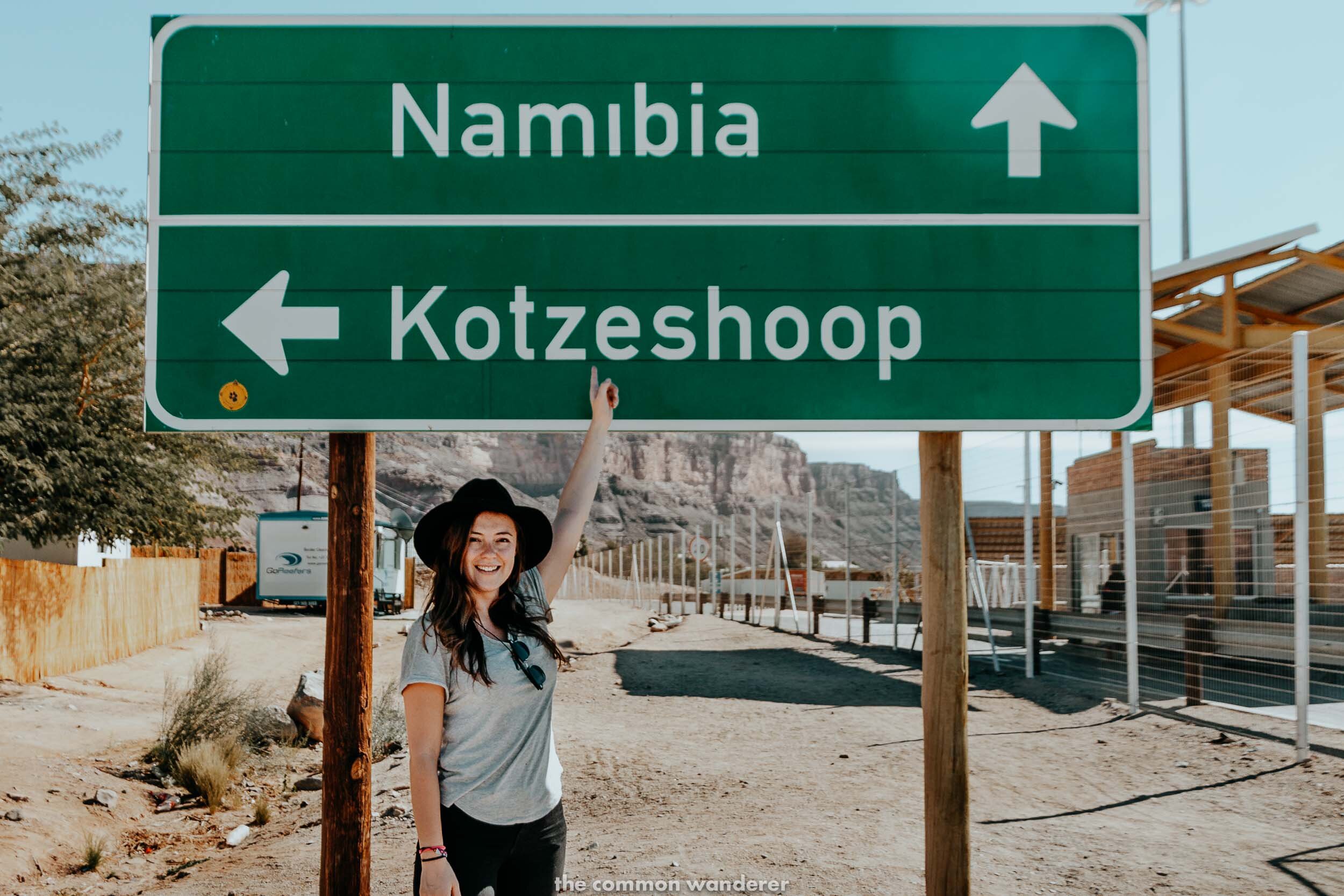
UPDATED 20/2/2020 | Looking for Namibia travel tips before you begin your epic Southern African adventure?
Our Namibia travel tips guide has you covered, including everything from what to see and do, where to stay, how to get around safely, and how to prepare for your trip.
The mountainous red/orange dunes of Sossusvlei , the stark and perilous Skeleton Coast, the moonscapes of Spitzkoppe, the incredible wildlife viewing in Etosha, the deep valleys of Fish River Canyon, the endless starry skies, the blazing African sunsets, the friendly locals, and seriously delicious food.
Yep, Namibia totally blew our minds.
But if we’re honest, we didn’t plan our trip to Namibia very well at all. It was only by chance we met a wonderful local named Hennie, who provided us with the knowledge to navigate Namibia efficiently, safely and enjoyably. His words of wisdom saved us and no doubt led to the incredible time we had in Namibia.
Now it’s our turn to pass on the knowledge we learned. So you can have the best possible trip to Namibia , here are our 32 essential Namibia travel tips to learn before visit this remarkably beautiful country.
NAMIBIA TRAVEL TIPS: 32 ESSENTIAL THINGS TO KNOW BEFORE YOU VISIT
#1 so, where is namibia.
For many, the mere mention of Namibia is met with a “where?” response. And we kinda get it - Africa’s a huge continent which, unfortunate as it may be, is still somewhat ignored by the international community.
For those who aren’t sure, Namibia is located on the south-west coast of Africa. It is bordered by South Africa in the south, Angola to the north, Botswana to the east, and Zambia in the northeast.
Mostly arid, the spectacular landscape resembles Mars, with vast expanses of rocky mountains and canyons, vast orange and white sand dunes, and empty savannas, while the rugged Atlantic coastline is one of the most treacherous in the world.
Oh, and despite what Donald Trump may say, it’s pronounced Na-mibia, not Nam-bia (for those of you who don’t know what we’re talking about - watch this !)
#2 IS NAMIBIA WORTH VISITING?
The answer to this question is an unequivocal YES.
Namibia is unlike anywhere else on Earth; a place where you’ll feel incredibly small by the magnitude of your surroundings and in complete awe of Mother Nature's finest achievements.
Driving in the middle of the Namib desert , dead mountains and sand dunes surrounding us, having not seen any form of life for hours, we’d never felt more insignificant. To be honest, it was the most exhilarating feeling we’ve had on our travels. And that’s Namibia’s appeal.
With the violent Atlantic Ocean to one side, and the world's oldest desert on the other, Namibia is a seriously rugged destination. It’s home to natural wonders such as deep Fish River Canyon, the towering sand dunes of Sossusvlei and Swakopmund, the wildlife mecca of Etosha National Park, the glorious mountains of Spitzkoppe, a rich indigenous and colonial history, and thriving adventure activity scene.
And it’s home to some pretty damn good beer.
Namibia is also the perfect country to experience the trials and tribulations of Africa for the first time. It’s safe (mostly), the official language is English, the cost of travel is affordable, it has the big five, and its unique landscapes are some of the most impressive we’ve ever seen.
So, if you’re after one of the great road trip adventures , keen to see the Big Five, or to have an adrenalin kick of epic proportions, Namibia is absolutely worth visiting!
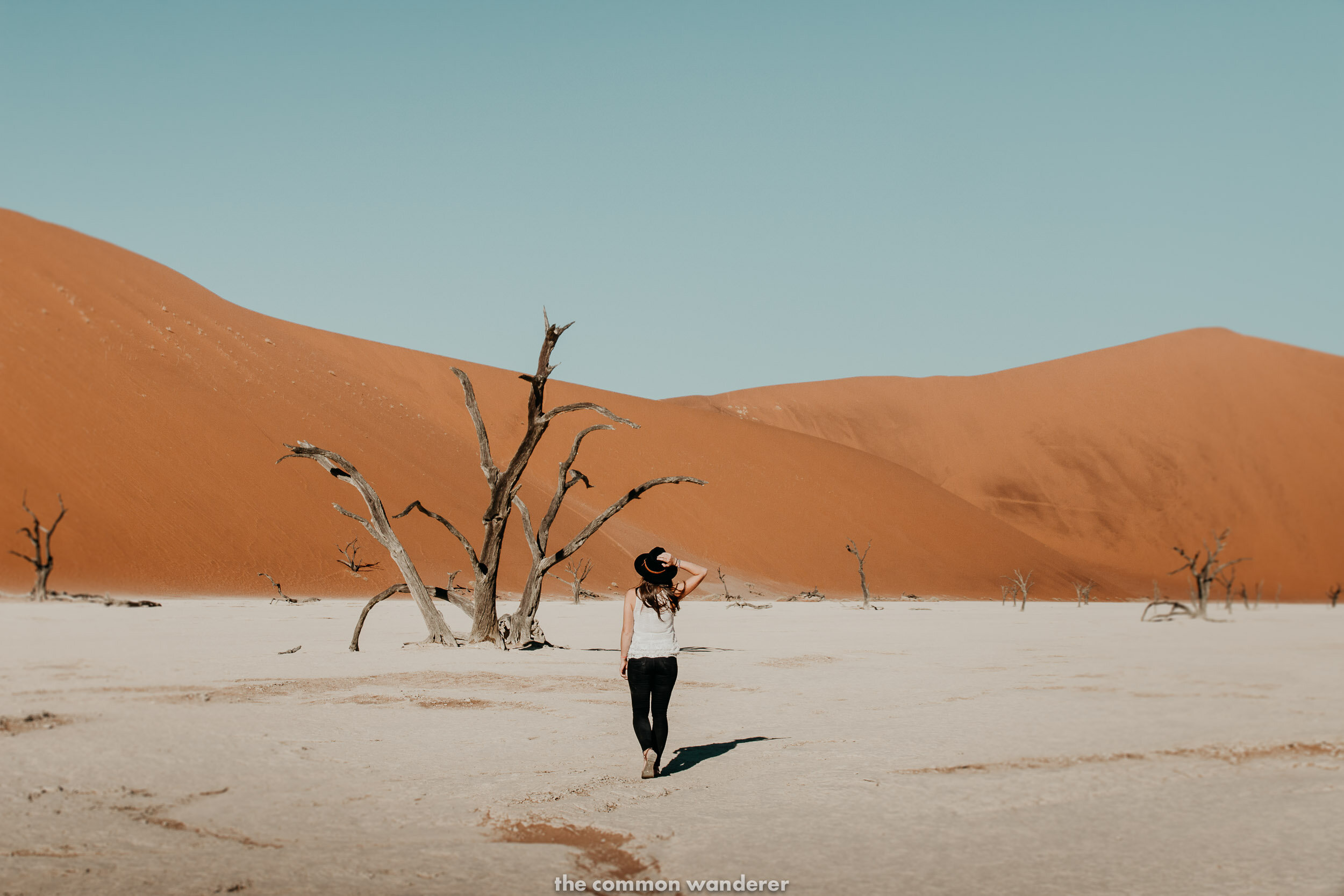
#3 WHEN IS THE BEST TIME TO VISIT NAMIBIA
We absolutely recommend visiting Namibia during the driest months on the year - around June, July and August . During this period expect clear sunny days with cooler temperatures (sometimes freezing), especially at night.
We were actually surprised at how cold it was, so take an extra jumper just in case.
The dry season is also the best time for game viewing, especially in the Etosha National Park, as animals concentrate around scarce water sources.
There is also less chance of malaria during this period, especially in the northern areas such as the Caprivi strip, which should be avoided during the wet season in January - February.
If you’re after a completely different Namibian experience, the summer rains from November - April can turn parts of the country green and occasionally bring floods to the desert.
Namibia travel tip | Visit Namibia during June, July or August for the best weather and wildlife experiences
#4 THE DISTANCES ARE VAST AND YOU SHOULD TRAVEL NAMIBIA SLOWLY
Travel in Namibia is truly unlike travel anywhere else on earth. Known as the land of endless horizons, the vast distances and epic landscapes of this country will leave you feeling both insanely small and insignificant, and carefree and in absolute awe at every turn.
It's epic in every single way, and a visit here is well worth it.
A little known fact is that Namibia has the second lowest population density in the world after Mongolia, with only 2.2 million inhabitants. It’s immensely vast, yet so completely empty. In fact, on one day, we spent several hours driving through the Namib desert without seeing another living soul - not even an animal.
The isolation has its perks though; we found Namibia to be the perfect place to escape the hustle and bustle of city life, and embrace a quieter way of living.
Make the most of the vastness, and spend at least two weeks exploring the country. If you have the time, a month. That way you don't have to rush from place to place and spend days at a time in the car just to tick places off. You won’t regret, and if we’re honest, the longer you spend exploring Namibia, the less likely it is you’ll want to leave.
READ MORE | Our ultimate 10-day Namibia road trip itinerary
BOOK | Rent your 4x4 via Rentalcars.com , our go-to for car rental globally
#5 NAMIBIA IS SAFE(ISH)
Undoubtedly, "is Namibia safe to travel" is the question we're asked most often about our time in the country. Our honest answer, is that Namibia felt like one of the safest countries we've ever visited - until we arrived into Windhoek.
On a Saturday night in the heart of Namibia's capital, we were almost mugged. We won’t go into detail as all's well that ends well, but it was our own stupid fault and a lesson for you all - never let your guard down. Why are we telling you this? Because it’s important we’re transparent with you, but it’s equally important you don’t let our small negative experience dissuade you from visiting.
As a whole, Namibians are incredibly friendly, the country's infrastructure is good, and the level of corruption found here is far less than neighbouring countries. It is, overwhelmingly, a peaceful and welcoming country. However, there are still issues with both poverty and gang violence, which has lead to increased personal and petty crime.
When it comes to travel and safety in Namibia , take the normal precautions you would anywhere, such as never leaving valuables or bags unattended in your car, and being wary of those around you at ATMs.
In some areas, we recommend that you don’t wander alone or catch taxis late at night (particularly after 9pm) as there have been reports of armed muggings and theft of tourist's backpacks.
As always, take these warnings with a grain of salt, and rather than let them sway you from visiting, just keep these Namibia safety tips in mind.
It's also very important to buy travel insurance before you visit Namibia
READ MORE | How to travel safely in southern Africa
BOOK | We recommend booking World Nomads travel insurance

pack for africa | our essential packing list for africa
A little on namibia’s history, #6 namibia was inhabited by khoisan for millenia, then colonised in 1884.
Prior to the 19th century, Namibia had been inhabited by the rich and peaceful cultures of the original San, Damara, Herero and Nama for millennia. The most well-known of these groups, the San Khoisan, are also believed to be the oldest original people in the region (of Botswana, Namibia and South Africa), living a nomadic hunter-gatherer life.
Then, as in many other African nations (and to the surprise of local indigenous populations), the 19th century Europeans arrived.
Although Namibia was technically a British territory, it was to be German colonists that landed on the shoreline at Walvis Bay in the 1880s and quickly claimed the area known as 'South West Africa' for Germany (actually Prussia, at the time).
This occupation has made Namibia a totally unique country in the area; much of its architecture is German, there's a german newspaper, and most of the population speaks German as one of their main tongues.
However, like most colonial empires in Africa, brutality was enforced on the indigenous population. From 1904 to 1907, in what's become known as the Herero revolt, the local Herero and the Namaqua tribes took up arms against the colonisers, and resulted in what has been termed ‘the first genocide of the Twentieth Century’.
German government officials ordered the extinction of natives, and devastatingly, half of the Nama population and 80% of the Herero population were wiped out.
In many ways, this was the precursor to the apartheid years that dominated this region in the 20th century.
#7 APARTHEID ALSO EXISTED IN NAMIBIA
While apartheid is most commonly associated with South Africa today, it's important to be aware that apartheid also existed in Namibia - which is why, like South Africa , a social divide is still evident today.
In the 1940s, South-West Africa become a de-facto ‘fifth province’ of South Africa, and therefore fell under their awful apartheid regime.
Much like South Africa, black and coloured neighbourhoods were torn down, populations were segregated from each other, and it wasn’t until 1990 that independence was gained and the united nation of Namibia was formed.
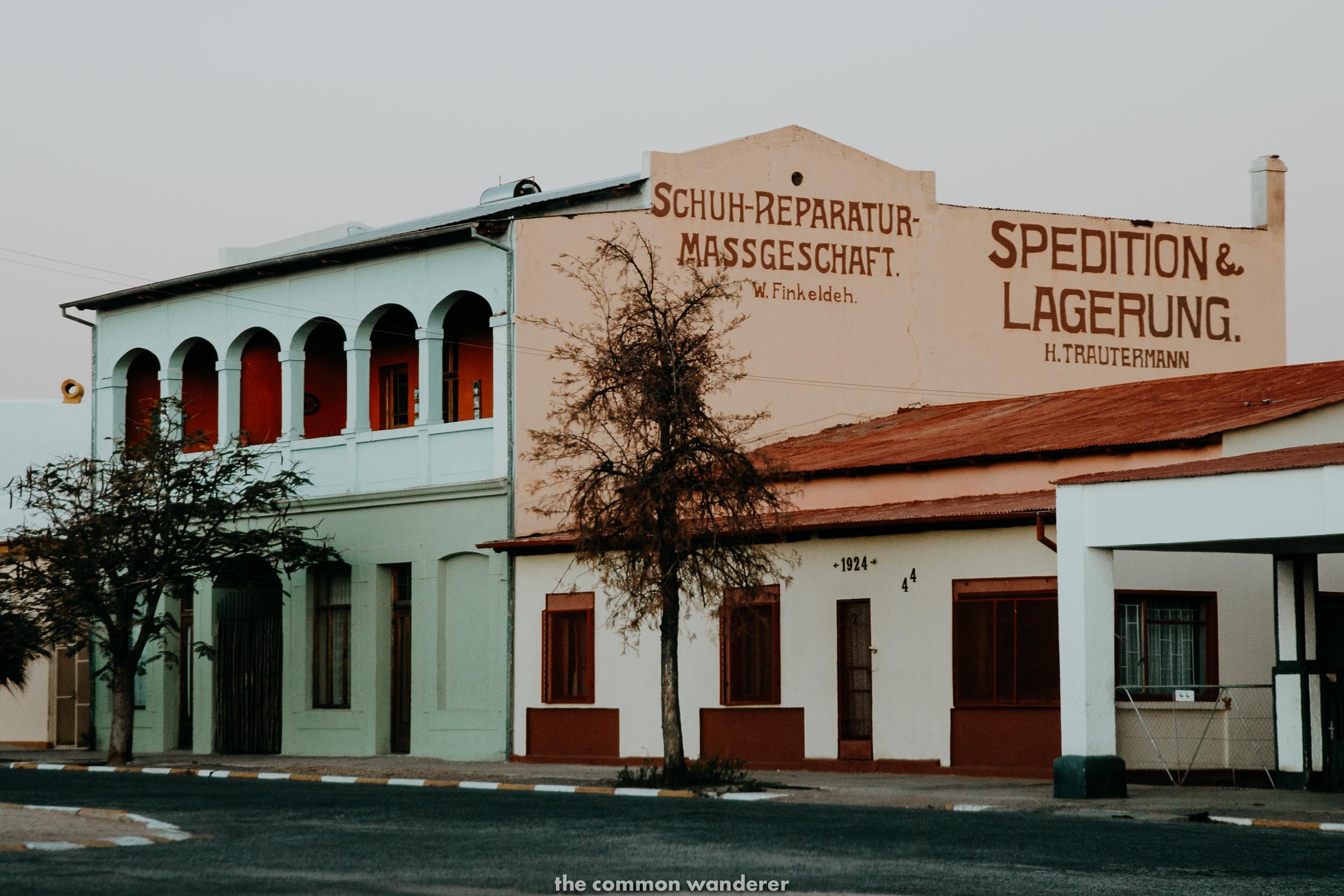
MONEY MATTERS IN NAMIBIA
#8 the namibian dollar = the south african rand.
Namibia, along with South Africa, Lesotho, and Swaziland, are all part of the Common Monetary Area. Therefore, the Namibian Dollar is on 1:1 parity with the South African Rand.
The current exchange rate is 1 USD = 14.1 Namibian Dollars (last updated 7/7/2019)
The South African Rand is widely accepted within Namibia, which is definitely handy if you have leftover change from your travels in South Africa.
While we’re talking money, credit card facilities are available just about everywhere (we paid for a room via credit card in the middle of the desert). However, do still carry an amount of cash with you, just in case.
#9 NAMIBIA IS ACTUALLY NOT THAT CHEAP
If you're backpacking Namibia on a budget, it's worth nothing that travelling Namibia isn't as cheap as what you might initially think it would be.
In some instances, we found Namibia to be an affordable destination. Essentials, such as food and drink were inexpensive, and we found accommodation in cities and towns as also quite cheap. Entry into the many National Parks is also very manageable.
However, as you make your way out into the desert, the prices absolutely skyrocket.
We recommend being thrifty in the cities by taking advantage of backpacker accommodation (check Hostelworld for the best budget accommodation options) or AirBnB .
We found that when visiting Sossusvlei , Fish River Canyon, or Etosha, Booking.com had the best deals, so we recommend booking your accommodation through them. Alternatively, stay in the many campsites if you have camping equipment.
From our perspective, we mostly stayed in hotel accommodation during our Namibia road trip as we didn't have a tent or camping equipment. This totally hiked up our daily budget for hotel accommodation, and as camping in Africa is super easy, it's safe to say that if we had our time over we'd definitely choose the cheaper campsites instead!
If you’re planning to self-drive, be warned that fuel prices are expensive.
We spent over N$2,500 (almost $200 USD) on fuel during our 7-day road trip.
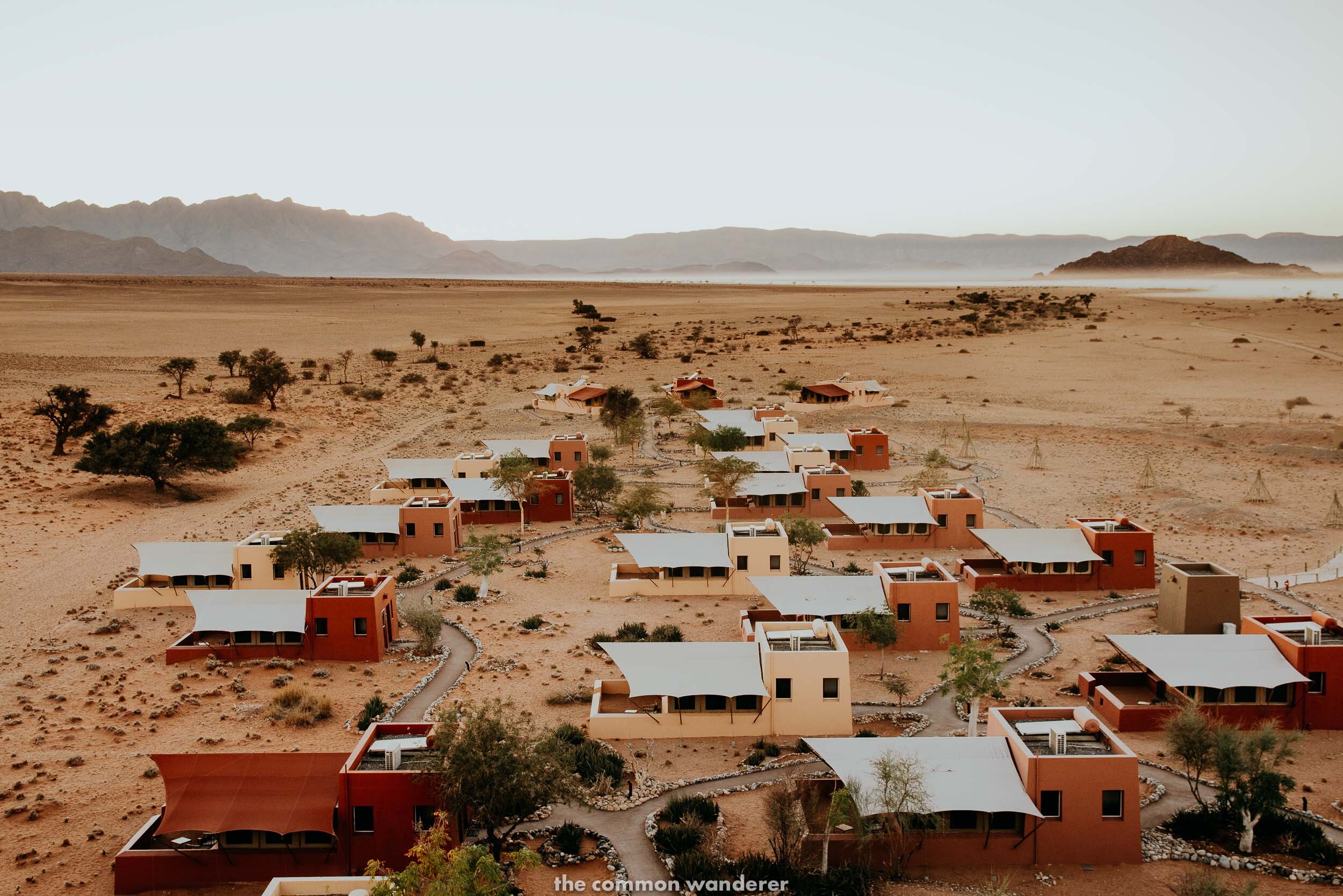
NAMIBIA ATTRACTIONS | WHAT TO SEE AND DO IN NAMIBIA
#10 there is a huge amount to see and do in namibia.
It may be vast, and distances may be long, but Namibia has an awful lot you absolutely must-see .
Sossusvlei , Fish River Canyon and Kolmanskop are must visit destinations to the south, while the unique and wild coastlines of Swakopmund, Walvis Bay and the Skeleton Coast simply cannot be missed.
Don’t forget Etosha National Park , home to some of the best wildlife viewing opportunities in Africa, and the epic, otherworldly landscapes of Spitzkoppe. And we haven’t even mentioned the abundant plains of the Caprivi Strip yet - one of Africa's most unspoiled safari destinations!
READ MORE | Our top 10 essential things to see and do in Namibia , our guide to Sossusvlei dunes
#11 WINDHOEK IS WORTH YOUR TIME
Most travellers will arrive to Windhoek and scurry straight out almost straightaway, and in all honesty, we get why. But despite there not being a whole lot to do in Windhoek, we just can't hate on the city - particularly because Mark's mum was born there!
If you’ve been on the road for a while, Windhoek is a good place to stop, relax, and stock up on all your supplies before hitting the Namibian highways to your next destination.
If you are spending time in Windhoek, we recommend checking out the follow places:
Christuskirche (Christ Church)
The Parliament Gardens
The Old Breweries Craft Market
Visit one of the beer houses (it is little Germany after all)

#12 SWAKOPMUND IS EXTREME SPORTS HEAVEN
The violent Atlantic ocean to one side, the towering dunes of the Namib to the other, the colonial town of Swakopmund feels like an outpost time forgot. It’s surprising then, that ‘Swakop’ is actually Africa’s adventure capital.
Those looking for a shot of adrenalin can take their pick from a smorgasbord of activities, including skydiving (Swakop is one of the cheapest places in the world skydive!), sand-boarding, quad-biking and power-kiting.
And at night, make your way to one of the many awesome pubs, notable for their delicious German beer and cuisine.
BOOK NOW | Check out and book Swakopmund’s best adventure tours here
#13 NAMIBIA HAS GHOST TOWNS
Kolmanskop , in the far south-west corner of Namibia, was once a thriving diamond mining town. Established in 1908, Kolmanskop was complete with stately homes, a school, hospital, bowling alley and ballroom.
As the price of diamonds began to drop after World War One, and after richer diamonds were found further south, the residents began to leave. By 1954 the town was abandoned.
Now, an eerie ghost town remains, partially reclaimed by the constantly moving sands of the Namib. It’s a seriously cool place to visit and one which is worth the effort of getting there (generally from Luderitz).
You will need a permit to enter the area, which can be organised through one of the tour companies in Lüderitz before you go, or at the gate when you arrive.
There are a few things to keep in mind regarding the Kolmanskop permits:
Standard Kolmanskop permits | are about N$75 per adult (though this may have increased since we were there in 2016), and also includes a free tour. While it is possible to wander around the town yourself, but we'd recommend joining the tour to ensure you don't miss out on discovering any of the town's secrets. Tours depart at 9:30am and 11:00am.
Kids permits | if you're travelling with kids, entrance fees are N$50 for children between 6 and 14.
Photography permits | N$230 per person. This is actually a slightly confusing permit as you can still photograph the site using your standard entry permit. However, the photography permit grants access to Kolmanskop from sunrise until sunset and also includes the free tour at 9:30am. Sadly, our schedule didn't allow for us to stay that long - but if you're a keen photographer we'd totally recommend that you purchase the extended permit, as the shadows and light would be incredible on the buildings during this time.
THE DETAILS
Opening hours | 9:00am - 13:00pm each day
Location | Map of the Kolmanskop area - Kolmanskop is 10kms east of Luderitz on the B4 highway.
Cost | Kolmanskop permits N$85.00 per adult (see details above)
Food and drink | Despite being an abandoned town, you can purchase (good!) food at the Kolmanskop restaurant/museum on site.
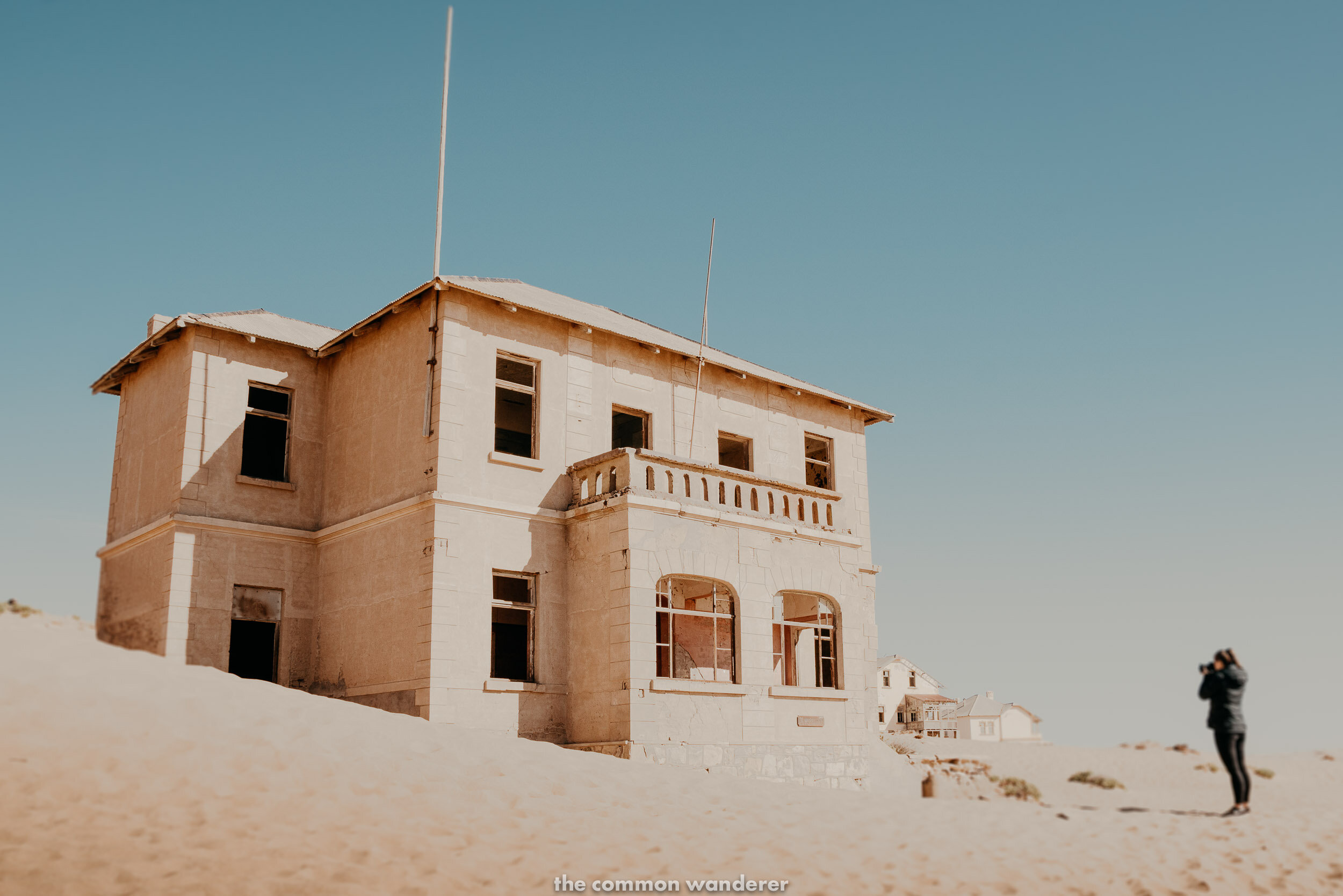
#14 NAMIBIA IS HOME TO A HUGE DIVERSITY OF WILDLIFE
All this talk of deserts and isolation might have had you thinking that there's no interesting wildlife in Namibia - which is absolutely not the case!
The salt clay pans of the Etosha National Park is home to some of the greatest wildlife diversity in Africa, and the Caprivi Strip is known to be some of its most untouched safari plains.
All the usual suspects are here in Namibia; the big 5 and the little 5, along with a number of desert game we'd never seen before, like the Kudu, Oryx, Gemsbok, and the Damara Dik-Dik.
Then, there's the Cape Cross Seal Colony just outside of HentiesBaai (hold your nose as you approach!) and the huge Flamingo population around Walvis Bay.
If it's diverse and plentiful wildlife you're after, Namibia has exactly what you're after.
travel inspiration: 10 places you absolutely must visit in namibia
Namibia travel tips | driving in namibia, #15 namibia is the perfect road trip destination.
Namibia is vast, which we’re sure you’re now aware of. Because of this, it’s the perfect destination for an epic road trip .
The beauty of road tripping through Namibia is having the freedom to travel at your own pace, and go wherever you want to go. There were so many times we just had to pull over, the scenery too incredible to pass.
The road network is extensive and generally well signposted (apart from the depths of the Skeleton Coast).
If you do decide to road trip, be aware of the large distances between destinations, and plan accordingly.
READ MORE | Our epic 10-day Namibia road trip itinerary
#16 YOU SHOULD HIRE A 4WD AFRI-CAMPER
If you’re planning on road-tripping through Namibia , you should do it in an off road 4WD Africamper . These converted 4WD ute/truck/tray back beasts are made for the Namibian roads, and can easily handle the sand that will inevitably stand in your path.
If you can’t afford a 4WD camper, we recommend hiring a high clearance mini SUV. We managed to get by just fine in ours, despite a few hairy moments.
That said, make sure you have travel insurance for your road trip in Namibia . Distances are vast, and you're in the desert. Be prepared, be safe, and always travel with insurance for the 'just-in-case-worst-case-scenario' moments.
READ MORE | 20 essential tips for driving in Namibia
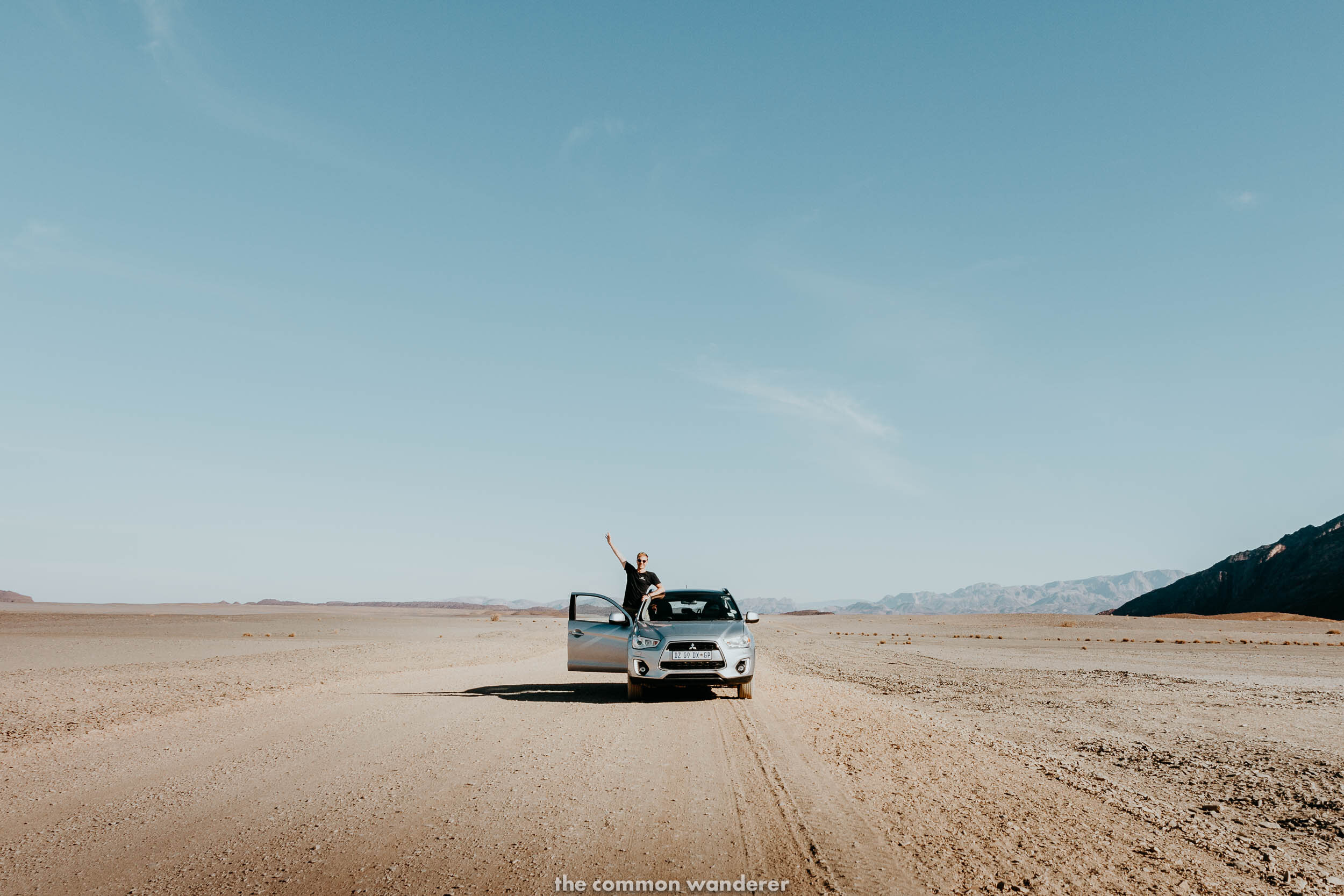
#17 YOU ALWAYS NEED TO BE PREPARED
In Namibia, it’s important to prepare for the worst, and expect the best. After all, you're about to take off an a multi-day journey through an extremely dry and wild desert - being ready for whatever that adventures throws at you is a must.
If you’re heading on a Namibian road trip by yourself, we cannot emphasise enough how important it is to always pack extra supplies including food, water, and warm clothing. To give you an idea, we always had a minimum of 10L of water in the back of our car, and enough food to last us 2-3 days if the need arose.
Some days, you'll be lucky to pass another car on the road. On one stretch of road in the Namib Desert, we passed three cars/trucks with punctured tyres. If you’re self-driving, always carry additional fuel and tyres.
READ MORE | Our comprehensive guide to driving in Namibia (including our top tips!)
#18 IS DRIVING IN NAMIBIA DANGEROUS?
For a first-timer, driving in Namibia can be tough; there's a lot to know and be aware of. We’re written a complete guide to driving in Namibia, which will answer all your questions and provide helpful tips to safely navigate your way through the country.
Overall, driving in Namibia isn’t dangerous per-se, however, like anywhere in the world, things can and do happen on the long, empty roads. Concentration and lack of experience driving in certain conditions are the biggest issues for those driving in Namibia for the first time.
Many of Namibia’s attractions are located deep into the desert, which can cause issues for those unprepared. Punctures, becoming bogged, or losing control are the most common issues when driving in Namibia, and all can be helped by following the rules and regulations listed in our driving in Namibia guide.
We believe it's imperative you get travel insurance to cover any potential issues driving in Namibia.
We recommend organising comprehensive travel insurance through World Nomads before you go.
BOOK | World Nomads travel insurance

africa safety: how to travel safely in southern africa
General namibia travel tips, #19 english and german are widely spoken.
Namibians commonly speak two or three (or more!) languages ; English, a native tongue like Oshiwambo (spoken by 49% of the population), and either German or Afrikaans.
In fact, due to the country’s colonial history you’ll hear German pretty regularly around areas like Swakopmund (which looks eerily like a quaint german town), while Afrikaans often functions as the lingua franca between locals.
read up: a travellers’ guide to languages in southern africa
#20 plan your trip ahead of time (as much as you can).
Okay, we’re going to let you in on a little secret.
We didn’t plan our Namibian trip ahead of time, nor book any accommodation, and unfortunately we paid handsomely for it. There was actually one moment in Sossusvlei we thought we’d have to sleep in our car overnight, without anything bar the down jackets on our backs. Thankfully, we didn’t!
Major travel fail.
Our advice is to thoroughly research Namibia and plan your Namibia itinerary ahead of time (you can use our Namibia travel guide to plan all your adventures!).
Work out where you want to visit, how to get around, and where to stay; and then book everything you can before you leave. It's an understatement that mobile service is patchy in desert areas, and there's nothing worse than turning up at your destination after a long drive only to discover that the place is entirely booked up.
Note: Namibia is extremely busy during South African school holiday periods, so keep that in mind when planning your journey.
READ MORE | Our ultimate Namibia travel guide
BOOK | Search for dates, and book accommodation in Namibia here
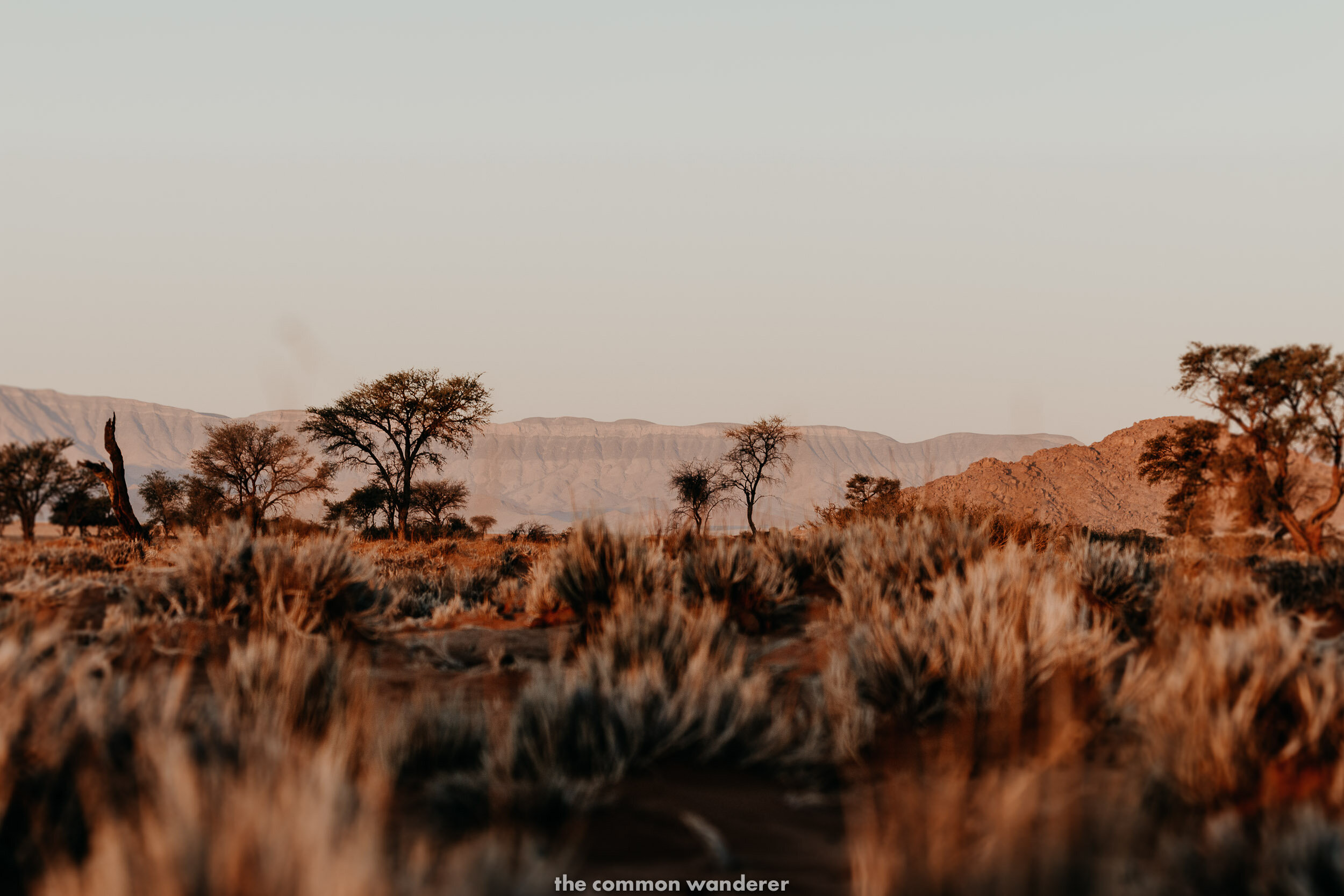
#21 THE FOOD IS SURPRISINGLY GOOD (IF YOU LIKE MEAT)
The fusion of German, South African and traditional African cuisine means the quality of food in Namibia is actually very good .
We had many exceptional meals in far flung outposts such as Aus, Fish River Canyon, and Sesriem. And if you’re a meat eater you’ll be in heaven, with vast selection of game meat available just about anywhere. And the trusty road-trip snacks of biltong and boerewors.
Vegetarians, your food game might be a little harder, but definitely not impossible.

#22 YOU CAN DRINK THE TAP WATER
It's important to know that you can drink the tap water in Namibia. Sure, it might taste a little different, but so does London's water (yuck!). If you’re still worried, buy a water filtration system such as this before you leave (and stay away from buy bottled water!).
We should point out that Namibia is a desert country and as such has very limited water resources. Try to be water conscious and conserve wherever you can.
BUY NOW | Reusable water bottle - we use the Grayl water purification bottles , which allow us to fill up from any water source, anywhere in the world (including train taps!).
#23 IT GETS COLD IN NAMIBIA SOMETIMES
If you’re visiting Namibia during winter (June - September), expect very pleasant days and freezing cold nights.
There were many mornings we’d wake up and refuse to get out of bed, the temperature outside was so cold. Like, between 0c - 10c overnight kind of cold.
That said, during the day the temperature will still climb to around 24c each day, so peaks and troughs, eh?

#24 NOT ALL TRAVELLERS REQUIRE A NAMIBIAN TOURIST VISA
Travellers, rejoice - there is a place where the visa process looks upon you favourably! For many travellers in Namibia, there's actually no need to organise a tourist visa at all if your stay is less than 90 days.
The lucky travellers who can go 'visa-free' here are:
South Africans
Australians
For the above, do make sure that you check with the immigration desk that you've been granted the full 90 days duration and that the correct date of entry was stamped on your passport to make sure there are no issues down the track when you're trying to depart.
Those who do require the 90-day tourist visa for Namibia (which can generally be processed within 3 days at your local Namibian Embassy) are:
South Korea
Travellers from Eastern European
As always, make sure you double check your individual country's travel advice prior to arriving in the country for the most up to date visa information.
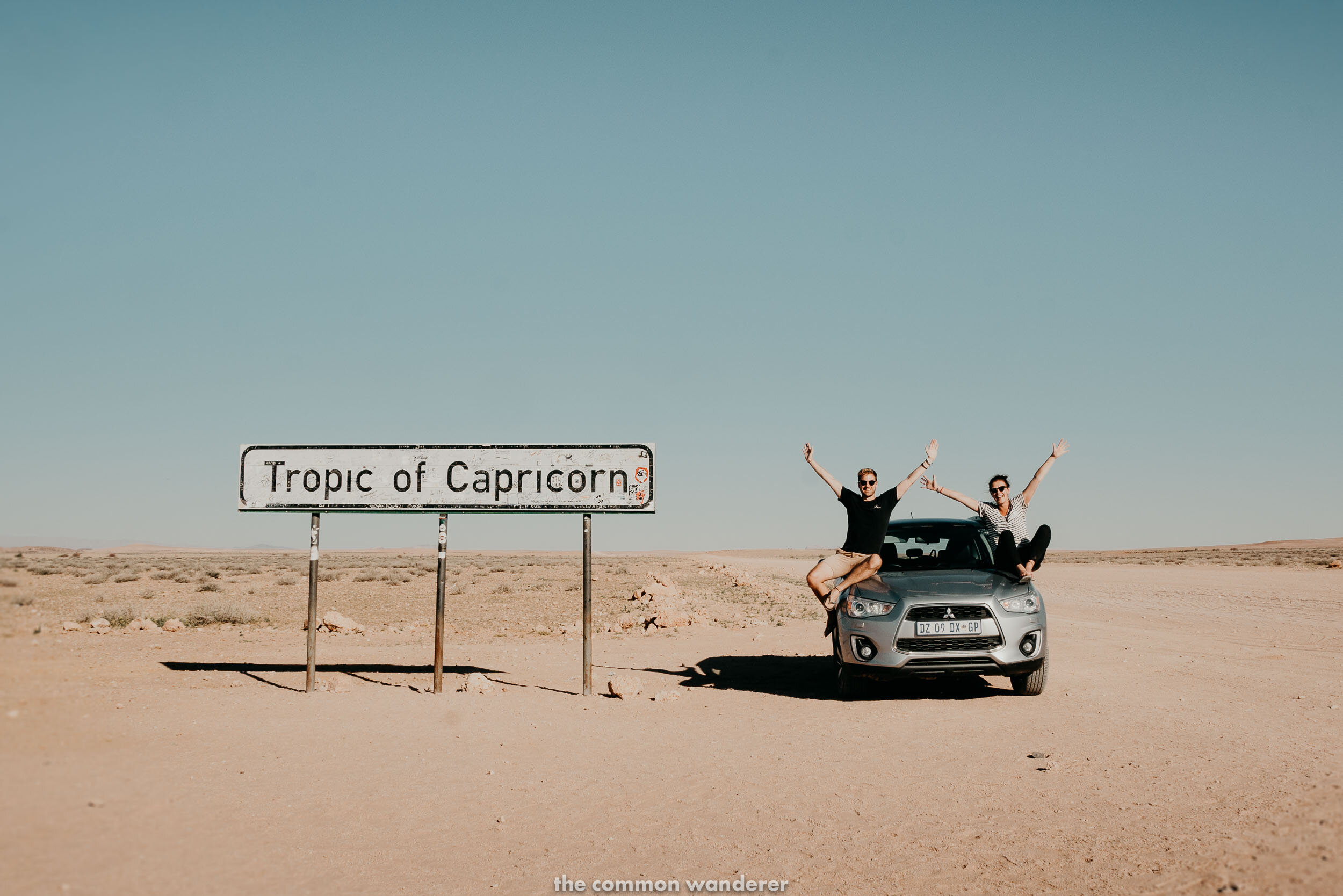
plan your trip with our comprehensive namibia travel guide
#25 crossing borders in and out of namibia.
Compared to other southern African countries, we found the process of crossing borders into and out of Namibia seamless.
Be prepared to wait, and have the correct documentation such as your passport and , however you won’t be ‘required’ to pay a bribe, or any other underhanded tactics in Namibia.
A Yellow Fever vaccination certificate, which is commonly needed for many African countries, is only required for travellers 9 months of age and older coming from - or who are in airport transit for more than 12 hours within - a country with risk of Yellow Fever transmission.
Crossing into Namibia from neighbouring countries will cost N$295 (as at 05/12/20109), payable when entering Namibia. As far as we're aware, this needs to be paid in cash, so be prepared. You will also need the applicable documentation including:
Valid passport of the driver
Certified copy of the vehicle registration papers
Letter of authority from the registered owner/hire company
Motor insurance certificate - obtainable at the border free of charge
If coming from South Africa, a ZA sticker
For more information, click here .
CAR RENTAL | Search for your 4x4 on Rentalcars.com here
#26 PHOTOGRAPHY IN NAMIBIA
A photography enthusiast? Or just someone who loves and epic ‘gram snap? You’re going to love Namibia.
A place where it’s seemingly impossible to snap a bad photo (check out our best Namibia photos! ), Namibia is home to some of the most unique and stunning scenery you'll ever see, from the Mars-like landscapes of Sossusvlei to the barren plains of Etosha National Park, from the rugged and dramatic coastline to the frozen-in-time towns.
For the enthusiasts among you, you’ll definitely need to bring a zoom lens to photograph the epic wildlife, while a wide angle lens will bring the unique landscapes to life.
If possible, bringing a lens with a low aperture, which allows more light to pass through the lens, will yield incredible astro-photography results.
Beyond the essentials, consider brings ND or polarising filters to cut out the extreme glare, or commit to shooting early morning and late afternoon for softer, more attractive light.
Below is the photography gear we used to get all of our shots in Namibia.
The Sony A7RII produces brilliant photos and video
The original photography beast which keeps going strong, the Canon 5D MKIII produces the best colours
The Canon 24-70mm is known as one of the best zoom lenses on the market; it's exceptionally sharp, small and lightweight, which makes it perfect for travel photography
The Canon 70-200mm f4 is our favourite lens, hands down. The image stabilisation works a treat, even on moving trains!
Check out the rest of camera gear here.
If you like our photography, be sure to follow us on Instagram , too.
OUR NAMIBIA PHOTOS | The epic beauty of Namibia in photos
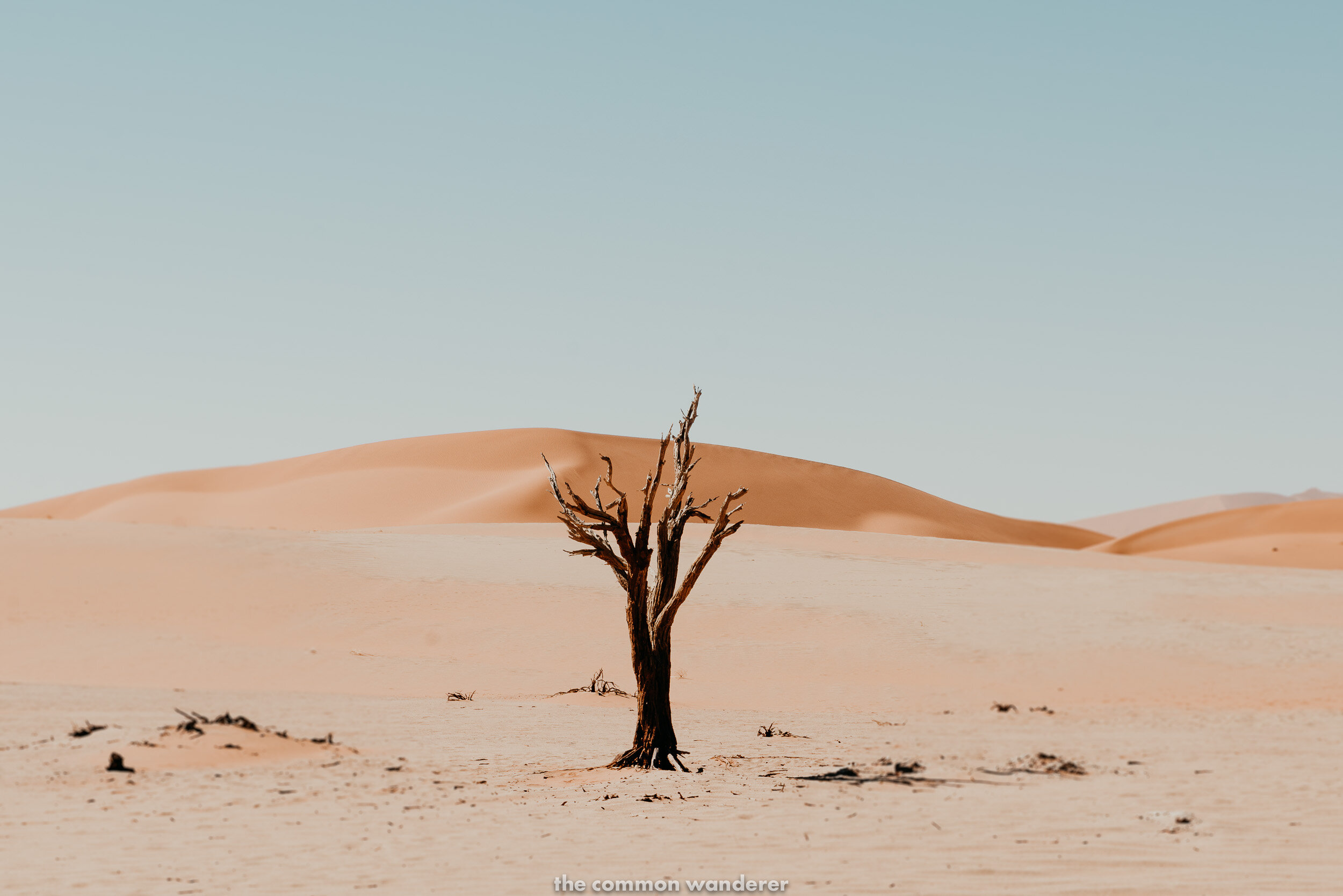
desert dreaming: our ultimate guide to the dunes of sossusvlei
Responsible travel tips for namibia, #27 respect the local cultures in namibia.
Namibia is home to many tribes, including the famous San and Himba peoples, of which the San are believed to be southern Africa's original inhabitants, while the distinctive coloured ochre face paint and braided hair of the beautiful Himba tribe, which indicates age and marital status, has led to worldwide notoriety.
As a result, many visitors to Namibia wish to visit these tribes and understand first hand the semi-nomadic culture, customs and lifestyle.
This has led to a complex power dynamic and has raised questions about the sustainability and responsibility of such visits.
On one hand, it provides money to communities that otherwise may struggle for forms of income, which in turn raises living standards and allows for further education and medical provisions. Visitors also provide the tribes with the ability to stay within their communities and preserve the rich cultural heritage and traditions.
On the other hand, it can be seen as exploitative to view these peoples and photograph them as if their lives were an exhibit.
We’re on the fence a little, as we can understand the benefits of such tourism and what they can do for communities and cultures, but also see the negative outcomes which may occur.
If you wish to visit the tribes, we recommend doing so as part of an ethical, organised tour, where a portion of the profits goes back into the local communities.
If you do visit one of the remote tribes of Namibia, always ask permission before photographing, and steer clear of photographing young children (if you wouldn’t photography children in your own country, don’t do it here!)
#28 A LITTLE ON WILDLIFE AND CONSERVATION IN NAMIBIA
Given that 42% of Namibia’s surface area is under conservation management , it’s clear that Namibia takes conservation very seriously.
Namibia is on of the few countries in the world that addresses the importance of the environment in its constitution, in which article 95 states “The State shall actively promote and maintain the welfare of the people by adopting international policies aimed at the maintenance of ecosystems, essential ecological processes and biological diversity of Namibia, and the utilisation of living natural resources on a sustainable basis for the benefit of all Namibians, both present and future.”
We disagree with hunting of any sort, so please don’t partake in this activity in Namibia, regardless of your beliefs.
When visiting national parks and reserves in Namibia, ensure that you don’t leave any litter – everything you carry in you must carry out. Apart from the obvious environmental damage, litter can be harmful to wildlife.
Although it may not be obvious to the naked eye, life still exists around the desert. When visiting the dunes, just be careful where you go, and try to follow trails and pathways so as not to destroy and plants or wildlife.
And finally, whatever you do, don’t buy any animal souvenirs - they stopped being cool in the 1800s and there’s nothing noble about coming home with an ivory tusk, or lions tooth.
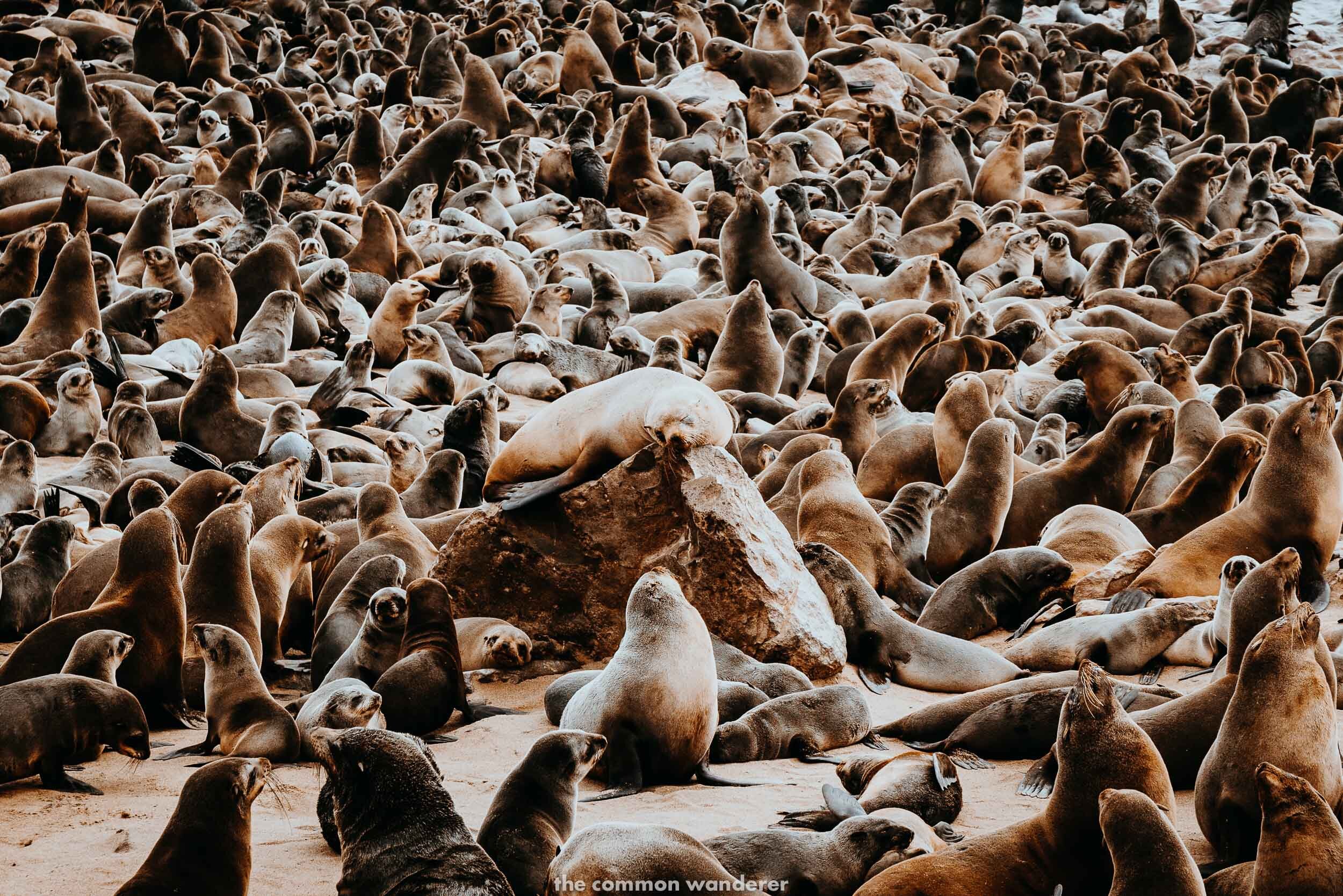
#29 WATER SCARCITY IN NAMIBIA
Unsurprisingly, in a country mostly covered by desert, Namibia suffers from extreme water scarcity.
To make matters worse, the country is currently afflicted with one of the worst droughts in history , with officials blaming climate change and a five-year drought ripping through southern Africa for dam levels dipping below 20% nationwide (as of January 2020).
If you’re visiting Namibia, keep this in mind when showering or using the toilet.
When we visited, we showered for less than 2 minutes, once a day, a lived by the motto “if it's yellow, let it mellow. If it's brown, flush it down”.
Although it’s a pain, you should do the same.
#30 SAY NO TO PLASTIC IN NAMIBIA
Unfortunately, Namibia isn’t immune to the plastic crisis which has engulfed our planet, despite its vast size and small population.
Avoid contributing to the global plastic crisis (read why plastic is a huge travel problem here ) by saying no to plastic and opting for the sustainable option when it comes to your snacks, toiletries, and drinks.
Some of our favourite zero-waste swaps are:
Asking for no straw and using our own reusable metal straws instead
Reusable cutlery and takeaway containers
Reusable tote bags
Ordering soft drinks or juice in glass or can version (or going without if it’s not available)
Solid shampoo, bodywash, moisturiser
bamboo toothbrushes
For the ladies: a menstrual cup
READ | Our ultimate guide on how to reduce your plastic consumption on the road
#31 TRAVEL WITH A REUSABLE WATER BOTTLE
If you’ve followed us for a while you know this is probably the #1 thing that frustrates us when we travel.
Repeat after us: modern travellers do not need to buy bottled water.
Particularly when you realise that we humans binge on a million plastic bottles a minute , and they take more than 400 years to break down.
It’s possible to drink the tap water in Namibia, however if you’re worried, purchase a water purification and filtration bottle before your travel.
Our trusty The Grayl GEOPRESS water purification and filtration bottles is the best investment we’ve ever made.
As a result, we haven’t bought bottled water in nearly two years now, and have drank tap water throughout Nepal, India, Sri Lanka, and the Caucasus without being sick once.
BUY | The Grayl GEOPRESS water purification and filtration bottles
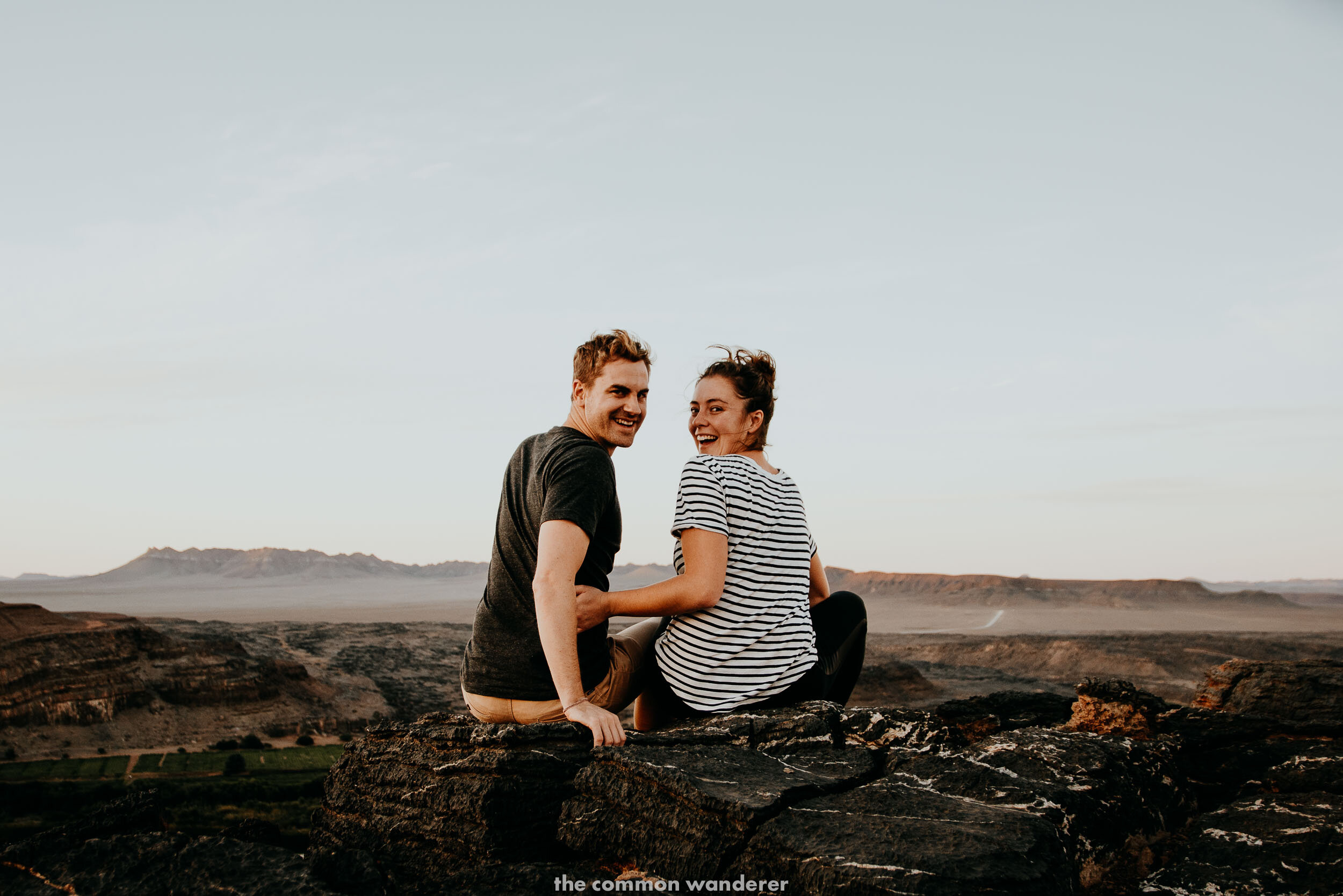
#32 DON’T FORGET THESE NAMIBIA PACKING ESSENTIALS
Not only is Namibia raw and rugged, its weather is hugely diverse, with climatic differences that many struggle to comprehend (like, freezing nights and blazing deserts days).
If you’re planning to visit Namibia, you’ll need a good range of gear to help you travel safely and comfortably.
From the right clothes, to road tripping essentials, here are our recommendations for Namibia packing essentials.
TENT | When you have your own tent, you have the freedom and flexibility to set up camp just about anywhere in Namibia. Our recommendations are: The budget tent: Eurohike Tamar 2 Man Tent , or the sturdy, splurge tent: The North Face Stormbreak Tent
SLEEPING BAG + SLEEPING BAG LINER | It gets freezing in the night in Namibia, so we recommend bringing a sleeping bag with you such as RAB's range of sleeping bags .
If you're heading out on a planned group tour, you'll generally have a sleeping bag provided to you. Always bring a sleeping bag liner (we use these Sea to Summit silk liners ) with you to use with hired sleeping bags.
TRAVEL TOWEL | A microfiber towel is the perfect saviour when your hostel doesn't have towels or you need something to dry off with after a quick dip.
REUSABLE WATER CANTEEN | Reusable water bottle - we use the Grayl water purification bottles , which allow us to fill up from any water source, anywhere in the world (including train taps!).
Or, Water-To-Go is an all-in-one device: a reusable water bottle meets incredibly powerful filter device (designed by NASA!), which removes 99.9% of all nasties from any water source you fill it up at.
Order yours here , and get 15% off with our special code: TCW15
A HEADLAMP | Probably one of the most underrated items in any Africa backpacker's arsenal; the trusty headlamp , will help you navigate your campsite in the dark.
SUNSCREEN | It doesn't take long for that relentless Namibia sun to do some real damage, so don’t forget your sunscreen (minimum SPF 30 , but ideally SPF 50 ). We actually found it pretty hard to track down a quality sunscreen that didn't cost a fortune in these parts, so we'd definitely recommend bringing enough for your whole trip from home.
SUNGLASSES | Your peepers will be staring across safari plains in the blazing midday sun for days on end - protect them from damage with a good pair of polarised sunnies .
FIRST AID KIT | In the wild, vast spaces of Namibia, it really does pay to have a well-stocked medical kit in your possession, like this first-aid kit
POCKET KNIFE | A good pocket knife (we have this one from Victorinox ) is an absolute essential for your Namibian travels.
PORTABLE SOLAR CHARGER | Reliable electricity isn't always something you can find on the road in Namibia, so we use the Anker Powerport Solar charge r, which also has dual USB ports to charge multiple devices, like a phone and a gopro, at the same time.
TRAVEL CUTLERY | Avoid being stuck in your hostel or on the road without any cutlery to eat with, and carry a bamboo cutlery set (or at least a spork!) in your daypack so you're always prepared for meal time (this is actually our favourite travel essential!).
REUSABLE FOOD CONTAINER | These are super useful in cutting down your plastic consumption when you're taking food away from stalls, as well as storing and/or transporting food you've cooked on your travels. We travel with these collapsible food containers .
A GOOD BOOK / KINDLE | Distances are vast and your travel times between destinations here are often pretty lengthy (especially if you’re not driving!). You'll want to bring a decent book along with you - or a Kindle loaded with all your faves.
travel essentials: our comprehensive Africa packing list
Namibia travel essentials | plan your trip to namibia, how to get to namibia.
Most people choose to fly into Hosea Kutako International Airport, about 45min east of the capital, Windhoek. If you're flying from Cape Town, South African Airways operates 3 flights per day, other areas are regular (but obviously not as frequent).
Check Skyscanner for the best Namibia flight deal s from wherever you're travelling from.
If you're already in Southern Africa and keen to keep costs to a minimum, the most convenient and easy bus service to Namibia is the Intercape Mainliner .
Services run from Cape Town, Victoria Falls, and Johannesburg. It's trickier to travel from Botswana (a mix of local buses and taxis), but it is also possible to cross the border from Botswana too.
We crossed into Namibia at the Vioolsdrift/Nordoewer land crossing from the northwest of South Africa. You can also cross from South Africa at a number of other points, including: Mata Mata, Rietfontain, Nakop, Onseepkans, Sendelingsdrif, and Alexander Bay (full disclosure: obviously as we haven't crossed these, we can't currently vouch for their ease of access or suitability personally).
Self-drive crossings can also be made easily from Botswana, Zambia, and Angola.
TOURS AROUND NAMIBIA
If self-driving Namibia isn’t quite your style, or you’re concerned about personal safety, there are also a number of small group adventure tours we’d recommend taking through the country, including:
WONDERS OF NAMIBIA | This 10-day G Adventures tour takes in all the best Namibia highlights, including Sossusvlei and Deadvlei, Fish River Canyon, Swakopmund and Etosha National Park. Prices and availability here
Or, search all G Adventures Namibia group tours here

NAMIBIA TRAVEL GUIDES
We used our Lonely Planet Southern Africa guide religiously on this trip and recommend you purchase and read one before travelling.
TRAVEL GUIDES | Buy your Namibia guide book
ROAD MAPS | We absolutely recommend purchasing a Namibia roadmap such as this one

PLANNING SOME NAMIBIA TRAVELS SOON?
We have a heap of essential reading before you travel to Namibia:
NAMIBIA TRAVEL GUIDE | Our complete Namibia travel guide - what to see, know and do
THE BEST THINGS TO DO IN NAMIBIA | 10 essential things to do in Namibia
NAMIBIA ROAD TRIP | Our 10 day Namibia road trip itinerary , essential Namibia road trip tips
STUNNING SOSSUSVLEI | Our detailed travel guide to Sossusvlei
NAMIBIA IN PHOTOGRAPHS | The epic beauty of Namibia in photos
PHOTOGRAPHY | Love our photography? Wondering what gear we use to get all of our photos around the world? Click here to view our detailed photography gear guide , as well as our top travel photography tips !
RESPONSIBLE TRAVEL | Responsible travel is important. REALLY IMPORTANT. Learn our top responsible travel tips to help you, your family and friends travel more consciously around the globe
ECO FRIENDLY PACKING ESSENTIALS | Don’t leave home without our favourite eco-friendly travel essentials
We hope these Namibia travel trips come in handy. If you've visited, and have something to add, let us know in the comments below!
LIKE IT? PIN IT!
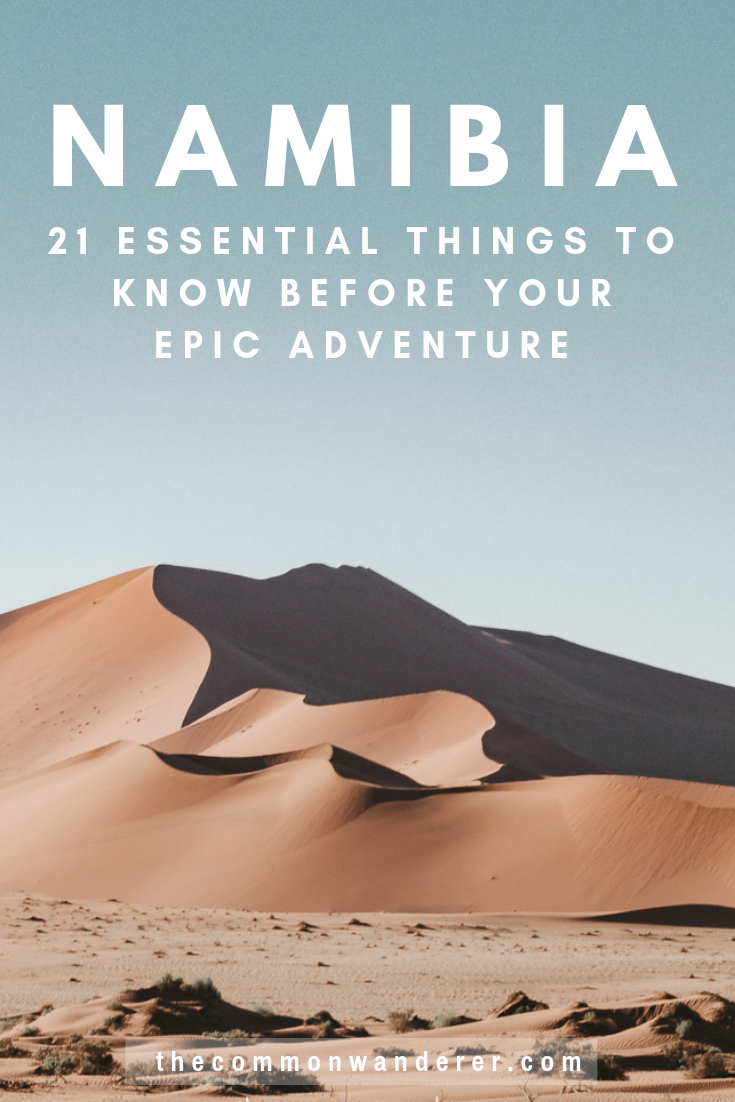
HEADING TO NAMIBIA? CHECK OUT THESE POSTS!
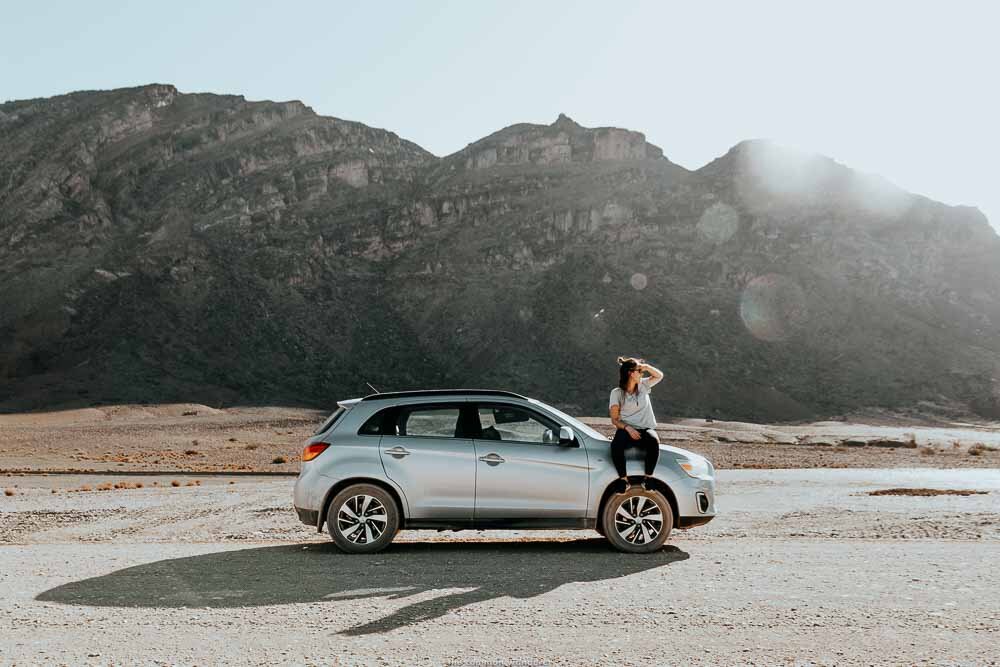
Some of the links on this things to know about Namibia post are affiliate links.
If you choose to purchase using these links, we receive a small commission at no extra cost to you. Please know that by using these affiliate links, you're directly supporting The Common Wanderer to stay wandering, the running costs of the site, and our ability to provide you with free content to help you on your travels.
That, and you're officially a legend.
- Travel Guides Plan your adventure
- Destinations Our favourite places
- Tours Book a trip
- Travel Companies Independent specialists
- Travel Guides
- Destinations
- Travel Companies
Safari in Namibia
An expert guide to the best safaris in namibia.
Melanie van Zyl
- In this guide
Namibia safari
- Where to go
- Need to know
How it works
Researching travel guides, reviewing campsites and finding new ways to photograph its sublime scenery, I've been going on safari in Namibia for over a decade and have visited virtually every corner of this vast and little-known country.
Namibia shares borders with some of Southern Africa’s safari heavyweights: South Africa , Botswana and Zambia . But the Namibia safari experience has little in common with its neighbours. Yes, there are all the “big five” and other blockbuster megafauna, but all in much lower densities. There are few open savannahs and vast river deltas. Here, the desert reigns supreme. Namibia is Sub Saharan Africa’s driest country, where the elephants have evolved into their own subspecies to adapt to the scarcity of water. Going on safari in Namibia is more about marvelling at the staggering desert scenery and the weird micro-scale wildlife that can withstand this extreme environment.
You can go on safari in South Africa or Kenya to chase the big five. You go on safari in Namibia to see something that is truly, often startlingly, different.
If there's one place that's truly about the journey, not the destination, it is Namibia. Read on for my expert guide to the best safaris in Namibia.
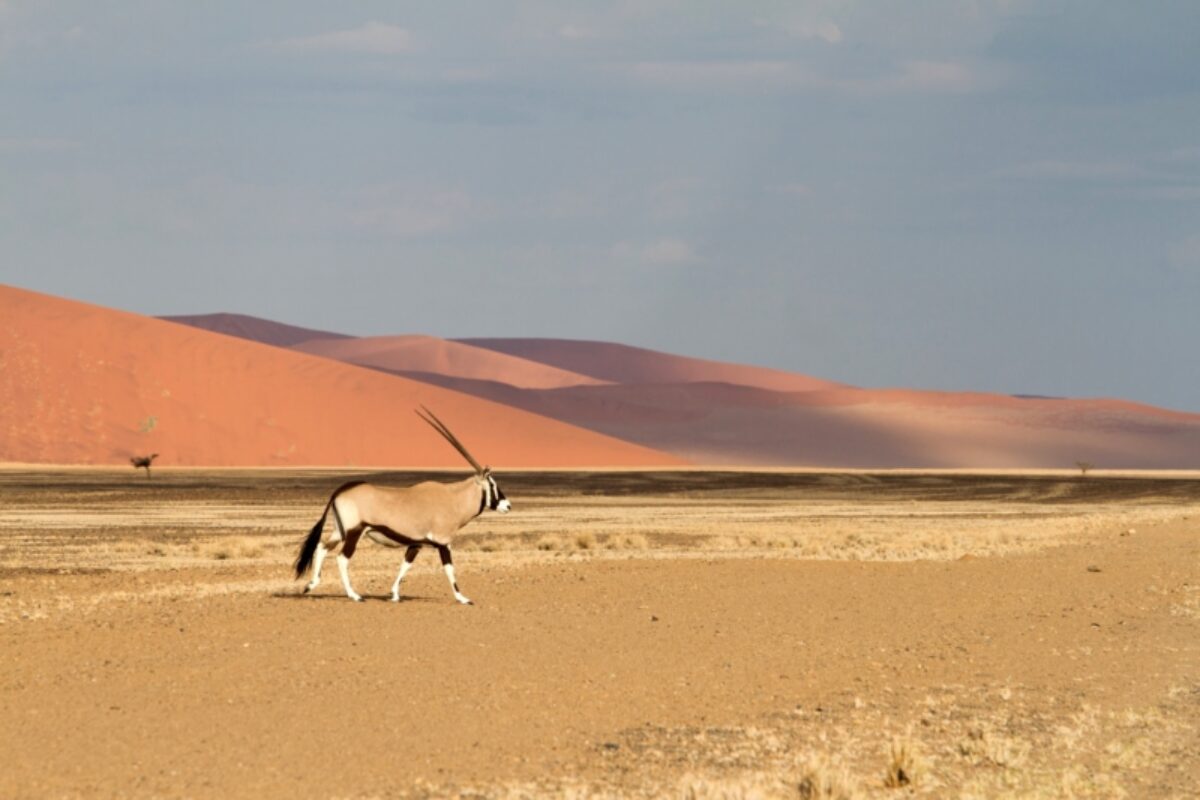
A lone oryx in the vastness of the Sossusvlei clay pans, Namibia
featured namibia safaris
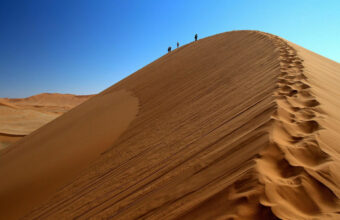
Namibia Unbound
10 day small group tour to the highlights of namibia.
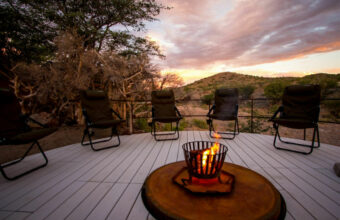
Namibia Under Canvas
10 day small group tour, where to go on safari in namibia, namibia's most popular – and some lesser-known – highlights.
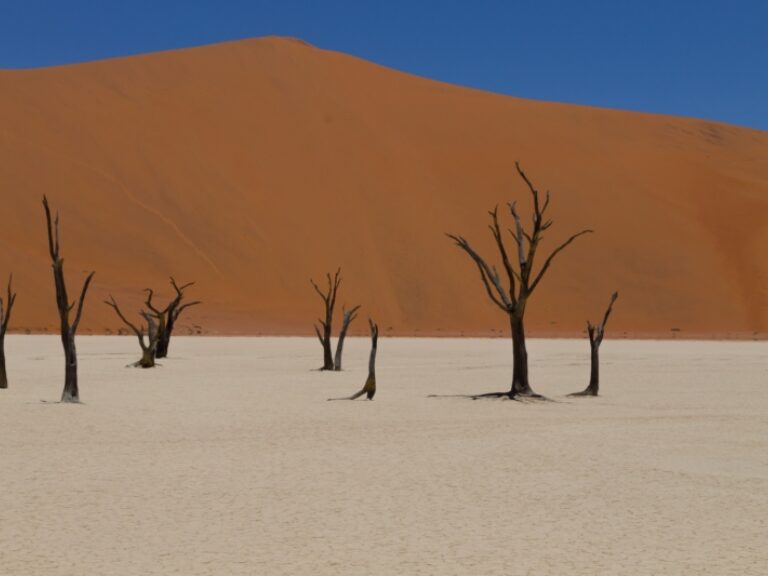
Namib-Naukluft National Park
Hike landscapes straight from a surrealist painting.
Probably my favourite places in all Namibia are the pale clay pans of Sossusvlei and Deadvlei. Set in the sprawling Namib-Naukluft National Park, this is one of Earth's oldest and most captivating deserts.
The odd oryx, springbok antelope and ostrich dot the scrubland but don't expect any big five sightings here, this place is more about unshowy wildlife and its visually arresting landscapes. (For game sightings I’d recommend Namibrand or Etosha instead.) Here you'll find a surreal playground of towering dunes in ombre spice-coloured shades, from paprika to turmeric to cinnamon and hauntingly beautiful fossil valleys.
As you venture deeper into the park, you can get out of the vehicle and touch the sands. Come at dawn, and you'll feel the mist from the Atlantic Ocean settling on your arm as you climb the dunes, before it dries out in the warming morning sun.
There are no adventure activities like sand boarding on offer here, it's about climbing the sand dunes (in designated areas), ambling across the pans, and stopping for a picnic to soak up the scenery.
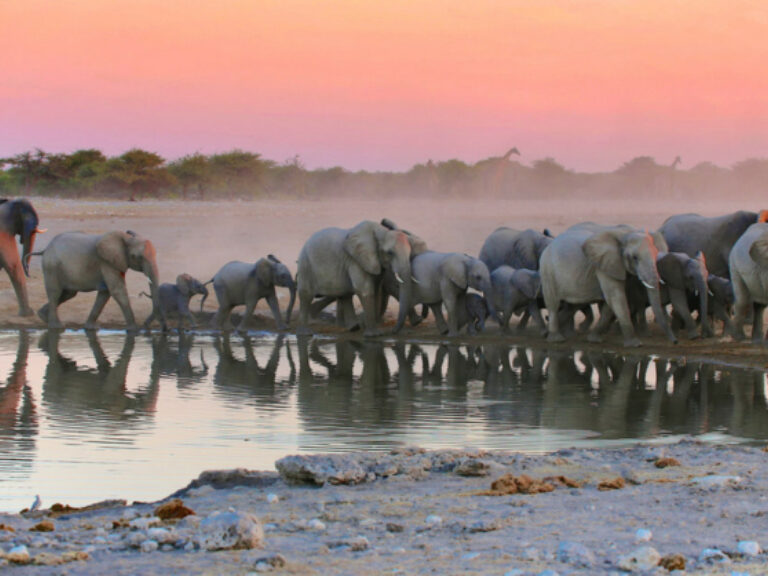
Etosha National Park
Namibia’s most famous safari park.
Its name means 'the empty place' but with Namibia's highest concentration of wildlife, Etosha is anything but empty of safari sightings – the only big five animal not found here is the Cape buffalo.
Etosha National Park is well-known for its waterholes, best visited during the dry season when wildlife flocks to these oases dotted throughout the park. In Etosha I have spotted lions chasing springbok, dozens of bird species (including many pairs of elegant blue cranes), imposing white-crusted elephants, oryx herds, giraffes, and much more. But the real safari treat is to sit still. Pack a picnic and spend some time at the waterhole to appreciate the astounding diversity and density of the game.
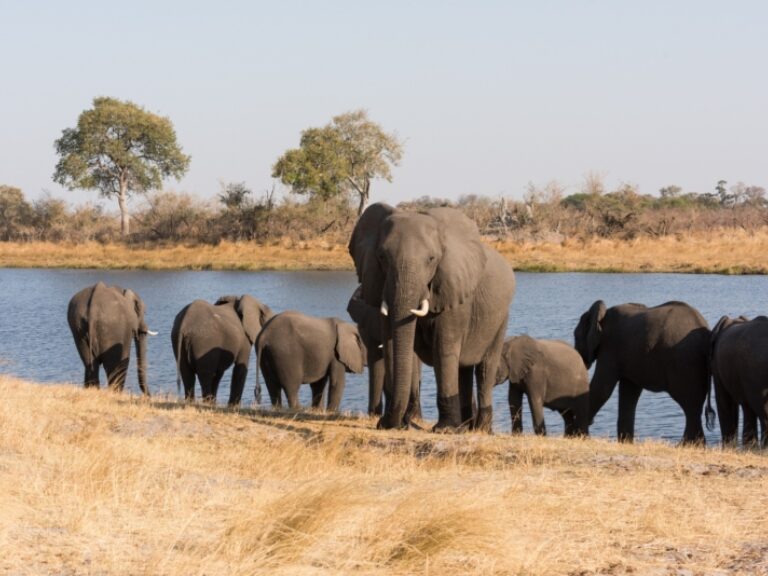
Bwabwata National Park
Namibia’s safari hidden gem.
Escape the mainstream safari itineraries at Bwabwata National Park. Often overlooked in favour of Namibia’s more famous safari parks, I like to think of this area as a more affordable Okavango Delta .
With lush landscapes and riverine forests, the wetlands of the Zambezi Region (formerly known as the Caprivi Strip) in northernmost Namibia offer a striking comparison to the stark coastline and desert interior. It's part of the Kavango-Zambezi Transfrontier Conservation Area, covering an area of 444,000 square kilometres. Bwabwata National Park sits at the heart of this region and is home to hippos, crocodiles, roan, sable, impala and red lechwe, and lions and leopards. The Buffalo Core Area is notable for its buffalo herds in the east. The Kwando Core Area to the west is primarily known for its elephants and sometimes African wild dogs pass through.
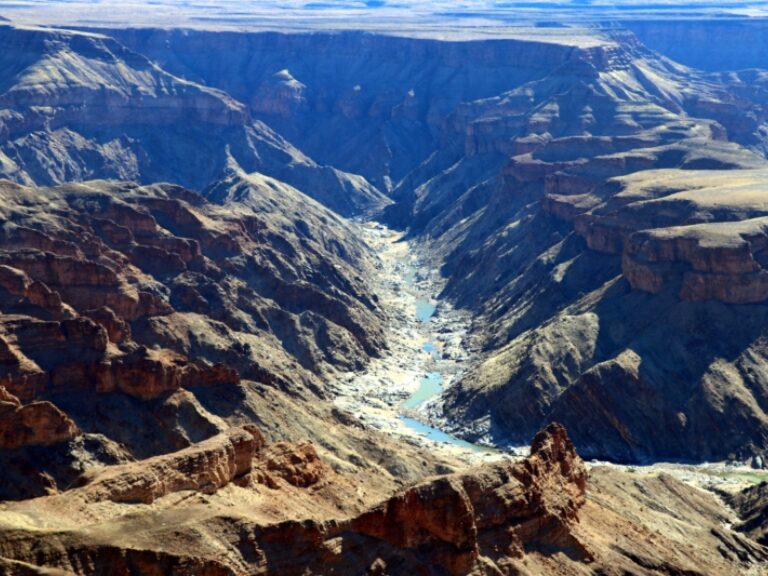
ǀAi-ǀAis/Richtersveld Transfrontier Park
Trek the iconic fish river canyon.
Namibia's Fish River Canyon is a staggering geological masterpiece in the /Ai-/Ais Richtersveld Transfrontier Park, shared by Namibia and South Africa.
The main viewpoint and information centre are worth a visit for an epic sunset if it's on your route, but to truly escape the tourists, your best bet is to embark on the epic five-day trek along the canyon floor. Sights in this area include quiver trees and cute klipspringer antelopes. It's a straightforward trek as you can’t leave the canyon walls, but you’ll be totally self-sufficient and it’s not to be underestimated – I had a friend who had to be helicoptered out due to heat exhaustion and dehydration. An organised trek accompanied with a guide is recommended, if not essential.
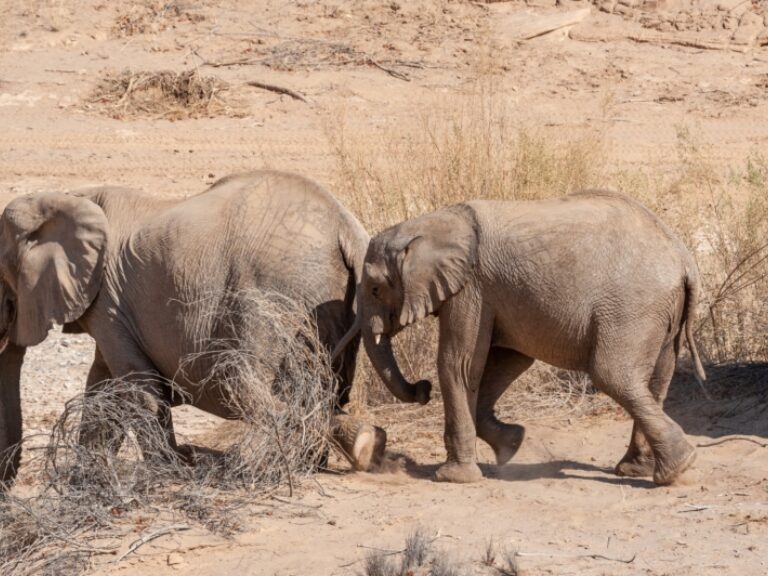
See Namibia’s rare desert dwelling elephants
You might only see a few animals here, but tracking Damaraland's desert-dwelling wildlife is a highlight in this fascinating region sandwiched between Etosha National Park and the Skeleton Coast.
Desert-adapted elephants, rhinos, and lions roam rocky terrains, dry riverbeds, and gravel plains dotted with the weird, twisted welwitschia mirabilis plants.
Although it can be challenging to see the wildlife here, I find this scarcity makes each sighting all the more memorable. Spotting one elephant in the desert is somehow more special than seeing an entire herd in a lush reserve.
Desert-dwelling elephants are considered an endangered subspecies and occur in five rivers usually devoid of water: the Ugab, Huab, Uniab, Hoanib and Hoarisib. These elephants have larger feet to walk on sand and travel in smaller herds. They only need to drink once every few days, using their long trunks to dig for water in the dry river beds.
Also here is Twyfelfontein, home to one of Africa's most significant collections of rock art, with over 2,500 engravings dating back some 6,000 years.
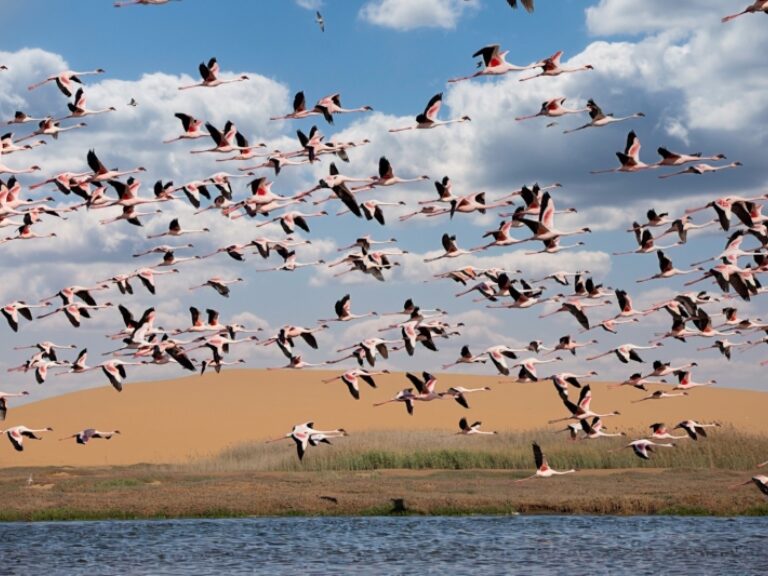
Birding on the Atlantic Coast
Although more industrial, these coastal towns harbour great wildlife opportunities coupled with creature comforts (don’t miss oysters and cold Namibian beers from the seaside restaurants in Swakopmund).
The expansive tidal lagoon south of Walvis Bay is primarily a birding attraction, hosting thousands of flamingos, pelicans and cormorants. Boat tours along the coast also provide a front-row seat to colonies of seals, and sometimes dolphins cruise the bow waves.
Inland, you can walk the coastal dunes searching for desert critters, such as the comical palmato gecko with its transparent skin, beautiful colours, and sand-disguised sidewinding snakes.
Namibia’s safari highlights
Our expert's top picks.
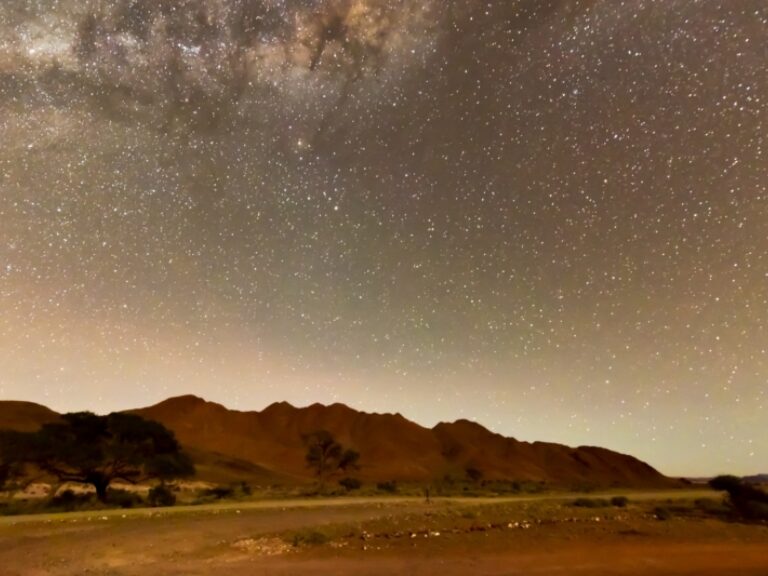
NamibRand Nature Reserve
Stargazing and walking safari in namibrand.
If you have the bucks, the NamibRand Nature Reserve is where I like to escape the masses that can crowd Sesriem at the entrance to Namib-Naukluft National Park. There are luxury lodges here, such as Kwessi Dunes or &Beyond Sossusvlei Desert Lodge, which are well-regarded if pricey. I prefer the organised overnight walking safaris: light pollution is minimal here and the skies are among the darkest and clearest on earth. Immersed in the silence of the desert darkness, I experience a humbling connection to the cosmos.
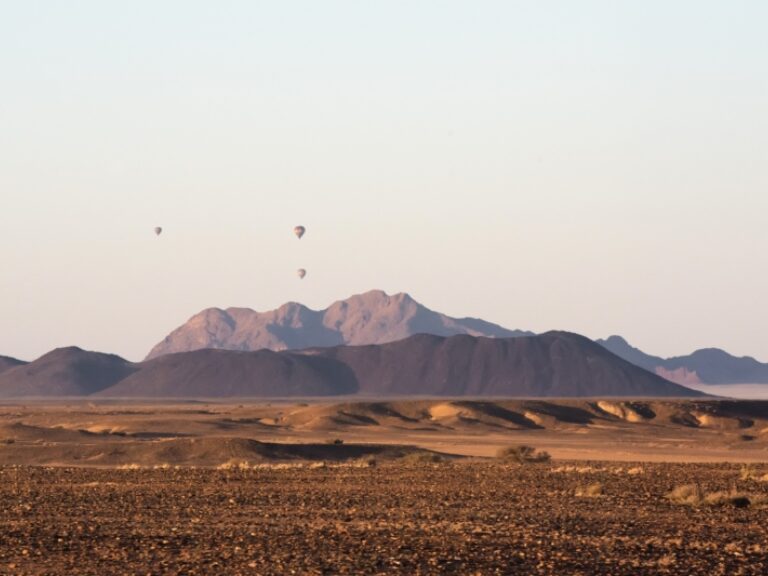
Balloon ride over the Namib Desert
While you might be disappointed that the balloon doesn't actually cross over the Sossusvlei or Deadvlei claypans, there is freedom in being beholden to the desert winds. Dramatic views from a balloon basket offer an eerie sense of the vastness and solitude of the Namib Desert, evoking a deep appreciation for this untouched wilderness. We even spotted a brown hyena scuttling across the sands below during my flight. Be prepared for a rudely early wake-up call. It's best to stay close to the launch site at Kulala Desert Lodge, or the kitschy Le Mirage Desert Lodge and Spa.
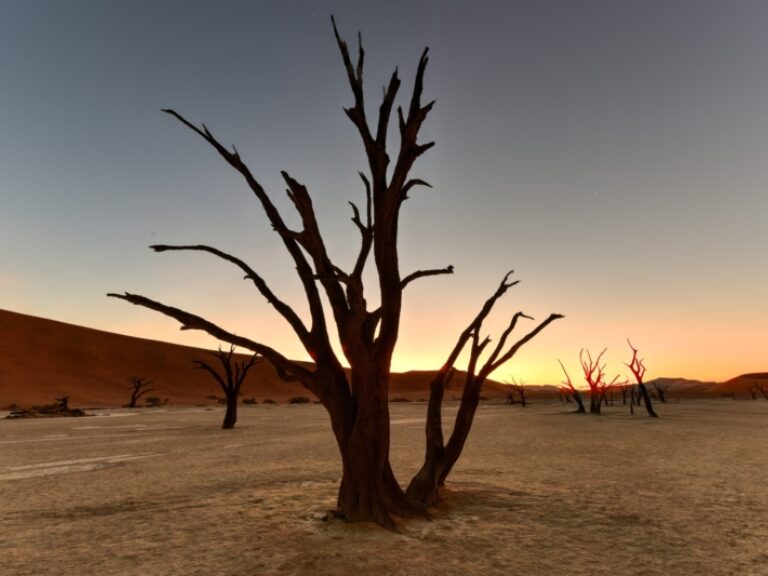
Wake early for sunrise at Deadvlei
The Sesriem junction is the starting point for trips to the Sossusvlei and Deadvlei claypans. To experience sunrise (or sunset), beat the heat and get ahead of the crowds, spend the night at one of two lodges located within the park gates (Sossus Dune Lodge and the pricier, more private Kulala Desert Lodge). Alternatively camp at the very basic Sesriem Camp for the perk of an hour-early entry to the park. It's a 60-kilometre drive to the Sossusvlei and Deadvlei sites (many visitors stop at Dune 45 instead, but I recommend you forge on). Deadvlei is then a further one-kilometre hike from the car park (not everyone is fit enough for this trek, especially in peak sunshine) and is where you can climb the spine of the Big Daddy Dune.

Watch migrating elephants
Bwabwata National Park has limited accessibility and few self-drive routes, but the wildlife is no less dramatic than other popular parks.
My favourite area is Horseshoe Bend in the Mayuni Conservancy zone, with its abundant plains animals. Elephants congregate here in their hundreds on their migration route between May and September, and it's where I snapped my first magazine cover shot. Nambwa Campsite and Nambwa Lodge (a treetop stay with high walkways for elephants to wander freely below) are the nearest accommodations.
The park can get busy in peak seasons, impacting the sense of wilderness. Also, consider exploring the less-visited Nkasa Rupara National Park nearby.
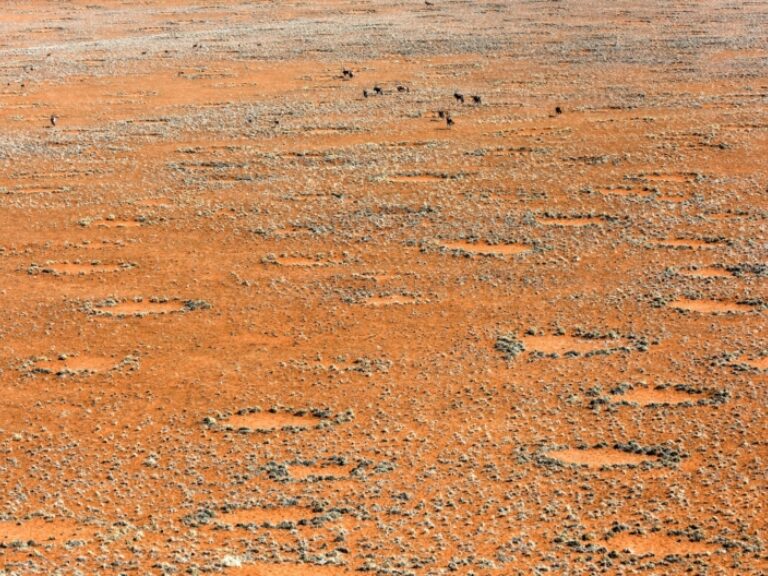
Horse ride (or ebike) past fairy circles at Wolwedans
Wolwedans is one of the most established lodge collections in the country, with enviable locations dotted across the NamibRand Nature Reserve. I loved how committed this operation is to treading lightly, and I had tremendous fun gliding along, up and down, over the dunes of the Namib Desert by horseback and bike.
Whether a flat-out gallop or a sedate trek, all levels of riders are welcome to wind between the “fairy circles”, mysterious barren patches amid the desert flora that have long perplexed scientists. Theories range from plant self-organisation to toxins from euphorbia bushes. Still, my favourite story is the Himba explanation that they are the footprints of Mukuru, their supreme being.
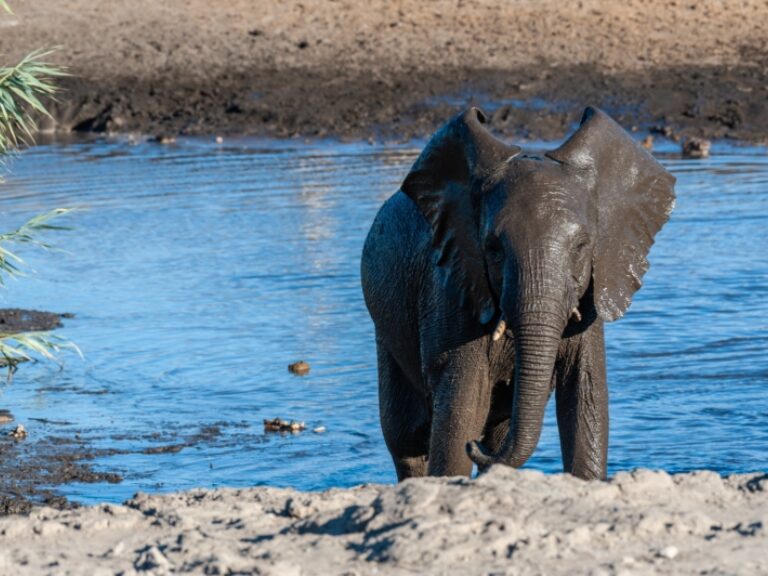
Spy on elephants at the waterhole
Etosha's waterholes provide an excellent David Attenborough-worthy opportunity to witness wild animals up close. Watch elephants slake their thirst under the scorching sun or detect the sounds of rustling leaves and animal calls as giraffes, zebra and impala tentatively gather during the evening.
The Okakuejo's floodlit waterhole is a great spot to glimpse the critically endangered black rhino.
I recommend you book accommodation in advance during peak season, weekends, and festive December. Alternatively, visit during the wet season when the landscape is greener, but water availability causes animals to disperse.
Etosha is surrounded by other private game reserves and luxurious places to stay, including Anderssons at Ongava (I have my heart set on visiting the Ongava Discovery Centre next) and Onguma Camp Kala.
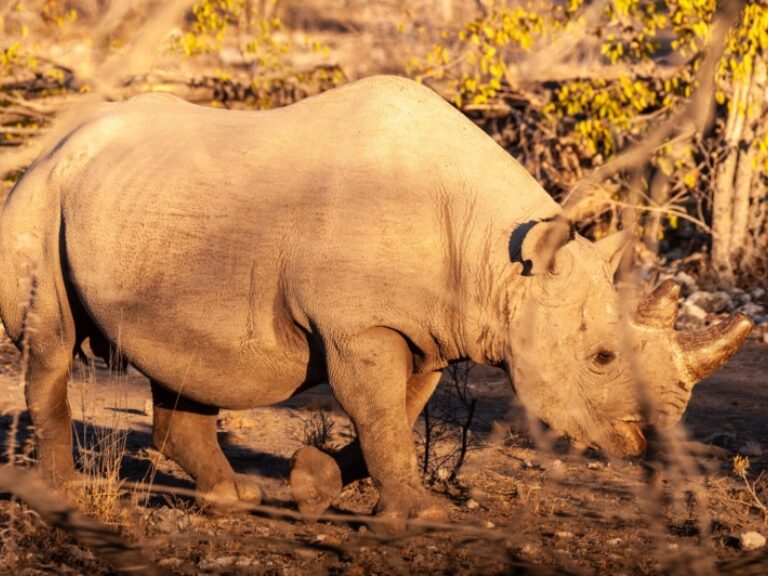
Track the critically endangered black rhino
Head out on a game drive or an immersive (though sometimes hot and long) walking safari to track the world's last remaining free-roaming population of the critically endangered black rhino.
I always find Rhino tracking a heart-pounding adventure. A dance of anticipation and caution as you trek the rugged landscape. Palmwag Concession is the best area, and top sightings generally occur between April and November, but stay at least two days to up your chances of seeing the rare animals.
Well established, the Desert Rhino Camp is high-end, but Damaraland Camp, Camel Top Community Campsite, Palmwag Lodge and Sesfontein Guesthouse are affordable alternatives.

Learn about the living desert
So many people visit the iconic dunes of Sossusvlei but don't notice the phenomenal creatures that eke out an existence in this extraordinary landscape. Unlike other deserts, critical ocean mists feed the Namib sands and sustain fog-sipping beetles, nude-coated lizards and handsome snakes that bury themselves in the sand. They’re tricky to find by yourself, so get a guide to share their tips and tricks for seeking out the small stuff.
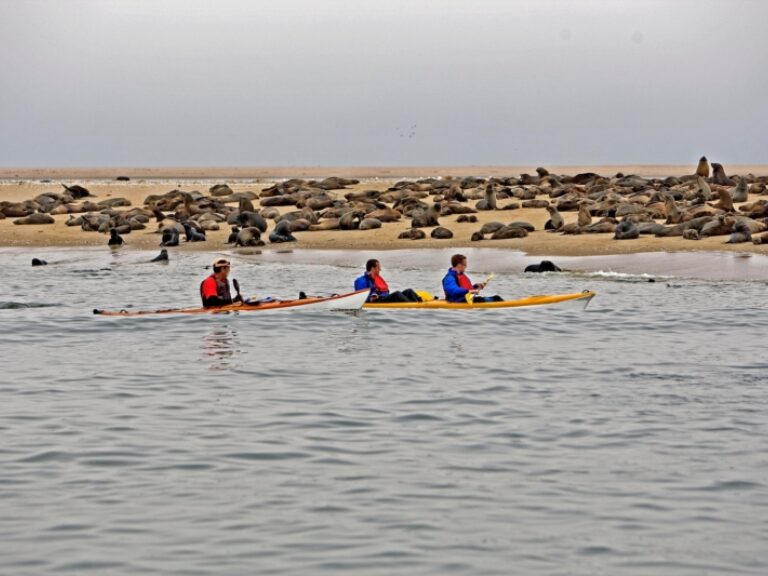
Sea kayak with seals
Enjoy a unique desert sea safari by kayaking amidst playful marine companions. Departing in the morning when the waters are calm, this three-hour tour has you paddling towards the Walvis Bay Cape fur seal colony, where it's common for them to swim close and sometimes even hop onto the ends of the kayaks! I also spotted dolphins, pelicans, flamingos, and Damara terns on the Pelican Point sandbar. Be sure to dress warmly. If kayaking isn't your thing, you can also opt for sedate boat tours.
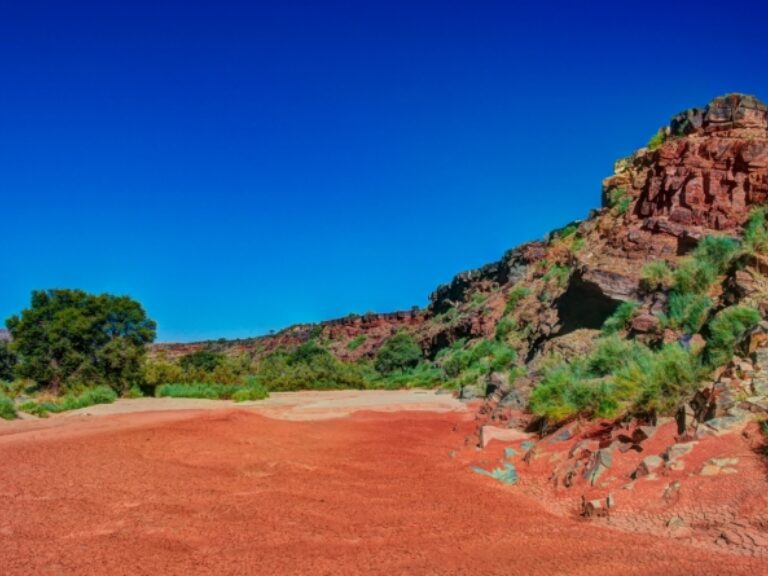
Gondwana Namib Park
Retreat to the desert whisper pod.
Perched on the rim of a gravel-strewn hill, a 4X4 abandoned me at a remote villa in Gondwana Namib Park. This secluded stay feels like a Mad Max spaceship landed in the middle of nowhere. Designed for couples as a one-of-a-kind honeymoon hideaway, the open-plan apartment has a pool, plush reading lounge, and cocktail nook. The view – and everything besides – is yours alone, with nobody else for miles around. There are few places where you are left entirely to your own devices. Enjoy the breathtaking perspective and soak up the silence.
Namibia safaris: Need to know
Everything you wish you'd known before you booked, when to go on safari in namibia.
Namibia has diverse landscapes that shine at different times of the year. Typically, the best time for wildlife viewing is the dry season (May to October), while the wet season (November to April) transforms the desert into a blooming wonderland ideal for photographers and birdwatchers.
You can of course book an organised tour of Namibia with any number of safari operators. The standard itineraries typically include Etosha, the Sossusvlei claypans, Swakopmund and the Fish River Canyon. There are a few advantages of booking an organised tour, not least convenience and the extra reassurance of help and support while you navigate an unfamiliar country.
That said I’d encourage more independently-minded visitors to consider a self-drive trip. This way you can get well off the standardised itineraries and spend as long as you like in some of Namibia’s hidden gems mentioned in this guide. You can rent a 4X4 in Windhoek or Walvis Bay, and book your own accommodation directly. Hotels and lodges generally offer their own guided excursions and tours (for an additional fee.) But don't rush: fight the urge to cram too many sights into a short trip, or your trip will be exhausting. And be prepared for the challenge of driving. The distances between the various safari areas and national parks are huge, but the roads are often decent gravel. Plan a buffer day into your itinerary in case something goes wrong with the vehicle and ensure you have sufficient fuel. Some routes are 300 to 400 kilometres without gas stations. In my experience, most rental companies have great insight, so ask away! They will know the best routes and ask if they offer satellite phone rental or emergency assistance.
About the author
Melanie is a travel photojournalist and guidebook author based in Johannesburg. A qualified field guide, scuba diver and budding birdwatcher, she is an expert contributor on Southern Africa and has written for Lonely Planet, Travel+Leisure, Condé Nast Traveller and Fodor's, and photographed some of the continent's beloved travel lodges.
Featured tours

Other guides you might like
Safari in kenya, kenya's best safari reserves and camps.
Stuart Butler
Gorilla safaris, an expert guide to seeing gorillas in the wild.
Philip Briggs
South africa safari, an expert guide to safaris in south africa.
Anthony Ham
Wildebeest migration safaris, an essential guide to planning a migration safari in tanzania and kenya.
Hans Cosmas Ngoteya
Safari in zambia, an expert guide to zambia's best safari parks, camps & lodges.
Sarah Kingdom
Safari in tanzania, tanzania's top safari parks and game reserves, safari in botswana, an expert guide to botswana's best safari reserves, camps and experiences, where and how to see the big 5 on safari in africa, safari in africa, our travel writers' top africa safari picks, zimbabwe safaris, an expert guide to the best safari camps in zimbabwe, chimpanzee trekking, an expert guide to seeing chimpanzees in the wild, featured tours view all.
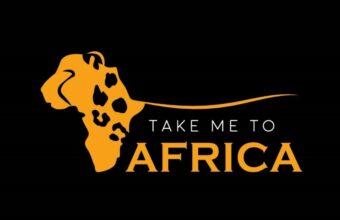
Why Horizon Guides?

Impartial travel guides
Our guides are written by the leading experts in their destinations. We never take payment for positive coverage so you can count on us for impartial travel advice.

Expert itineraries
Suggested itineraries and routes to help you scratch beneath the surface, avoid the tourist traps, and plan an authentic, responsible and enjoyable journey.

Specialist advice
Get friendly, expert travel advice and custom itineraries from some of the world's best tour operators, with no spam, pressure or commitment to book.
Our guides are 100% impartial and are written by independent, professional travel journalists. We make money by charging carefully-screened travel companies to list their business on our website. Our advertisers have no influence on our editorial content and we never accept payment for positive coverage.
Read more about how we work and what we believe in here .
- Travel guides
- Work with us
Sitemap , Privacy Copyright © 2024 Horizon Guides
Namibia Tours & Safaris
" True adventure is rare"
- Custom Safaris
- Desert Elephant Discovery ( 4 Nights )
- Kunene Explorer ( 5 Nights )
- Kaokoland Classic ( 8 Nights incl 3 nights lodging )
- North West Adventurer ( 6 Nights )
- Last Roaming Black Rhino ( 4 Nights )
- Kaokoland Stonemen ( 6 Nights )
- What is included
- What to take
- Namibia Climate
- Namibia Attractions
Welcome to Kunene Tours & Safaris
Explore and discover the real namibia on an exclusive adventure safari with some of the country's most experienced guides., with kunene tours and safaris, you will go to the most remote and spectacular regions of namibia. you will travel in specially adapted 4x4 vehicles far from roads, fences and people, but luxury will always be at hand..
Namibia is a land of stark beauty, fascinating detail and ancient landscapes. It is a dramatic and compelling world waiting to be discovered. With over 25 years experience, you can be assured that Kunene will deliver true adventure in comfort.
You can choose either a custom safari to cater for your particular requirements or pick from a menu of our standard shorter tours in the remote north west of Damaraland and Kaokoland. We have chosen these routes as they provide an opportunity to experience the majesty and interest of the area in a short space of time. These operate from a base at our sister company, Khowarib Lodge , set in the dramatic surroundings of Khowarib Gorge.
To help you plan your trip, we have included some suggestions of what to take with you and an overview of the climate in Namibia.
We look forward to making your trip to Namibia a true adventure.
Highlights:
- Choose lodging &/or Camping
- Expert guides
- Camp assistant(s)
- Specially adapted 4x4's
- Self drive option
- Each tour exclusive to your party
Safaris Packages
Our safaris often combine luxury lodges and small family-run hotels with luxury camping in the wild, giving you an intimate experience of namibia's wild places.we camp in pristine wilderness, not a soul in sight, and in some of the remotest places in the country., desert elephant discovery.
Depart Khowarib Lodge and head west in challenging driving to camp in the Hoanib river near Amspoort. After breakfast, explore the beauty of Damaraland while tracking desert adapted elephant.
Kunene Explorer
Leave Khowarib Lodge with guide and back up staff and head north to Opuwo. Mix with the Himba and Herero women in this bustling market town. Continue onto Ruacana and camp by the Kunene river on the Angolan border.
Kaokoland Classic
Leave Khowarib Lodge with guide and back up staff and head north to Opuwo. Mix with the Himba and Herero women in this bustling market town. Continue onto Ruacana and camp by the Kunene river on the Angolan border.t
North West Adventurer
We leave Khowarib for the township of Opuwo where you can happily expect to be standing in a supermarket queue with Herero and Himba women.
Last Roaming Black Rhino
Arrive at Khowarib Lodge for luxury and comfort on your first night. Early morning departure via Sesfontein into the Northern section of the Palmwag Concession Area. (Orowau Spring).
Kaokoland Stonemen
Travel with us to find 12 of the lone stonemen of Kaokoland via untraveled territory. The route will stretch over seven days along Khowarib Lodge, Opuwo, Etanga, Otjihipa Mountains...
Khowarib Lodge & Safaris
Khowarib Lodge nestles on the banks of the Hoanib river in the magnificent Khowarib Gorge in north west Namibia.
14 canvas chalets project out from the river bank on stilts over the river bed providing unrivalled, shady views of the cliffs opposite. On the fringe of Kaokoland, the lodge offers a perfect jumping off point to explore the remote north west of the country, either independently or on one of the lodge's extensive guided tours. The immediate surrounding area of Damaraland has many rich and interesting activities including desert adapted elephant and Himba settlements within easy reach.
Kunene Tours & Safaris offers guests a true outdoor getaway, providing luxury Kunene Accommodation set alongside the Hoanib river and in the beautiful Khowarib Gorge of North West Namibia
Get in Touch:
Tel/Fax: +264 64 402 779 Email: [email protected] Email: [email protected]
Postal Address:
PO Box 1648, Swakopmund, Namibia
- General Information
- Self-Drive Safari
- Fly-in Safari
- Luxury Safari
- Family Safari
- Private Guided Safari
- Group Tours
- Honeymoon Safari
- Adventure Safari
- All-Inclusive Safari
- Safari Guides
- Privacy Policy
- Cookie Policy
- Terms of Use

The Ultimate Namibia Safari Packing Guide
So you’ve finally booked your Namibia safari and you’re counting down the days before you head off on the adventure of a lifetime! The only thing left to do now is pack but where should you start?
Packing for a Namibia safari, whether it’s a self-drive safari or private guided tour , can be a little different to packing for a regular vacation; there’s the climate to consider, the type of activities you will be undertaking, and even the availability of some goods and products that you might take for granted in your native country.
If you’re stuck where to start fear not because here at SecretNamibia we’re hear to help. From travel documents to clothes, toiletries and more, here’s our ultimate Namibia safari packing list:
Travel Documents for Namibia
The number one rule you should always abide by when packing for a trip abroad is to gather, organise and pack your travel documents. Firstly, ensure that you have your passport stored away safely and make sure that it is valid and in date for the duration of your trip.
Further, depending on where you’re travelling from, some visitors to Namibia require a visa to enter so always check the latest travel information and guidance from your embassy before you set off, or check out this information here .
Whenever you travel abroad it’s vital to obtain medical/travel insurance so make sure you’re covered and that you have all the necessary documents printed off before you depart. With Covid 19 still prevalent across some parts of the world it’s also wise to check whether or not you need a vaccination certificate, and the latest Covid travel information can be found on your embassy’s website.
Finally, you won’t get very far without your travel tickets; be sure to print off any plane tickets and keep them safe and secure at all times!
What Clothing Should I Pack for a Namibia Safari?
Most people travel to Namibia between May-October, which is the dry season. As you might expect daytime temperatures in Namibia are extremely warm. However, in the night-time the weather cools off so it’s important to bring outfits that are suited to both day, and after-dark, temperatures.
Here is a brief list of the type of clothes you should consider packing:
- Loose fitting cotton t-shirts, beige, green and neutral colours are advisable
- Long-sleeved shirts/jackets to guard against mosquitoes
- Shorts or skirts
- Cargo pants or safari trousers for cooler days and the night-time
- Sweaters for early morning/late afternoon
- A lightweight waterproof jacket in case it rains
- Comfortable shoes for walking
- Plenty of underwear and thin socks!
Toiletries for a Namibia Safari
Although Namibia has plenty of grocery stores scattered across the country, depending on your safari itinerary you may find yourself perched in some remote spots, and nobody wants to be stuck without their essential health and beauty products! Before you zip up that suitcase consider packing:
- Plenty of sunscreen (Factor 50+)
- Insect repellent
- Hand and body lotion
- Shampoo and conditioner
- Toothbrush, floss and toothpaste
- Feminine hygiene products
- A Travel hairdryer
Electronics to bring on a Namibia Safari
No Namibian safari packing list would be complete without mentioning some essential electronics that you’ll need for your trip. We are not necessarily encouraging you to pack your entire stash (do your really need to bring both your iPad and your laptop?) but we would advise bringing some digital items, particularly a camera so you can take some amazing wildlife shots! Consider bringing along the following electronics:
- Mobile phone
- Mobile phone charger
- Torch (with batteries)
- Powerbank charger
- Travel Adapter (plug type M)
- Binoculars with strong magnification
- A digital Camera with adequate zoom lense
- Extension lead for multiple sockets
- Smartwatch/tablet/laptop (optional)
First-aid products for a Namibia Safari
Adjusting to a new country and climate can be a challenge for some visitors initially so it’s important to bring a number of medications and first-aid products to help you battle any ailments, particularly an upset stomach! As well as bringing any essential medication related to your individual health needs, we advise you to pack:
- Hand sanitizer and anti-bac wipes
- Painkillers (i.e. paracetamol, aspirin and ibuprofen)
- Diarrhoea medication (i.e. Imodium or charcoal tablets)
- Anti-septic cream
- Plasters and blister plasters (ideally waterproof)
- Iodine disinfection tablets
- Travel Sickness tablets
Additional Items
We’ve covered most of the essential items needed for your Namibian safari adventure but there are also a number of additional items and products you could consider bringing to help make your trip more comfortable. These include:
- A sturdy backpack
- Headgear/sun hat/cap
- Books or magazines
- Travel pillow
- Snacks for the flight!
There you have it, that’s the SecretNamibia guide to packing for your Namibia safari adventure. If you have any questions or queries about what else you should bring feel free to get in touch with a member of expert team and we’ll do our best to help!
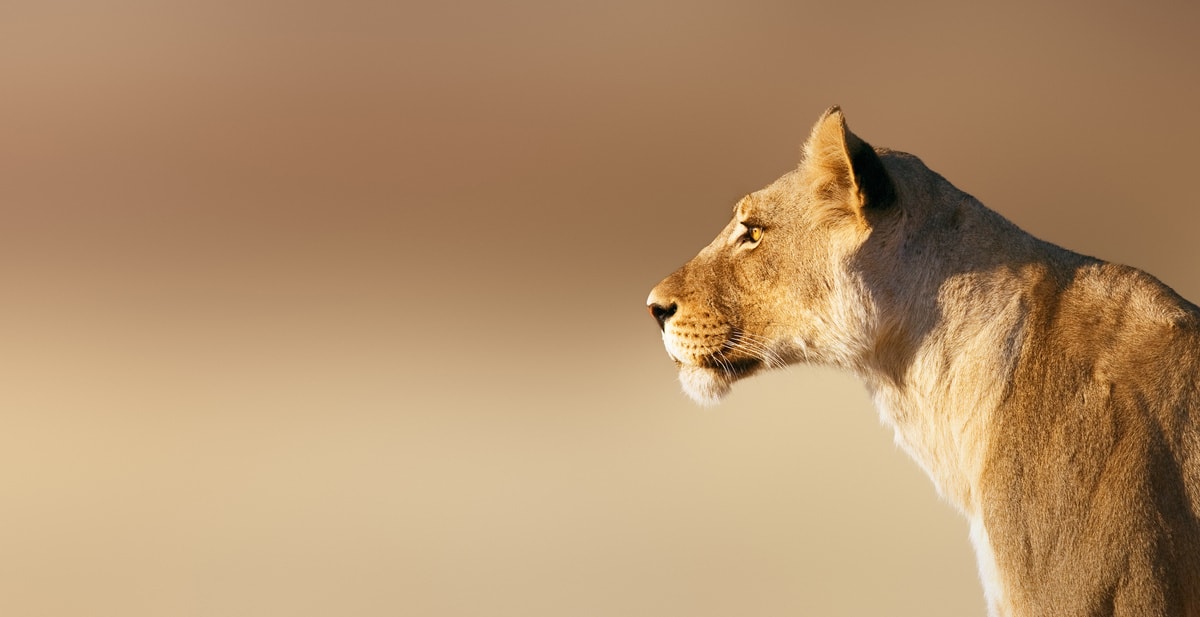
Ready to Discuss Your Safari Plans?
Our seasoned team specializes in designing personalized safaris in Namibia. From top-notch accommodations to memorable wildlife encounters, we tailor every aspect to suit your preferences. Whether you're a safari veteran or a first-timer, our commitment to excellent service promises an unforgettable adventure.
Namibia Wildlife Safari Tours
Whether you want to see wild animals in their natural habitat or learn about wildlife protection, with 135 wildlife safaris in Namibia you're sure to find a holiday package that will astound you.
135 Namibia wildlife tour packages with 309 reviews
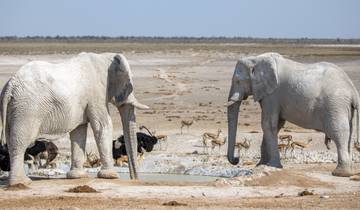
- Christmas & New Year
6 Day Dunes & Wildlife Accommodated Safari
This tour exceeded my expectations in every sense. Namibia is such a wonderful country and Chameleon Safaris made sure we enjoyed the most possible during our time. Highly, highly recommended!

Private 10 Days Beauty of Namibia - Lodges
You will not regret it
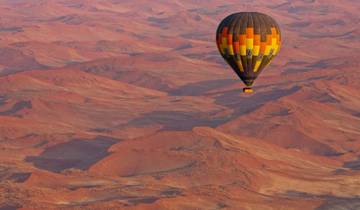
10 Days Self Tour - Beauty of Namibia
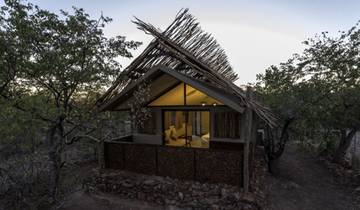
WINDHOEK, ETOSHA, SWAKOPMUND & SOSSUSVLEI ADVENTURE (Guided)

Highlights of Namibia (11 Days)

Namibia Lodge Safari
It's great! Well organized and full of attractions.
- 10% deposit on some dates Some departure dates offer you the chance to book this tour with a lower deposit.
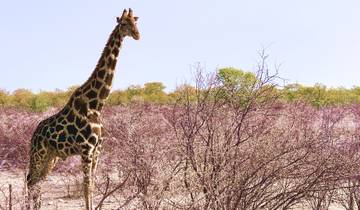
- Overland Truck
7 Day Namibian Highlights Accommodated Safari
The 7 Namibian Days Highlight with Chameleon Tour was excellent, The tour guide/driver/cook was excellent and the accommodations were beyond my expectations. We sadly did not see a lot of animals in Etosha Park, but the few we did were amazing. The distances between place was a lot (a bit much) and a bit more physical activity would have been great (to offset the sitting in the bus). Staying more than one night in an area would also be good. All in all, a great country with lots of diversity in it's landscapes and it's people, loved it.
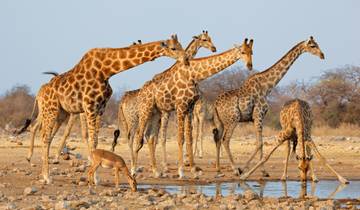
Sossusvlei, Swakopmund & Etosha (Camping) - 7 Days
We really enjoyed our tour and were the only two with our driver; Seven. Whilst we would have preferred to meet other travelers, this meant that whatever we wanted to see or do, our choices were accommodated. Seven was an excellent guide whose broad knowledge of the area, locations and ability to find the Big Four was amazing. He totally made our trip the best it could be. The only criticism is that we spent a wasted night back in Windhoek midway through our 7 day tour.
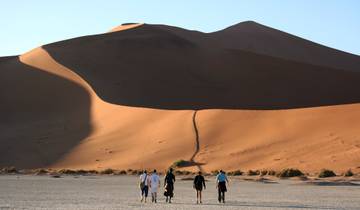
Classic Namibia 12 Days DEPARTING SATURDAYS **Sustainable Approach to Travel
My brother and I joined a group of twelve for the unforgettable Namibia classic camping safari and it was absolutely off the charts! Organization was great that the tour flowed flawlessly for the twelve days. We experienced different facets of Namibia's culture, landscapes and wildlife. Our driver/guide Steinner and his assistant guide/cook Klugger were fun to be with, answering all our numerous questions, cooking sumptuous meals. Its worth pointing out that Patrick of reservations kept close contact all through the safari. It was an amazing tour of Namibia which is such a beautiful country
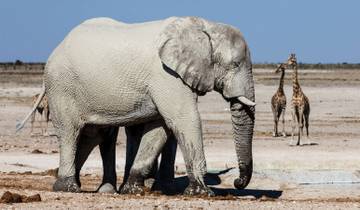
7-Days Sossusvlei, Swakopmund & Etosha National Park (Lodging)
Shawn was an outstanding guide. Fascinating and beautiful country.

6 Day Etosha & Skeleton Coast Experience * DEPARTING THURSDAYS

7 Days / 6 Nights Sossusvlei, Swakopmund and Etosha National Park ( Comfort)
I really enjoyed my time in Namibia with this tour. It was a great way to safely see so many of the wonderful things Namibia has to share. You see all the major spots and the accommodations are really unique and beautiful! The company needs to work on some COVID procedures as most people I interacted with were unfortunately unvaccinated.

8-Day Etosha NP, Swakopmund & Sossusvlei ( Camping)
I was very pleased with this tour of Namibia. We chose the 8 day camping tour which covers a lot of ground in a short time. However, our guide was excellent and he managed the time and sights well. He also was experienced and knowledgeable about his country so the journey was interesting on every level. If it is possible to request Shawn Kashima to be your guide you will be fortunate if he is available. Namibia is a beautiful desert land worth experiencing. Climbing the dune at Sossusvlei was a highlight as was witnessing the mass of seals at Cape Cross. Etosha was fantastic as we were fortunate to see a pride of 12 lions in the morning. Our guide was in contact with rangers and other guides so he knew where it was best to go at the moment. Overall, this journey was very enjoyable for our family, which includes our 5-year old daughter who loved camping and developed a friendly rapport with the guide.
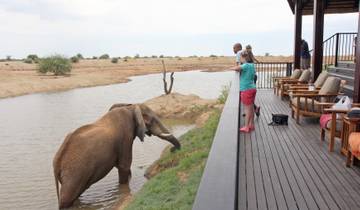
Summer Safari Package to Africa
This was my first traveling experience alone. I had the most amazing trip! Junita's Extreme Adventures took care of everything once I told her the activities & excursions I was interested in. My lodging, meals & transportation were all planning out for me in a wonderful, busy itinerary. I have the most wonderful experiences & memories for the rest of my life! This felt divinely planned for me. I could not have asked for better!

11 Day Namibia Tour
Exciting tour. Love it very much
Reviews of Wildlife Tours in Namibia
A wonderful tour. The tour description is precise, and we actually went through like that. Like the most tours, you'll probably need to ask something to them, but they were responsible almost all the time, which was helpful. Accommodations are very satisfiable. Of course, they're not like 5 star hotel, but are high quality given the places we visit. I liked especially 2nd to 5th nights. As others mentioned, we need to spend lots of time driving without music, but I feel that was inevitable to visit across the country. Still, what I was amazed the most was the guide. Gideon, our guide, prepared pretty meals every time, explained well about everything, spotted animals quickly in the safari, drove with safety, and clean the bus every day. Thank you for the experience
WOW, Motema Tours had everything under control !! From the booking consultations to the Excellent guided excursions. Not only were they well prepared, but they also had all Covid-19 regulations in place for our safety. We highly recommend Motema Tours and Safaris for a Great Tour.
Very well organized tour, small group, we were lucky with 2 guides, saw lots of places, animals and everything that was there to be seen. Namibia incredible country. As a recommendation- 2 or 3 days more would have been ideal. Swakopmund has lots of activities and shops (this should be visited not on a weekend as everything shuts at 5pm) and the waterberg plateau also has so much more activities to do. And possibly 1 day just to relax as the drives of 500+ km per day are exhausting. But overall great experience
National Park
- Etosha National Park (45)
Regions in Namibia
- Etosha National Park (61)
- Sossusvlei (56)
Travel Styles
- 10 Amazing Wildlife Tours & Trips 2024/2025
- Best time to visit Namibia in 2024/2025
- Best 10 Day Namibia Itineraries 2024/2025 (with Reviews)
International Versions
- Deutsch: Namibia Wildlife Tour
- Français: Namibie : Circuits faune 2024/2025
- Español: Vida Salvaje Circuitos en Namibia
- Nederlands: Wildlife Rondreizen in Namibië

IMAGES
VIDEO
COMMENTS
Weather. June is the start of winter in Namibia. Although there is regional variation in climate and conditions, the winter is generally dry, with no rain. In most parts of the country, average temperatures are pleasant in the 70s (Fahrenheit). Higher-altitude locales, such as the capital of Windhoek, get a bit cooler, and desert temperatures ...
Namibia in June. By Devryn Panaino. Safari Travel Planner. Safari Enquiry. Desert temperatures drop off in June. While daytimes are pleasant, nights can be freezing. Without rain, the landscape has become much drier and vegetation sparser, making this a good time for a visit to Etosha, where it's just started to become easy to spot animals ...
June to October is the best time for safaris and for visiting Sossusvlei. Cloudless daytime skies, clear, cold nights and almost no likelihood of rain are the hallmarks of Namibia's wintertime, from June to October. Inland, temperatures average between 19ºC and 24ºC (66ºF to 75ºF) during the day, while from June to August, nighttime ...
As with the rest of Southern Africa, Namibia experiences summer between November and March and winter from May to August. From August temperatures keep rising until October when the first rains start to arrive in the northern areas, followed by large amounts of rain and occasional flash-flooding. The best time to go on safari in Namibia depends ...
The best time to visit Namibia is in the Dry season from June to October, although it can be visited throughout the year. Wildlife viewing in all parks, but especially in Etosha, is best in the Dry season. The climate is generally dry and pleasant. ... Safari Tours to Namibia. 14-Day Namibia Flying Safari. $18,813 to $27,653 pp (USD)
Compare 164 Namibia safari tours offered by 24 specialized tour operators. Find the best deals using the largest marketplace for African safaris. Best price guarantee! ... Although June temperatures can plummet overnight, you get the best of both worlds: high-season prices have yet to kick in, but the weather is ideal for outdoor exploration.
Africa. Namibia. With Namibia's vast distances and 4×4-accessible areas, doing a fly-in luxury Namibia safari is the best way of maximizing the time on your trip. Fly-in luxury safaris in Namibia usually include everything from accommodation, meals, and drinks to activities such as game drives. A Luxury Namibia Safari.
Namibia starts to get uncomfortably hot from October, and game viewing is severely affected by the short yet violent rainy season from December to March. The best wildlife viewing is available in winter, from June to August. For a month-by-month breakdown of the best time to visit Namibia, please take a look at our guide below.
June is the first actual dry month in Namibia - according to many, this is one of the best months for a safari in Namibia, with high concentrations of wildlife, excellent weather and not too crowded in the national parks. We recommend coming in June if your schedule allows it. Average Day Time Temperature = 22 degrees Celsius.
Welcome to the most unique wildlife destination on Earth. Along with our friends at AfriCat, Save the Rhino Trust, and Dr. Flip Stander, we have developed world-class safaris that support critical conservation efforts. Search for desert-adapted elephant, oryx, rhino, and lion, have a chance to assist with behind-the-scenes vet checks at AfriCat, and scale the world's largest free-standing ...
African Safari in June. Tanzania, Kenya, Botswana, South Africa, Zambia and Zimbabwe are all good choices for a safari in June. It is a great month to go to the bush; it is mostly dry and many iconic safari destinations offer great wildlife viewing. The dry conditions are excellent for gorilla trekking in Rwanda and Uganda too. Zimbabwe. Zambia.
1. Wildlife, Himbas and Dunes. Duration: 10 Days | Destinations Visited: 5 | Accommodation Visited: 5. Days 3-4 Okahirongo River Camp on the Kunene River in the Marianfluss Valley. Covering Etosha, Sossusvlei, Damaraland and the Kaokoveld, this fly-in safari makes light work of Namibia's big distances.
Ruppell's Korhaan Fly-in Safari. Explore Namibia's remotest wildernesses while staying at some of the most exclusive luxury camps in the country. This epic fly-in safari will deliver otherworldly landscapes, fascinating wildlife and genuine cultural experiences. US$9,710 - US$14,800 per person.
Here at SecretNamibia we are committed to making your safari dreams a reality. Based in Namibia, our team of dedicated safari architects specialise in crafting luxury Namibia safari holidays that are completely bespoke and tailored to your requirements. From self-drive adventures to elite honeymoon escapes, luxury family getaways to 5-star fly ...
#3 WHEN IS THE BEST TIME TO VISIT NAMIBIA. We absolutely recommend visiting Namibia during the driest months on the year - around June, July and August.During this period expect clear sunny days with cooler temperatures (sometimes freezing), especially at night.
Escape the mainstream safari itineraries at Bwabwata National Park. Often overlooked in favour of Namibia's more famous safari parks, I like to think of this area as a more affordable Okavango Delta.. With lush landscapes and riverine forests, the wetlands of the Zambezi Region (formerly known as the Caprivi Strip) in northernmost Namibia offer a striking comparison to the stark coastline ...
Read about Namibia Seasons & When to Travel & Plan your African adventure with Safari Consultants. Specialist tour operators offering safaris across Africa. Scroll Top +44 (0) 1787 888 590. Menu . Close. Destinations. EAST AFRICA. Kenya Rwanda Tanzania ... June 2023. Hi Michele, a most enjoyable trip, very well organized and planned. ...
Some misunderstanding with dates from office, but it was sorted out and ended up very well. Super happy with the trip, and can recommend it if you have a limited number of days in Namibia and want to see the sights. Sossusvlei, Swakopmund & Etosha (Camping) - 7 Days. Sandra 17 May, 2023. 5.
Explore and discover the real Namibia on an exclusive adventure safari with some of the country's most experienced guides. With Kunene Tours and Safaris, you will go to the most remote and spectacular regions of Namibia. You will travel in specially adapted 4x4 vehicles far from roads, fences and people, but luxury will always be at hand.
Here is a brief list of the type of clothes you should consider packing: Loose fitting cotton t-shirts, beige, green and neutral colours are advisable. Long-sleeved shirts/jackets to guard against mosquitoes. Shorts or skirts. Cargo pants or safari trousers for cooler days and the night-time.
8-Day Etosha NP, Swakopmund & Sossusvlei ( Camping) 5.0 (2 reviews) This is an excellent tour to give you a small slice of Namibia. As the country is so large this tour covers a lot of ground as best as one could possibly do in barely a weeks time. You experience the extreme of the desert at the dunes of Sossusvlei, the Atlantic coast at ...
South Africa. June in South Africa is officially the start of winter, this is the beginning of the peak game-viewing period in the northern reserves. The area begins to dry; and as foliage decreases, animals become easier to find. The northern part of South Africa is the complete opposite to the Cape - in the north it is the start of the dry season in the safari areas, whereas this is when ...
July, along with the rest of winter, is the peak season for travel to Namibia. The country is a popular safari destination, and national park areas get busy throughout the winter. June through August are the best times for game viewing, with vegetation sparser and animals gathering around the remaining watering holes.